My most current blog entry:
Entries in Washington State (7)
Road Trip USA: Billy Frank Jr. Nisqually National Wildlife Refuge
 Thursday, July 5, 2018 at 2:21AM
Thursday, July 5, 2018 at 2:21AM 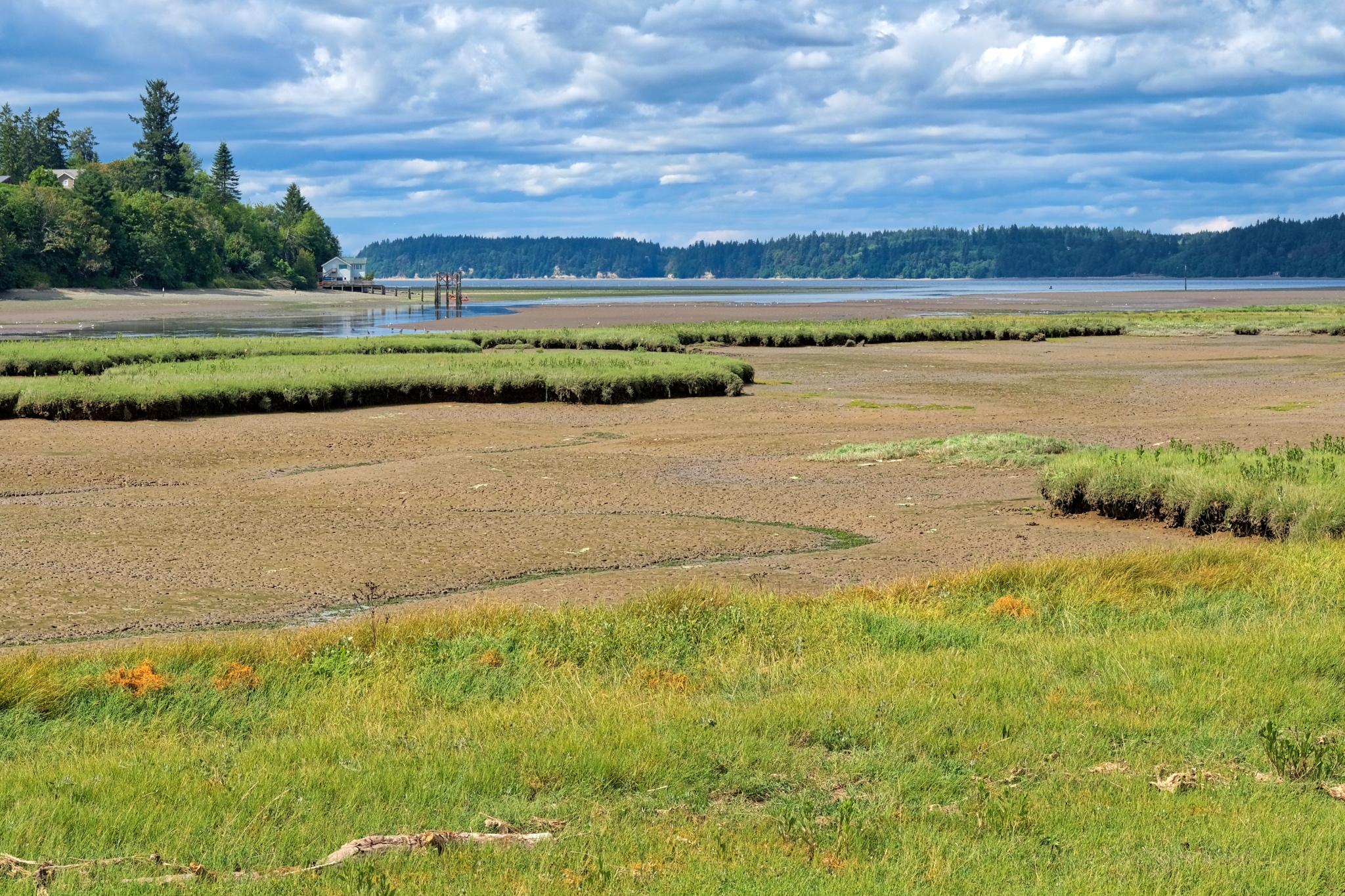 I spent a fine afternoon in the forest, fields, mud flats, and estuary of the Billy Frank Jr. Nisqually National Wildlife Reserve, near Olympia, Washington.
I spent a fine afternoon in the forest, fields, mud flats, and estuary of the Billy Frank Jr. Nisqually National Wildlife Reserve, near Olympia, Washington.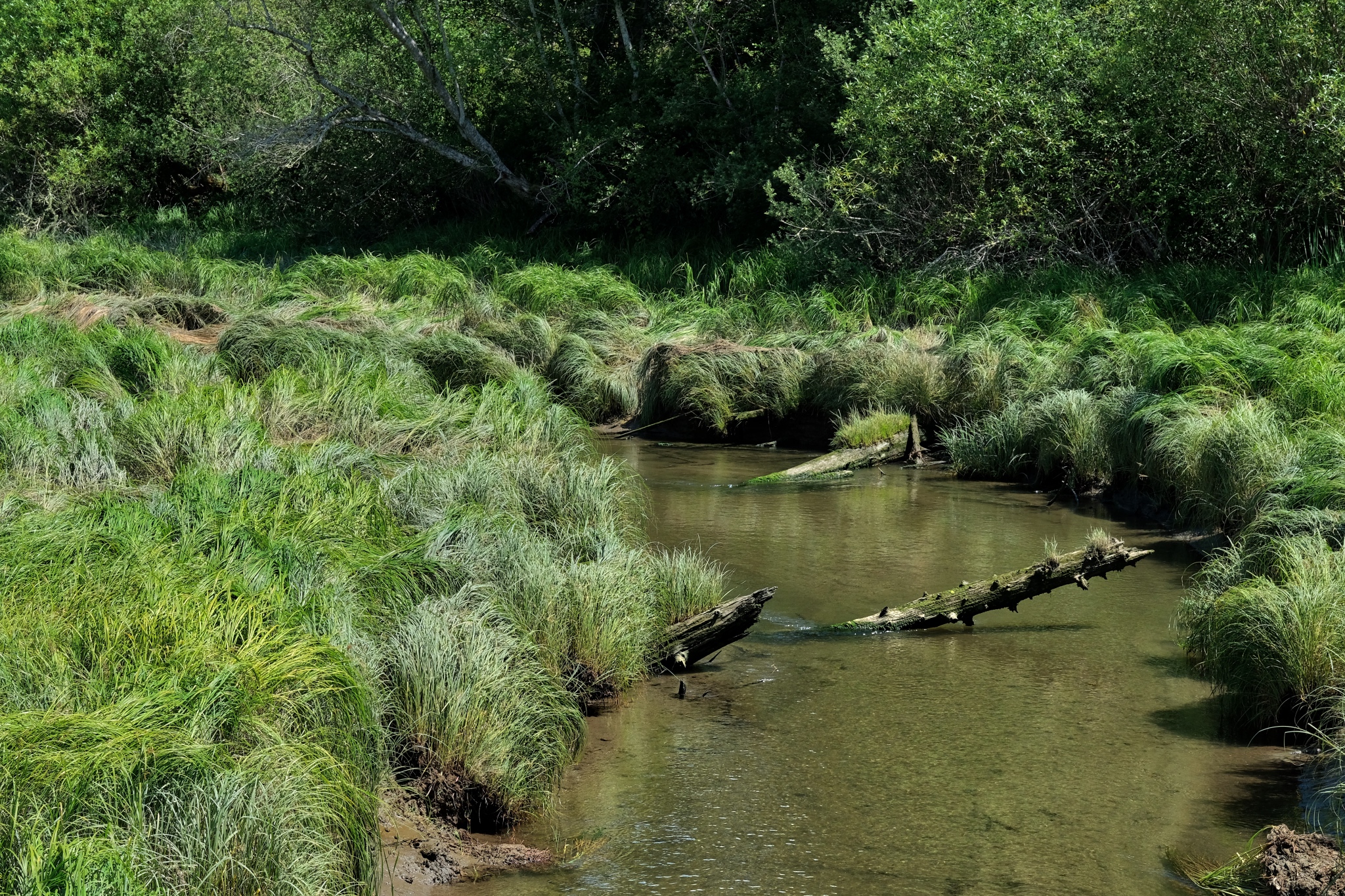 I have wanted to go to the Nisqually Wildlife Reserve since I arrived in Washington a few months ago . . . and today was my chance: perfect weather. I passed Woodland Creek, an estuarial creek, several times before and stopped this time . . . it was on the way.
I have wanted to go to the Nisqually Wildlife Reserve since I arrived in Washington a few months ago . . . and today was my chance: perfect weather. I passed Woodland Creek, an estuarial creek, several times before and stopped this time . . . it was on the way. The wetlands grasses were in full mid-summer lushness.
The wetlands grasses were in full mid-summer lushness.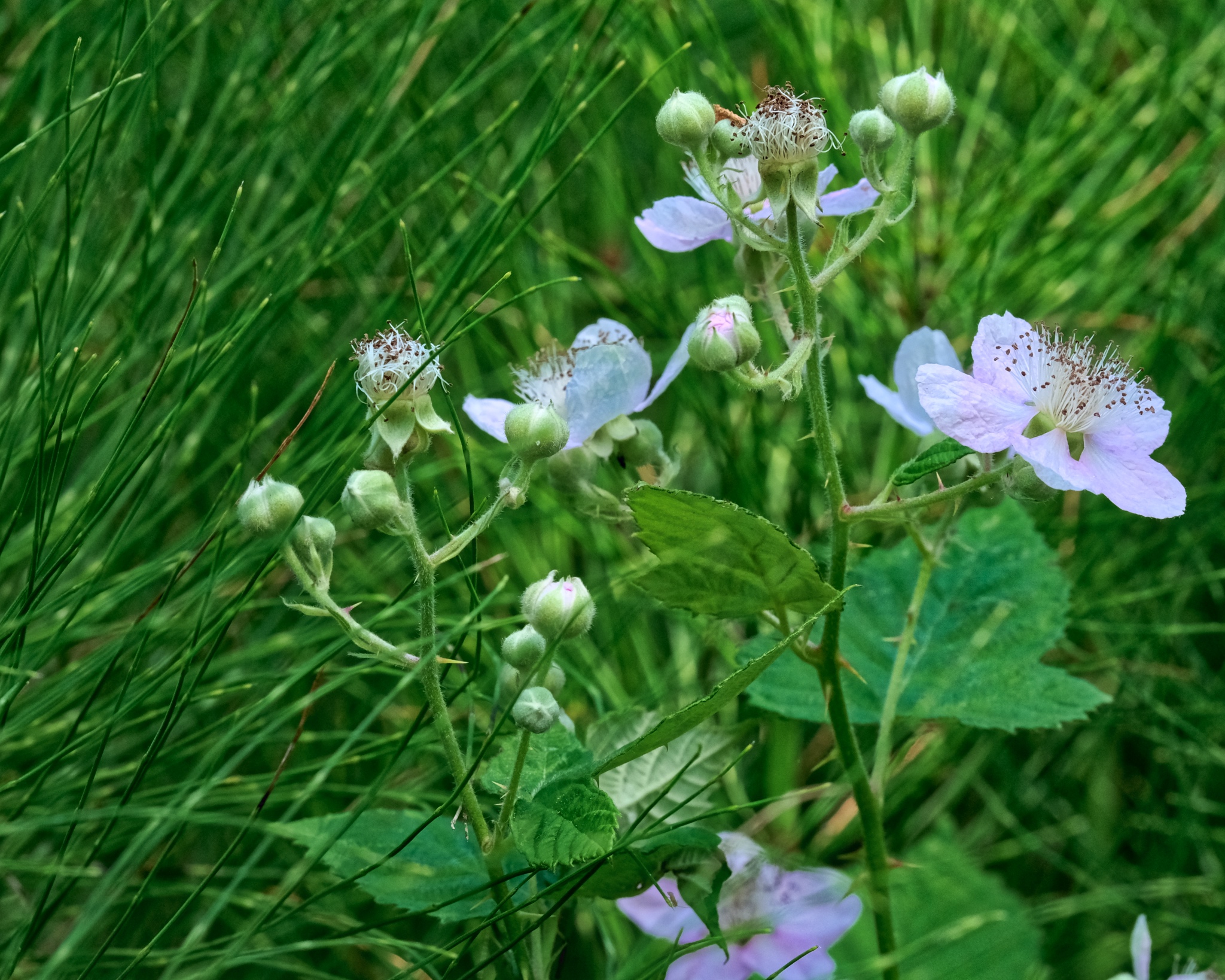 The blackberry vines grew among the horsetail ferns everywhere.
The blackberry vines grew among the horsetail ferns everywhere. Someone hung a large birdhouse along the path.
Someone hung a large birdhouse along the path.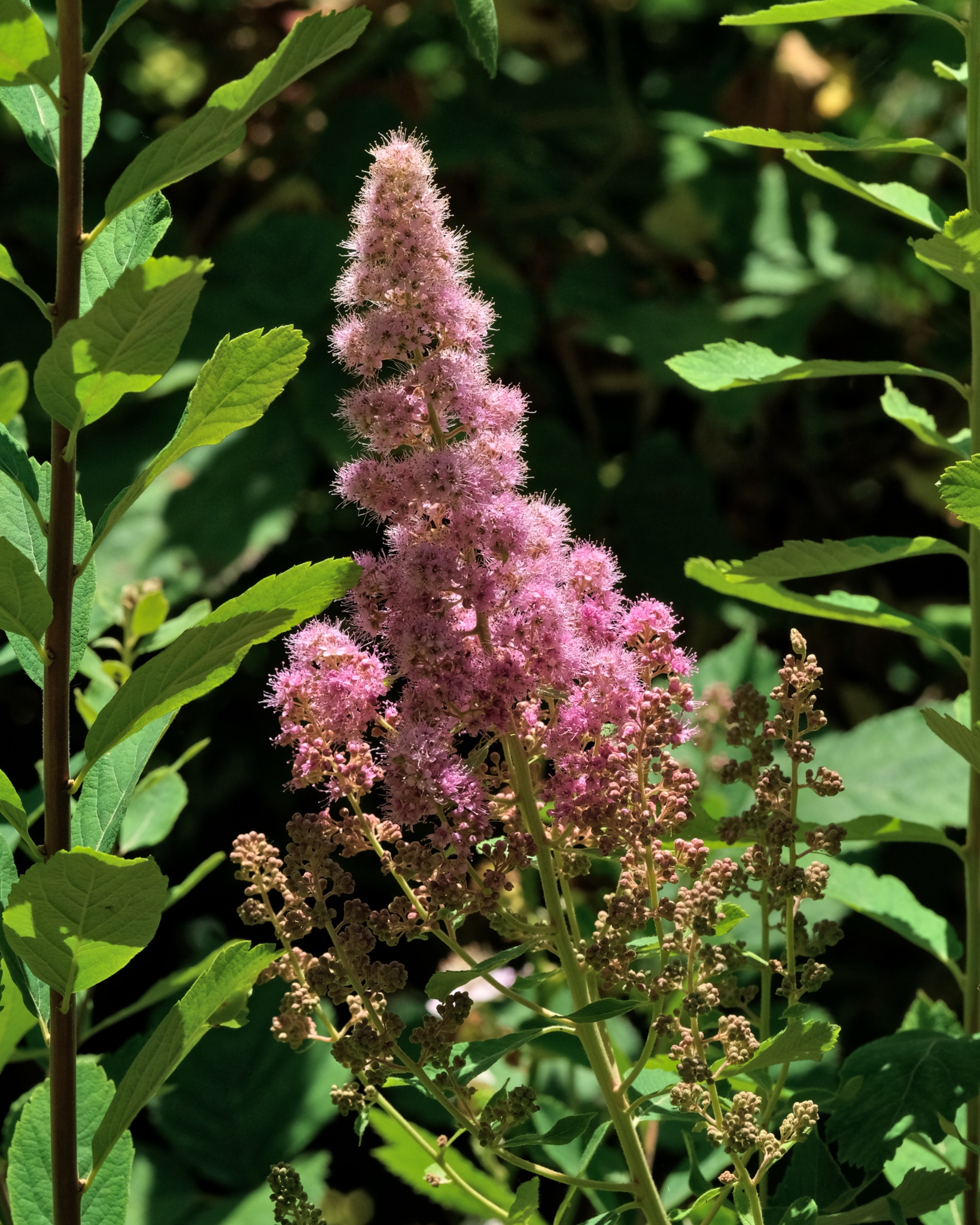 Beautiful summer wildflowers . . . and then a moving distraction along the creek . . .
Beautiful summer wildflowers . . . and then a moving distraction along the creek . . .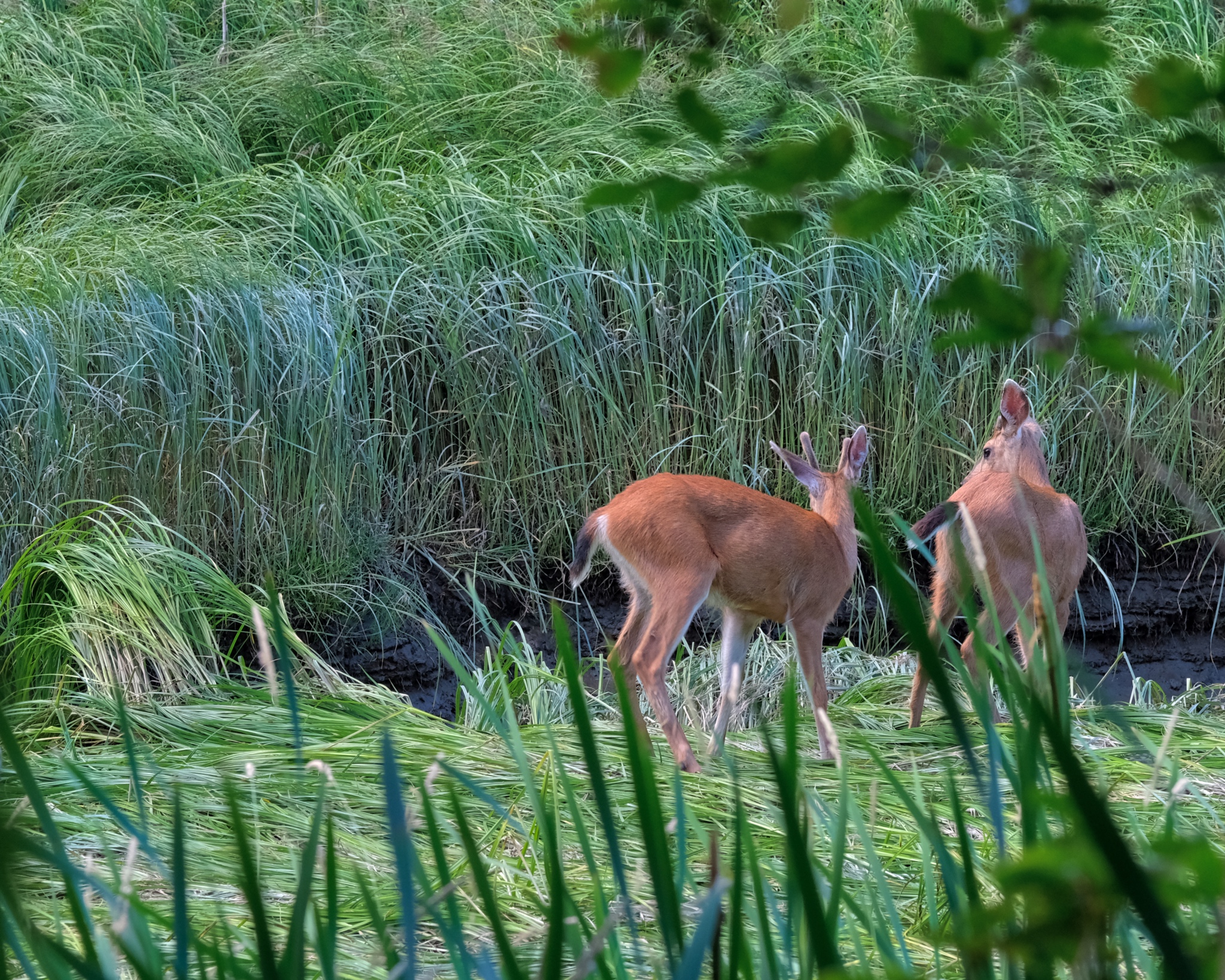 A wonderful surprise . . . . I sat very quietly, not 20 yards away.
A wonderful surprise . . . . I sat very quietly, not 20 yards away. I watched, and photographed, for over a half hour . . .
I watched, and photographed, for over a half hour . . . 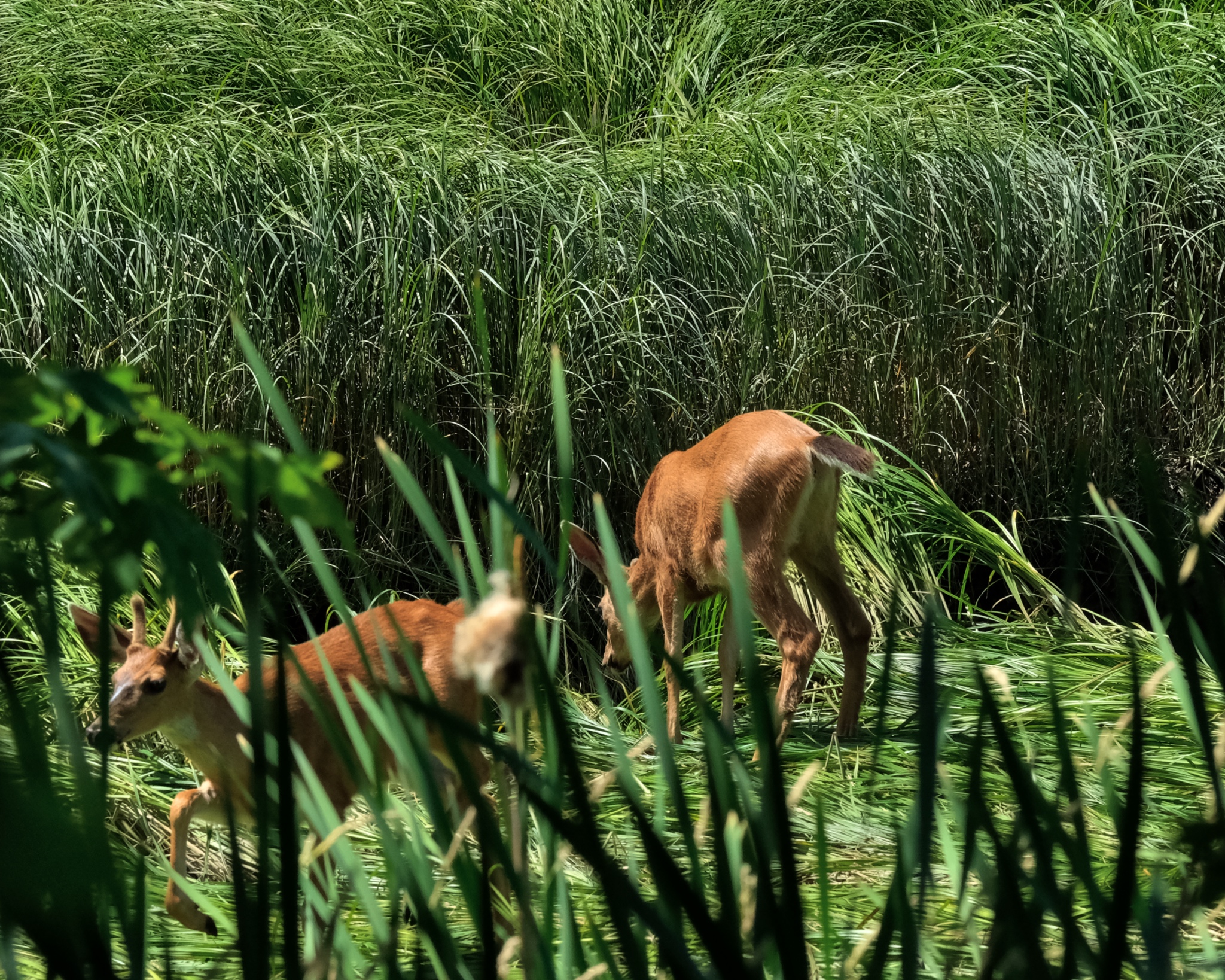 They finally moved on along, walking in the Woodland Creek streambed. I followed, but lost sight of them in the dense forest.
They finally moved on along, walking in the Woodland Creek streambed. I followed, but lost sight of them in the dense forest.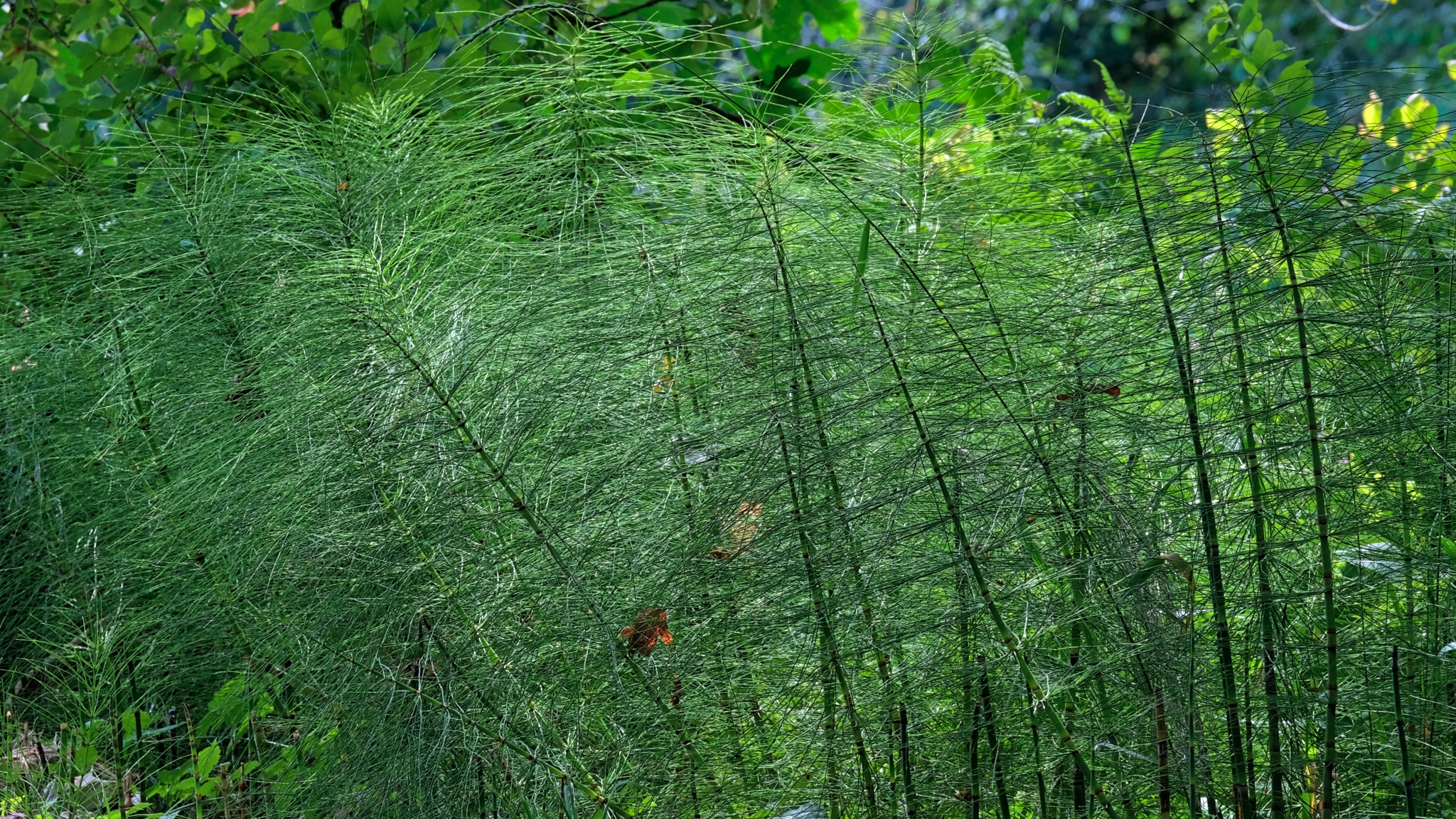 I wandered back to my camper along a horsetail fern-lined trail, and drove out to the Nisqually estuary.
I wandered back to my camper along a horsetail fern-lined trail, and drove out to the Nisqually estuary.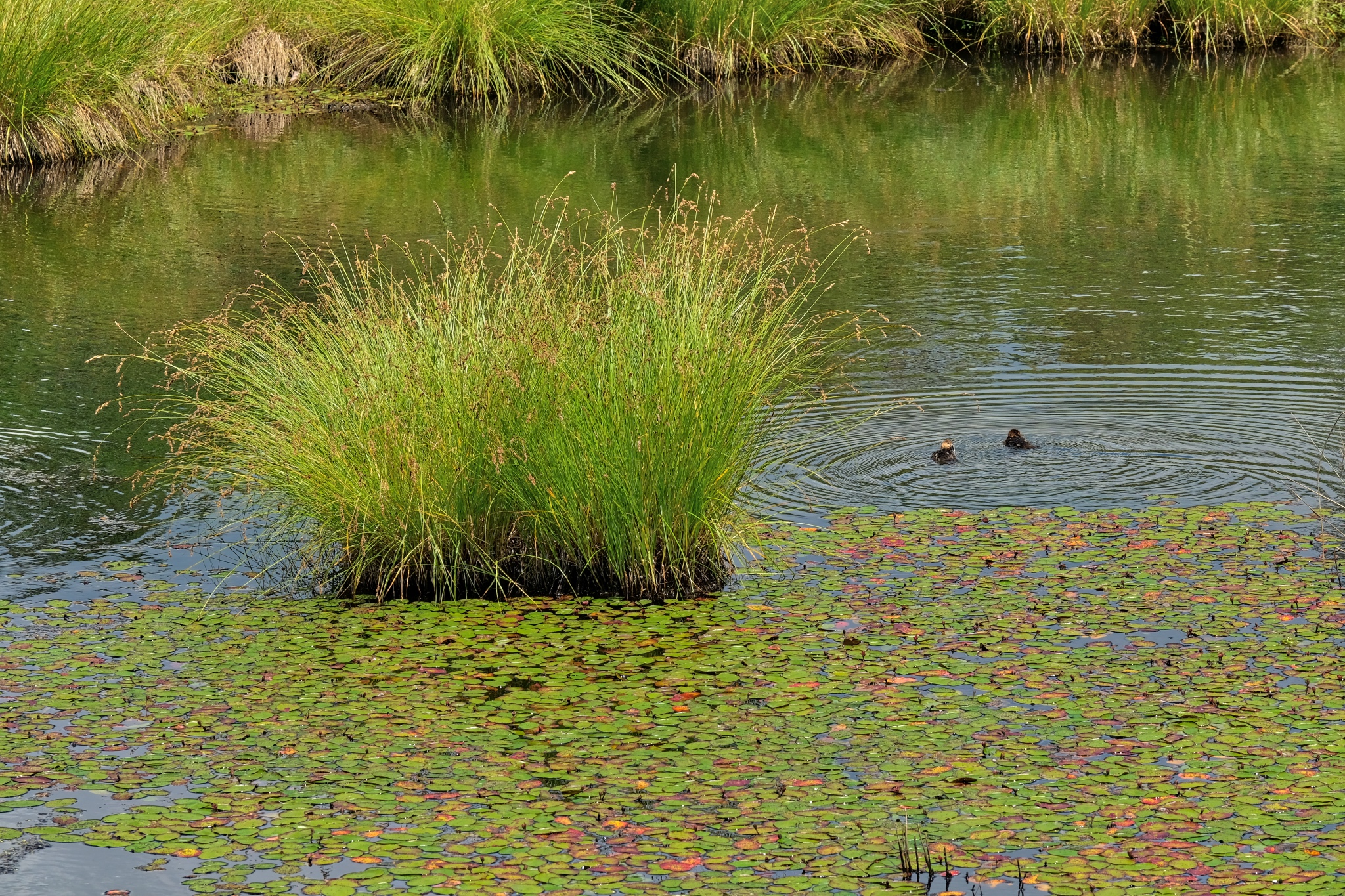 The Nisqually National Wildlife Reserve is comprised of four distinct natural ecological settings: freshwater ponds, wet forests, former farm fields, and estuarial mud flats (I visited during extreme low tide). All areas were fantastic! Here, diving ducks in a freshwater pond.
The Nisqually National Wildlife Reserve is comprised of four distinct natural ecological settings: freshwater ponds, wet forests, former farm fields, and estuarial mud flats (I visited during extreme low tide). All areas were fantastic! Here, diving ducks in a freshwater pond.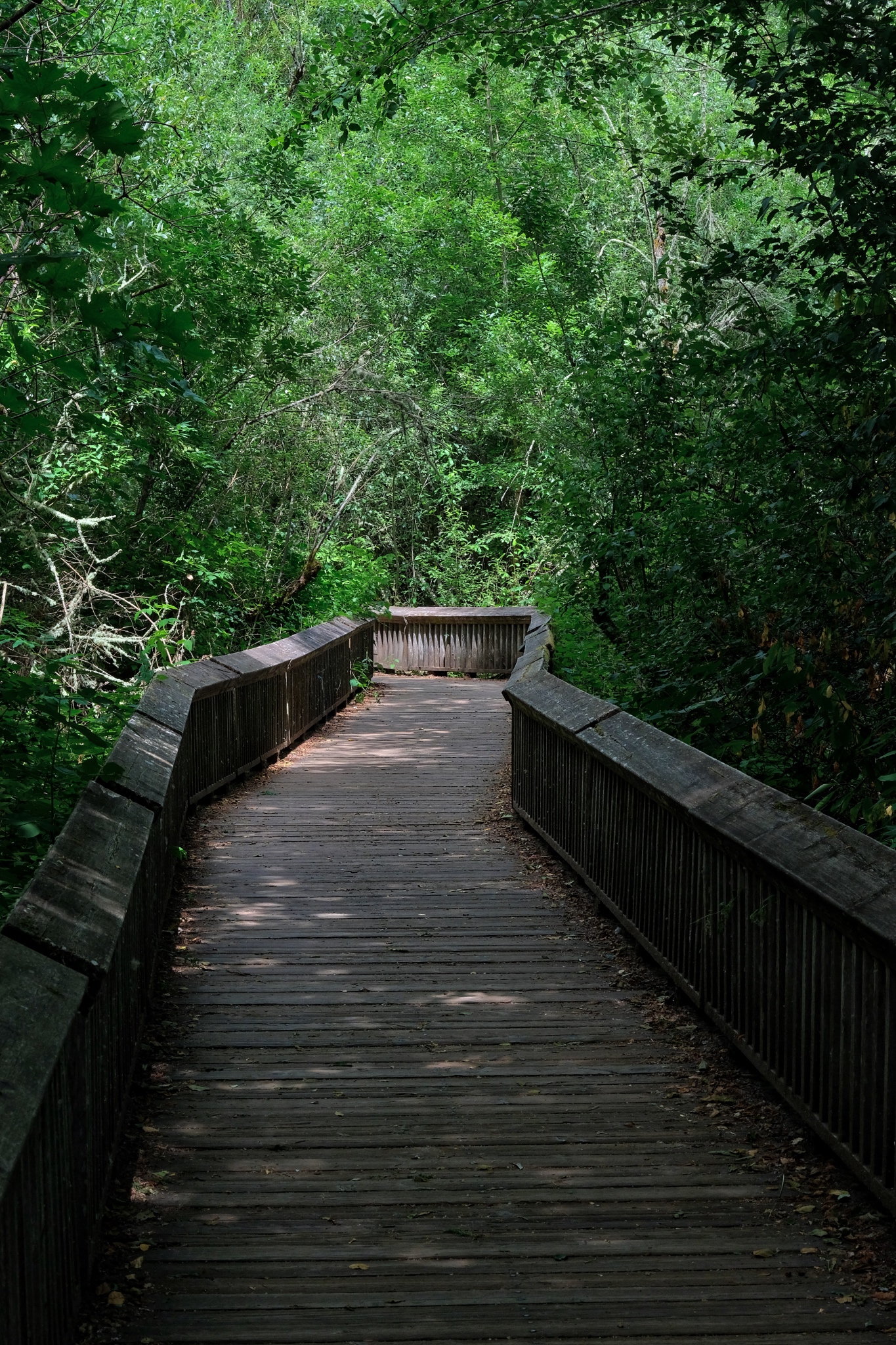 Elevated wooden walkways took visitors out into, and above the delicate ecology of the wet forest.
Elevated wooden walkways took visitors out into, and above the delicate ecology of the wet forest.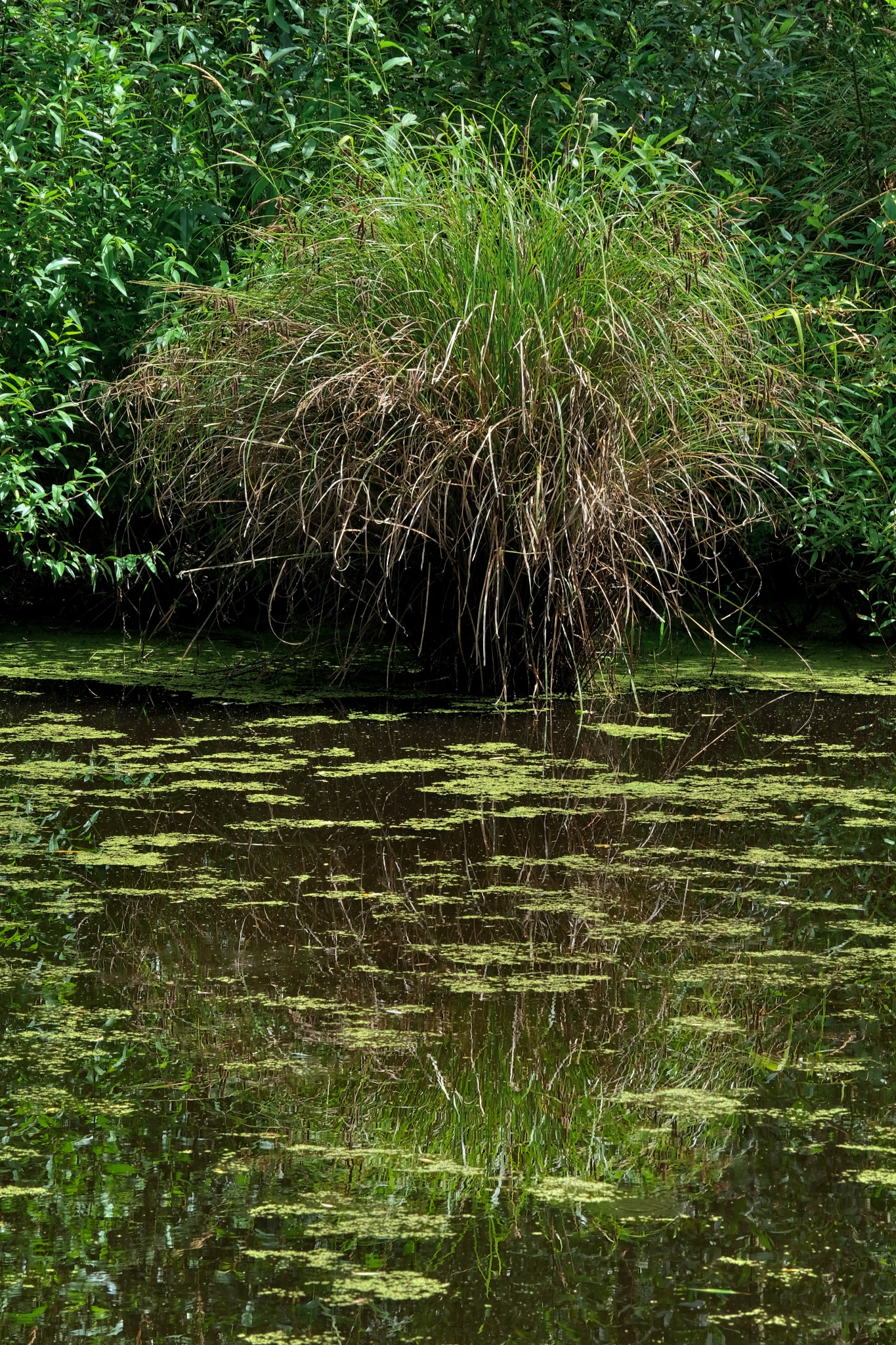 The elevated walkways afforded wonderful views of the freshwater wetlands.
The elevated walkways afforded wonderful views of the freshwater wetlands.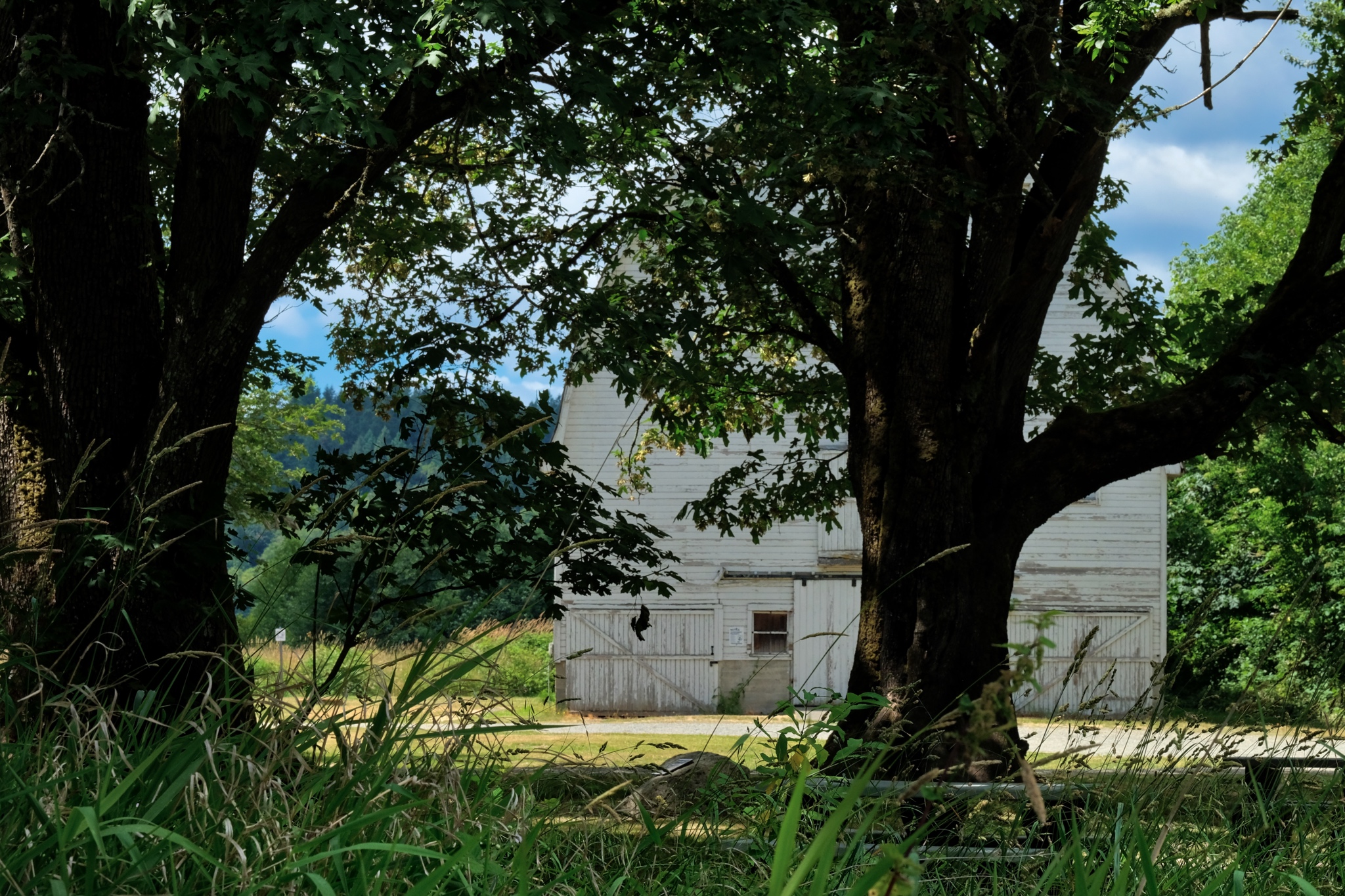 At the edge of the forest were the barns of an old settlement farm.
At the edge of the forest were the barns of an old settlement farm.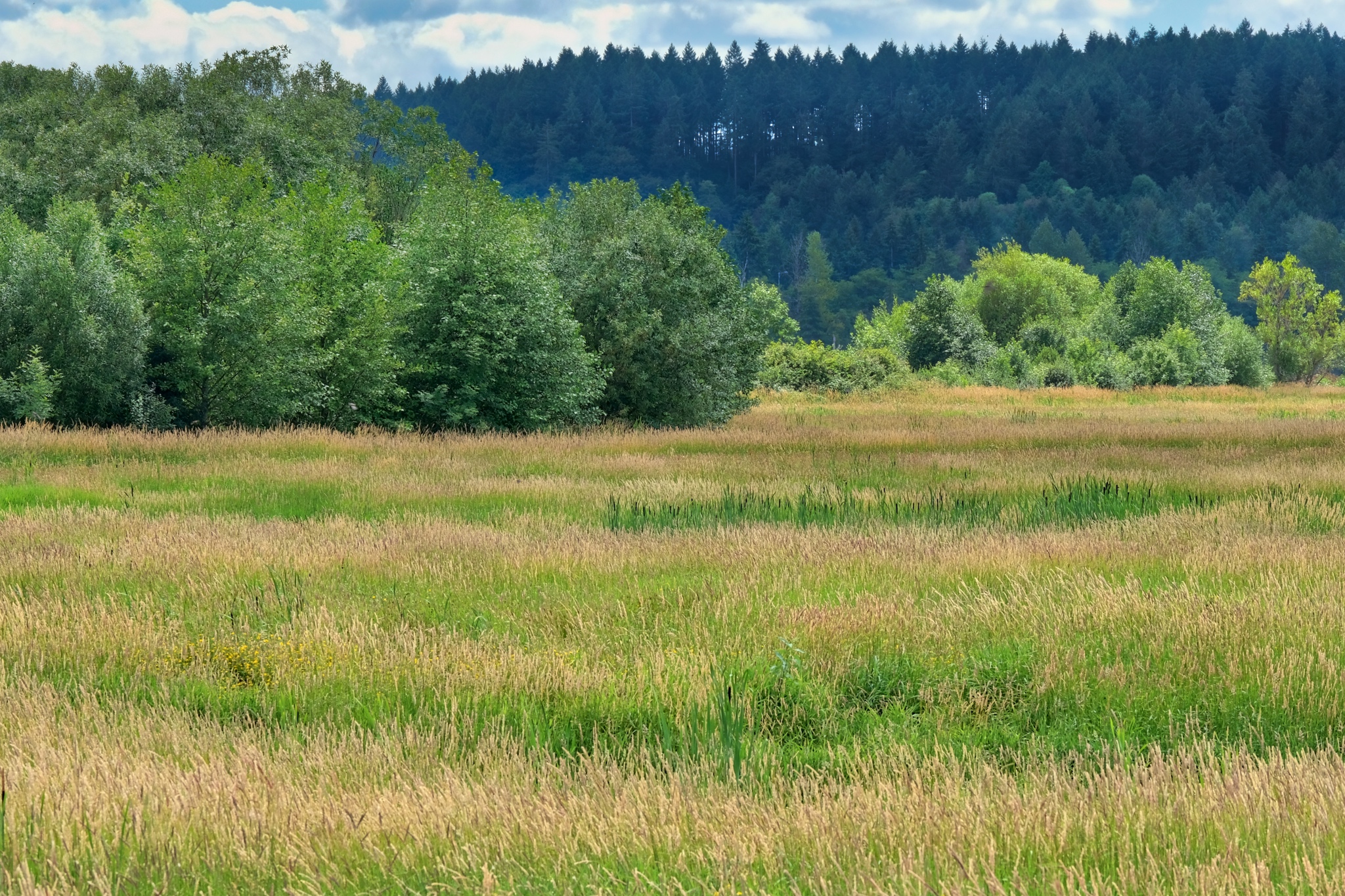 Early settlers expended a huge amount of labor and resources building a system of dykes to drain some of the Nisqually Estuary for farmland. The land now stands uncultivated . . . for the benefit of wildlife habitat.
Early settlers expended a huge amount of labor and resources building a system of dykes to drain some of the Nisqually Estuary for farmland. The land now stands uncultivated . . . for the benefit of wildlife habitat.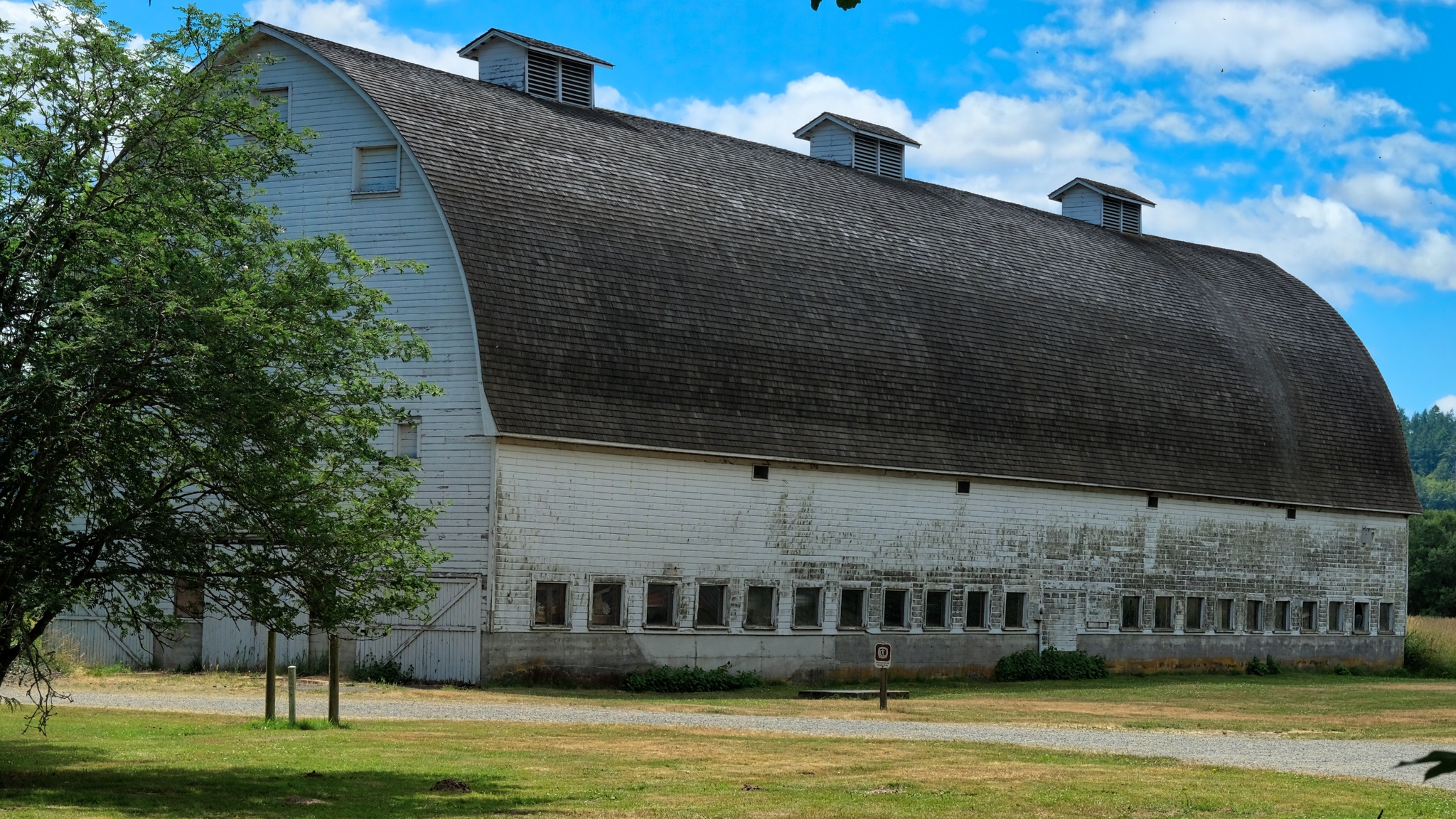 The huge barn, now a part of the National Wildlife Reserve.
The huge barn, now a part of the National Wildlife Reserve.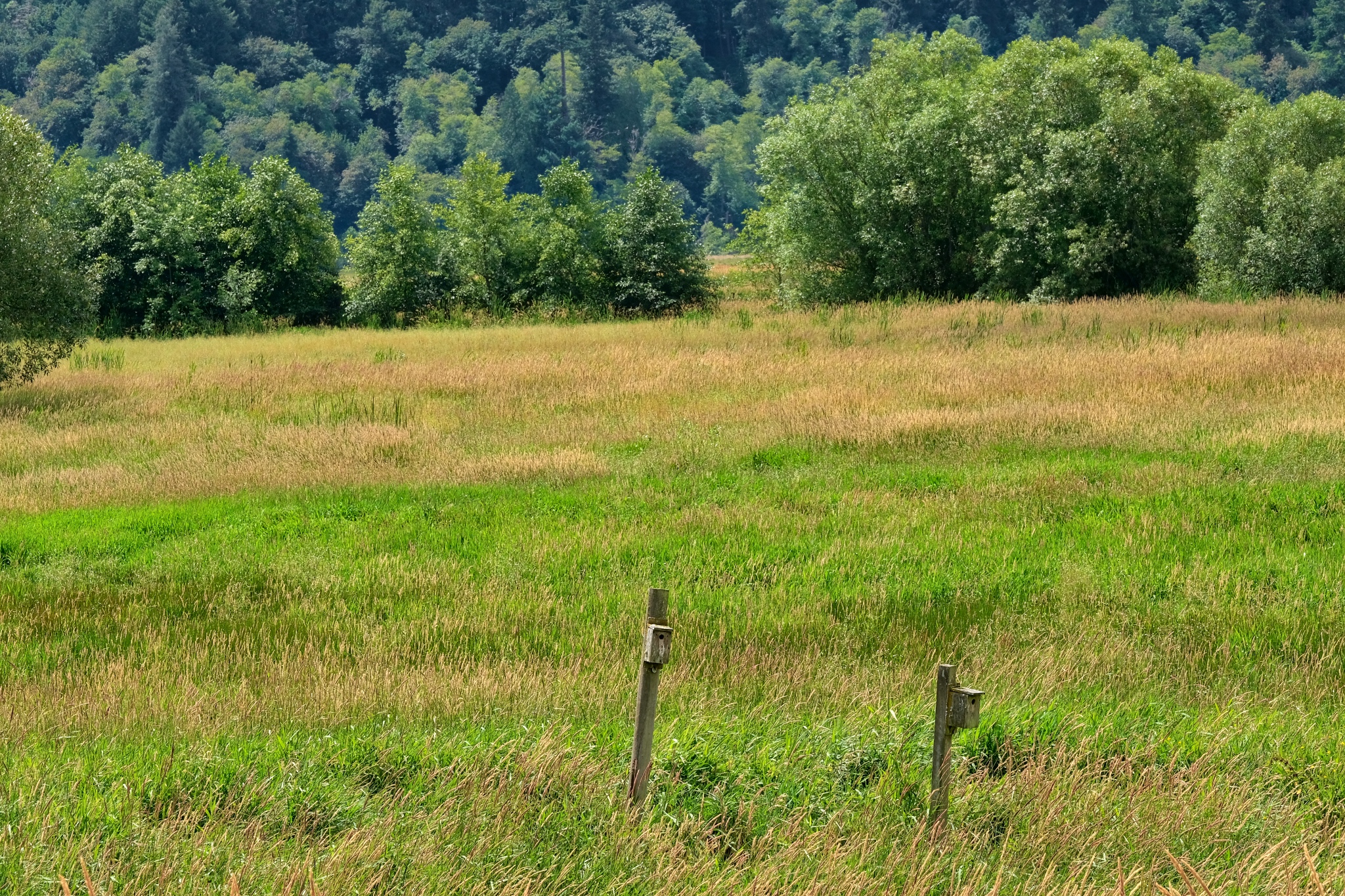 The colors of the fields and surrounding hills were breathtaking!
The colors of the fields and surrounding hills were breathtaking!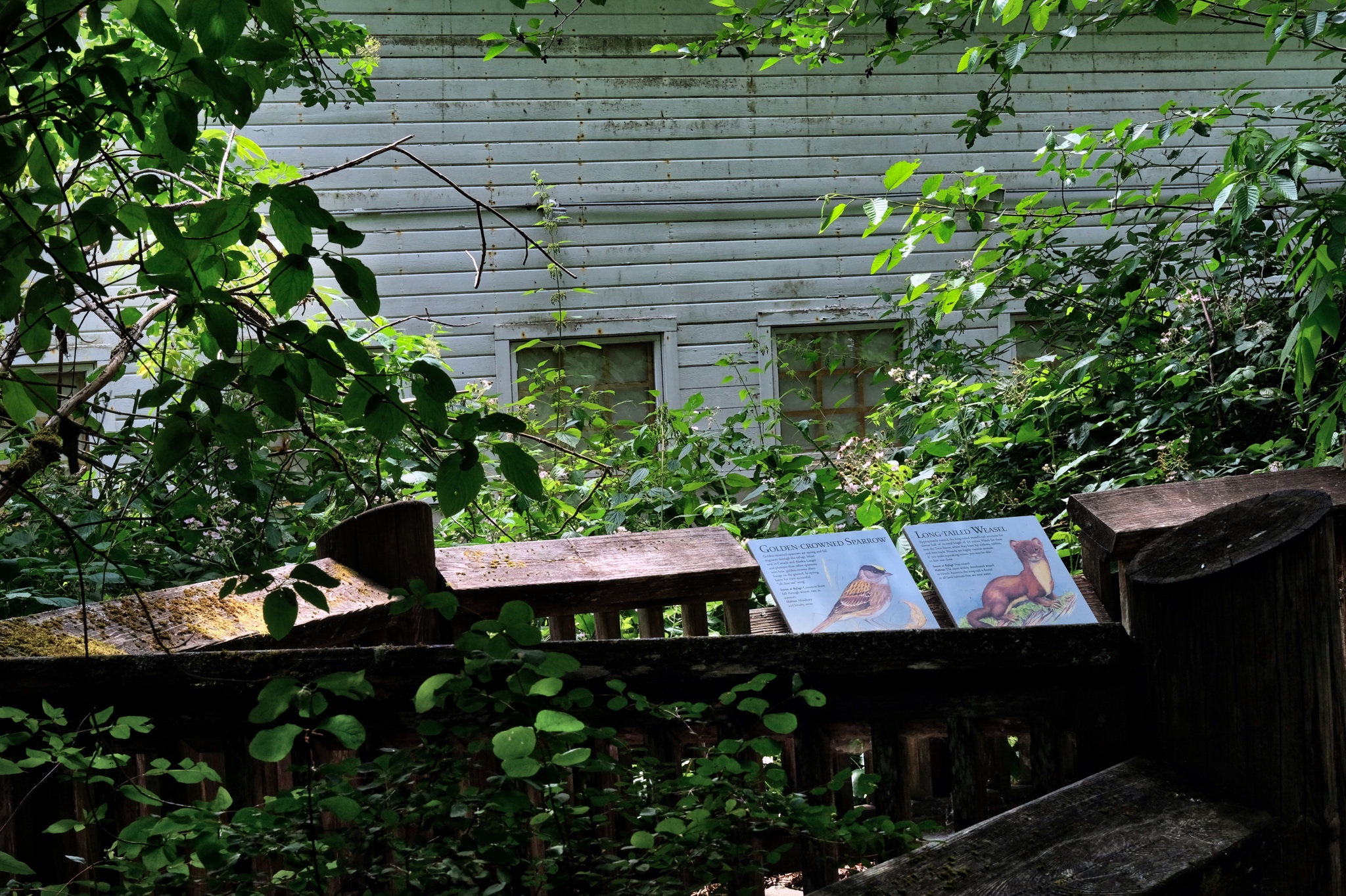 All the paths were well marked with informational signage about the indigenous flora, fauna, and local geology.
All the paths were well marked with informational signage about the indigenous flora, fauna, and local geology.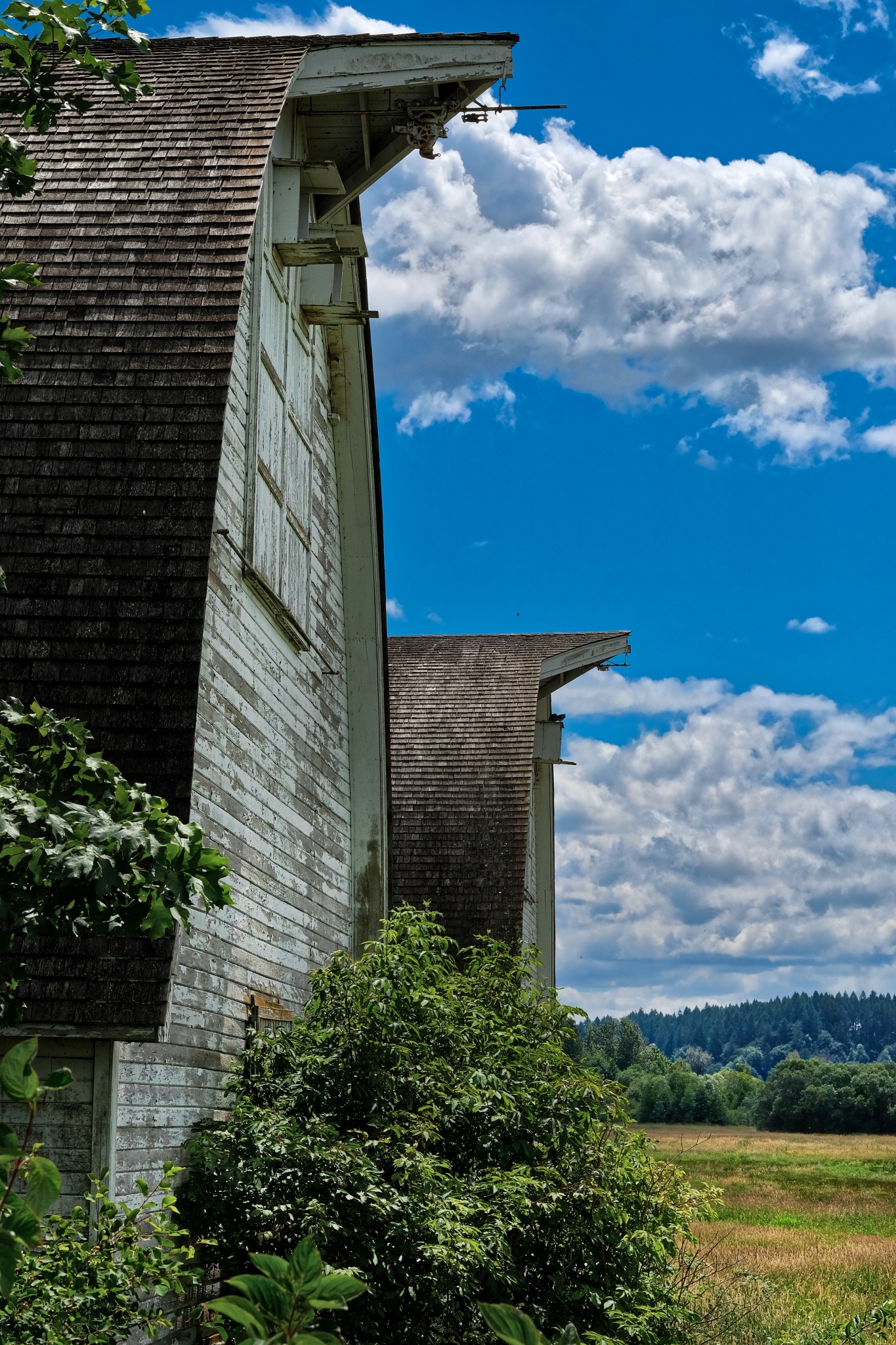 A wonderful angle from which to view the mammoth barns!
A wonderful angle from which to view the mammoth barns!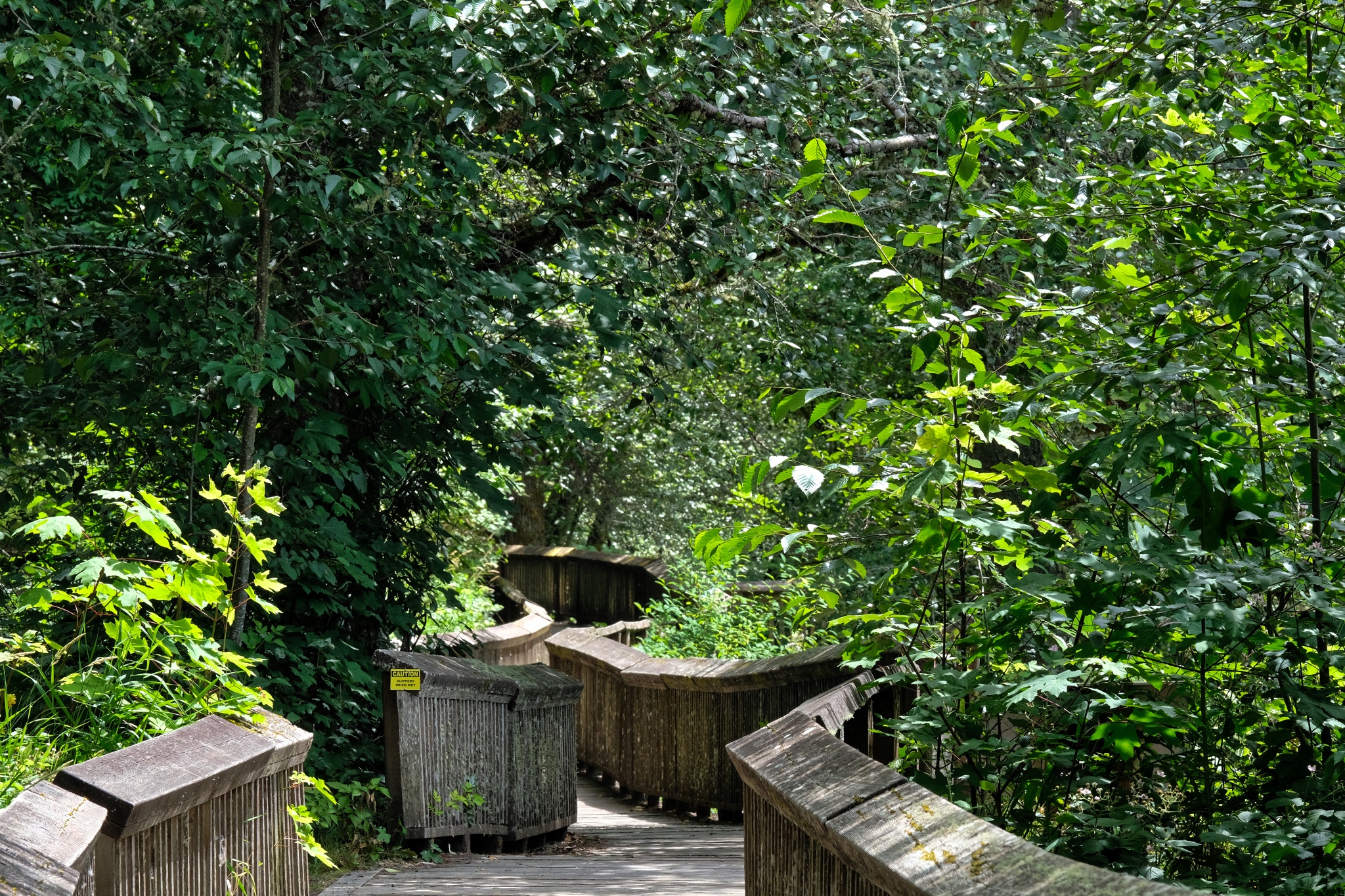 I wandered around some more on the elevated walkways, stopping here and there to take flower photos.
I wandered around some more on the elevated walkways, stopping here and there to take flower photos.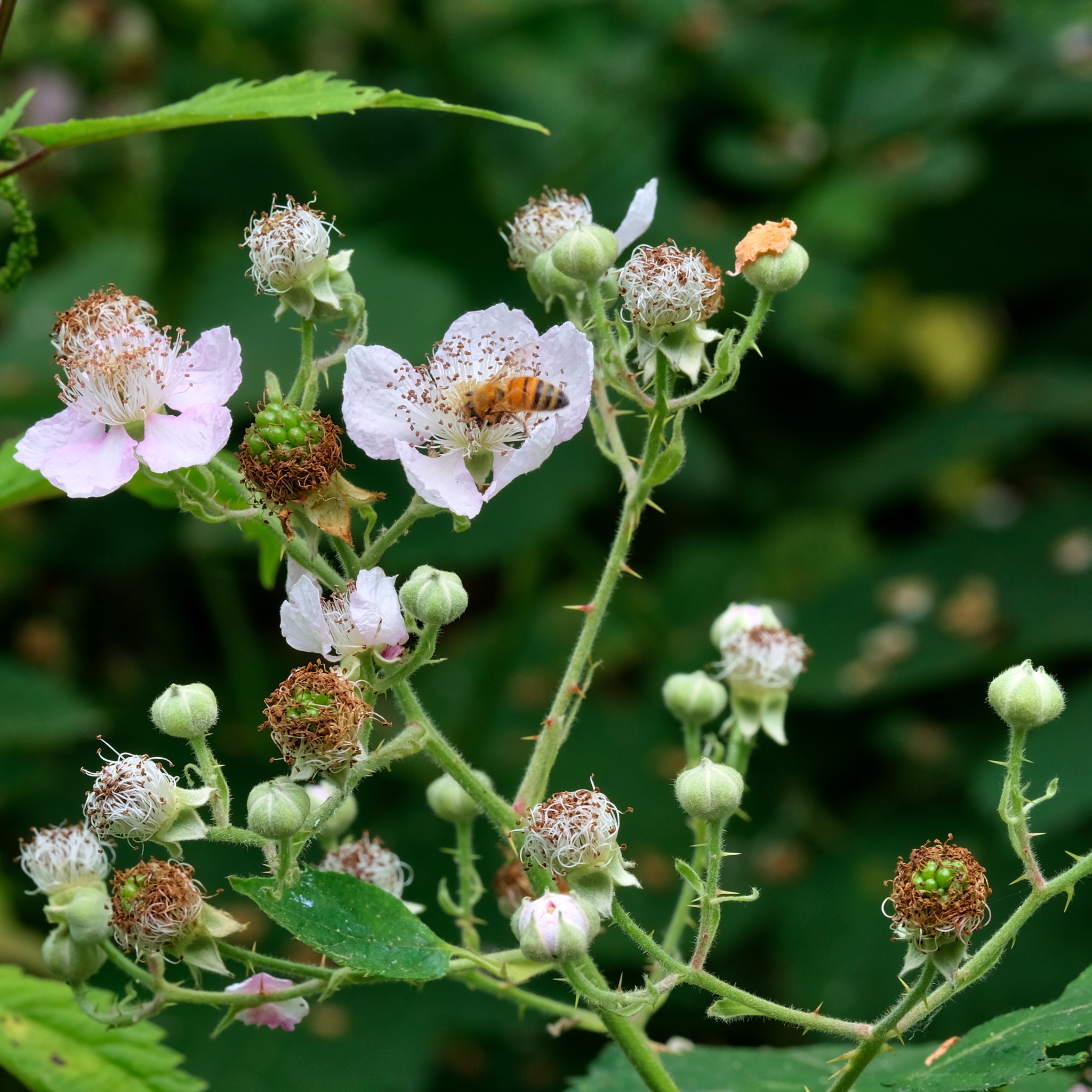 Busy bees . . . and . . .
Busy bees . . . and . . .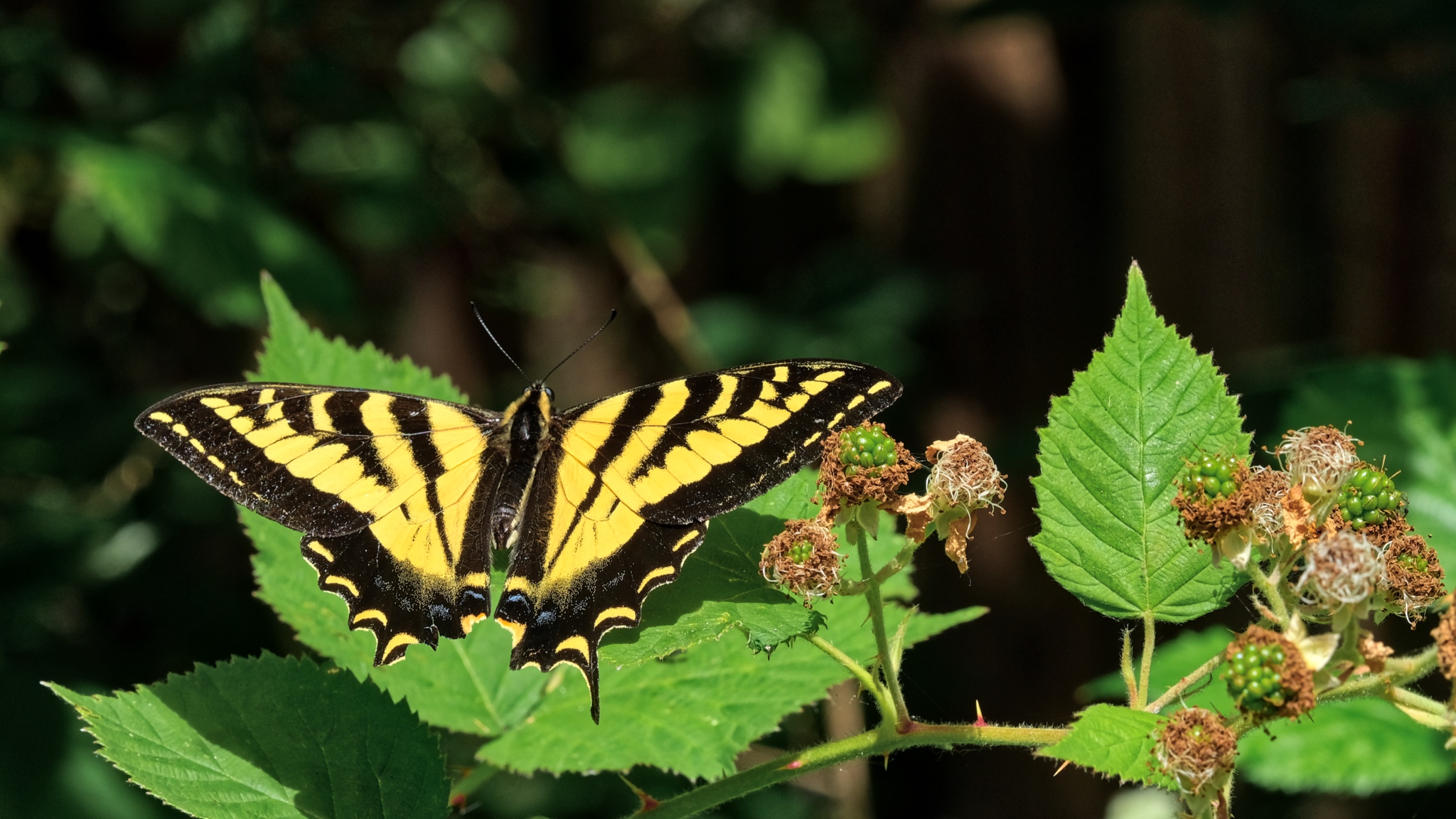 Busy butterflies too!
Busy butterflies too!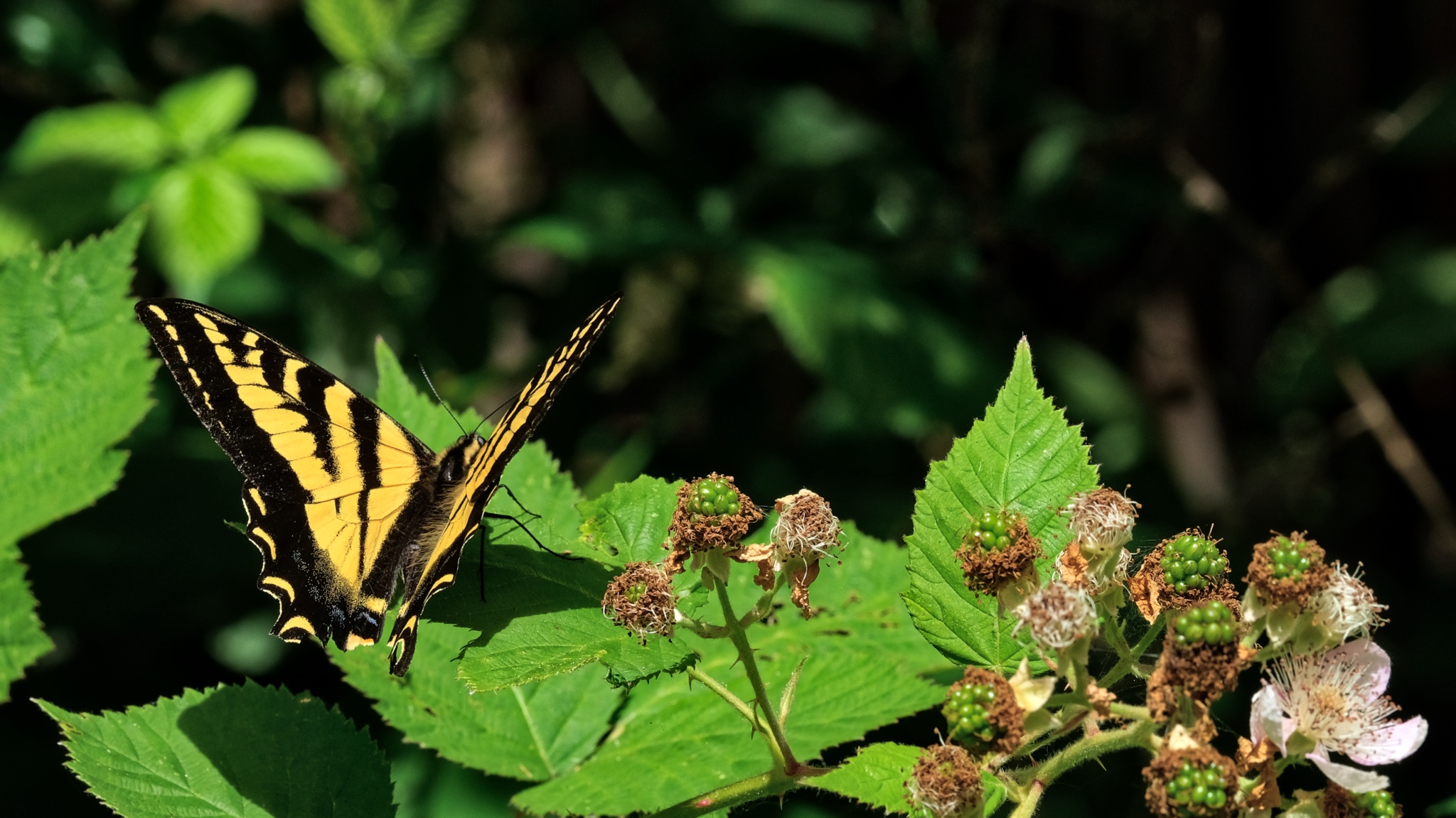 This one seemed to stay around just so I could photograph it!
This one seemed to stay around just so I could photograph it!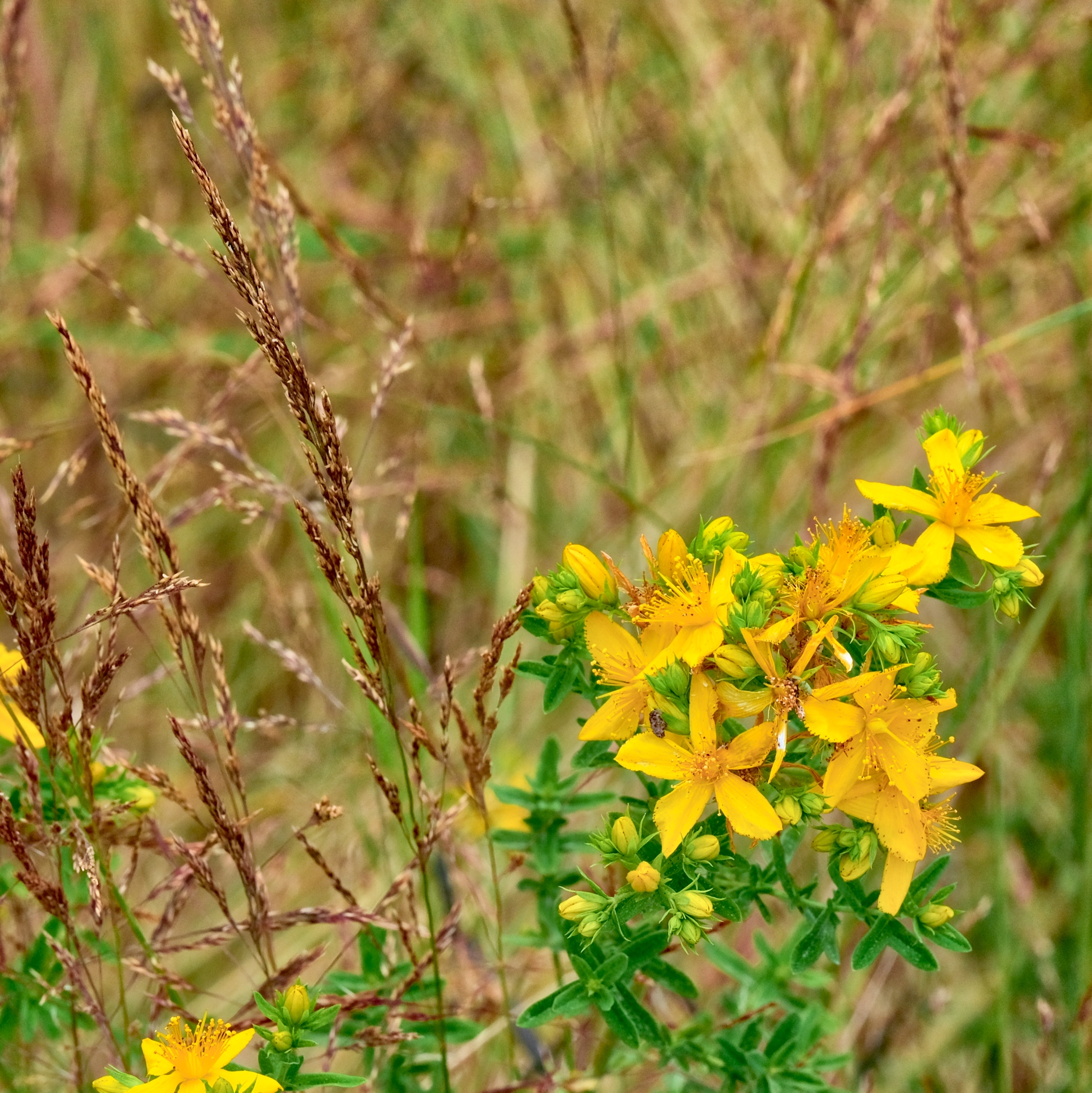 I left the cool shade of the forest for the dry gravel path through the fields and onward toward the estuary . . .
I left the cool shade of the forest for the dry gravel path through the fields and onward toward the estuary . . .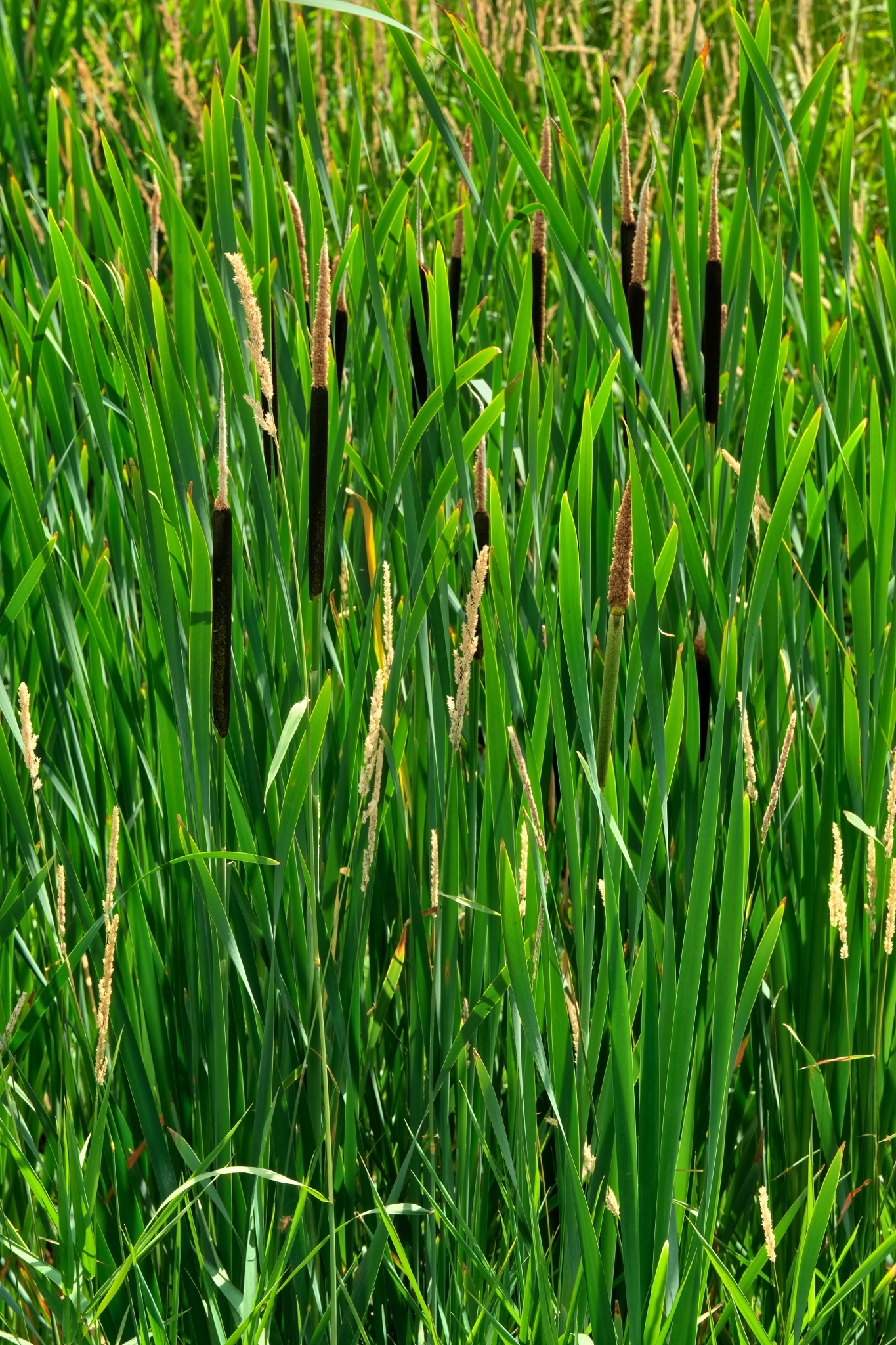 The old field drainage canals astride the dyke was full of thick bull rushes.
The old field drainage canals astride the dyke was full of thick bull rushes.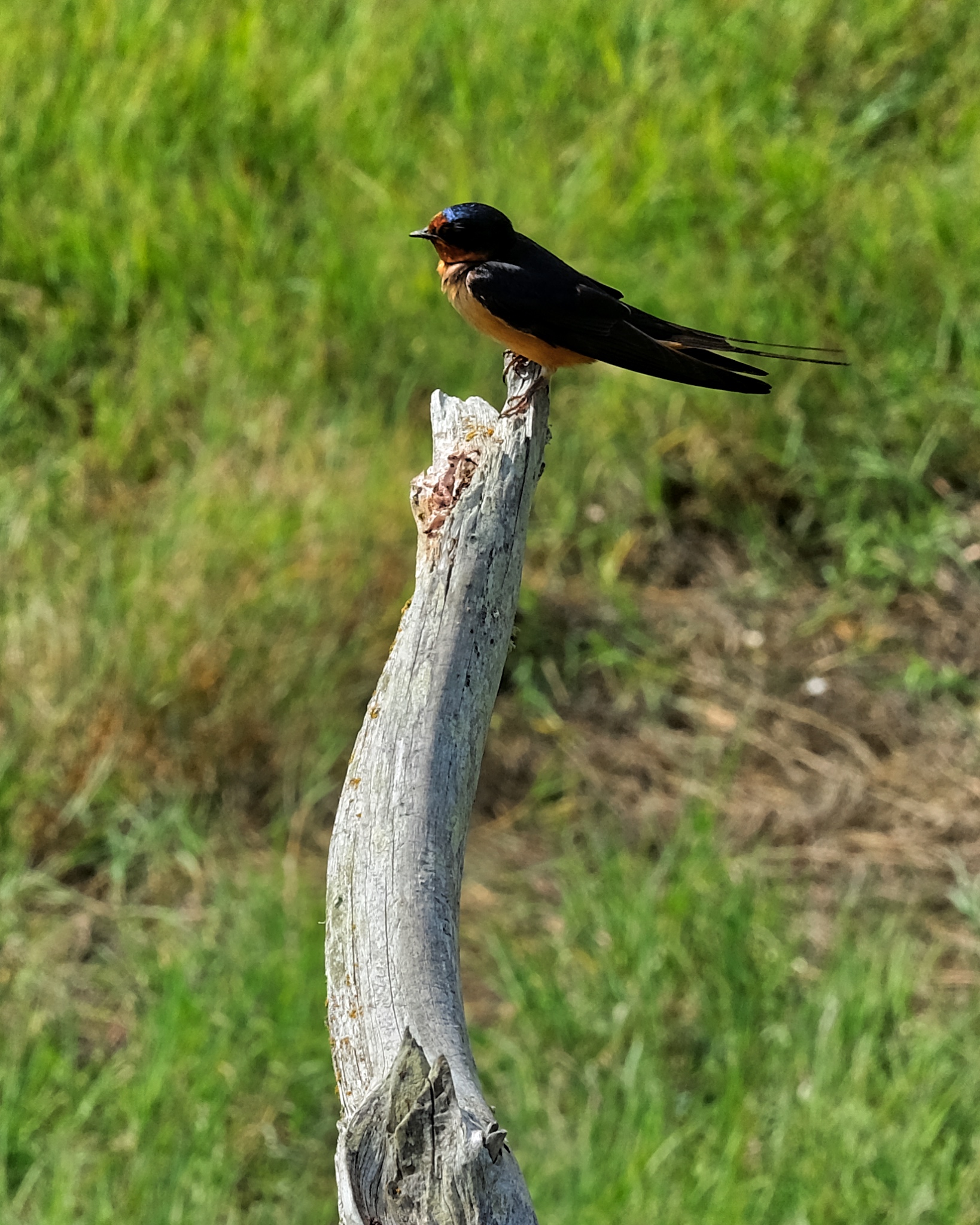 Many birds on the forest edge.
Many birds on the forest edge.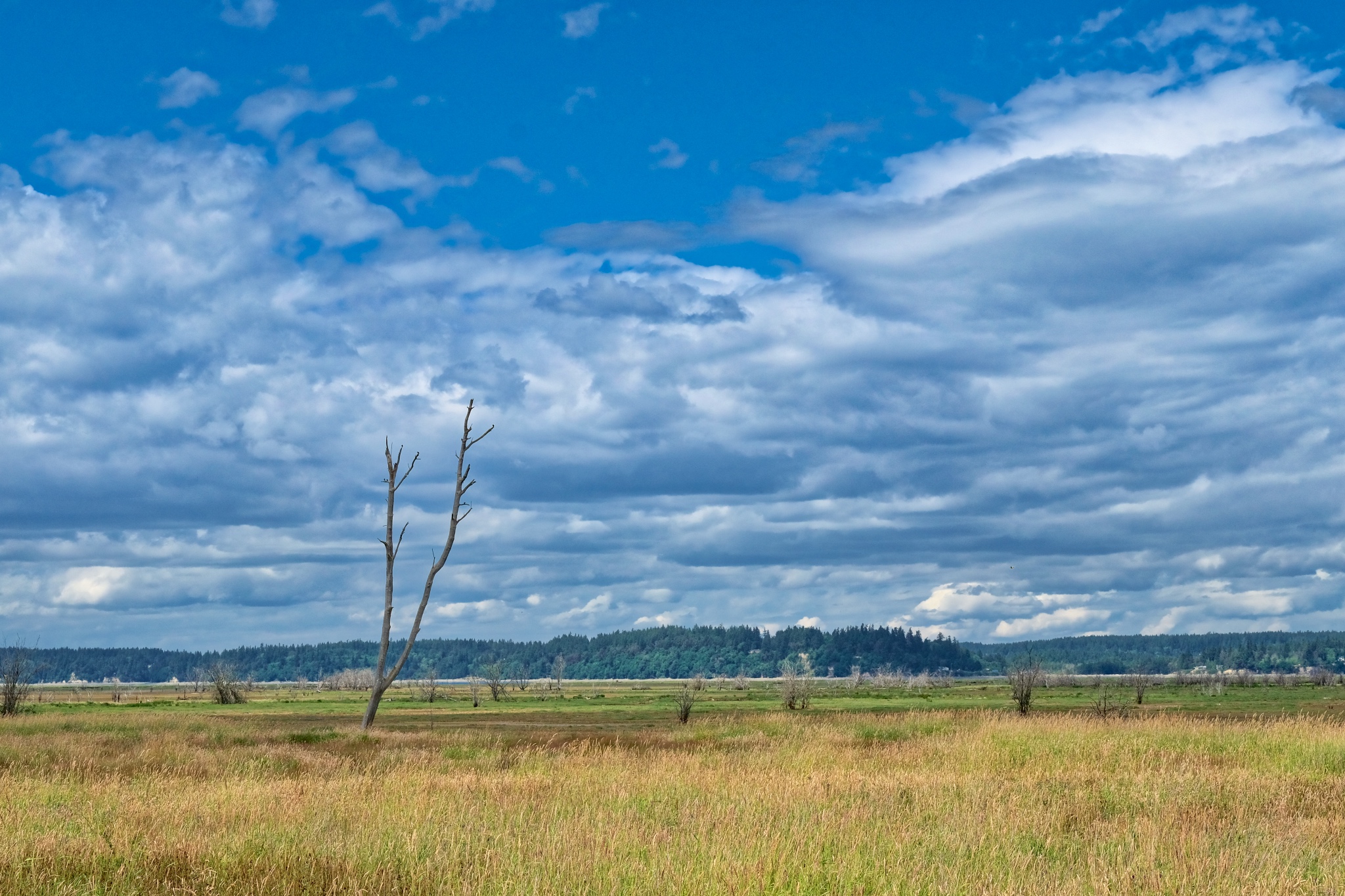 The grassy fields gradually gave way to estuarial flats.
The grassy fields gradually gave way to estuarial flats.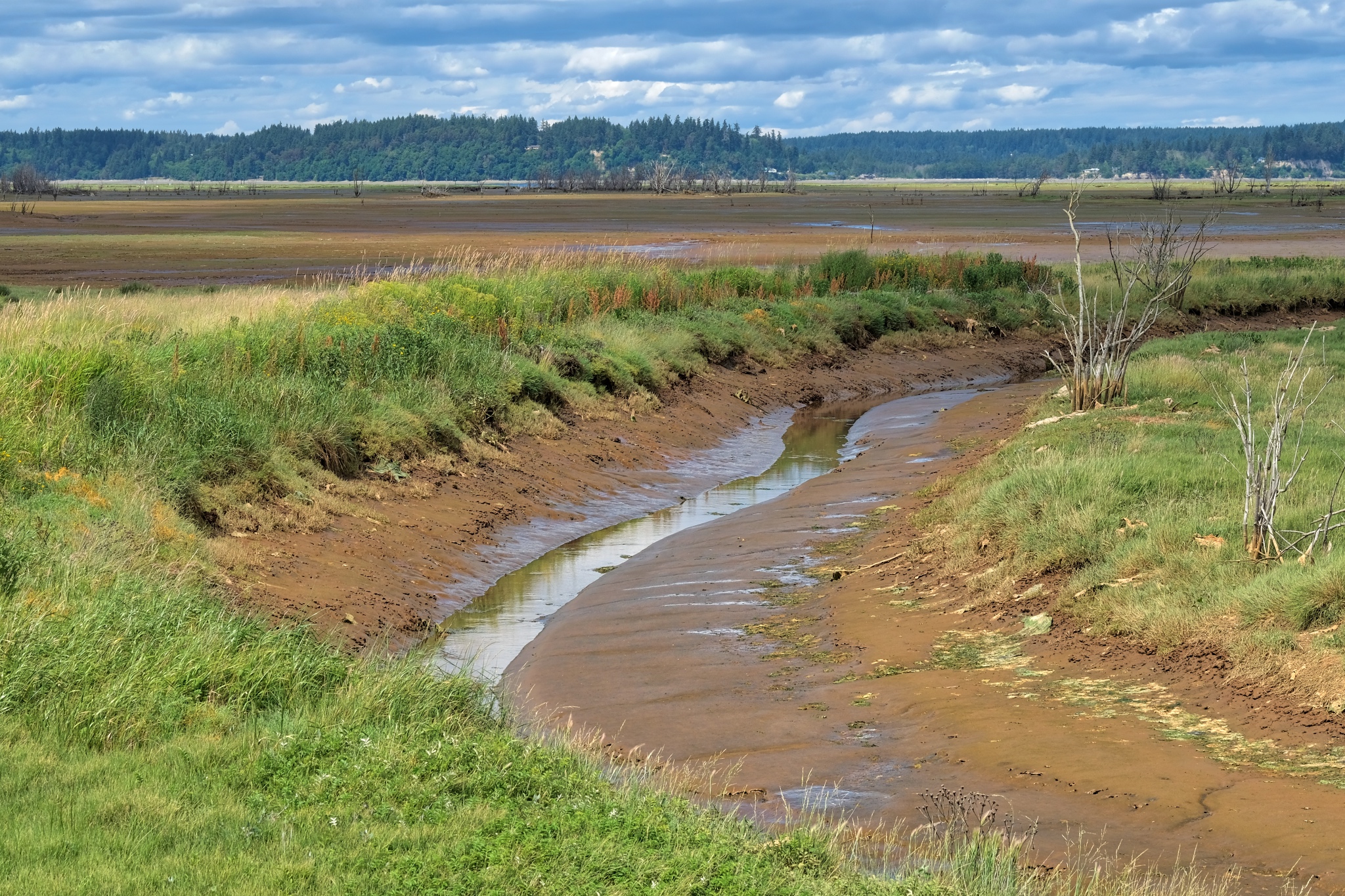 I knew the tide was going to be out when I saw these small bay arterial channels.
I knew the tide was going to be out when I saw these small bay arterial channels.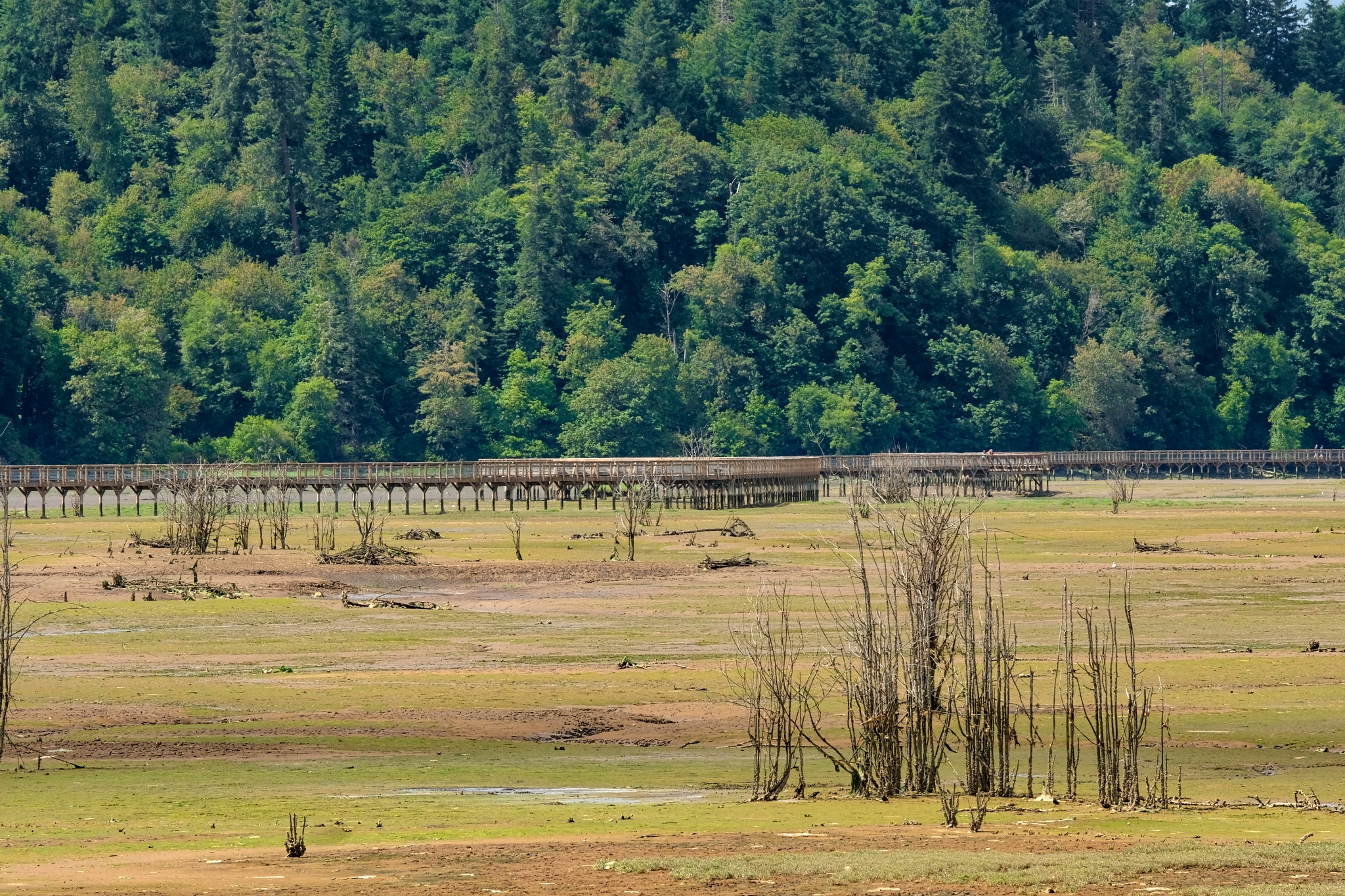 My first view across the wetlands toward the elevated observation walkway.
My first view across the wetlands toward the elevated observation walkway.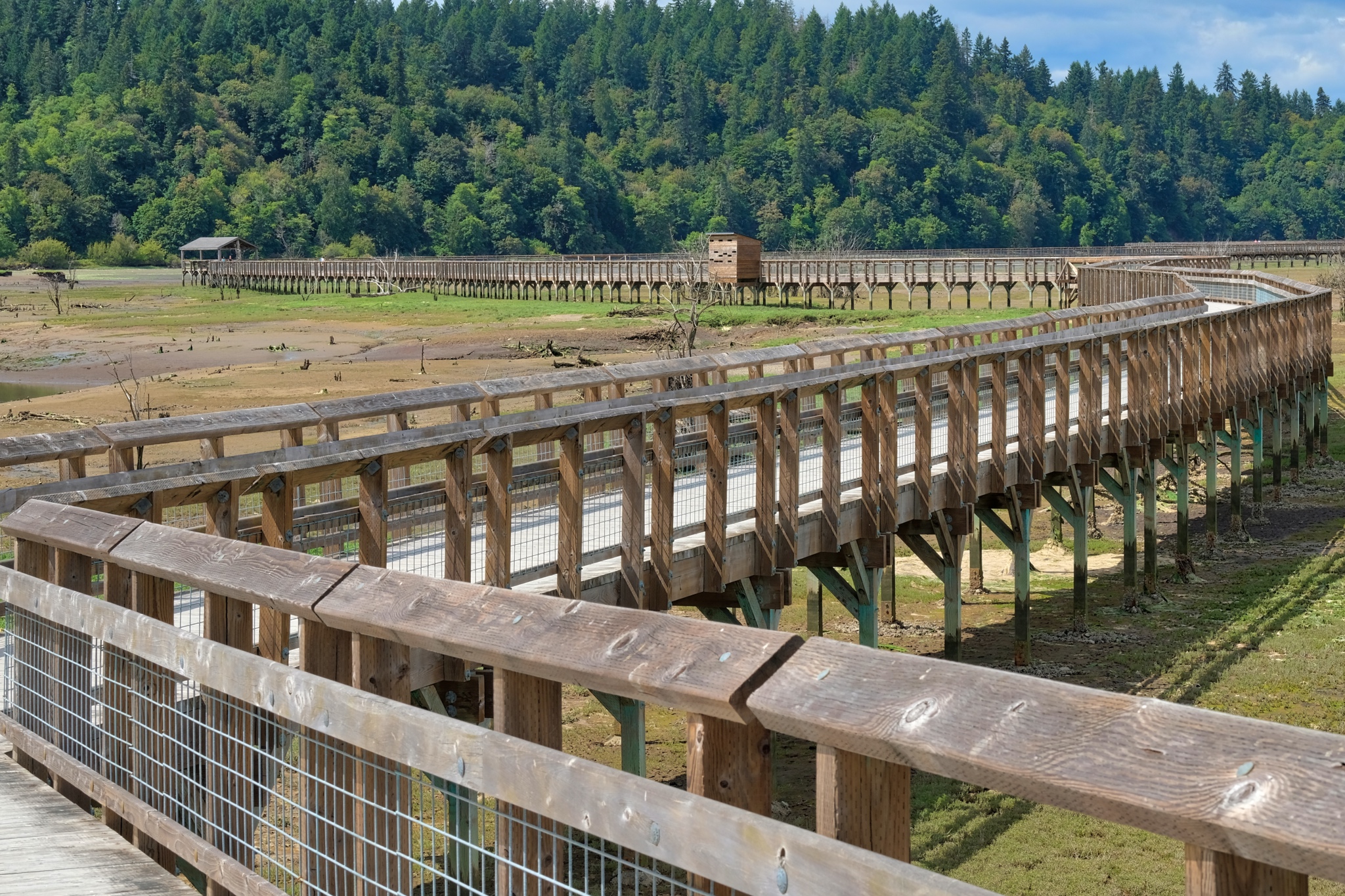 I climbed the ramp up onto the observation walkway . . . an incredible piece wooden construction in its own right.
I climbed the ramp up onto the observation walkway . . . an incredible piece wooden construction in its own right. The view back up the Nisqually River across dry sand bars.
The view back up the Nisqually River across dry sand bars.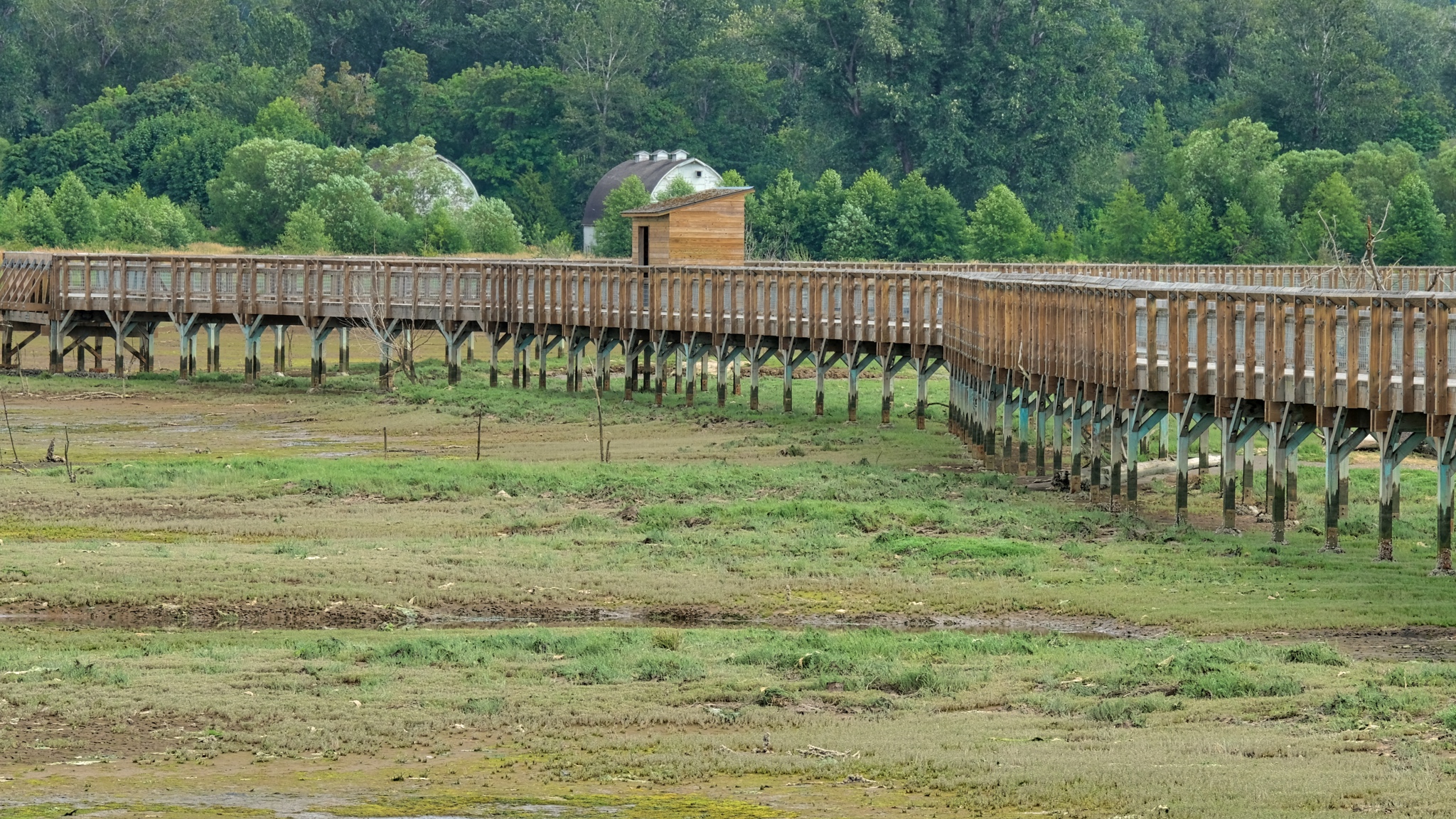 Looking back toward the tree line and the old ban from the walkway.
Looking back toward the tree line and the old ban from the walkway.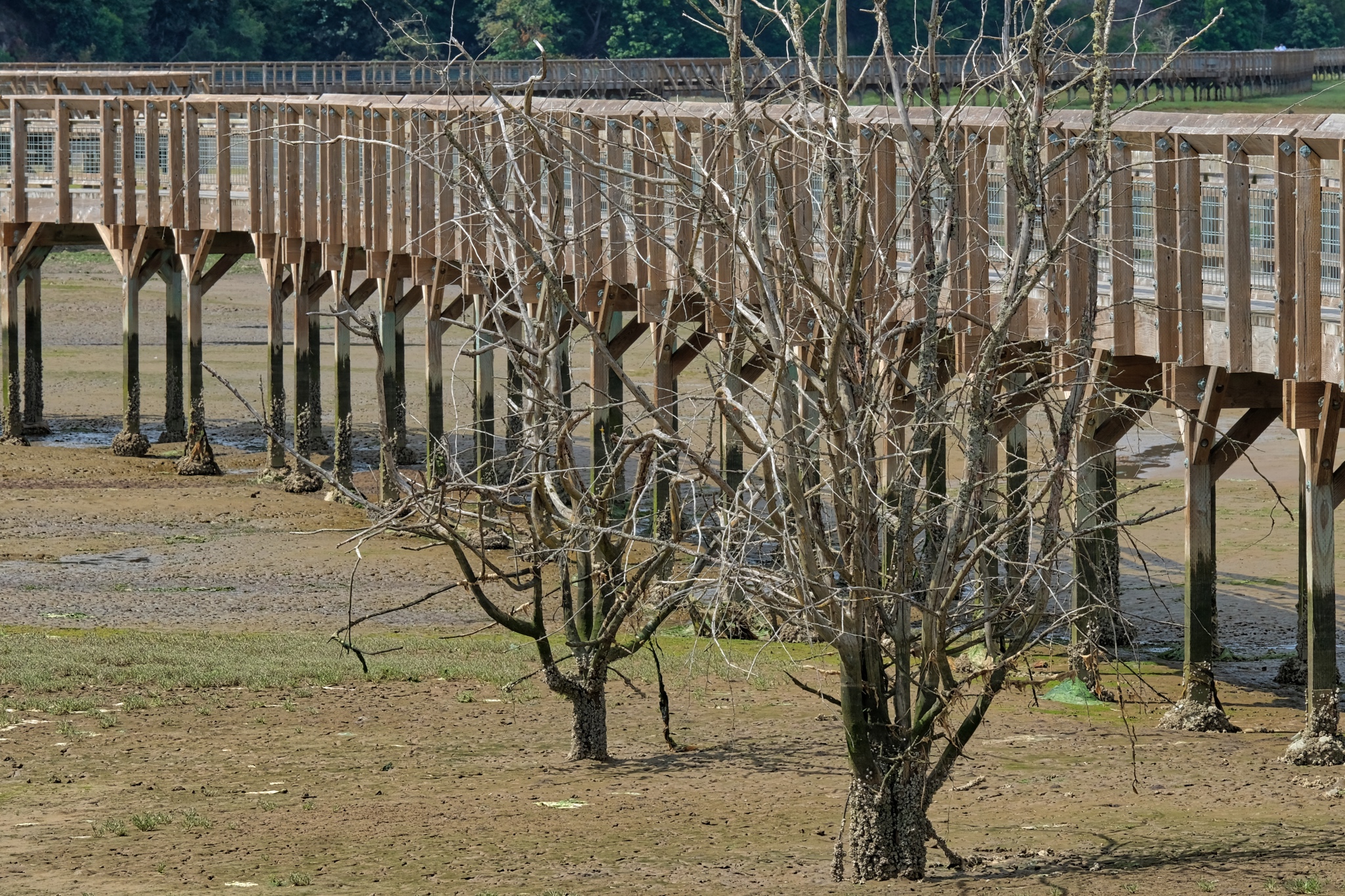 The sights from the walkway were both strange and captivating. You cannot visit these low tide estuarial landscapes any other way.
The sights from the walkway were both strange and captivating. You cannot visit these low tide estuarial landscapes any other way.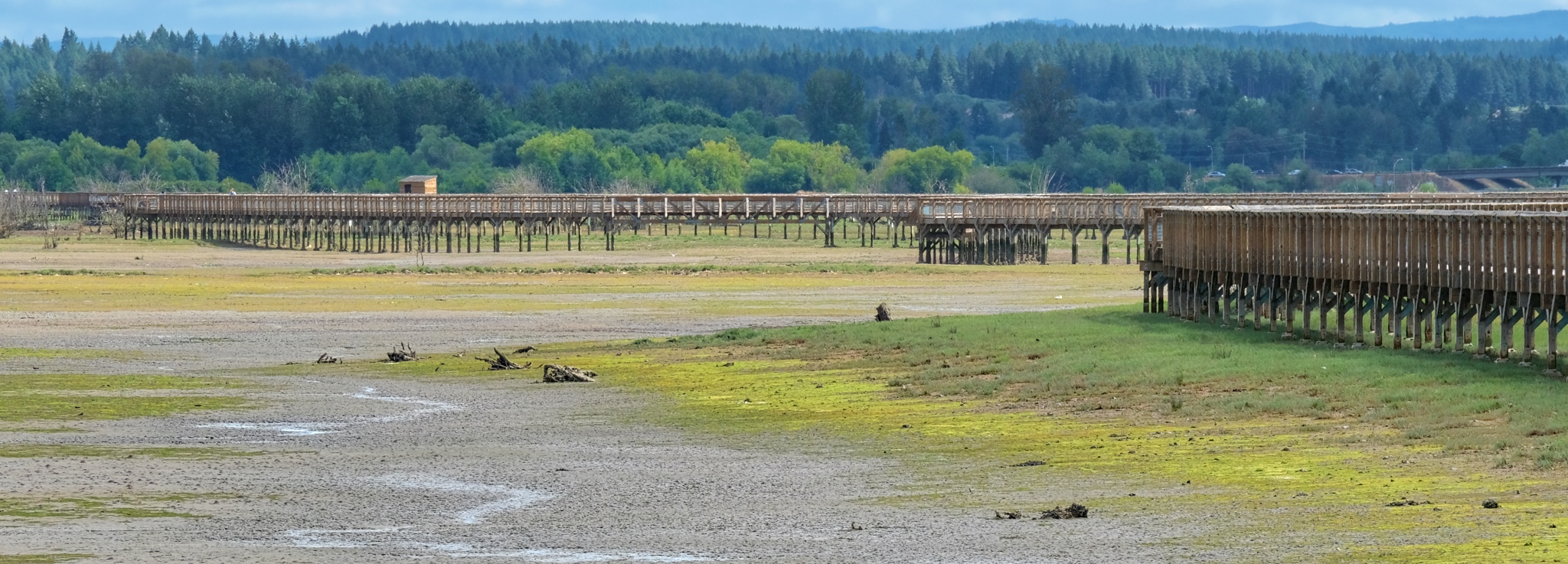 A mega-walkway!
A mega-walkway!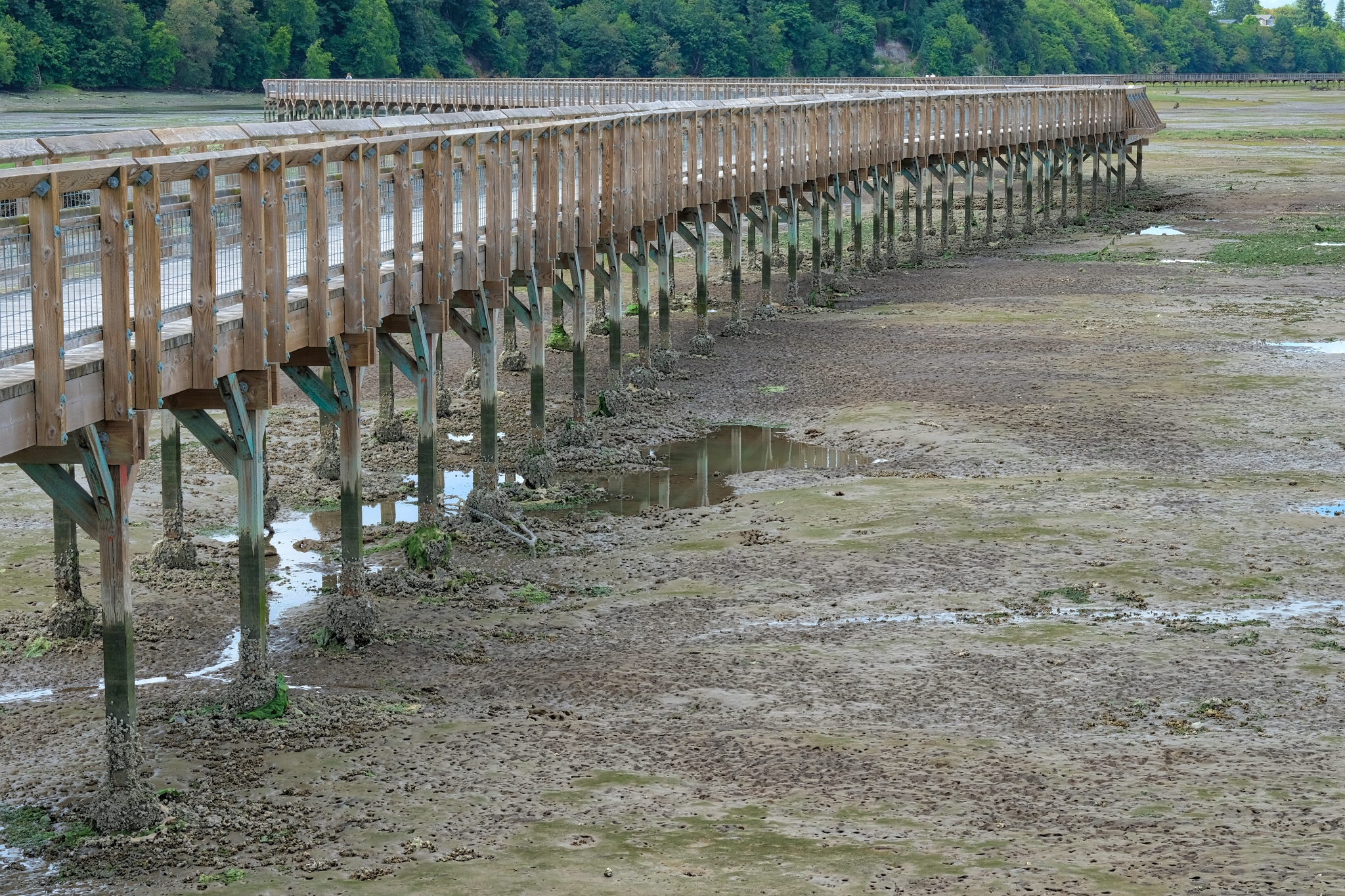 The further out I went the more it became an exposed bay floor.
The further out I went the more it became an exposed bay floor. On one side of the walkway was the Nisqually River . . . with evidence of the pilings of old commercial structures.
On one side of the walkway was the Nisqually River . . . with evidence of the pilings of old commercial structures. Some commercial project lost to time.
Some commercial project lost to time.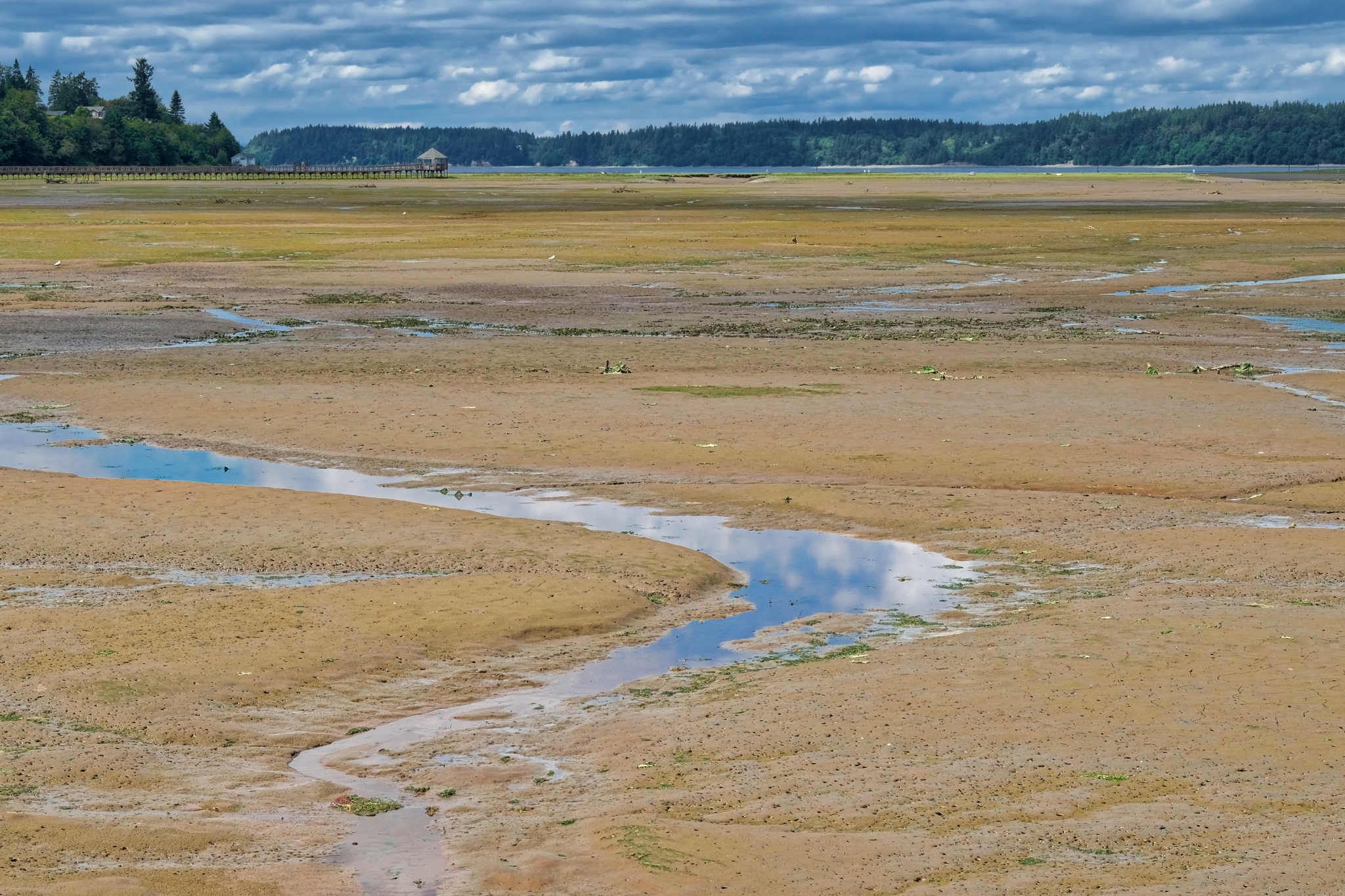 On the other side of the walkway was a vista across vast mud flats . . . loaded with very interesting objects!
On the other side of the walkway was a vista across vast mud flats . . . loaded with very interesting objects!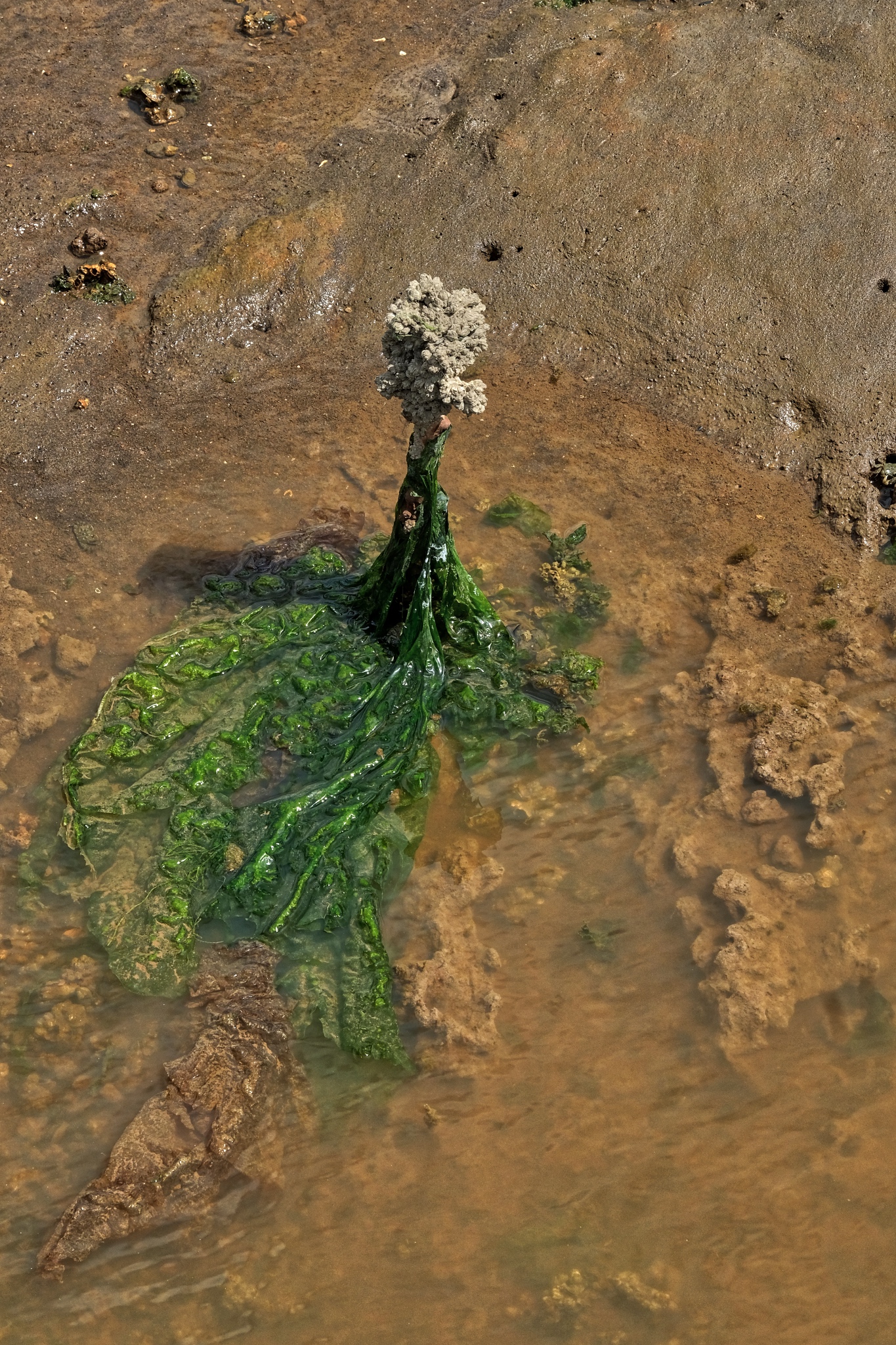 Strange things . . . . and, unfortunately all too many plastic bags!
Strange things . . . . and, unfortunately all too many plastic bags!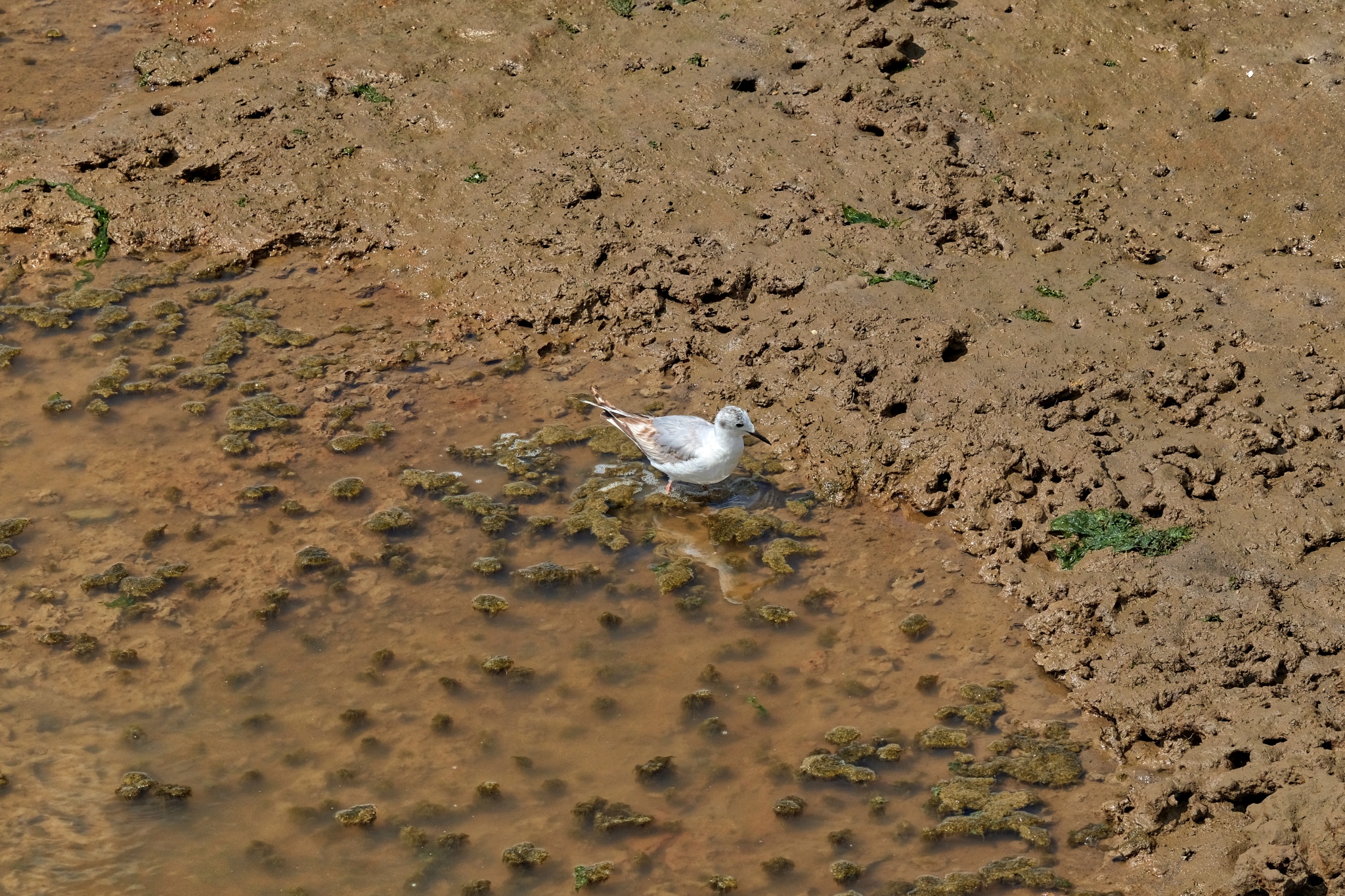 There were not as many birds as I somehow had expected . . . but there were birds.
There were not as many birds as I somehow had expected . . . but there were birds.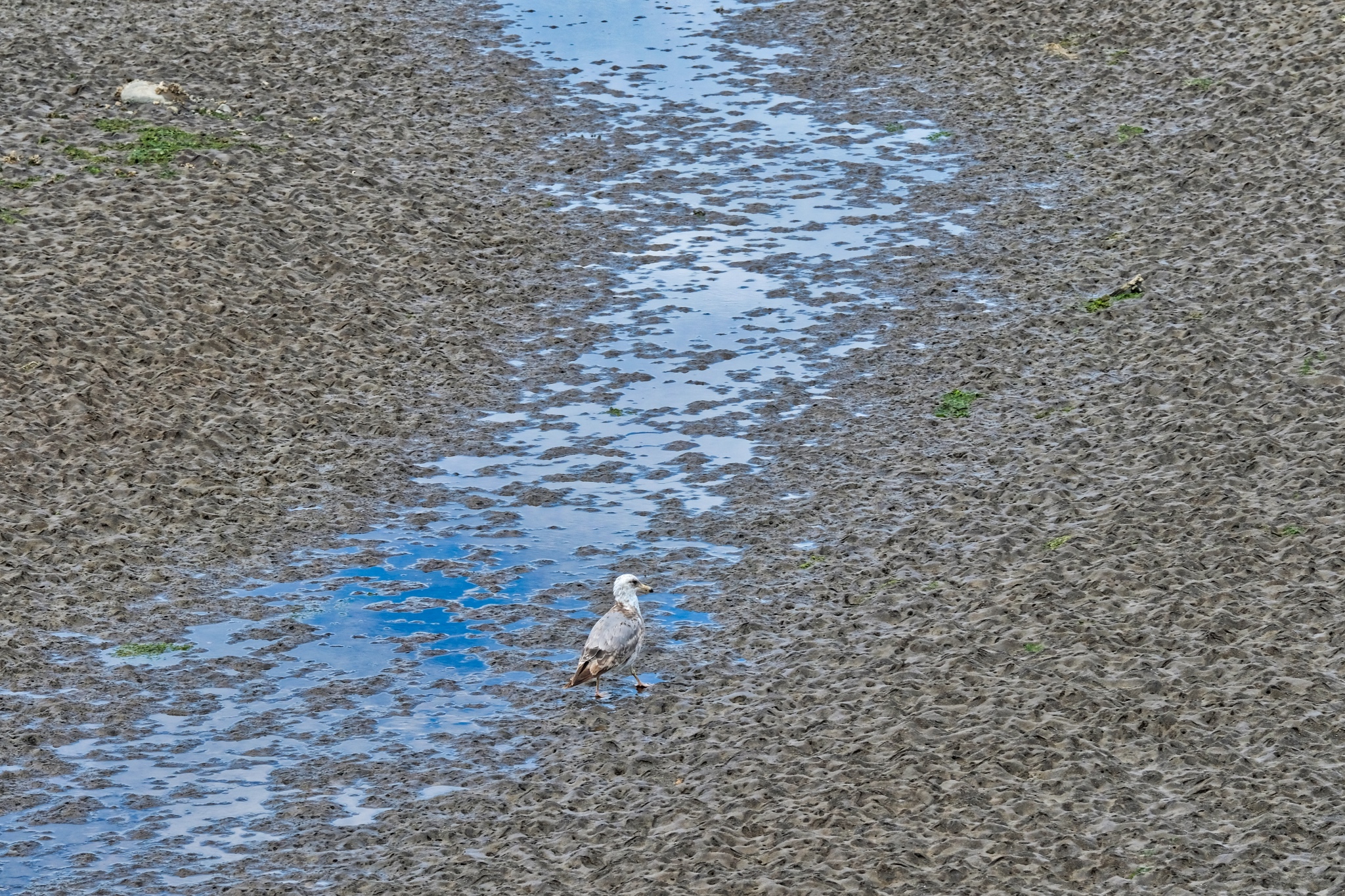 A gull loitering in the muddy estuary . . .
A gull loitering in the muddy estuary . . . 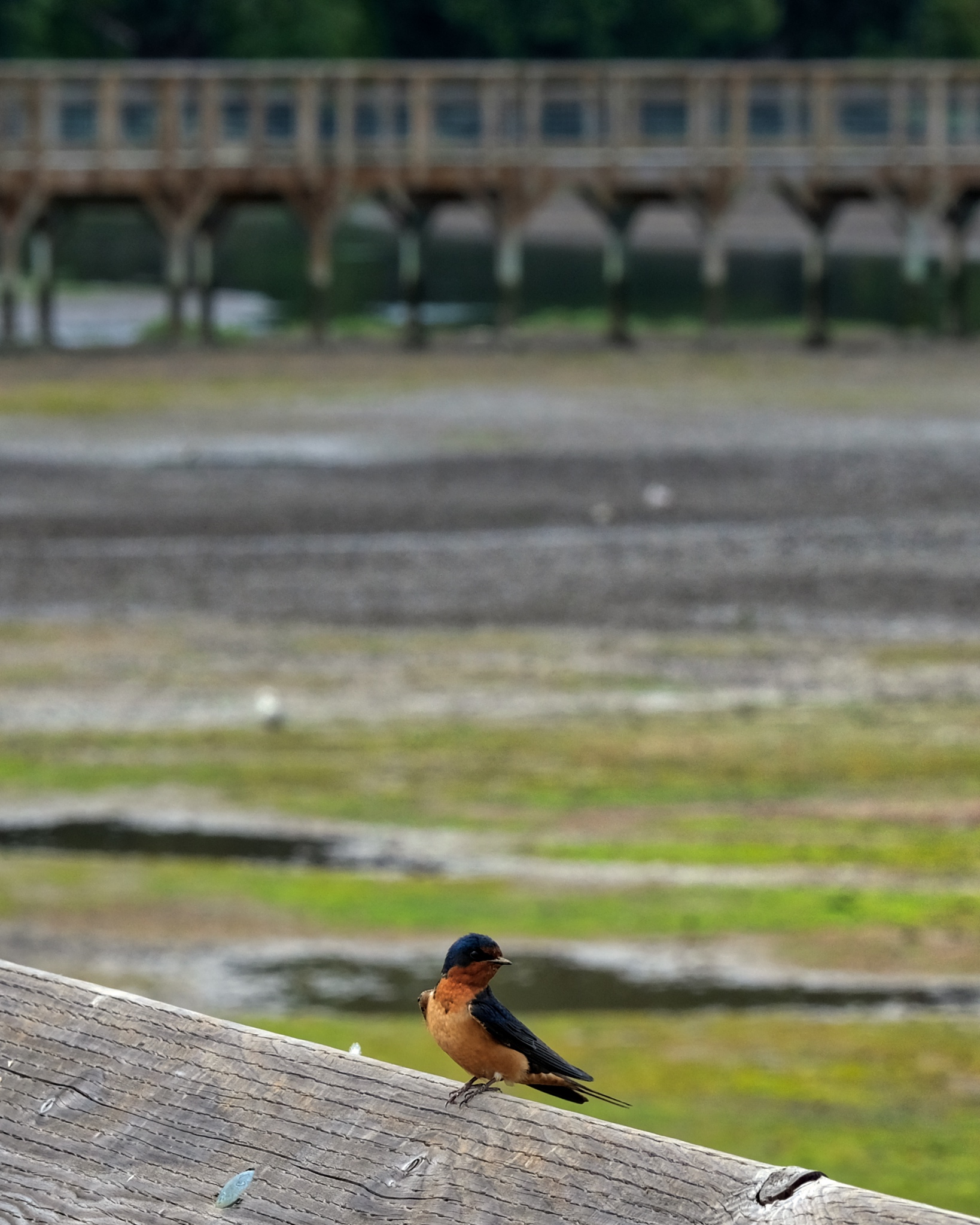 A friendly little fellow!
A friendly little fellow!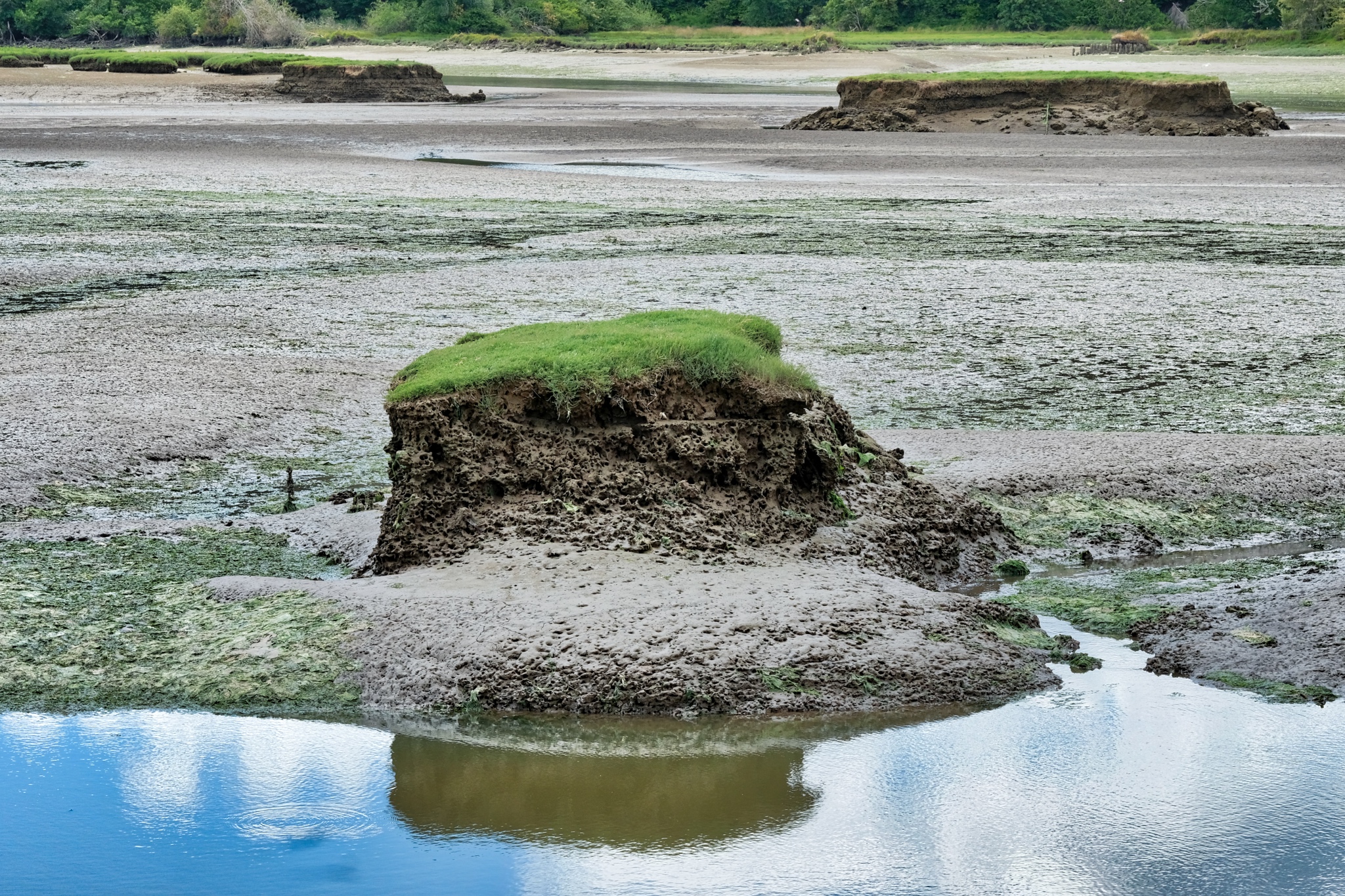 Evidence of sea level rise: the old level of the fields and 'dry' flats are eroding away with only a few small 'islands' of the old land level left. Only a few inches of sea level rise can cause this kind of erosion of wetlands.
Evidence of sea level rise: the old level of the fields and 'dry' flats are eroding away with only a few small 'islands' of the old land level left. Only a few inches of sea level rise can cause this kind of erosion of wetlands.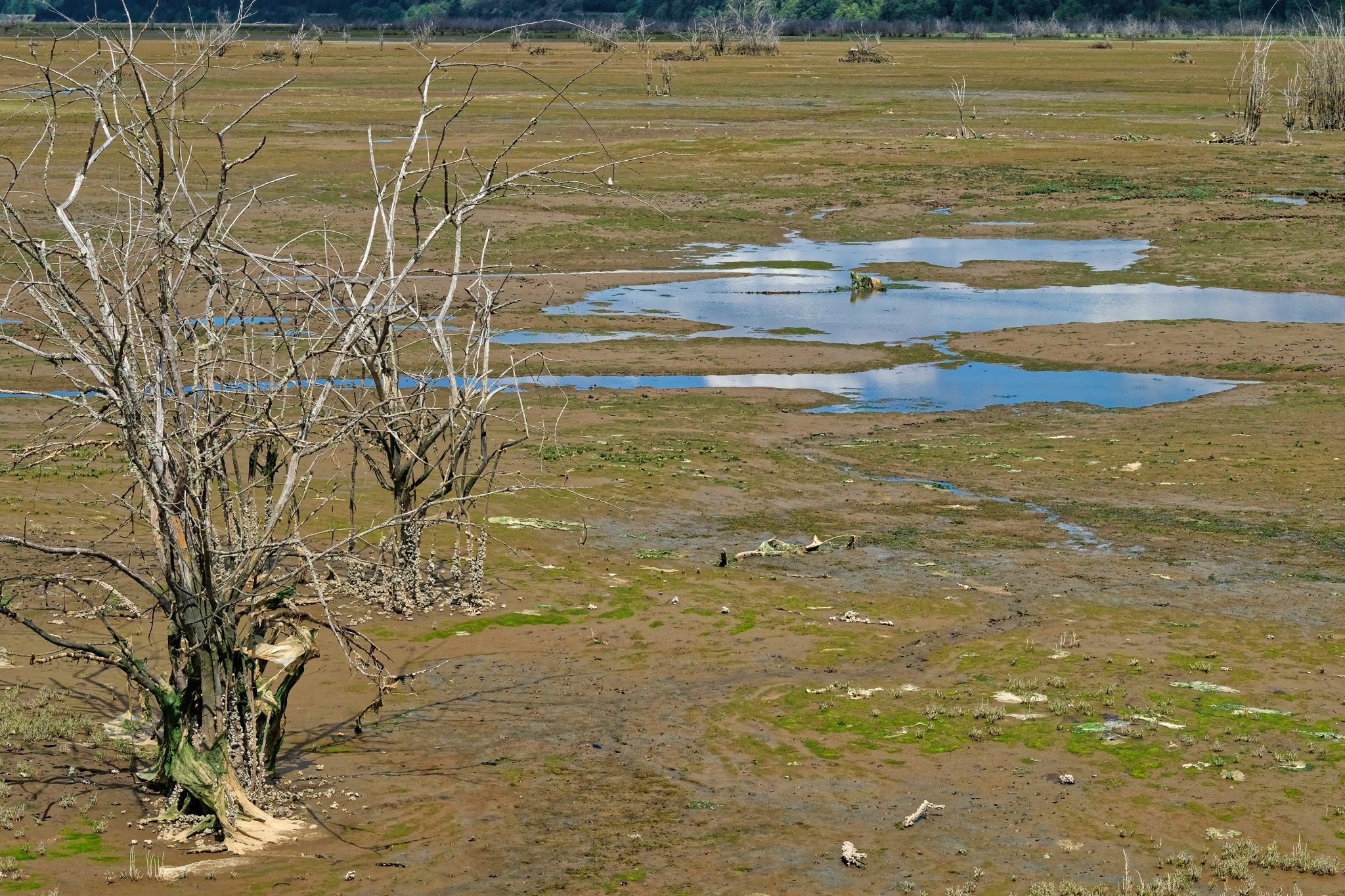 Sea water inundation into previously 'dry' areas.
Sea water inundation into previously 'dry' areas.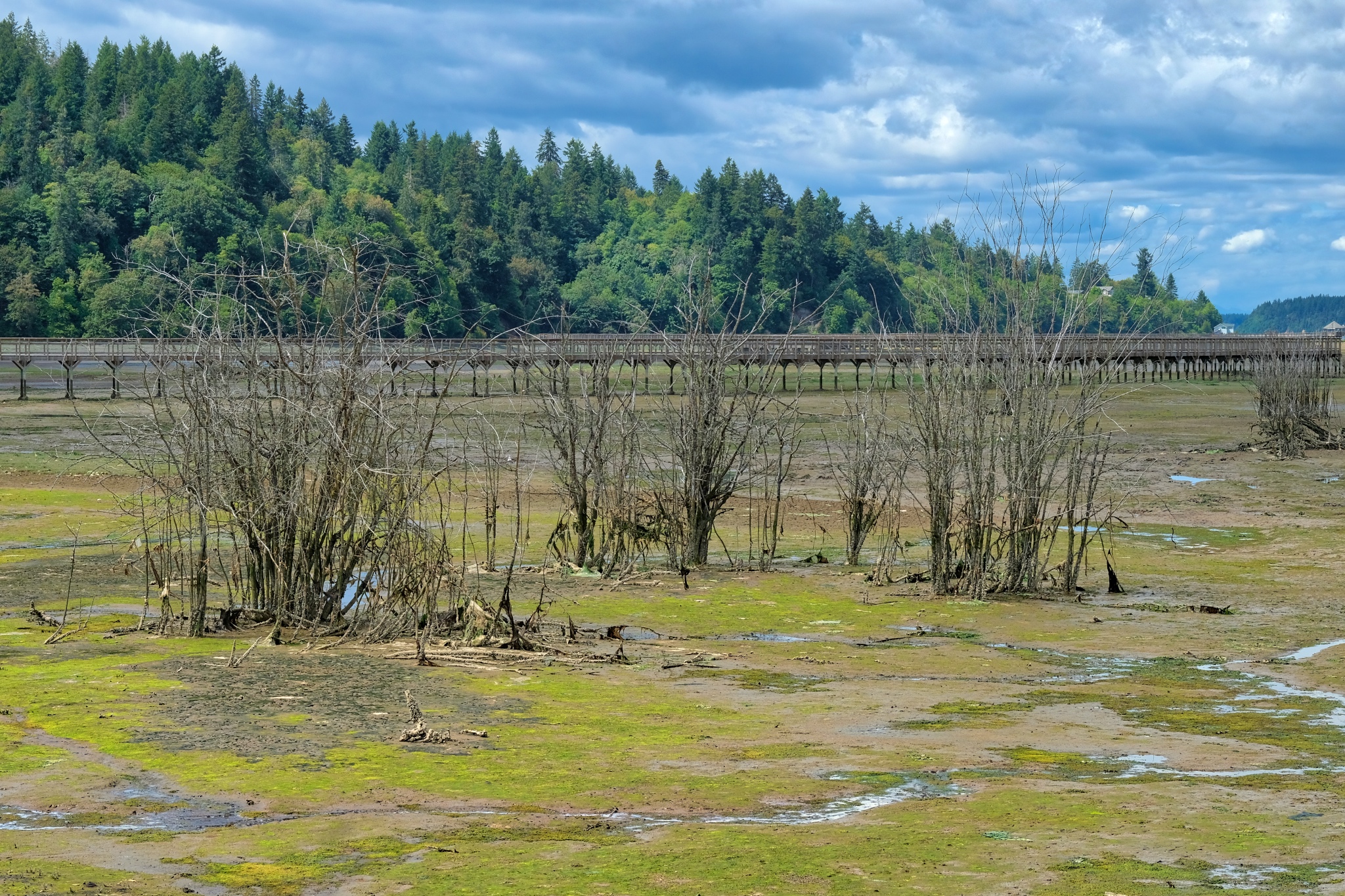 A new ecology is beginning to develop.
A new ecology is beginning to develop.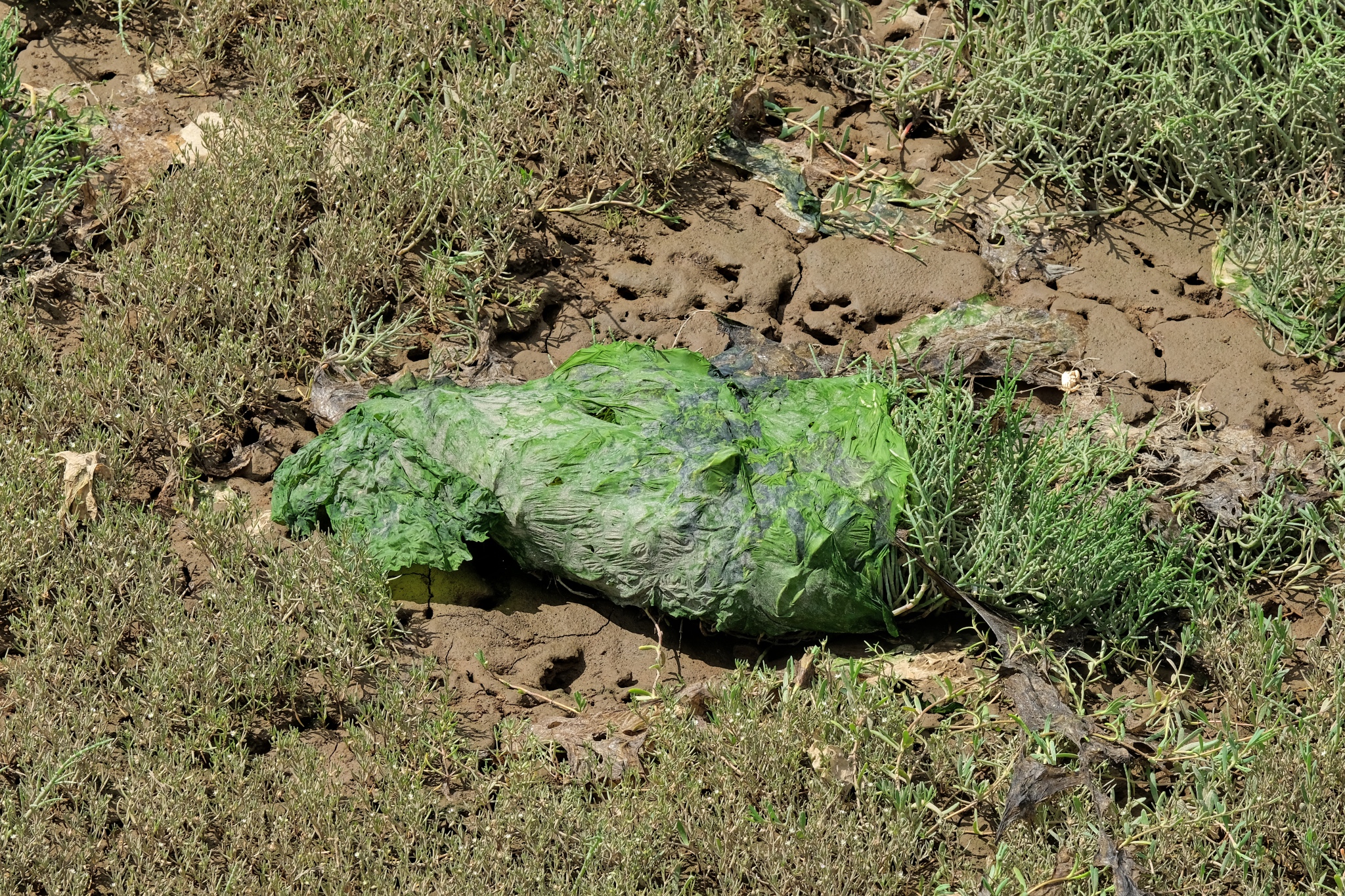 Altogether too much plastic. The Human Being!!!
Altogether too much plastic. The Human Being!!! Here and there were sand bag earthworks to direct the drainage flow under the walkway to the Nisqually River.
Here and there were sand bag earthworks to direct the drainage flow under the walkway to the Nisqually River.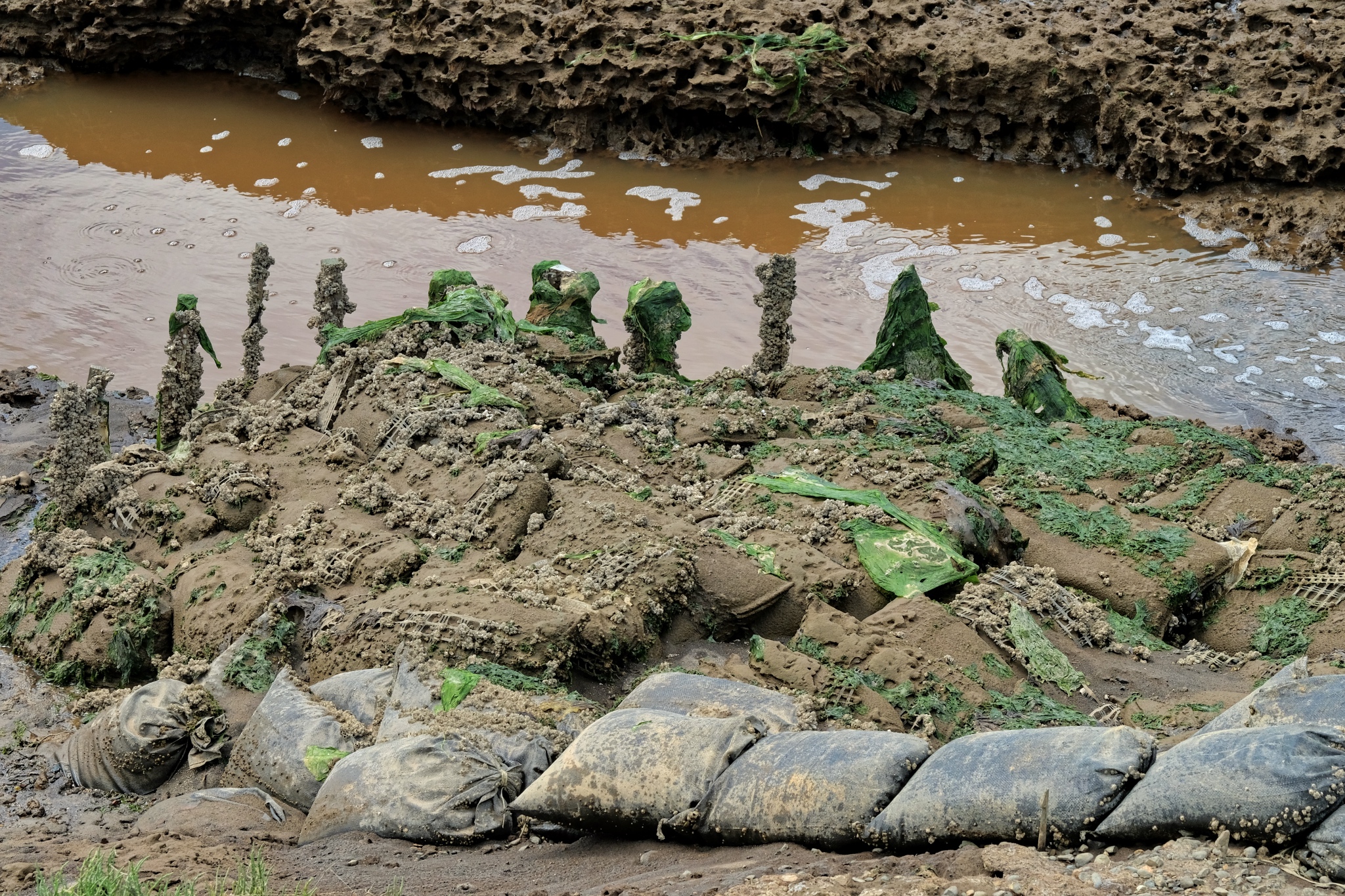 I imagine this water redirection effort to save the walkway is a never-ending chore.
I imagine this water redirection effort to save the walkway is a never-ending chore. Stumps washed down the river when it raged in winter.
Stumps washed down the river when it raged in winter.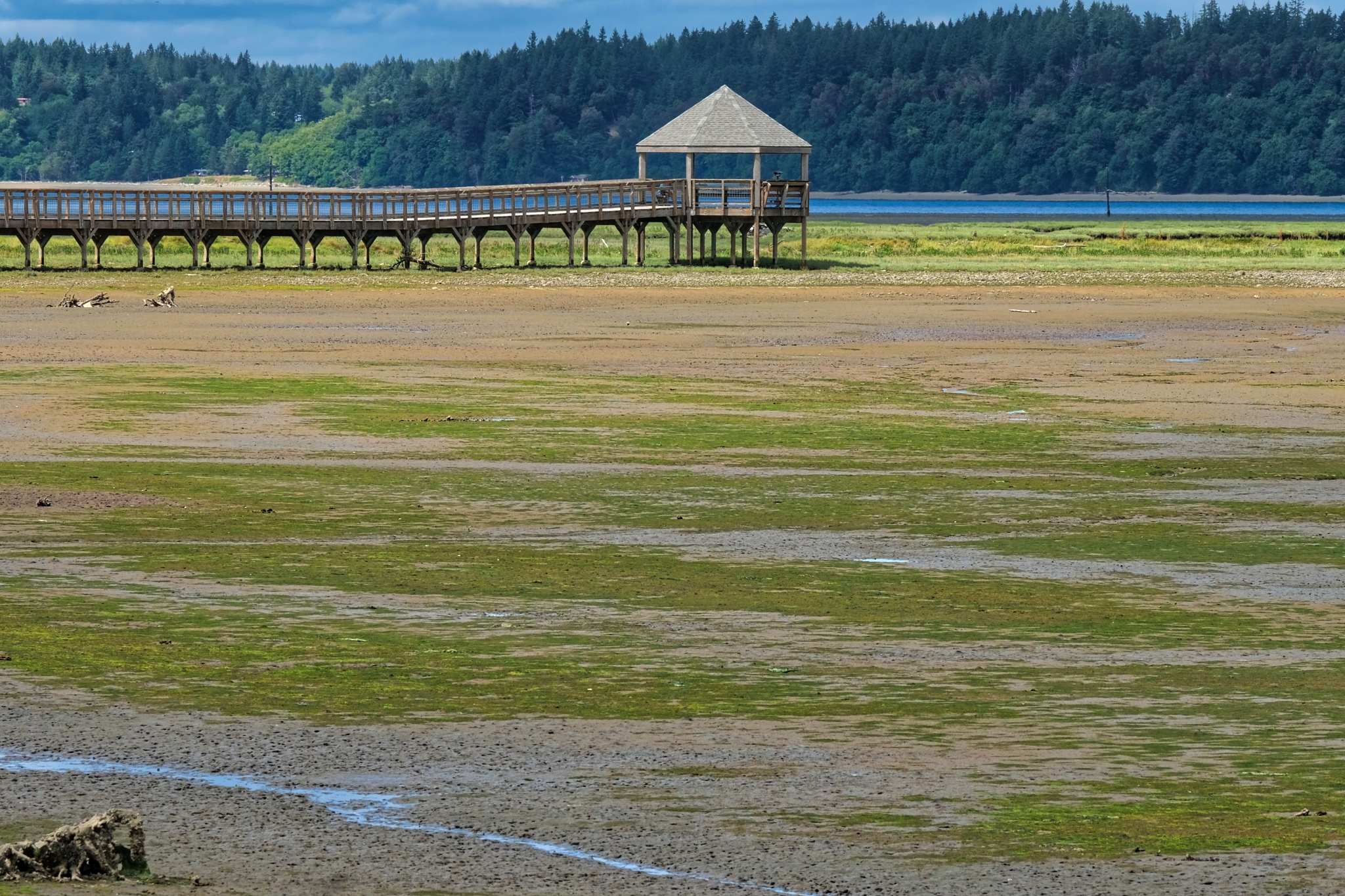 My ultimate goal, and the terminus of the walkway, was several miles from dry land!
My ultimate goal, and the terminus of the walkway, was several miles from dry land!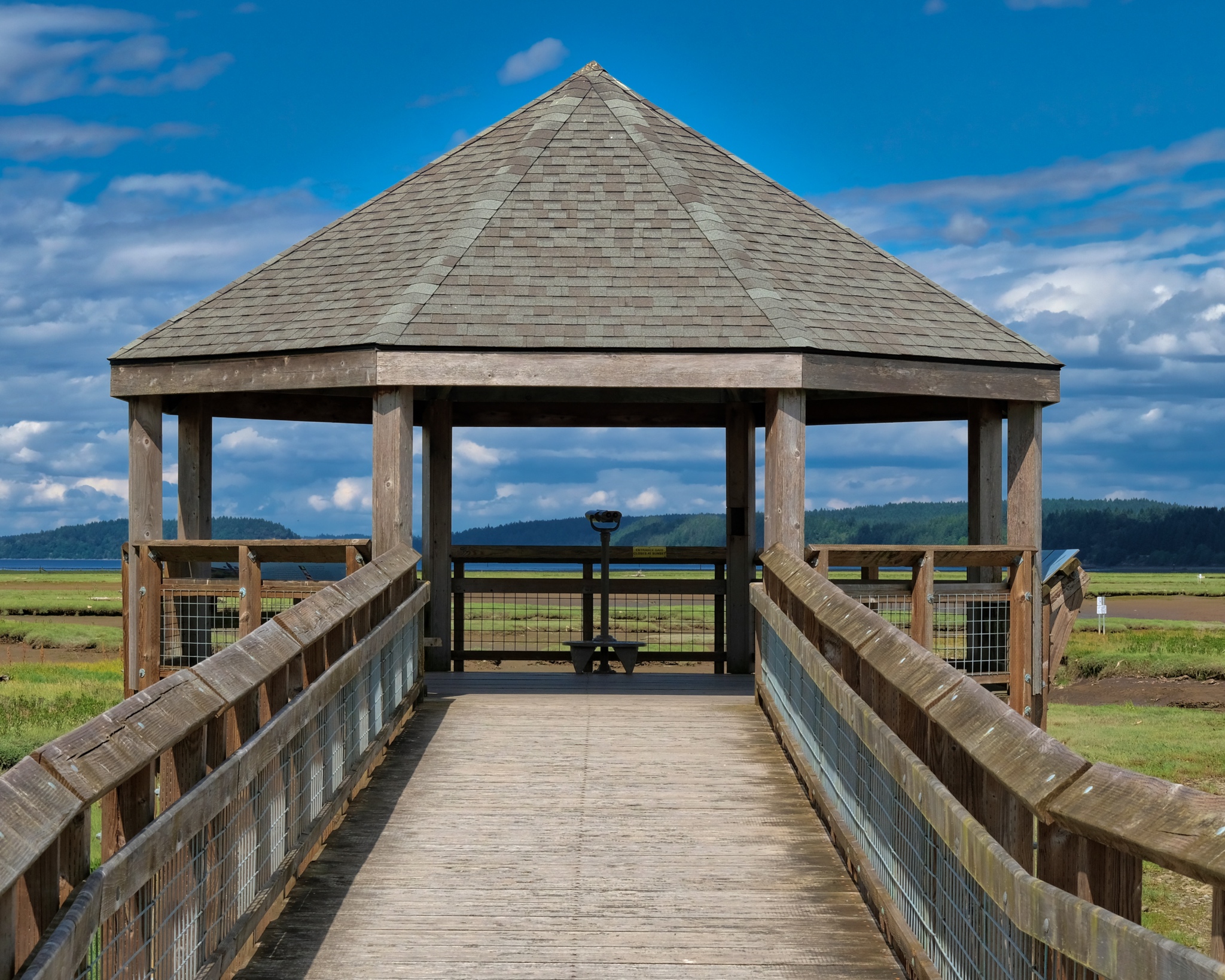 The final observation pavilion was not too far from the actual Puget Sound.
The final observation pavilion was not too far from the actual Puget Sound.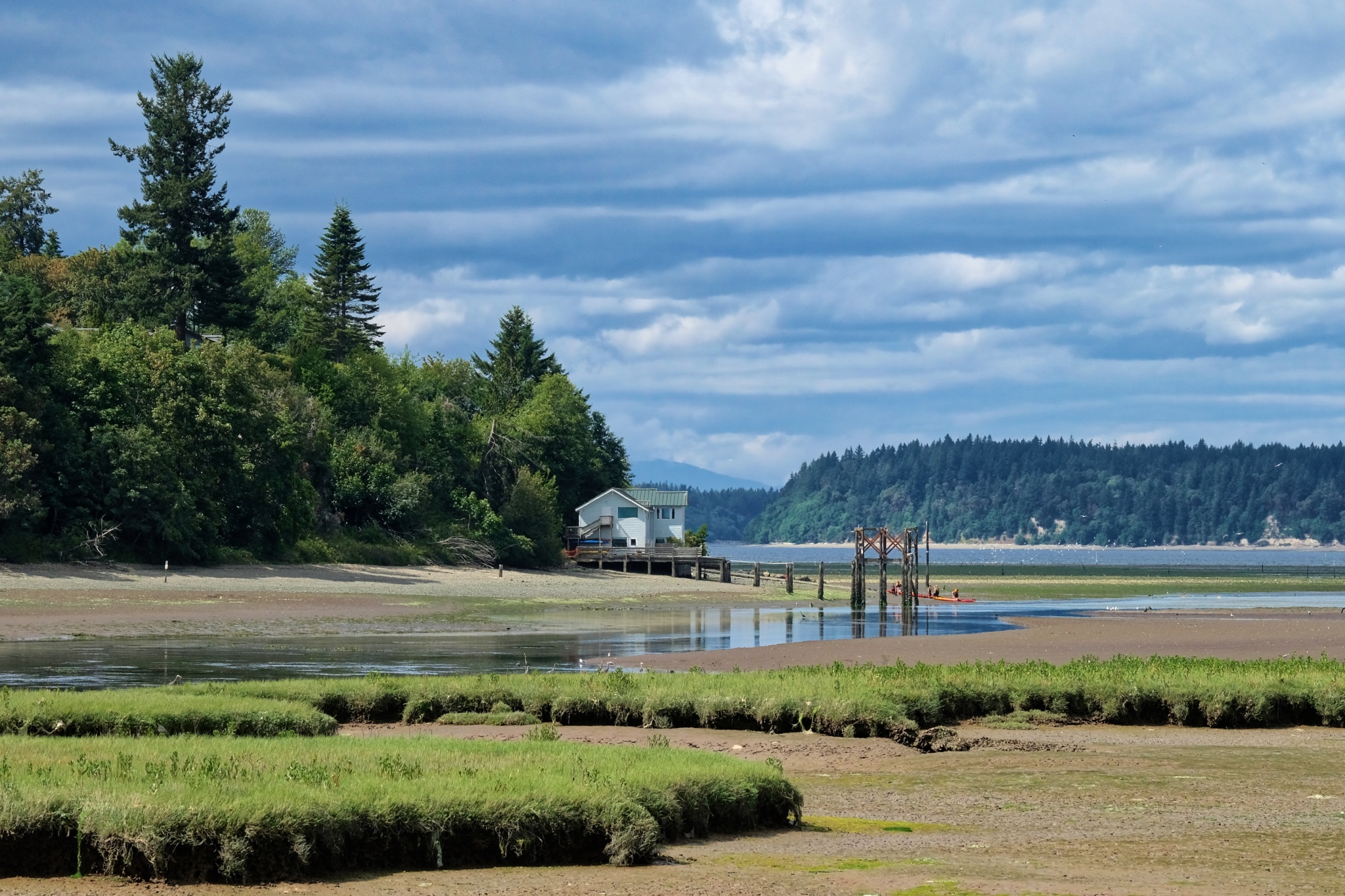
The view from the last observation pavilion.
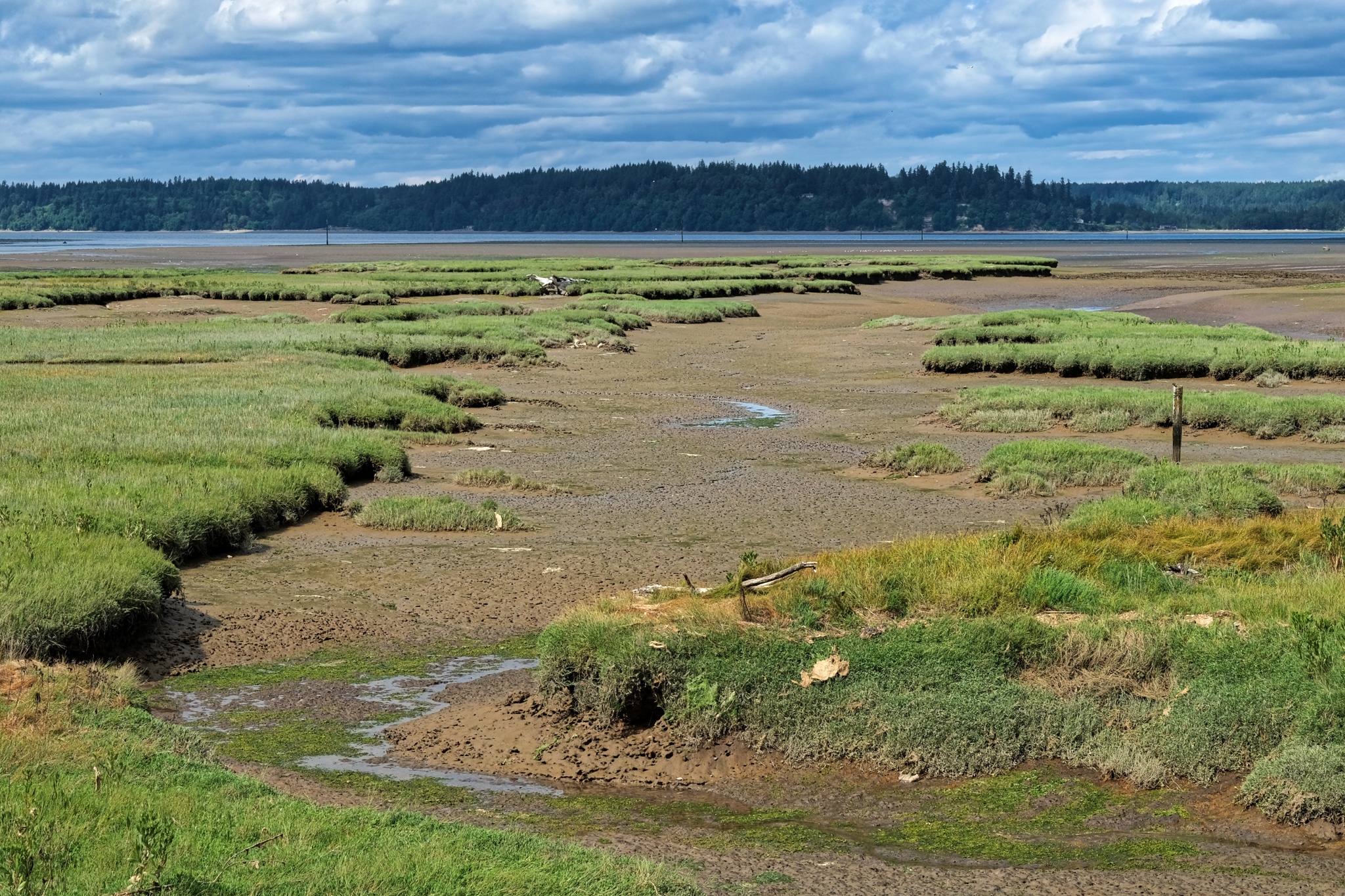 Puget Sound in the background.
Puget Sound in the background.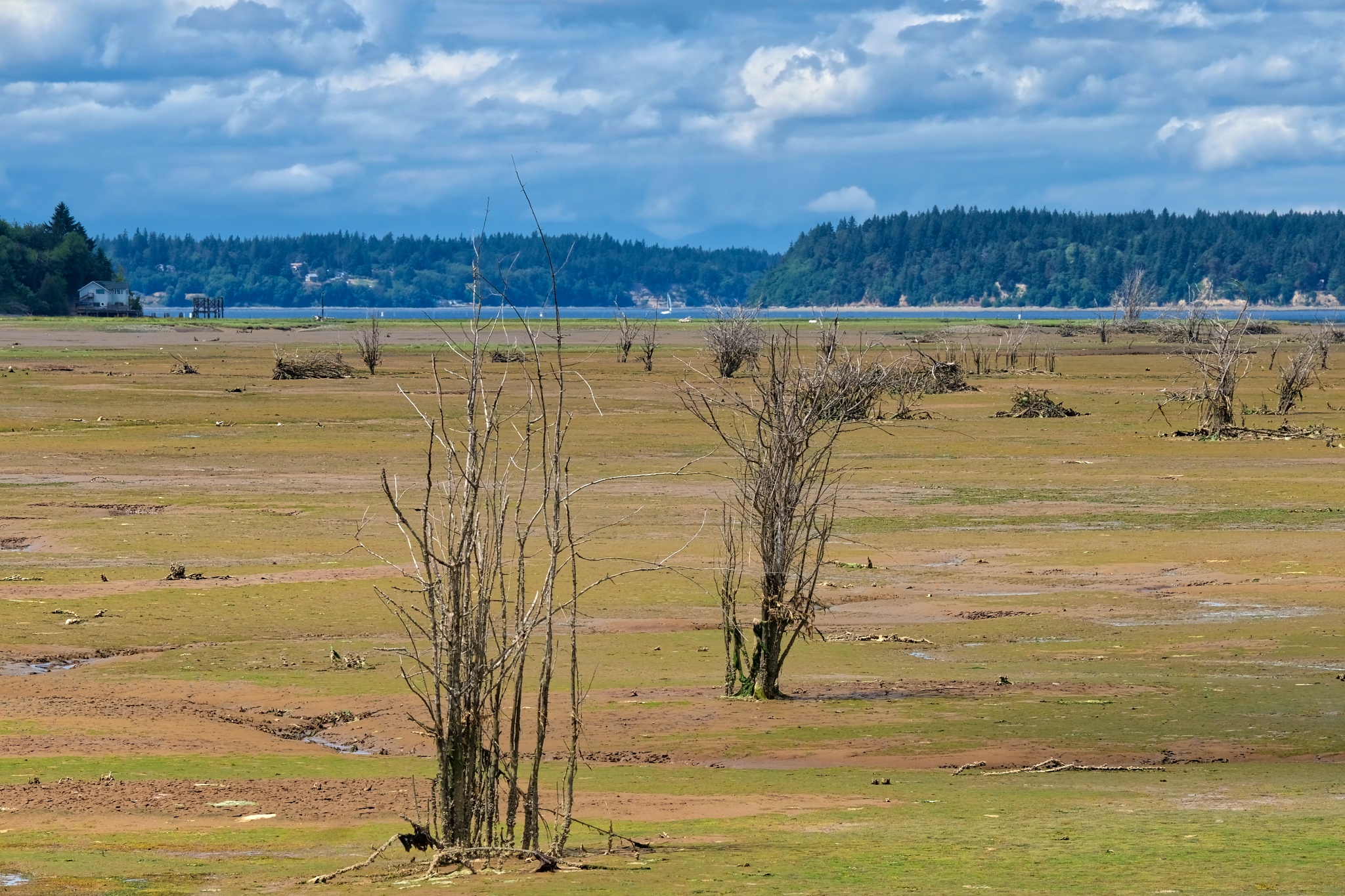 It was a beautiful day to be out in the world . . . making the most of the supramundane.
It was a beautiful day to be out in the world . . . making the most of the supramundane.Hot Rods!
 Wednesday, May 9, 2018 at 6:51AM
Wednesday, May 9, 2018 at 6:51AM 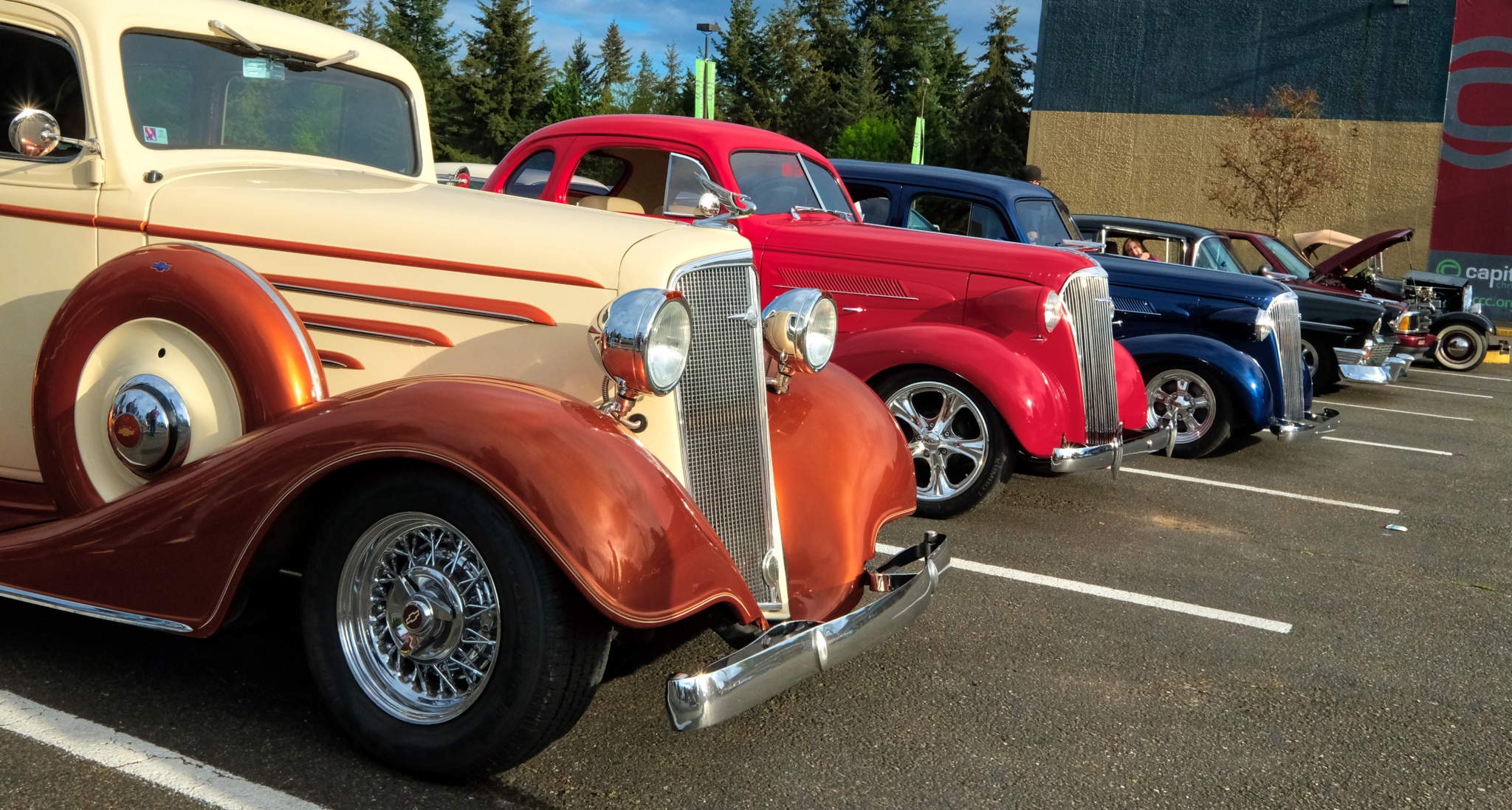
I had the pleasure this past week-end to take a 1955 Chevy street rod to two different 'drive in' car shows in Olympia and Lacey, Washington State, USA.
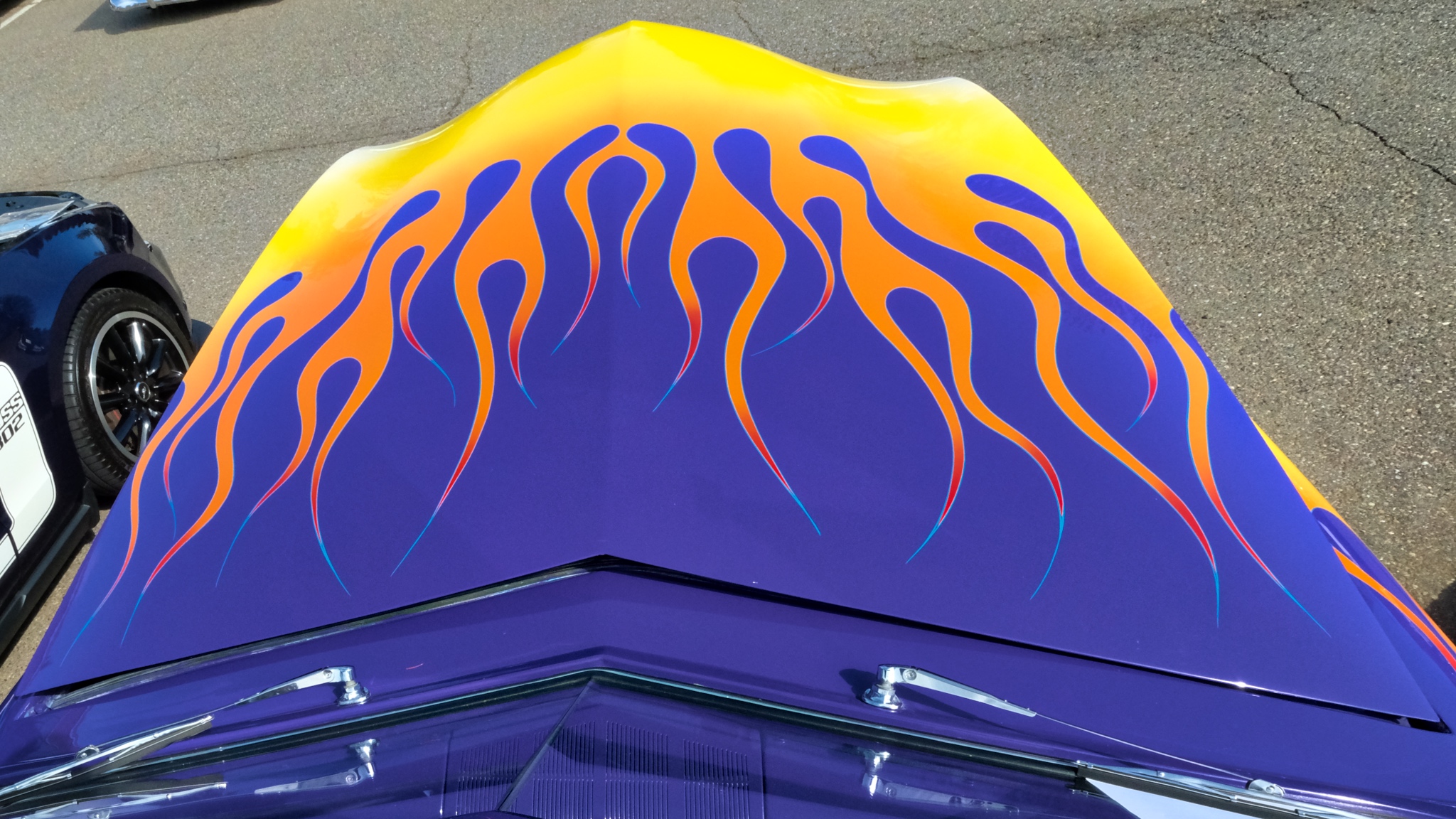
The Hot Rod is a distinctly American Art Form . . . stereotypically characterized by painted FLAMES.
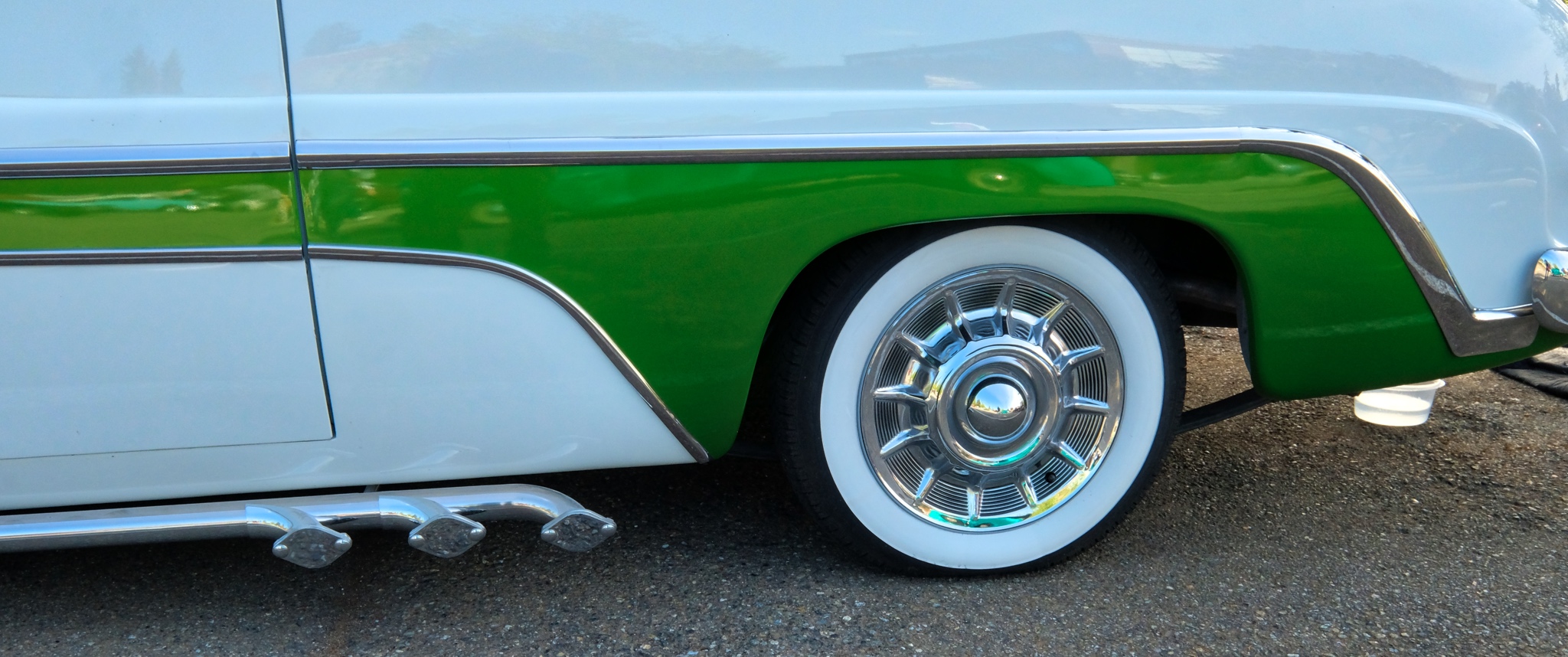
I saw many fine, and some famous, hot rods.
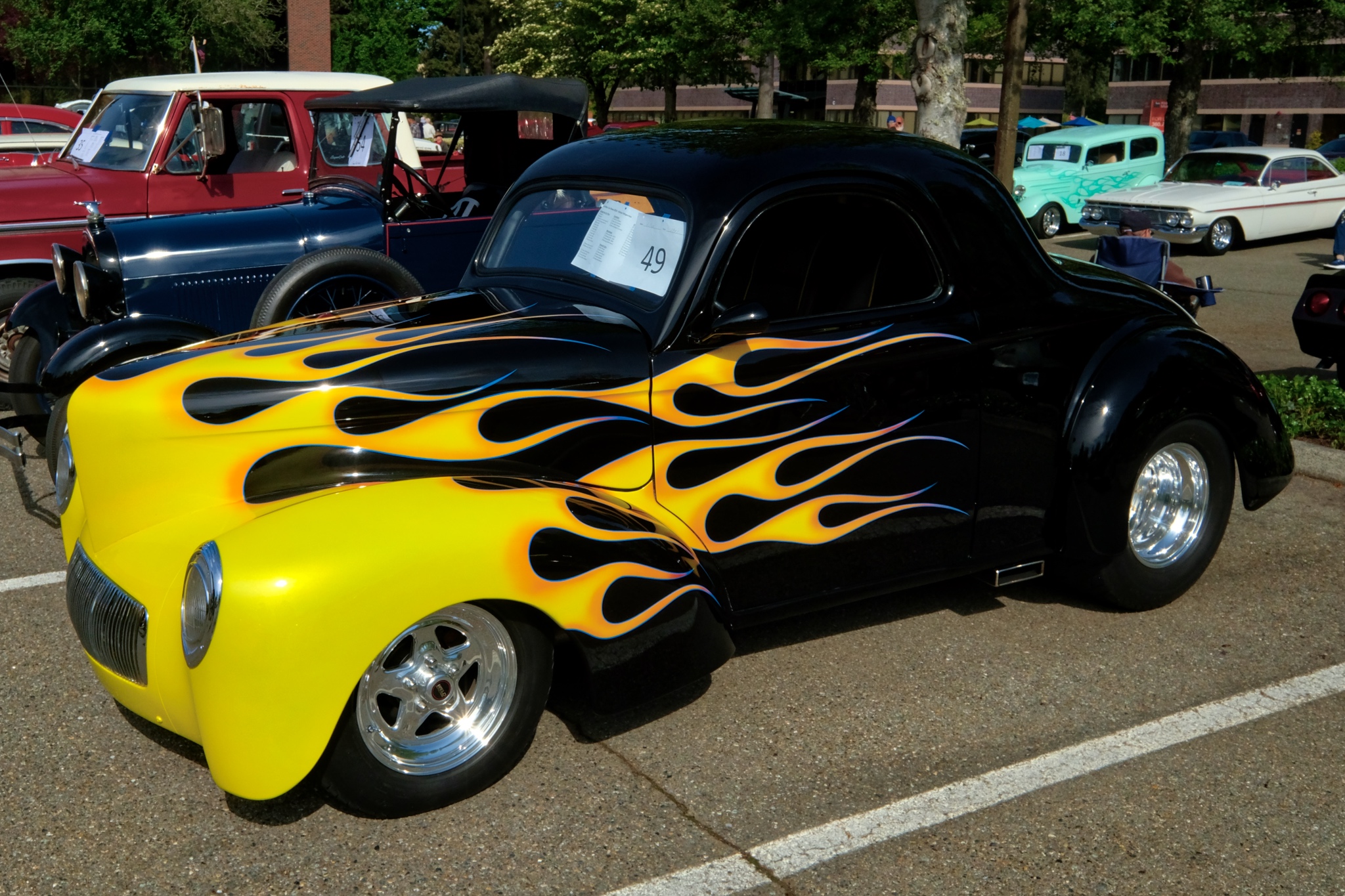
Wild 40 Willys coupe street rod . . . WOW!
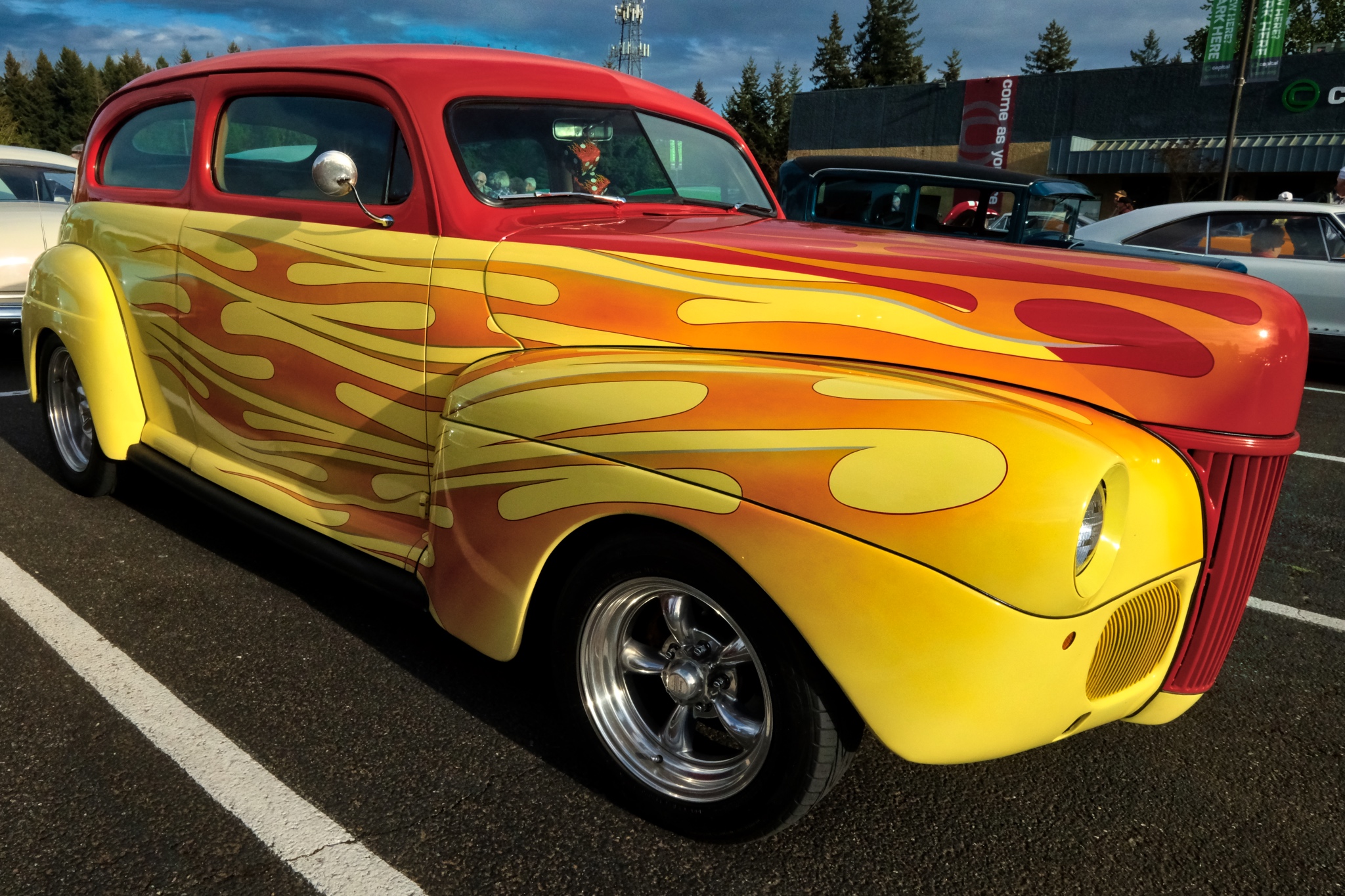
Scalloped flames on a 1939 Ford Hot Rod.
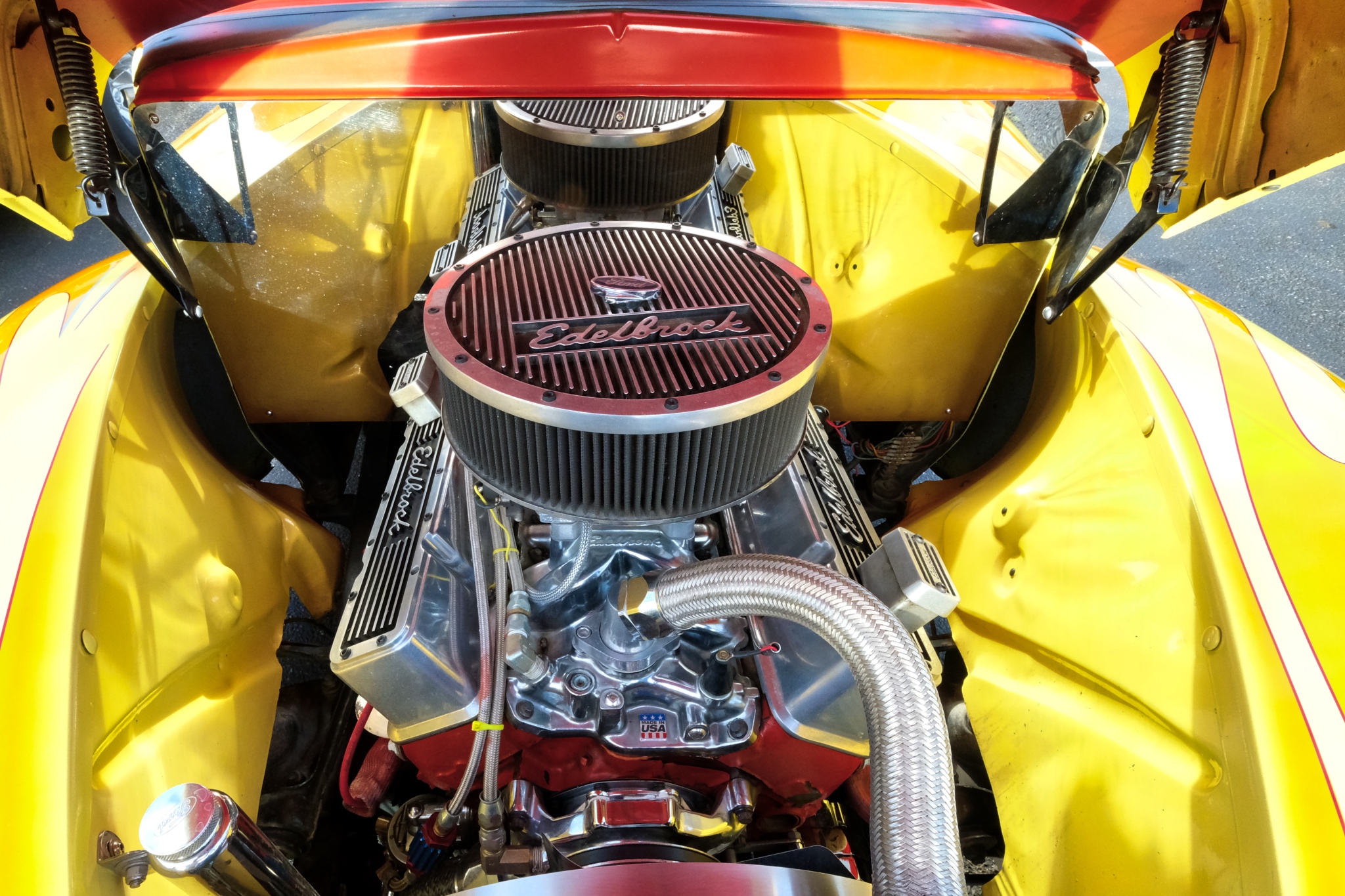
The '1939 Ford had a beautifully detailed, polished and painted engine. I liked the mirror firewall.
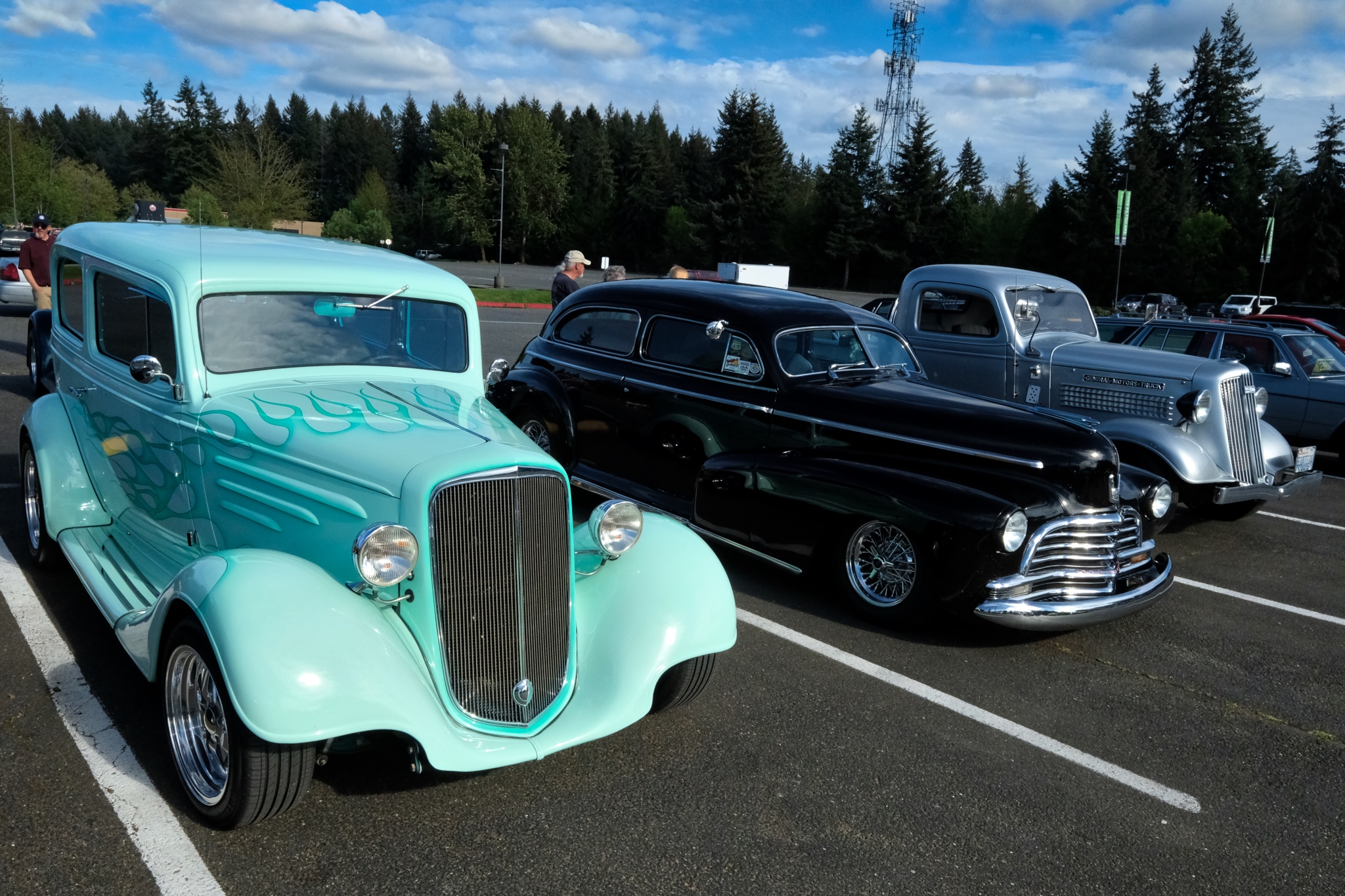
My friend and neighbor, Ken, had two hot rods at both shows: a flamed mint green 1935 Chevrolet and a black 1946 Chevrolet . . . both have 'chopped' tops.
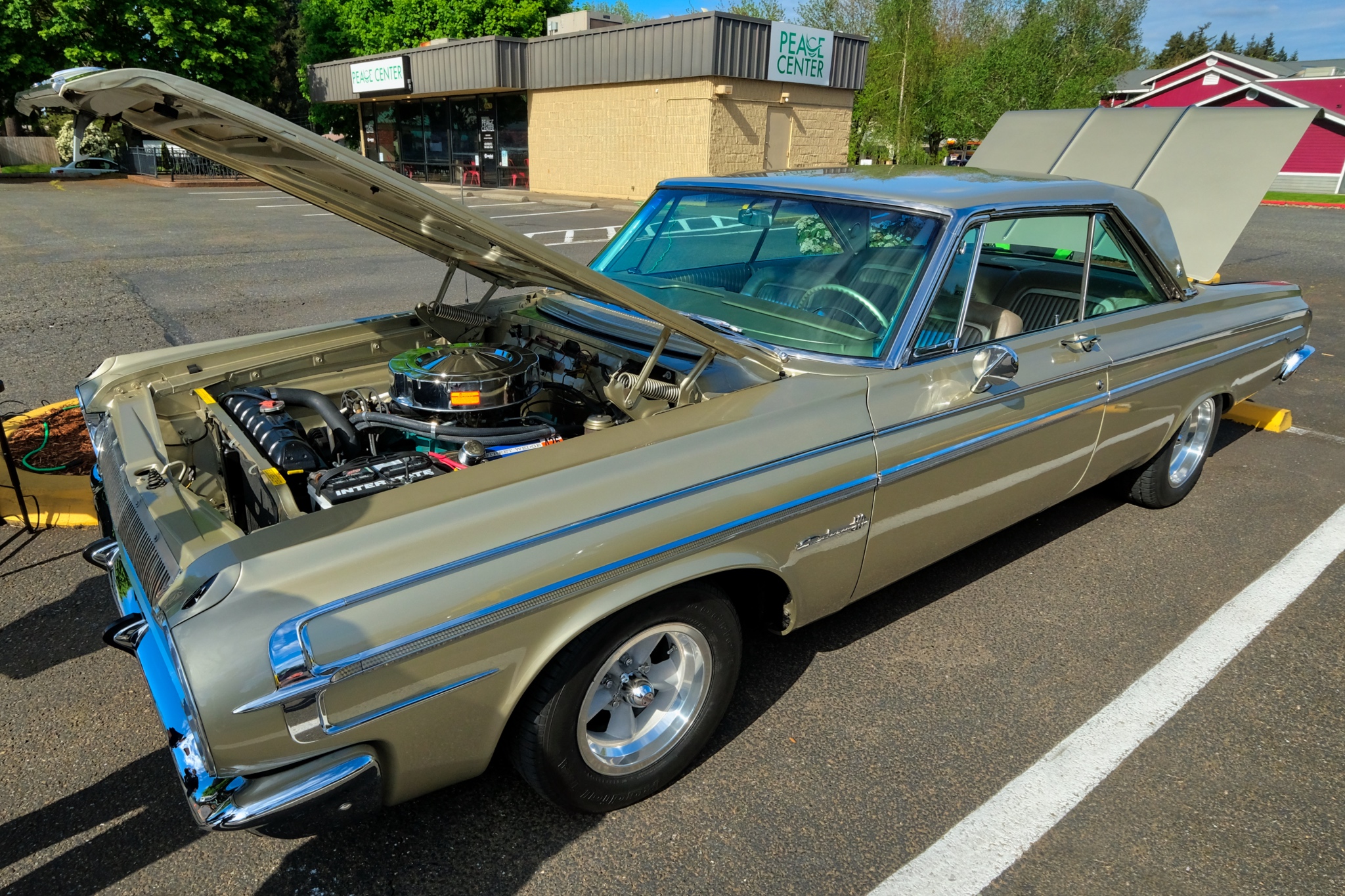
Among the traditional 'hot rods' were some very rare 'muscle cars' and more recent vintage 'street machines.' This is a 1 of 31 made "Street 426" Dodge Polara . . . looking like new.
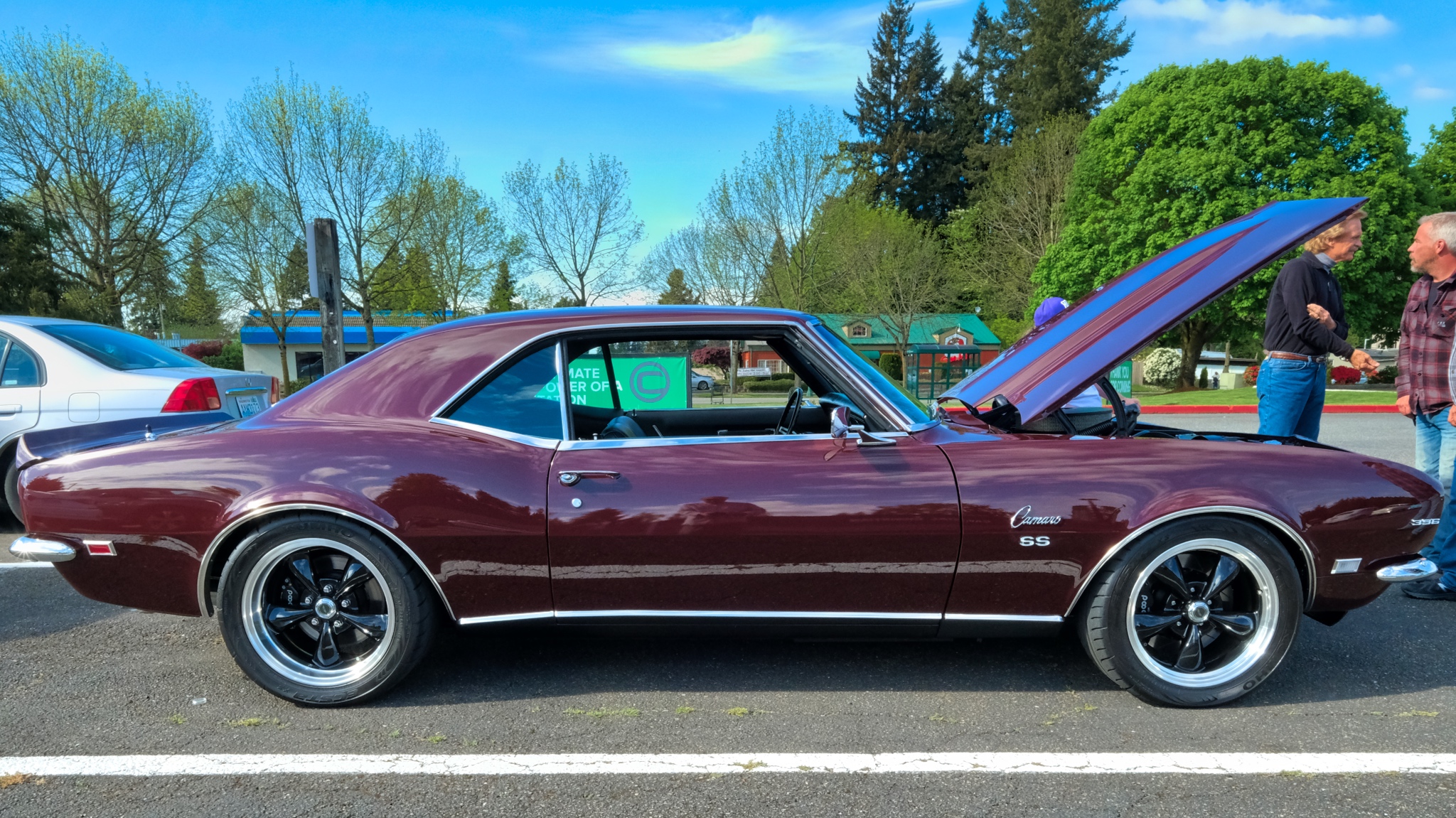
For Sale - only US$100,000.oo! Full new custom frame, new Corvette suspension, NEW steel body stampings, New interior and gauges, NEW all-aluminum 800hp big block engine and 6-speed transmission. Essentially a brand new 1967 Chevrolet Camero.
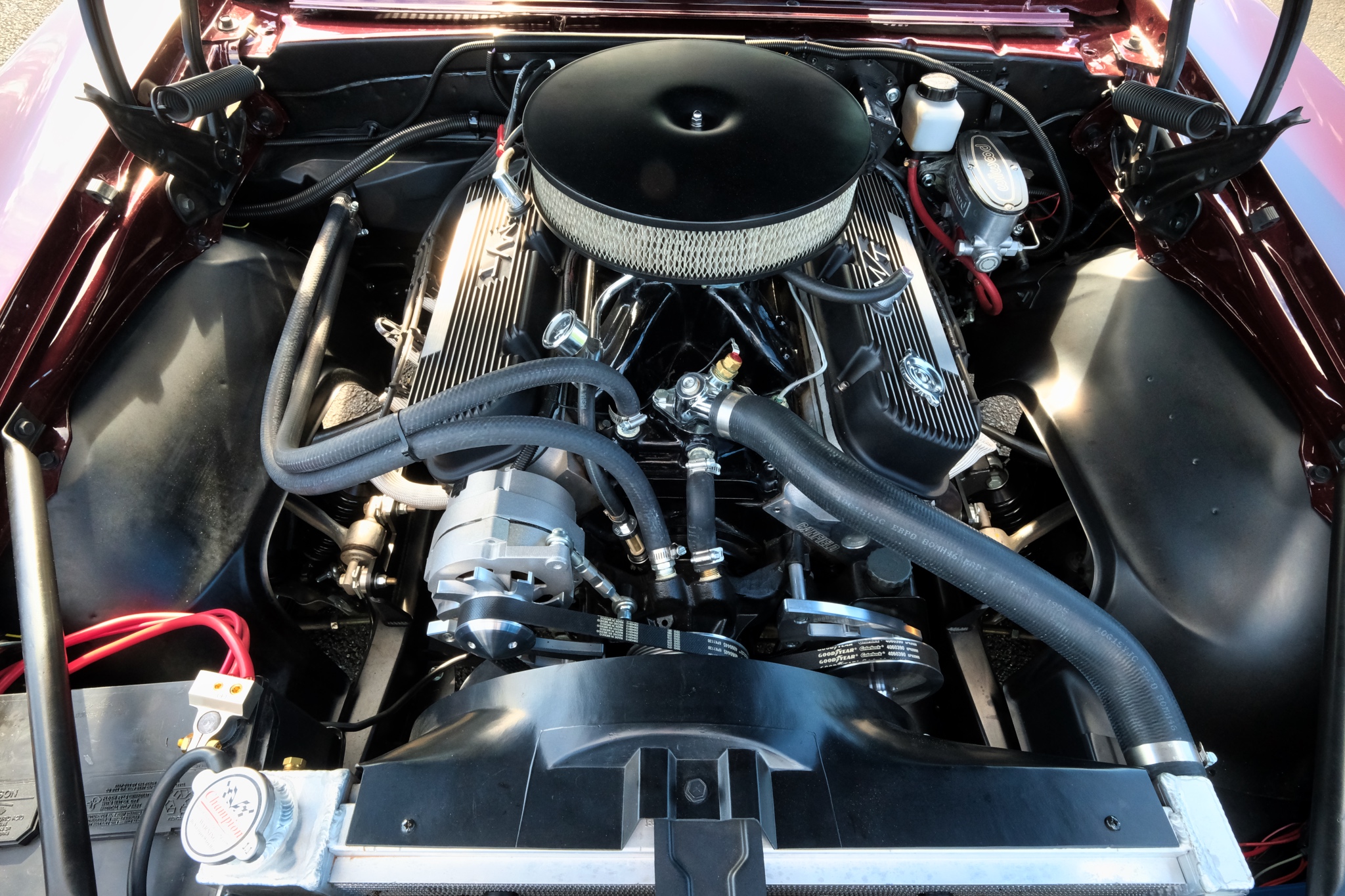
The engine, like everything else on the 'new' 1967 Camero, was spotless.
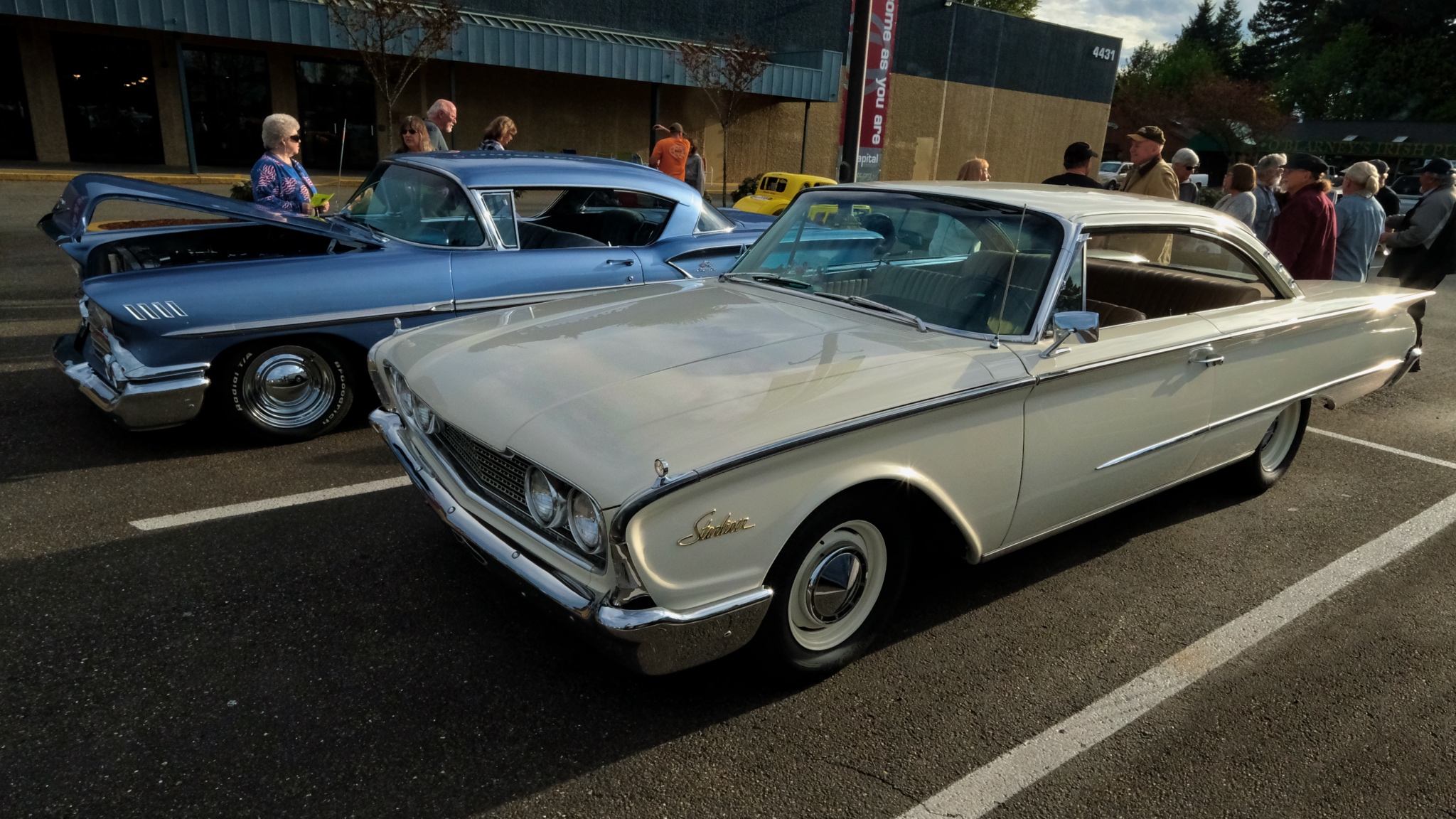
These are NOT restored standard cars. The Ford Starliner had a mega-horsepower engine and racing underpinnings. It is a Hot Rod in sheep's clothing . . . a classic 'sleeper'!
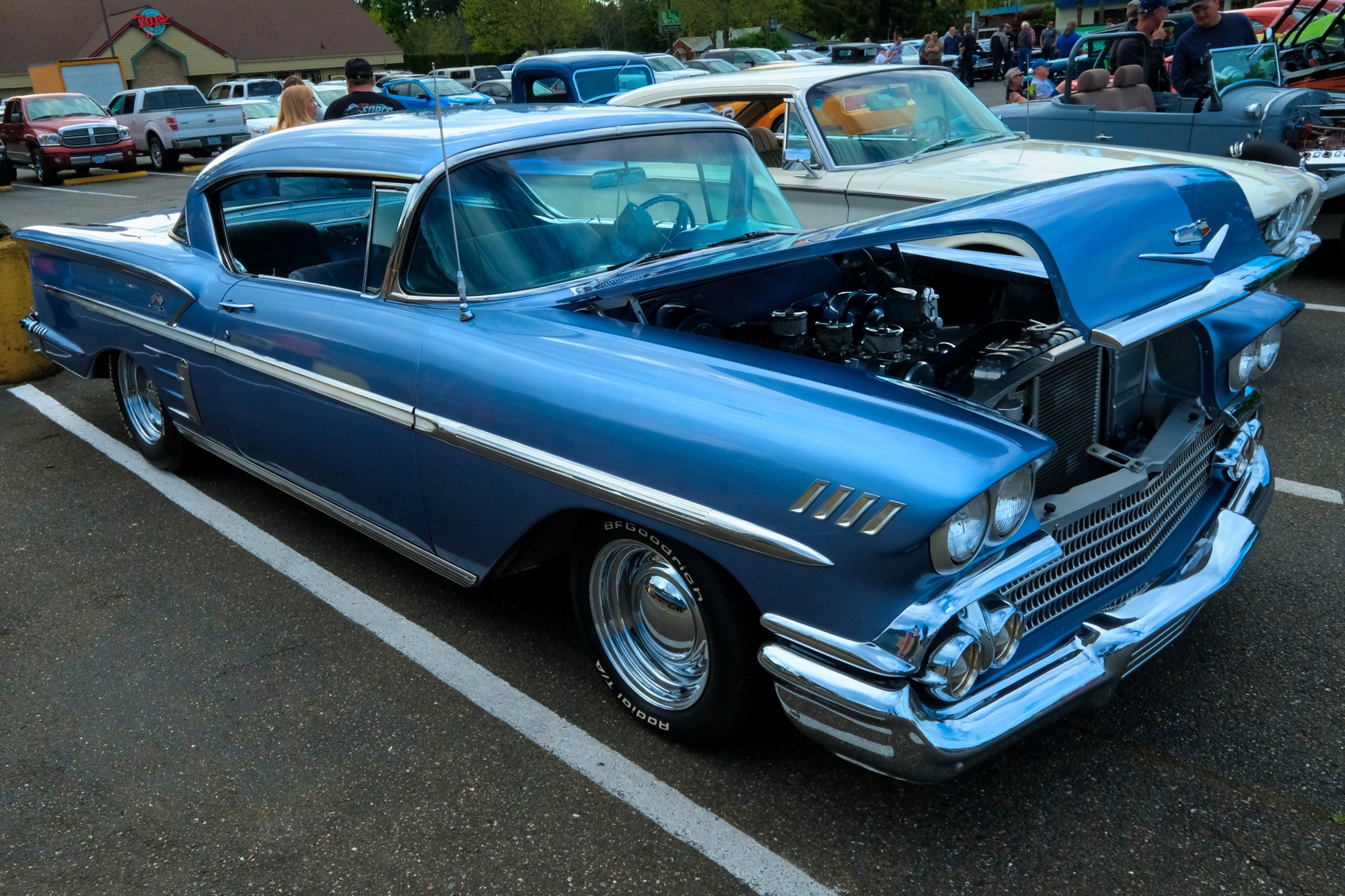
The nice thing about hot rod shows, and hot rodders in general, is that there are many different categories of modified cars present . . . and appreciated. Here a very rare 1958 348 cubic inch, three carburetor V8 . . . restored and modified.
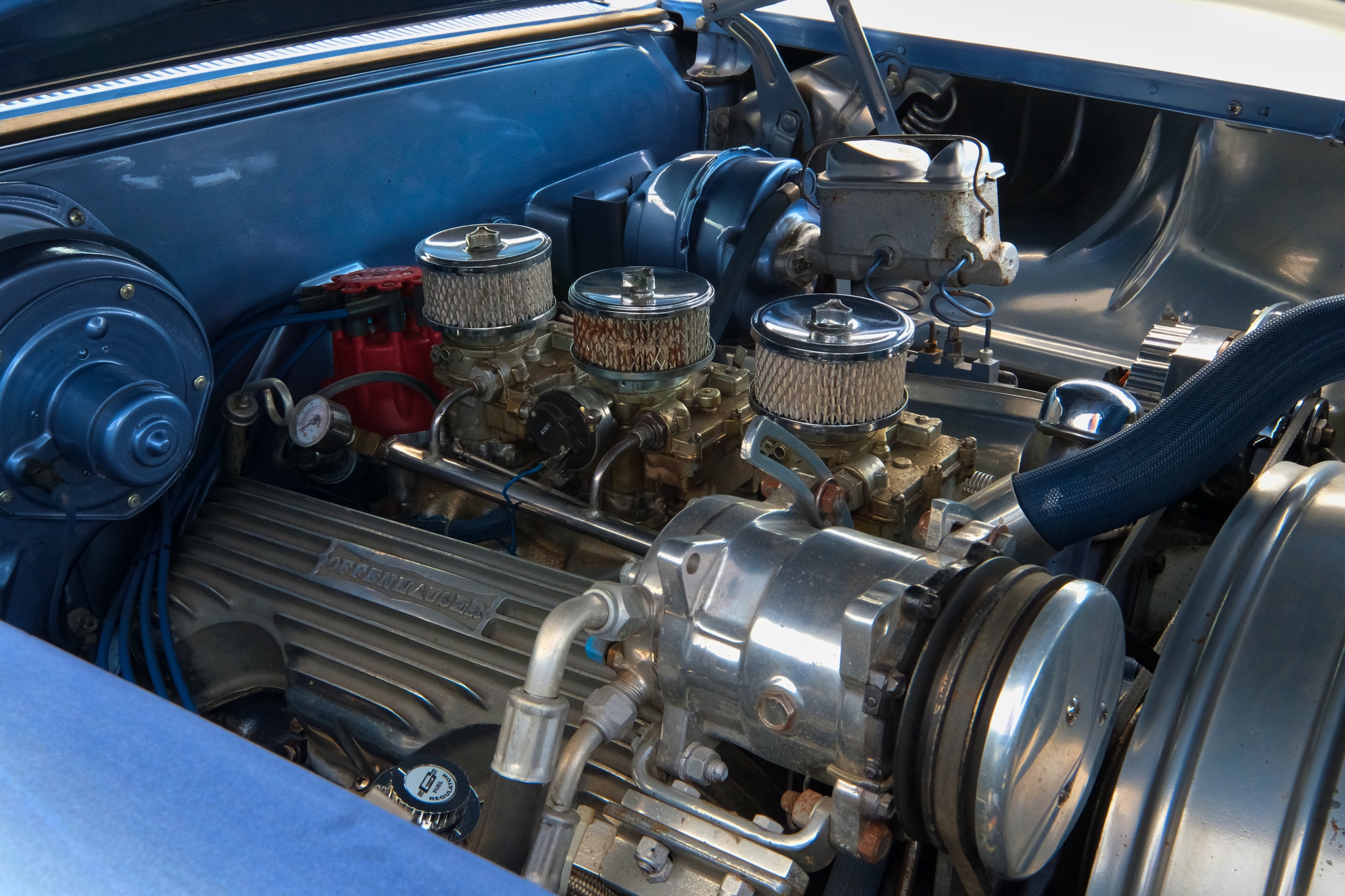
The 'tri-power' 348ci V8 in the 1958 Chevy (above). This car is a 'daily driver.'
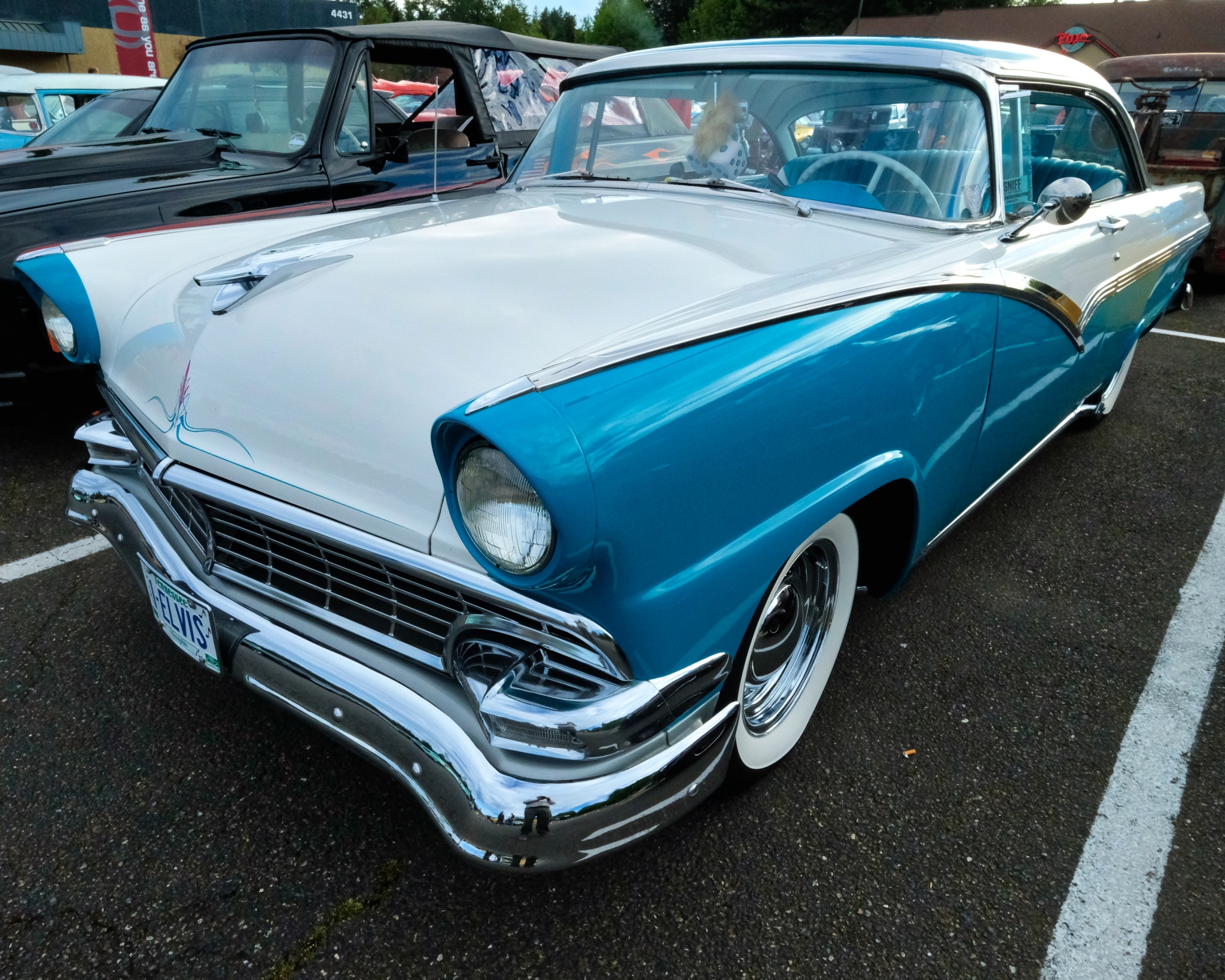
One of my favorite cars in either show: a 1956 Ford Fairlane. The owner was an 82 year old custom car upholsterer . . . and this car had a fantastic interior!
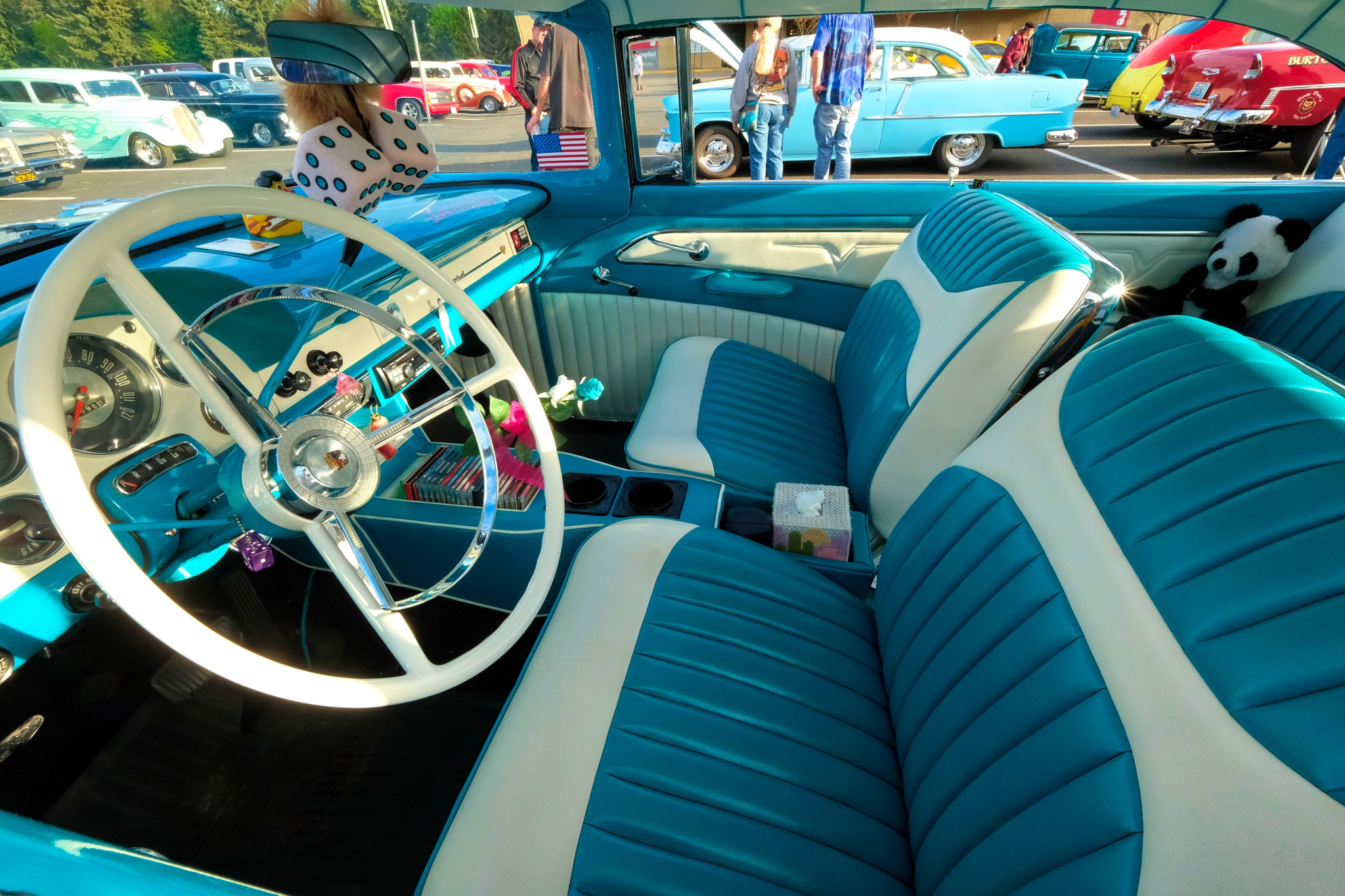
1956 Ford Fairlane custom interior . . . by owner.
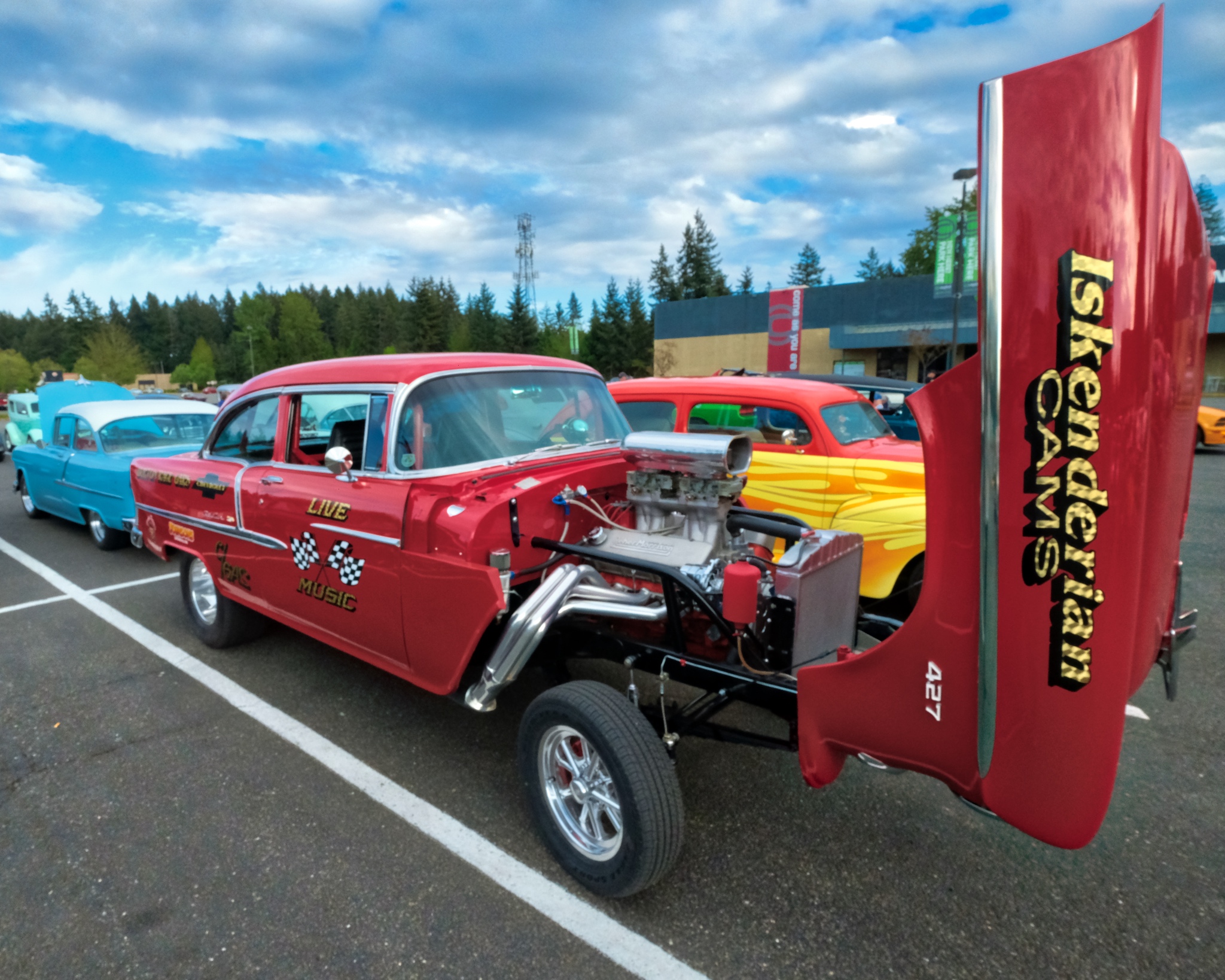
A 1955 Chevrolet done in the style of a 'Gasser' from an earlier era of championship drag racing.
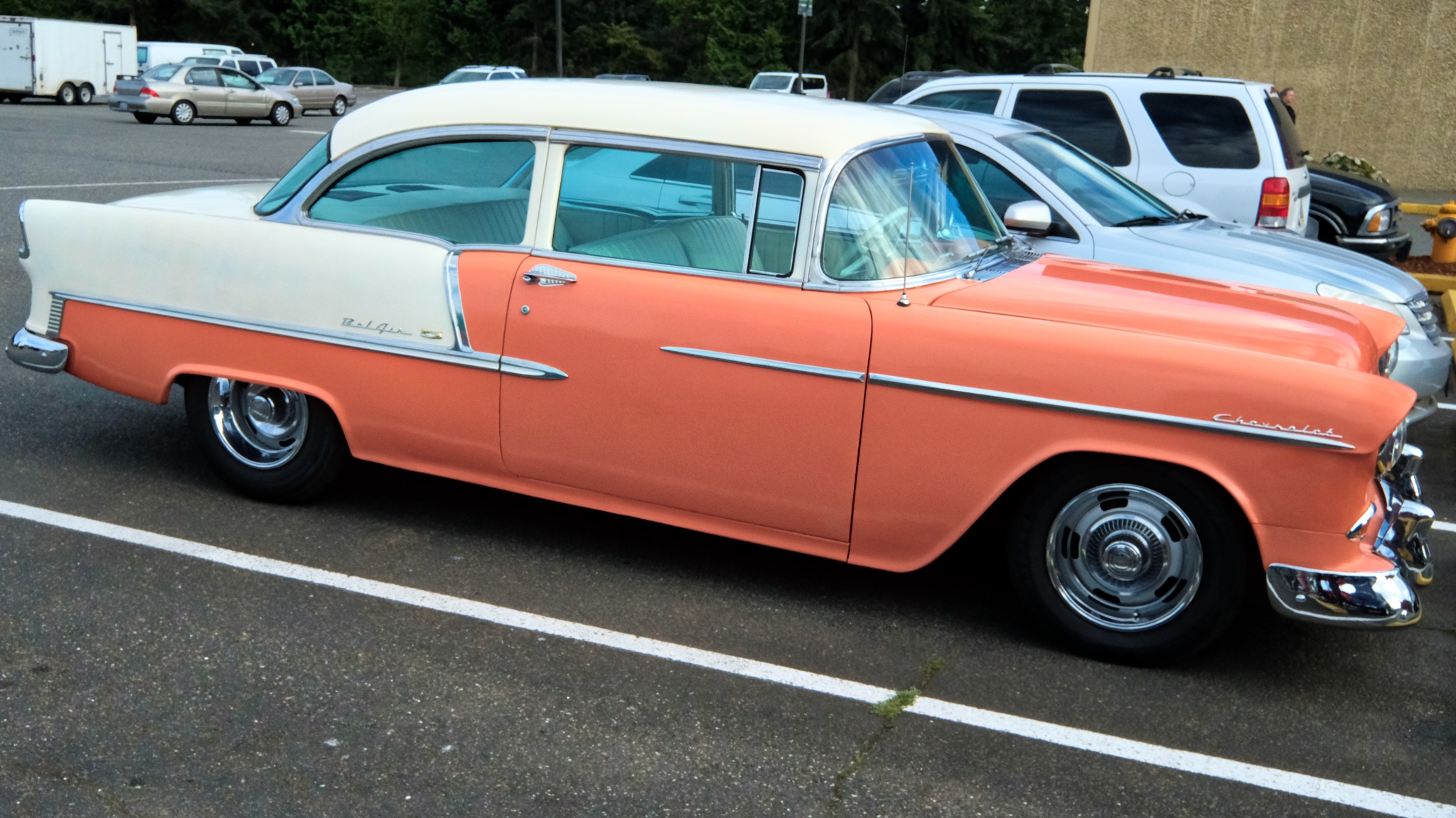
Another nice 1955 Chevrolet . . . a favorite car to Hot Rod when I was in high school.
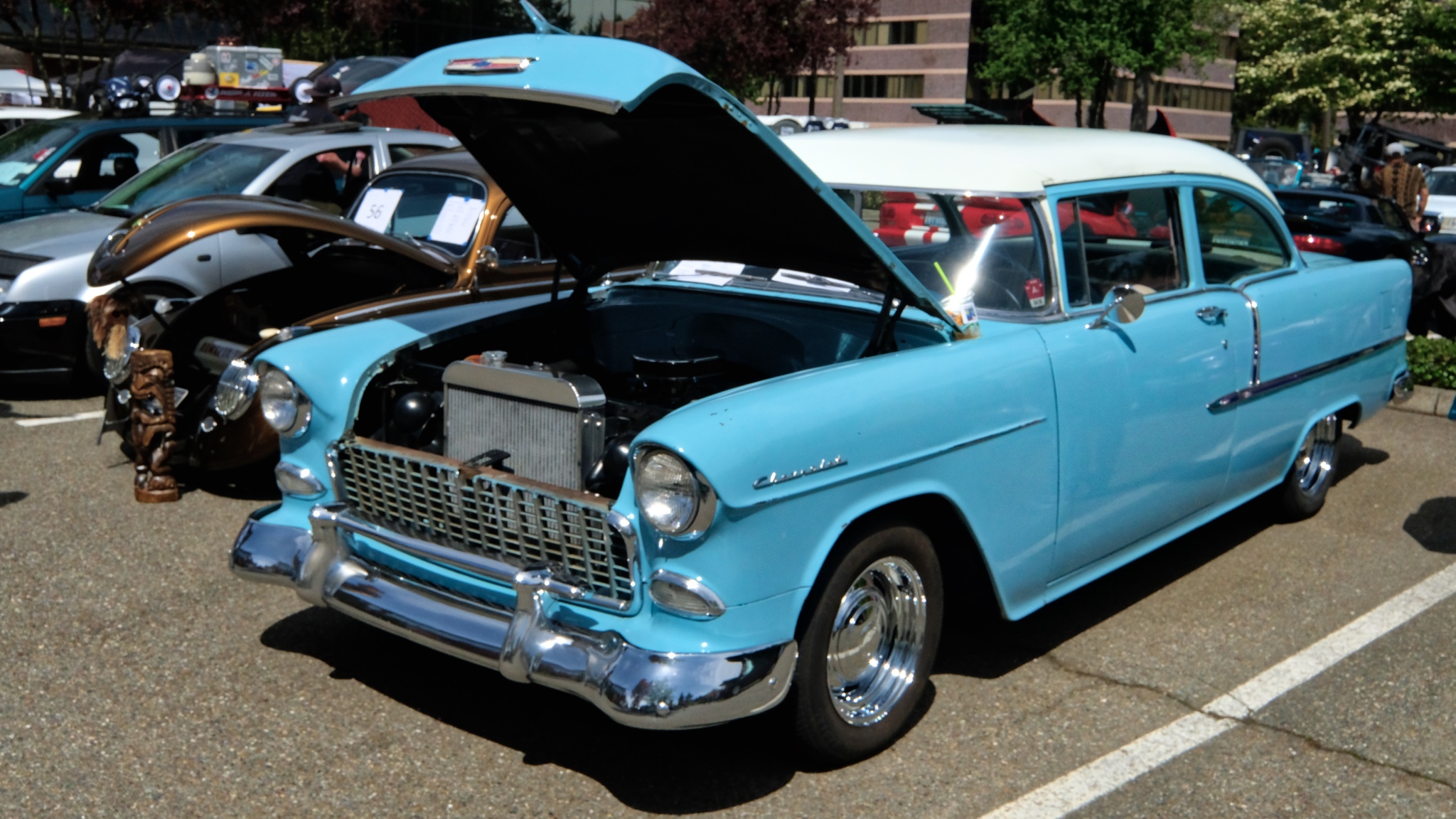
This 1955 Chevy I brought to the car shows belongs to my brother. It has a modern 383ci V8, TH400 transmission, Ford 9" rear end, modern power disc brakes and modern power steering . . . otherwise it is all stock in appearance. I spent weeks polishing and cleaning everything inside and out in preparation to show it.
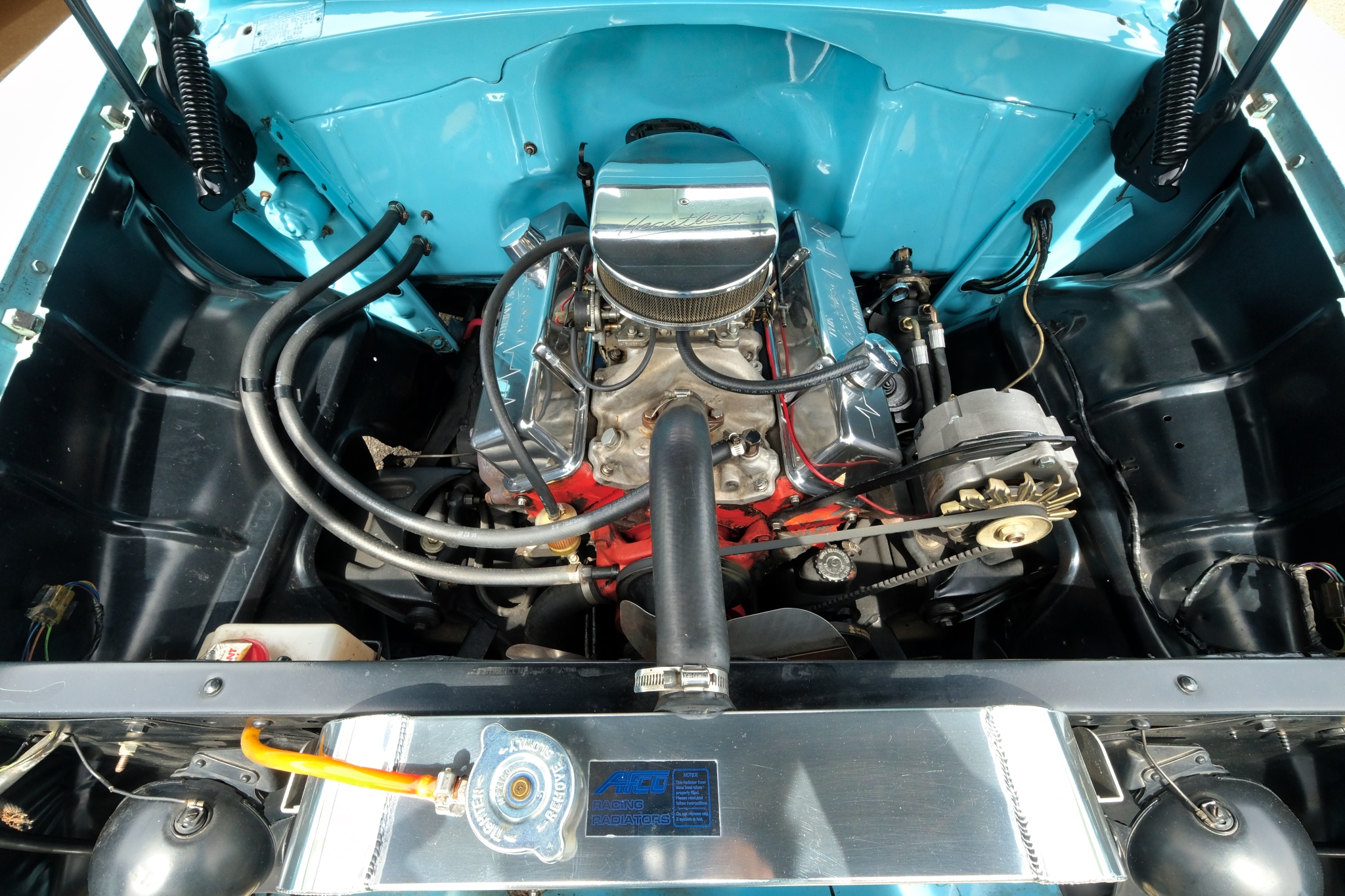
The engine compartment of 'my' 1955 Chevy.
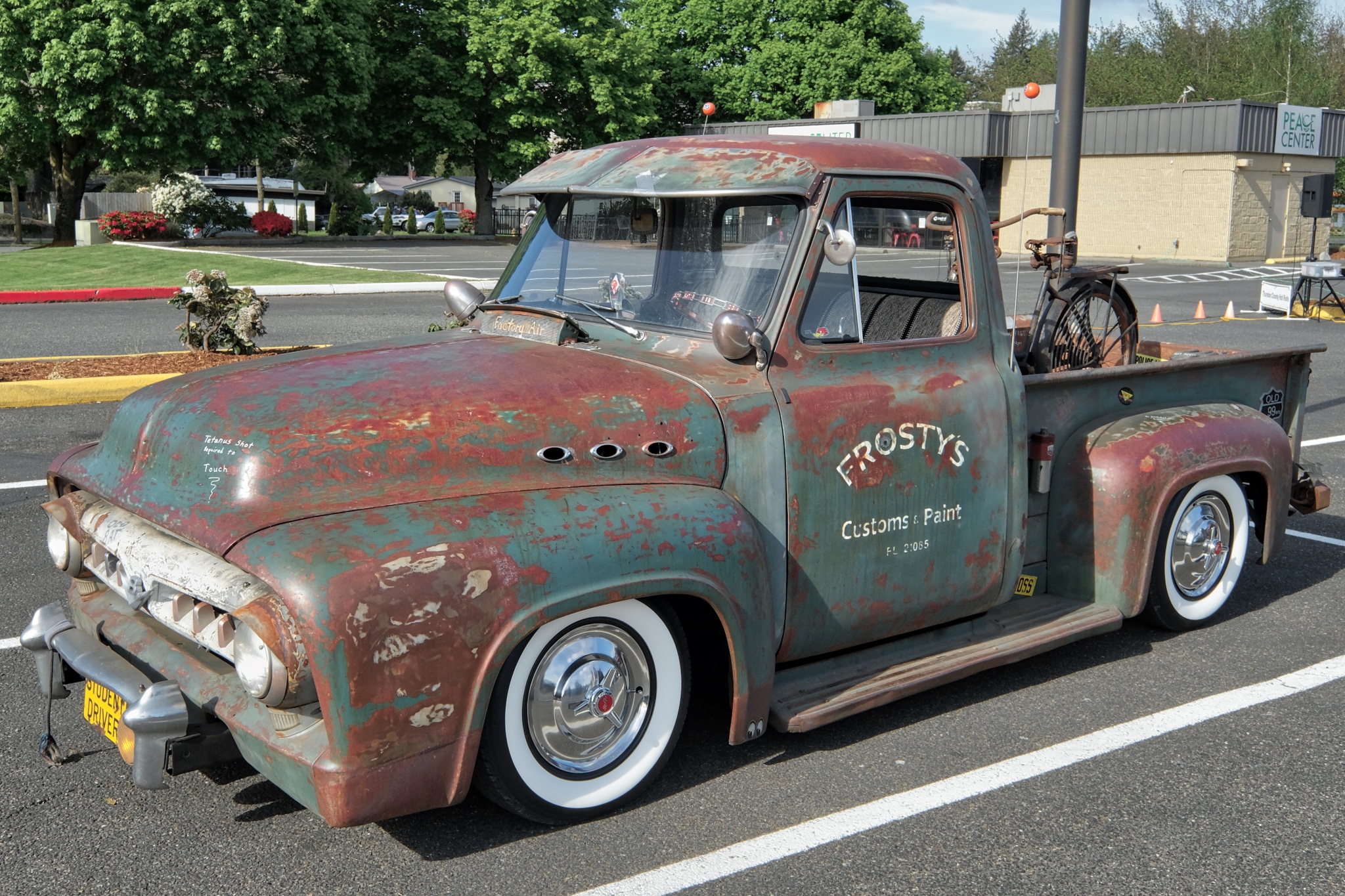
Another category of hot rod is the 'Rat Rod' . . . . ugly and untouched on the outside (left exactly as it was found in the field), but with modern high performance engine, transmission, chassis, steering and brakes. This is a 1953 Ford pick-up.
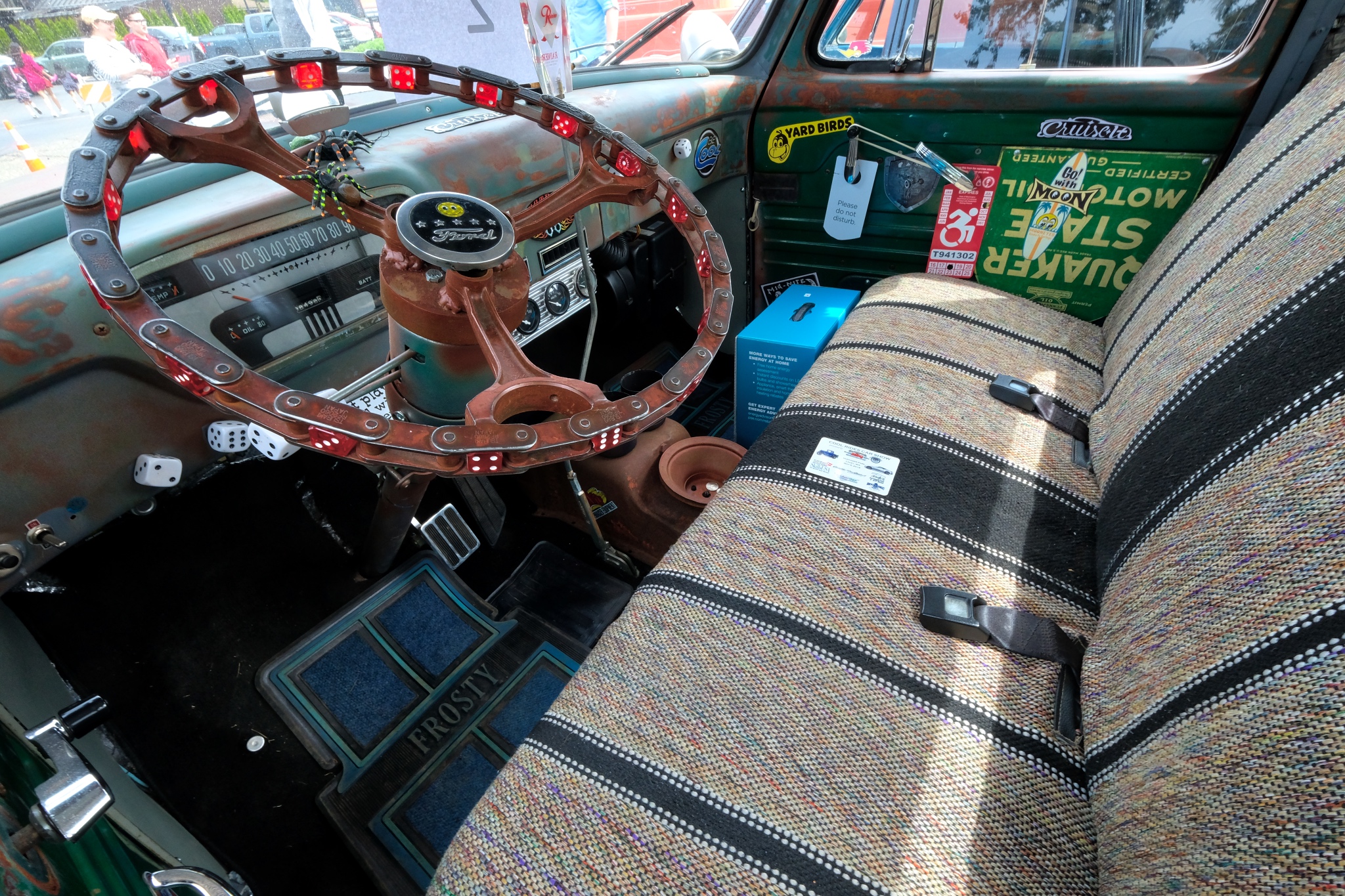
The interior of the Ford pick-up 'Rat Rod' had a lot of fun stuff in it!!!
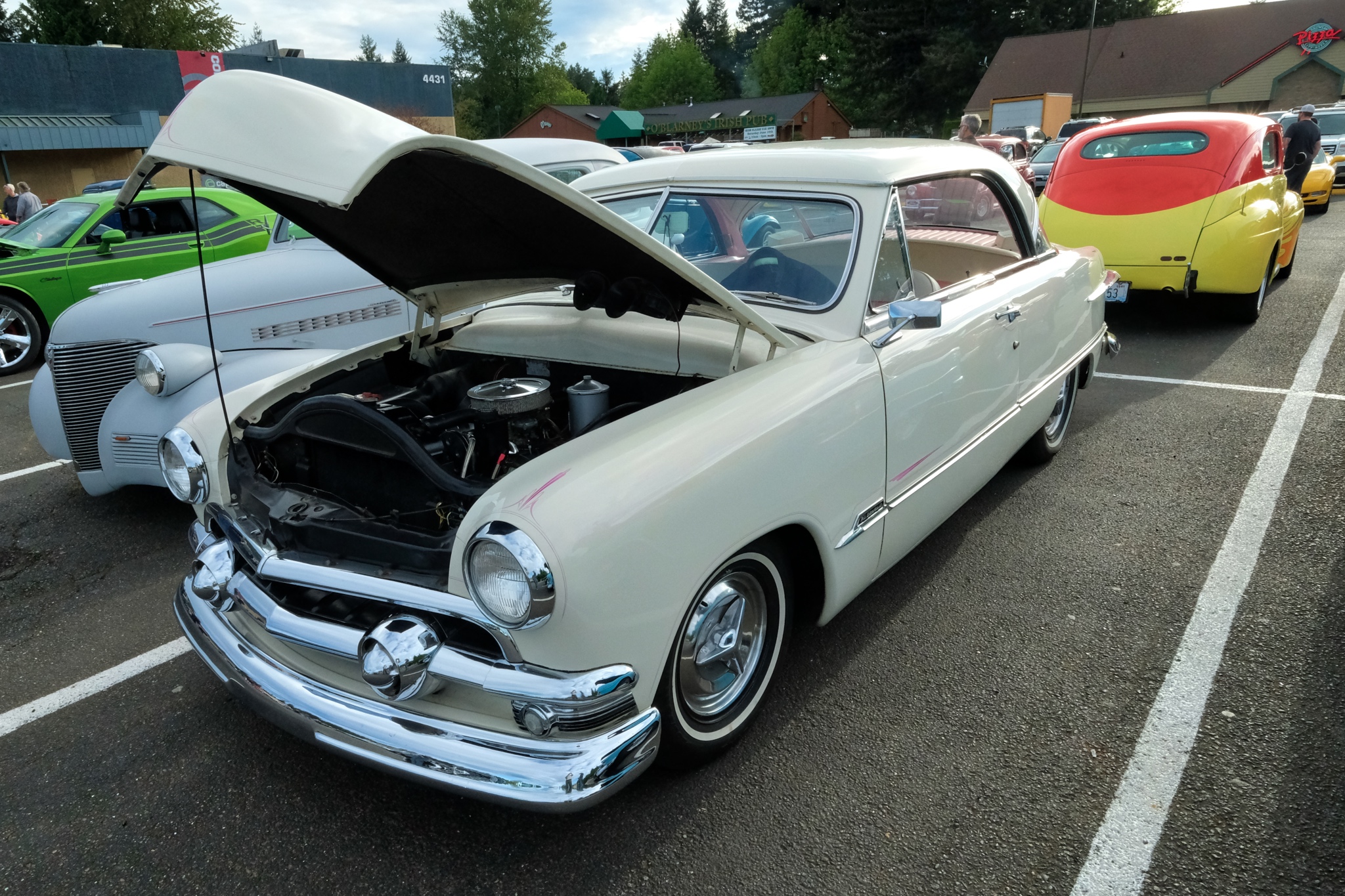
A rare body style 1949 Ford with a 'built' flathead V8.
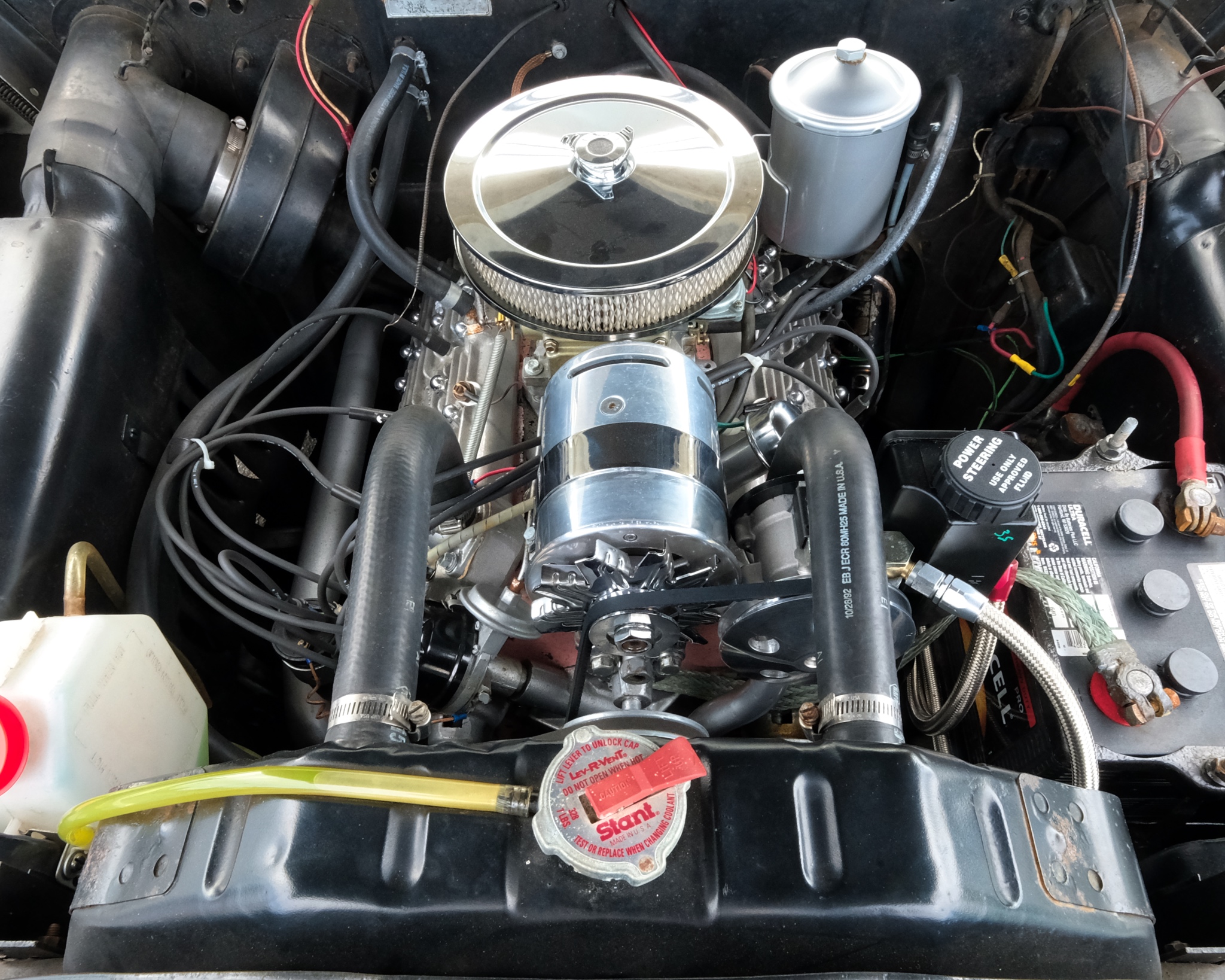
A beautifully prepared 4bbl flathead V8 in the 1949 Ford.
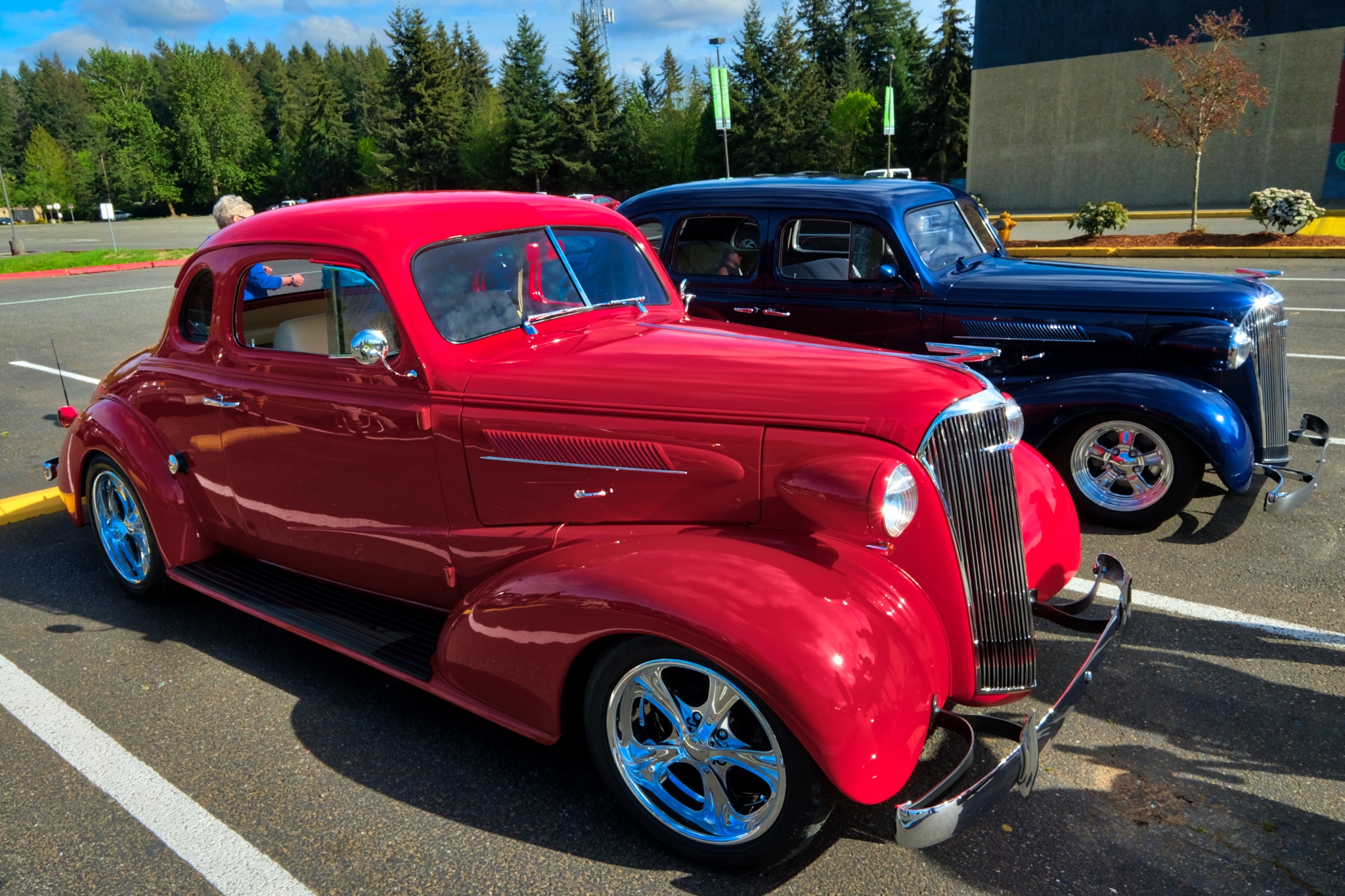
A pair of 1939 Chevys . . . one a business coupe and one a 4-door sedan.
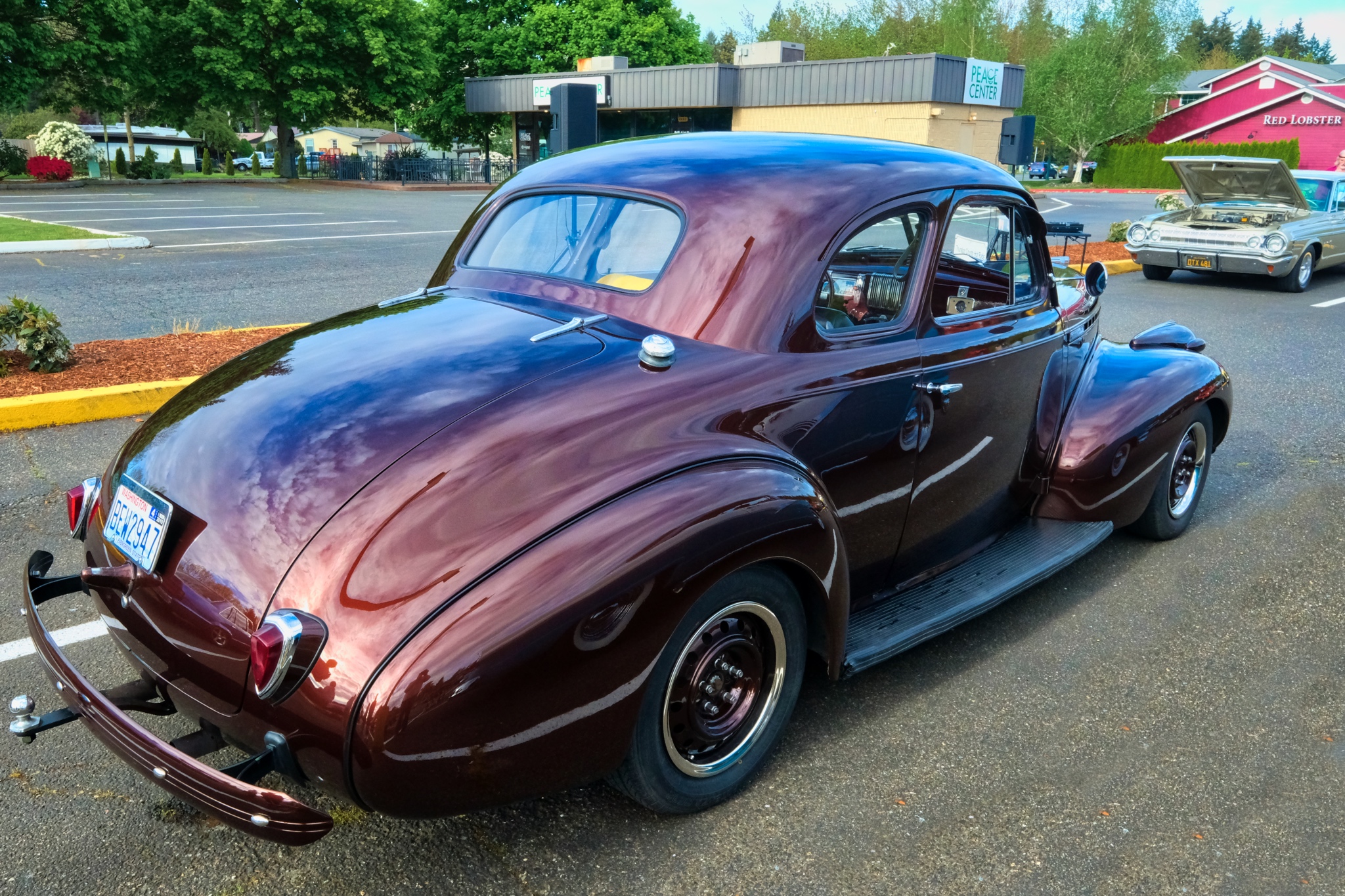
A very nice 1941 Chevy with a perfect body and perfect paint.
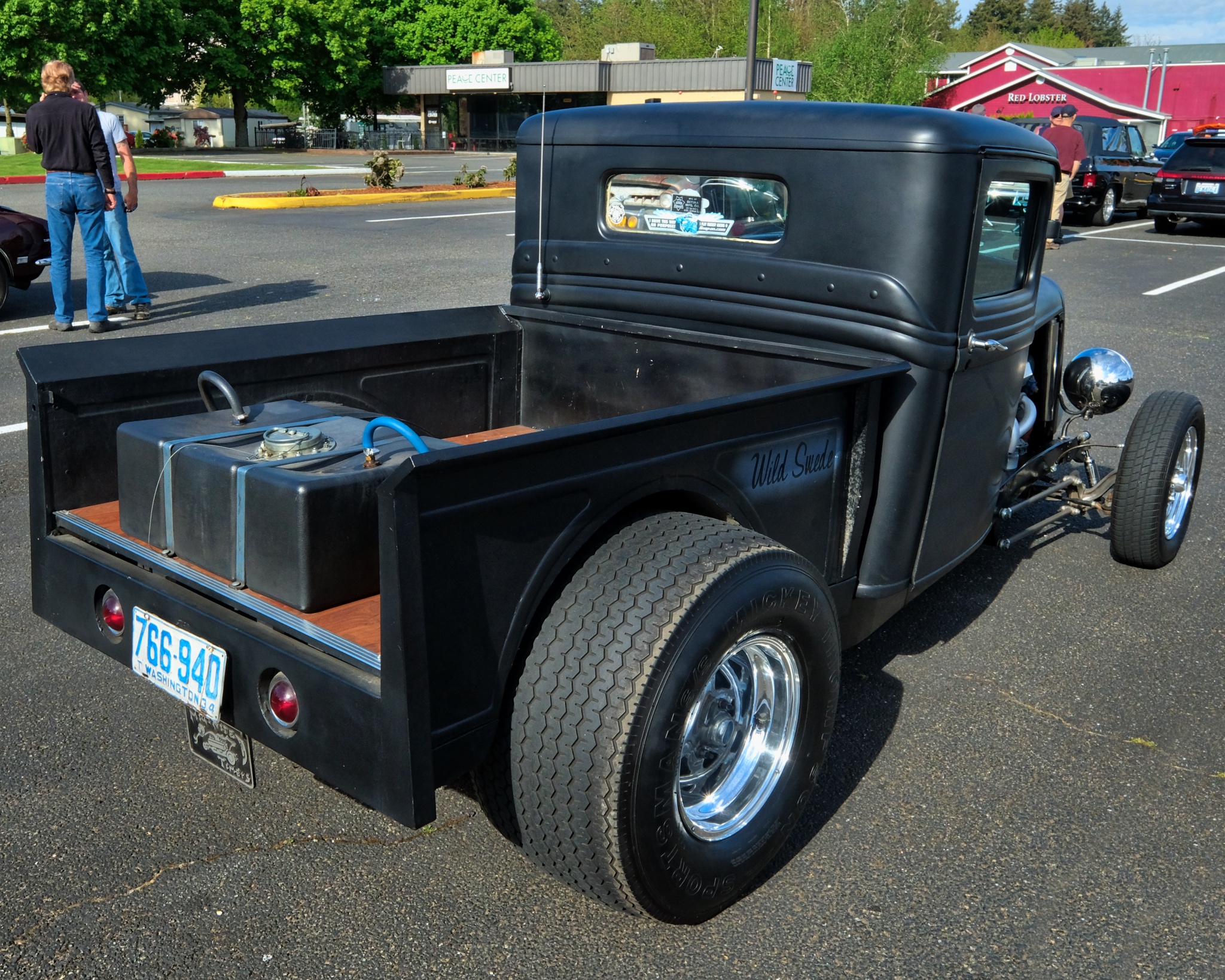
One of my favorite rods from the two days of shows . . . Model A pick-up.
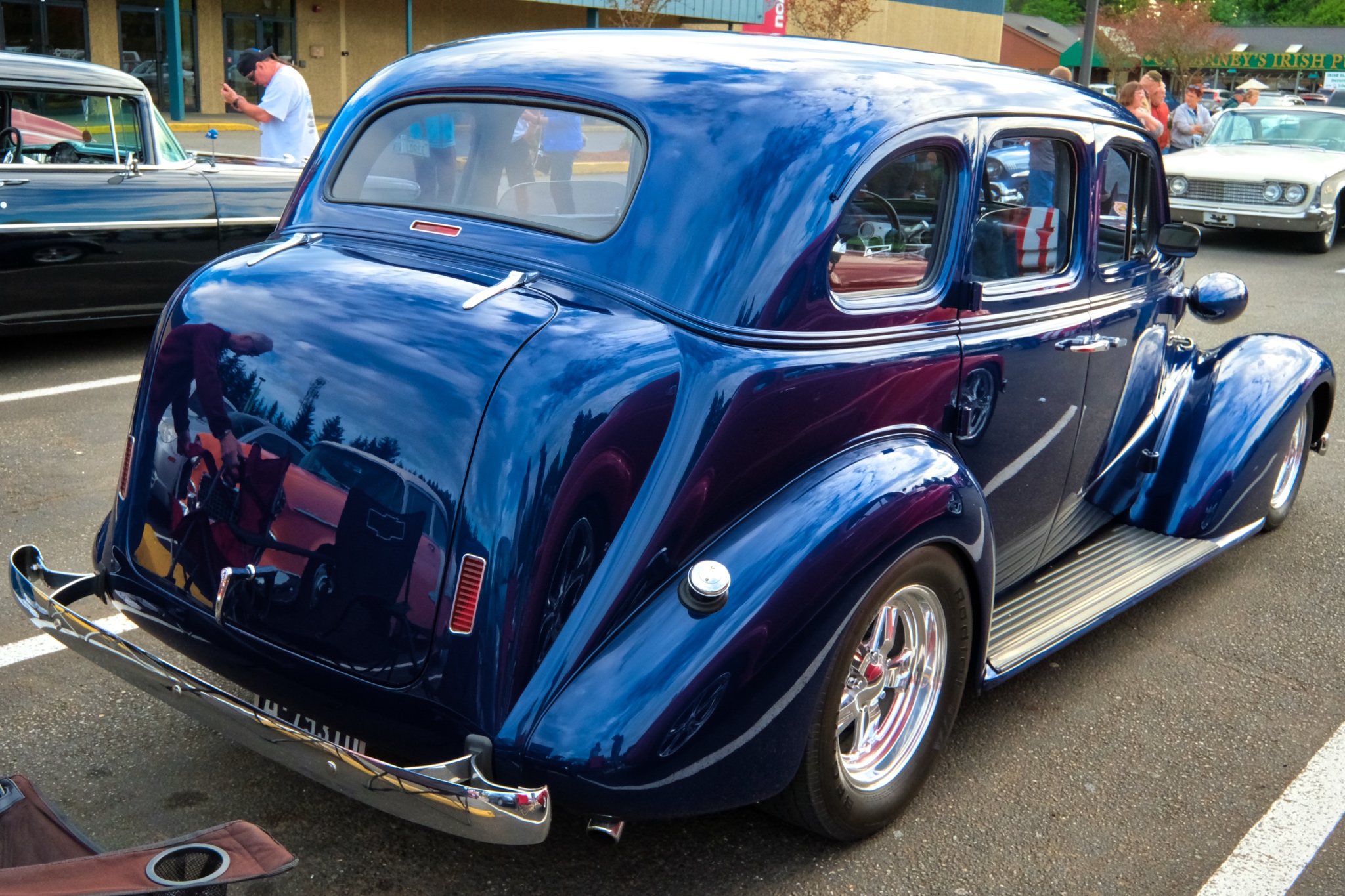
I like the big 'fat fendered' four door hot rods . . . so practical.
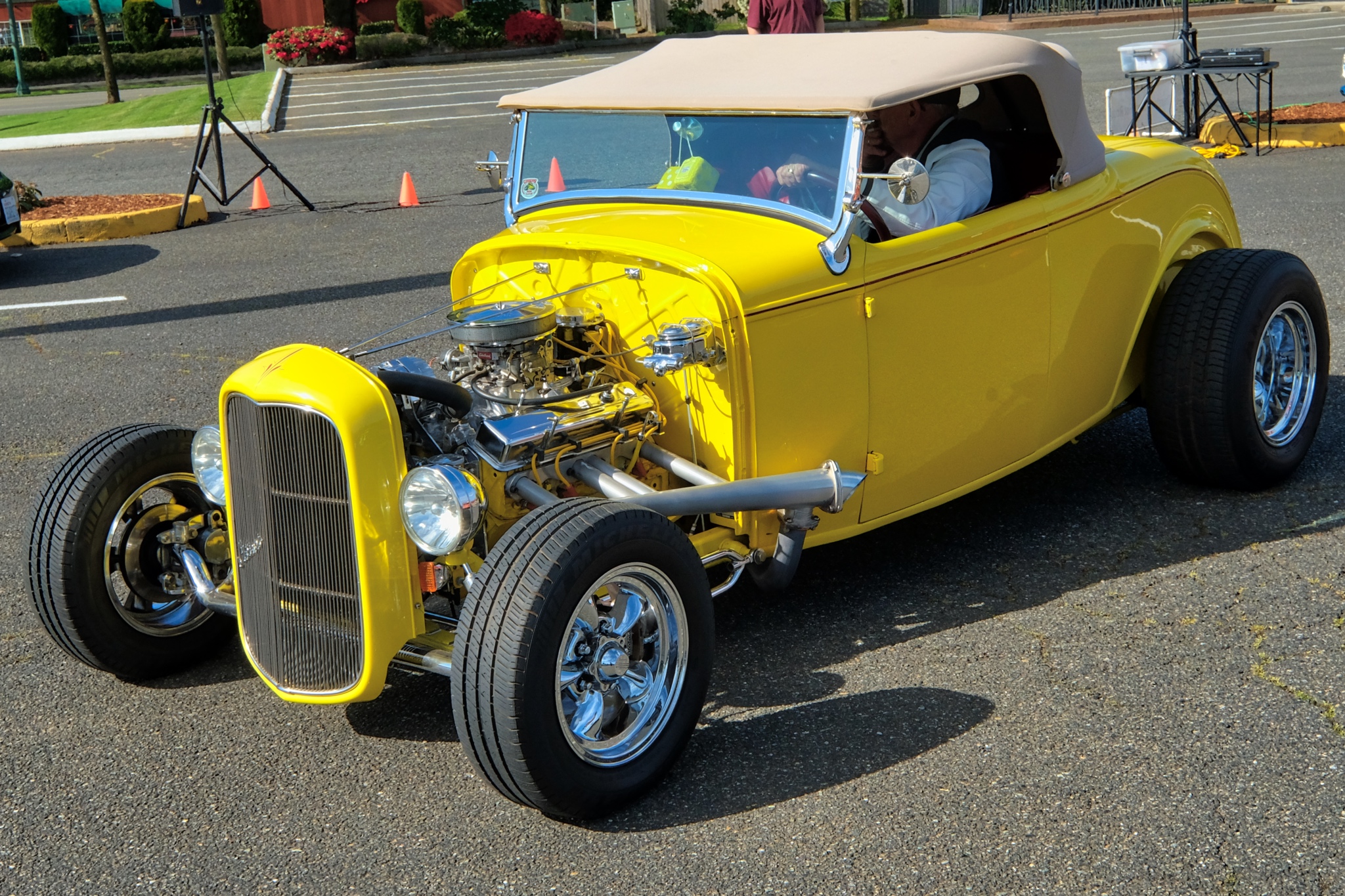
The classic hot rod, the '32 Deuce Highboy.
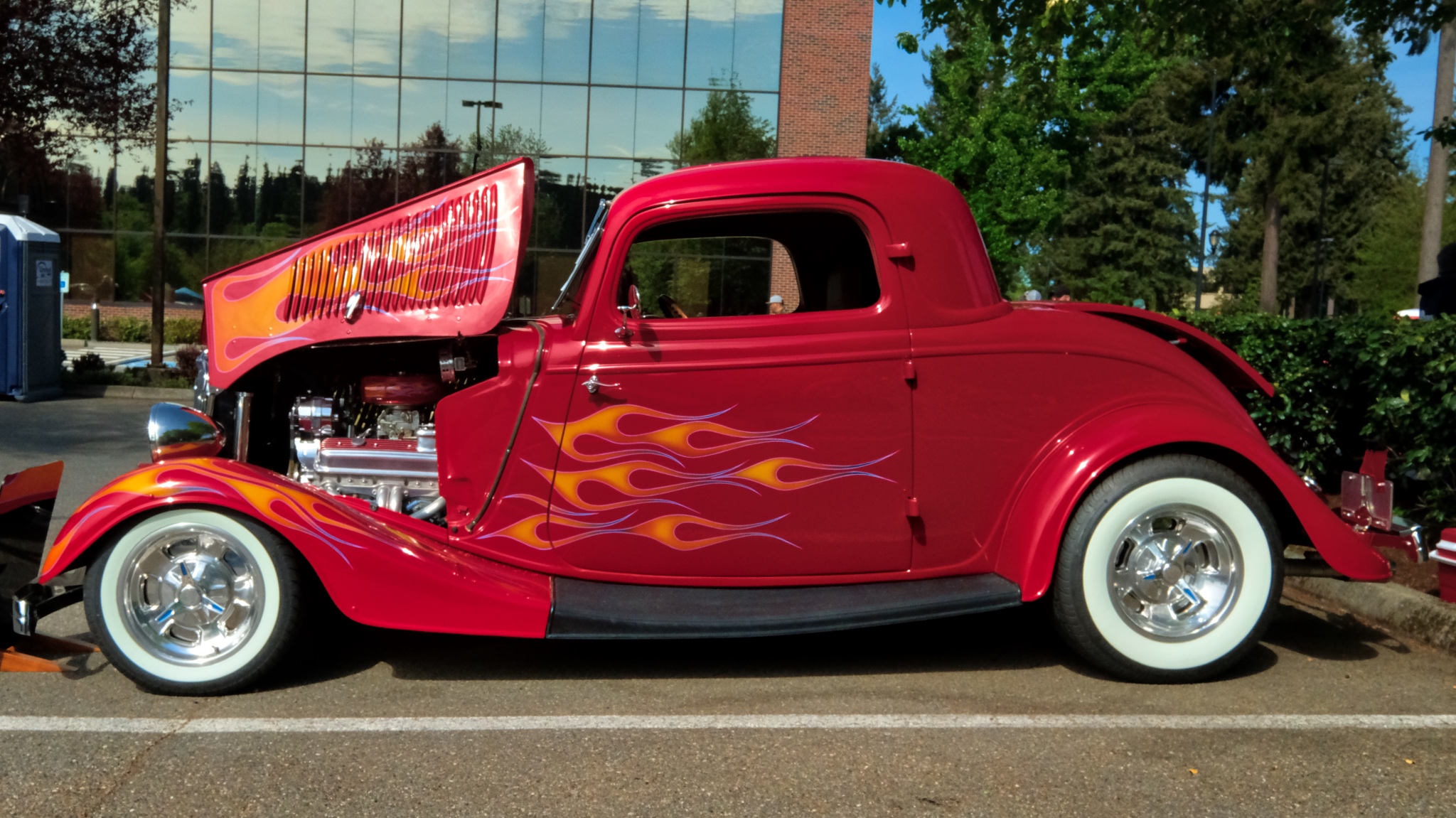
A '33 Ford full-fendered hot rod. Nice flames . . . very traditional.
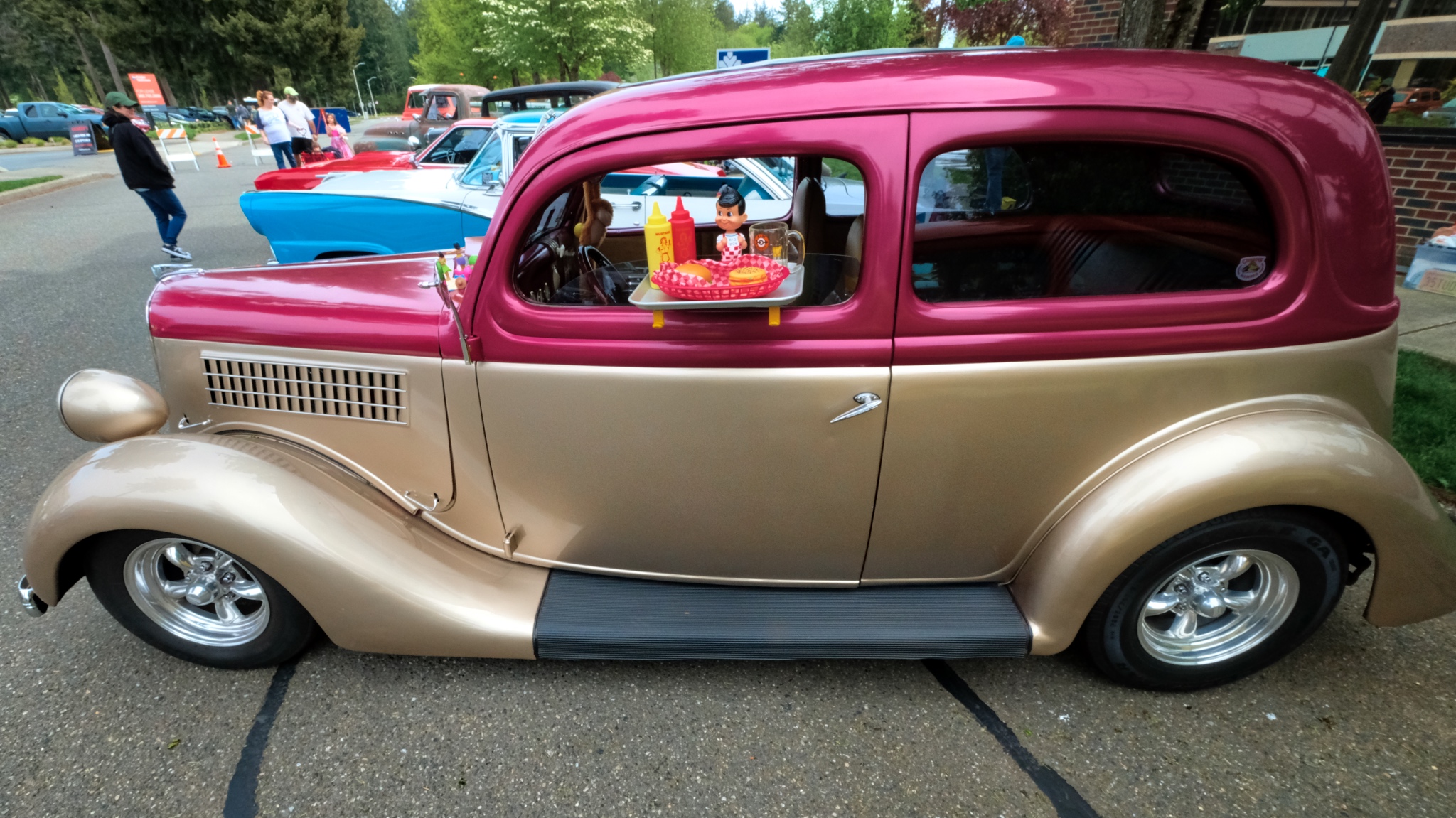
Very nice display with this '35 Chevy . . . the burger drive-in window window tray from Bob's Big Boy.
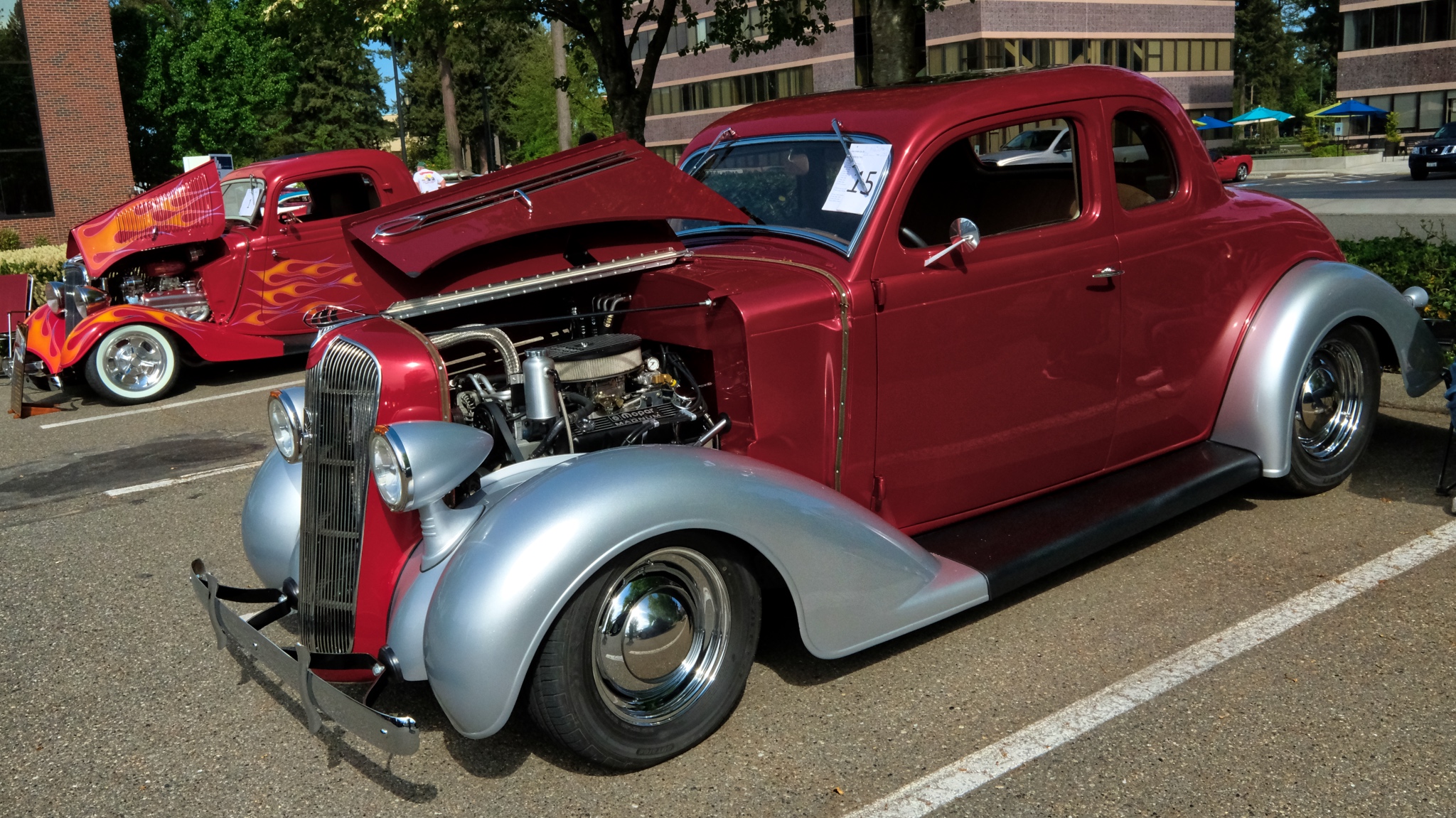
"Dare to be different" - 36 Plymouth hot rod.
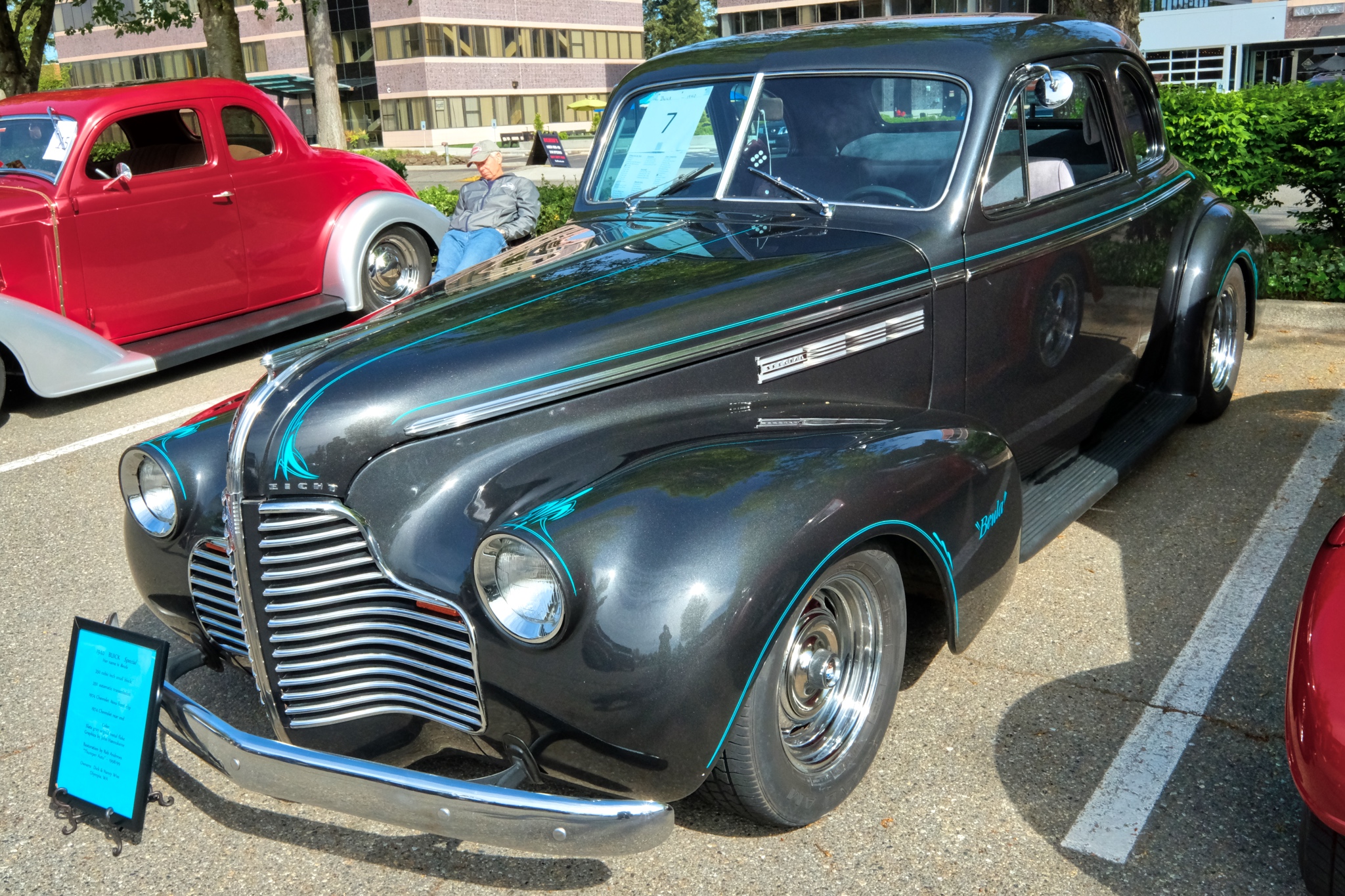
Another unusual make and model: a 40 Buick.
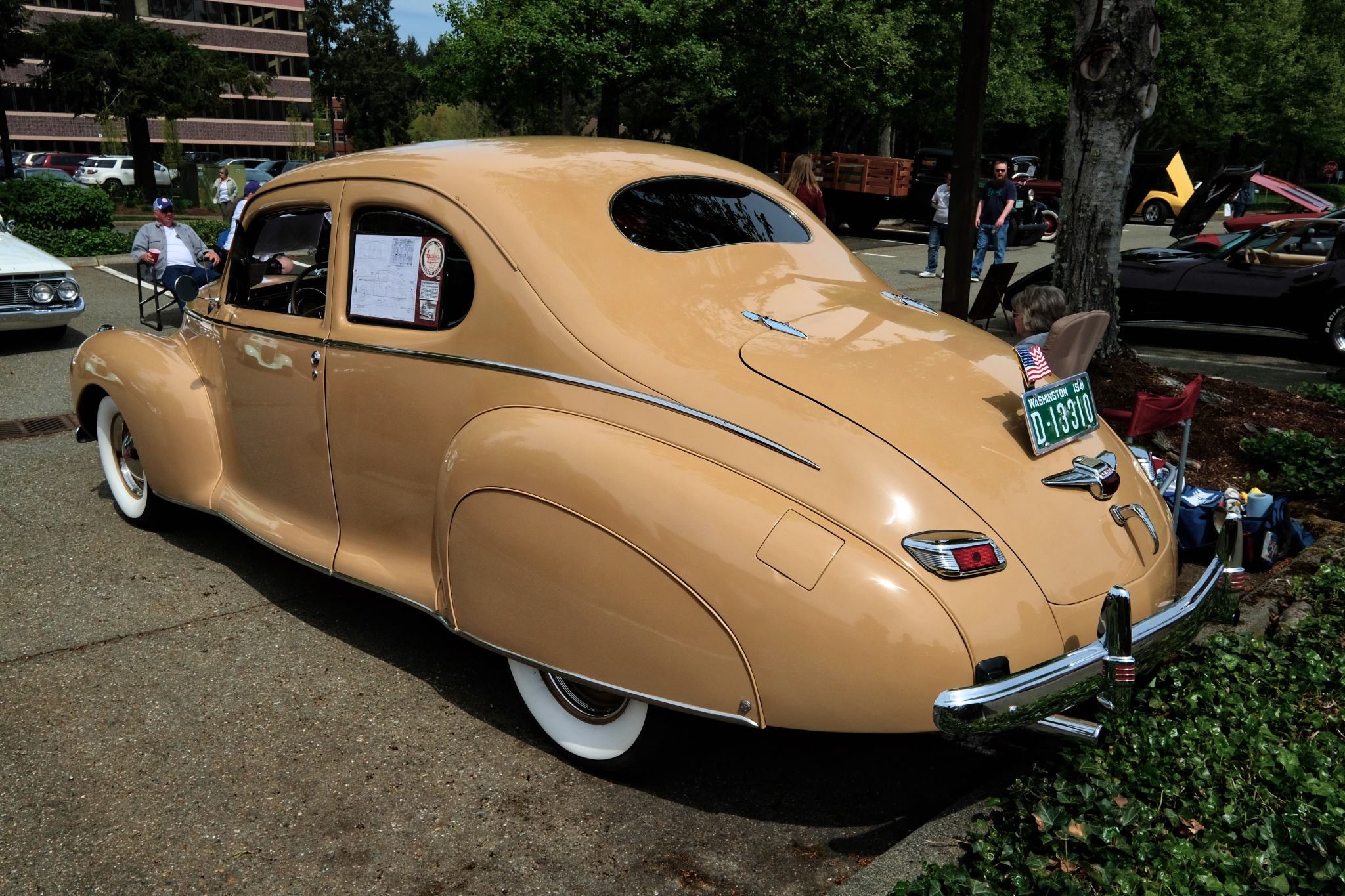
An amazing '41 Lincoln V12.
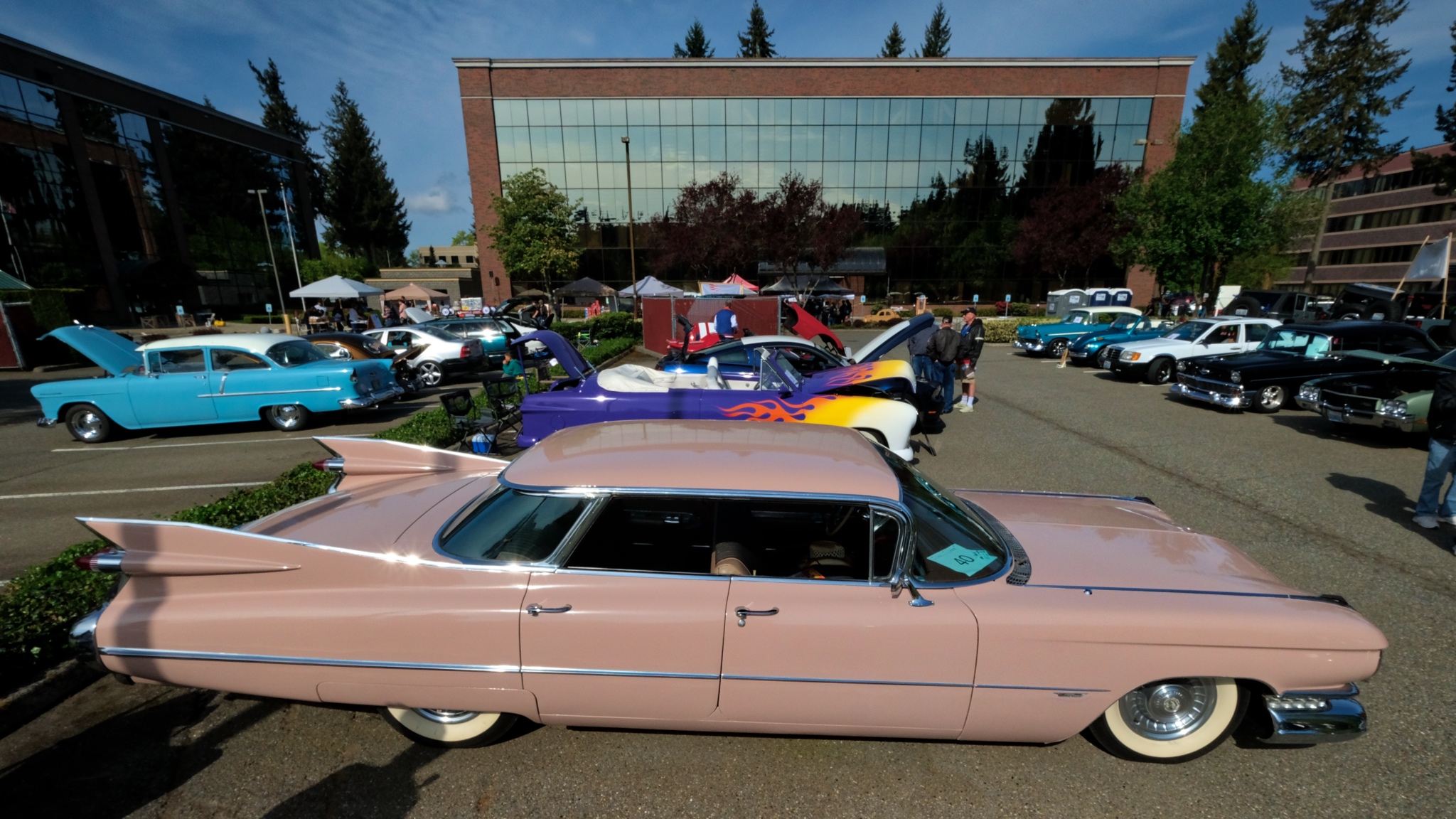
Everybody loves a 1959 Cadillac. A nice collection at the parking lot car show in Lacy, Washington.
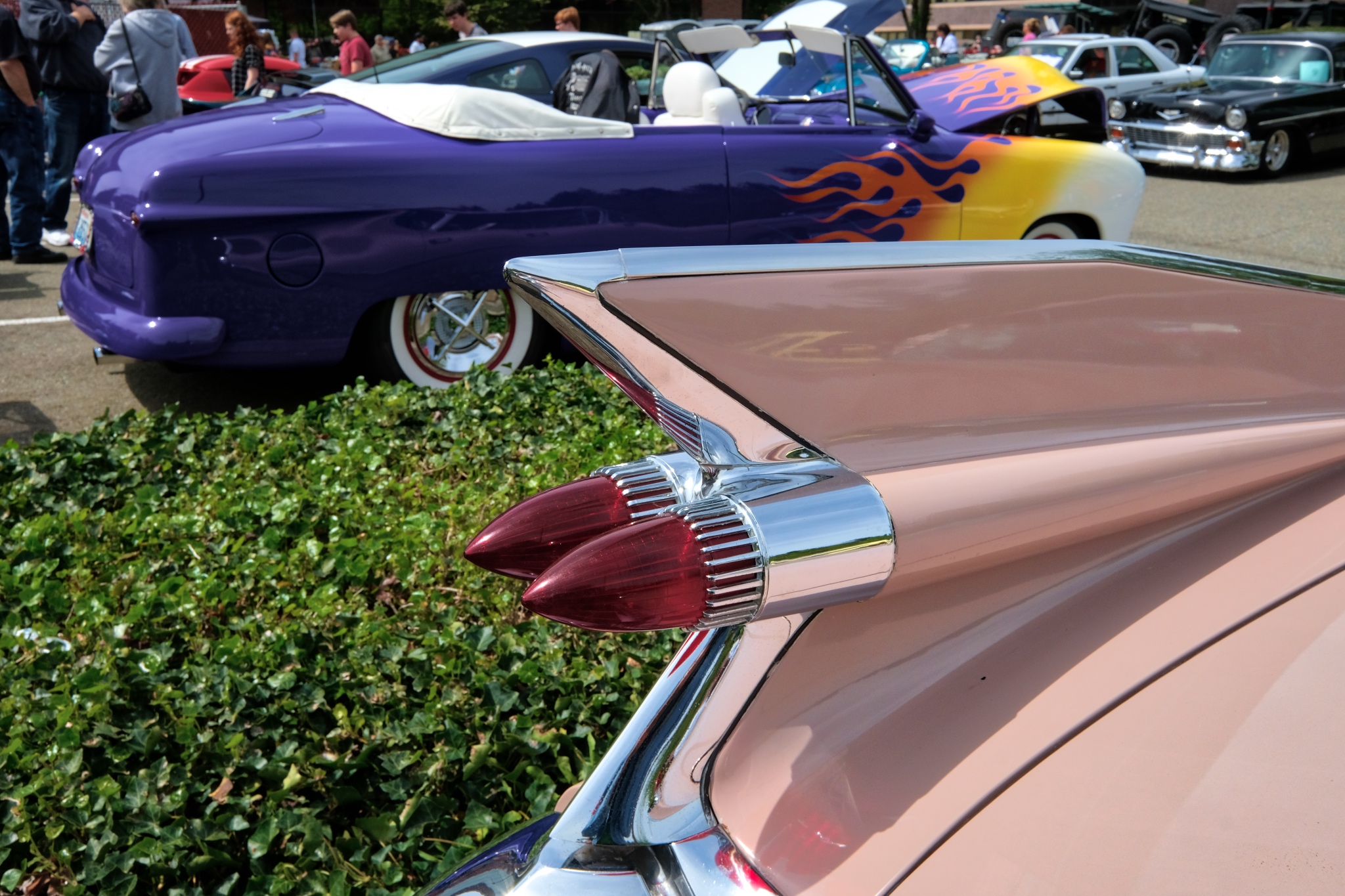
Caddy tail lights and classic hot rods.
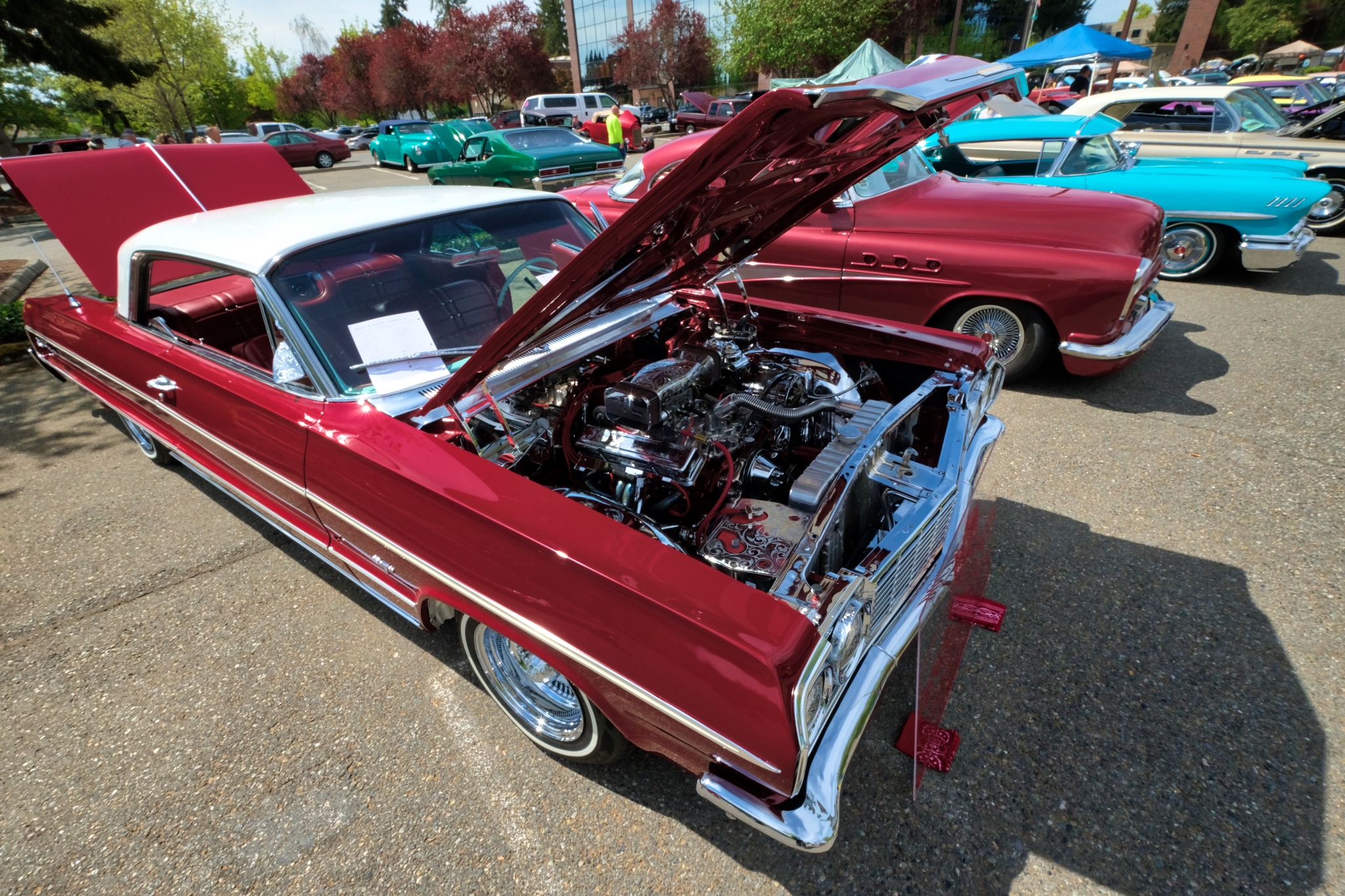
"Low Rider" car culture was represented by this amazing 1964 Chevy Impala . . . it won the 'Best Engine' Trophy.
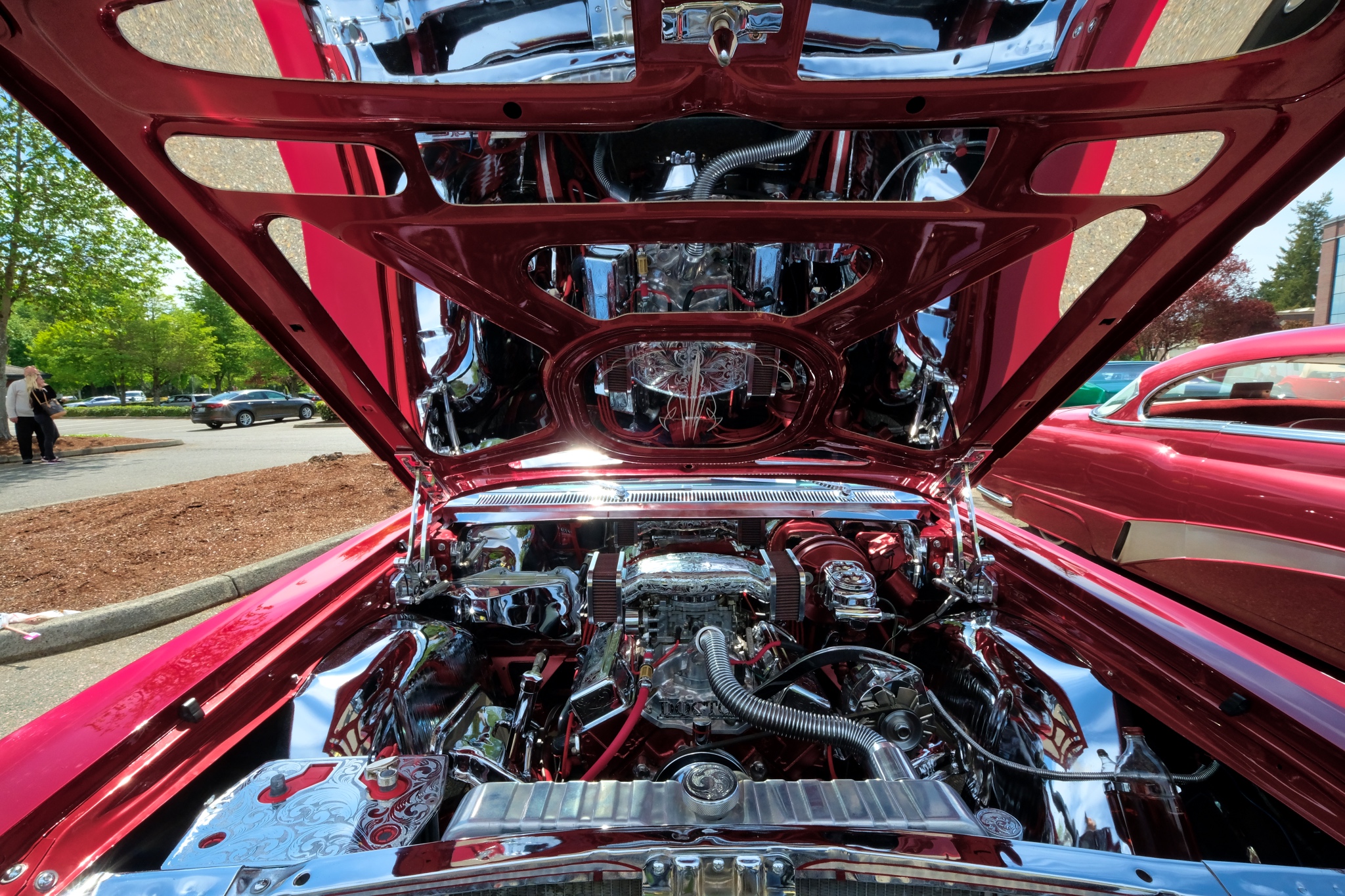
The prize-winning engine in the 1964 Impala. Wow!
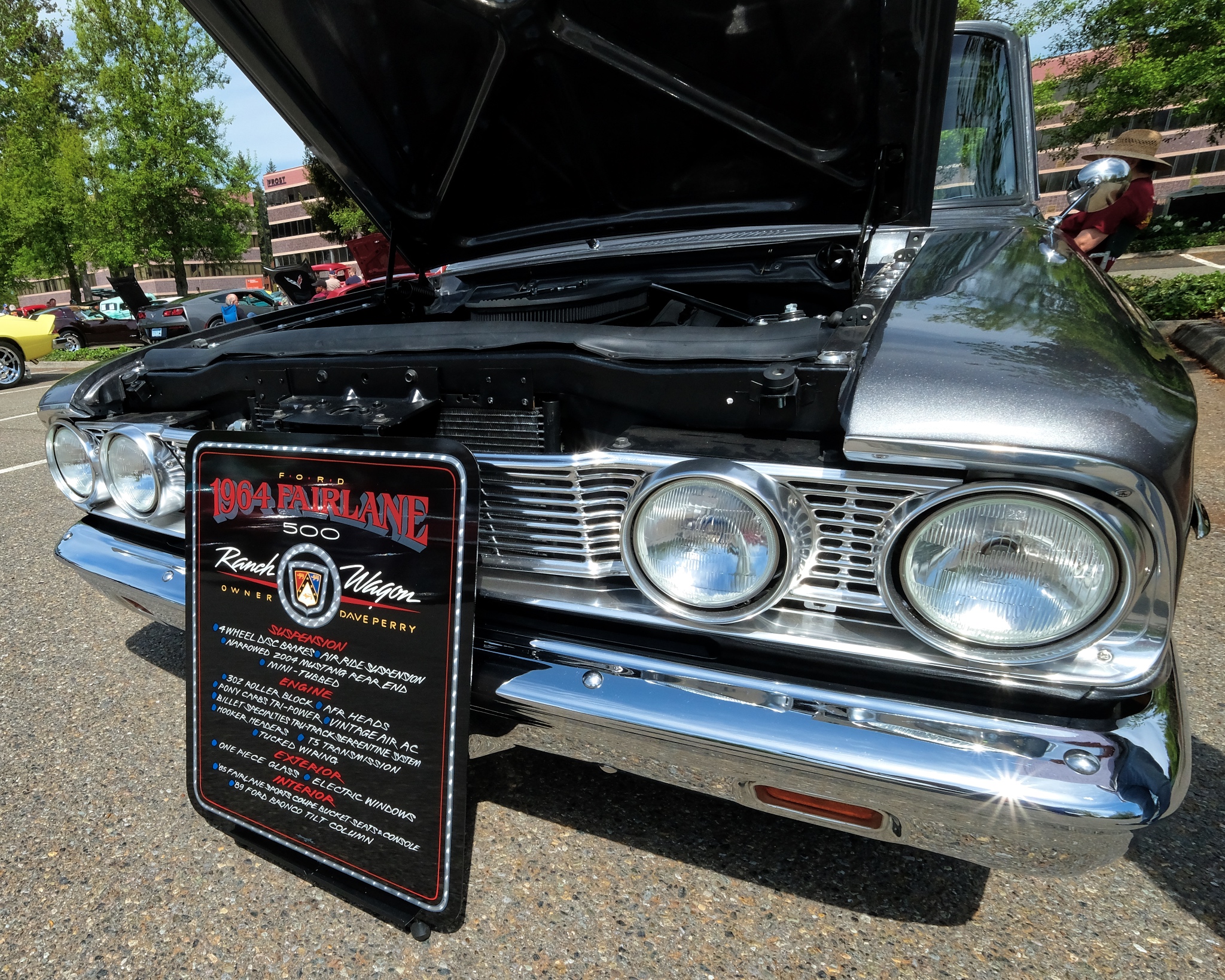
Car owners often displayed plaques that itemize the various modifications and custom parts.
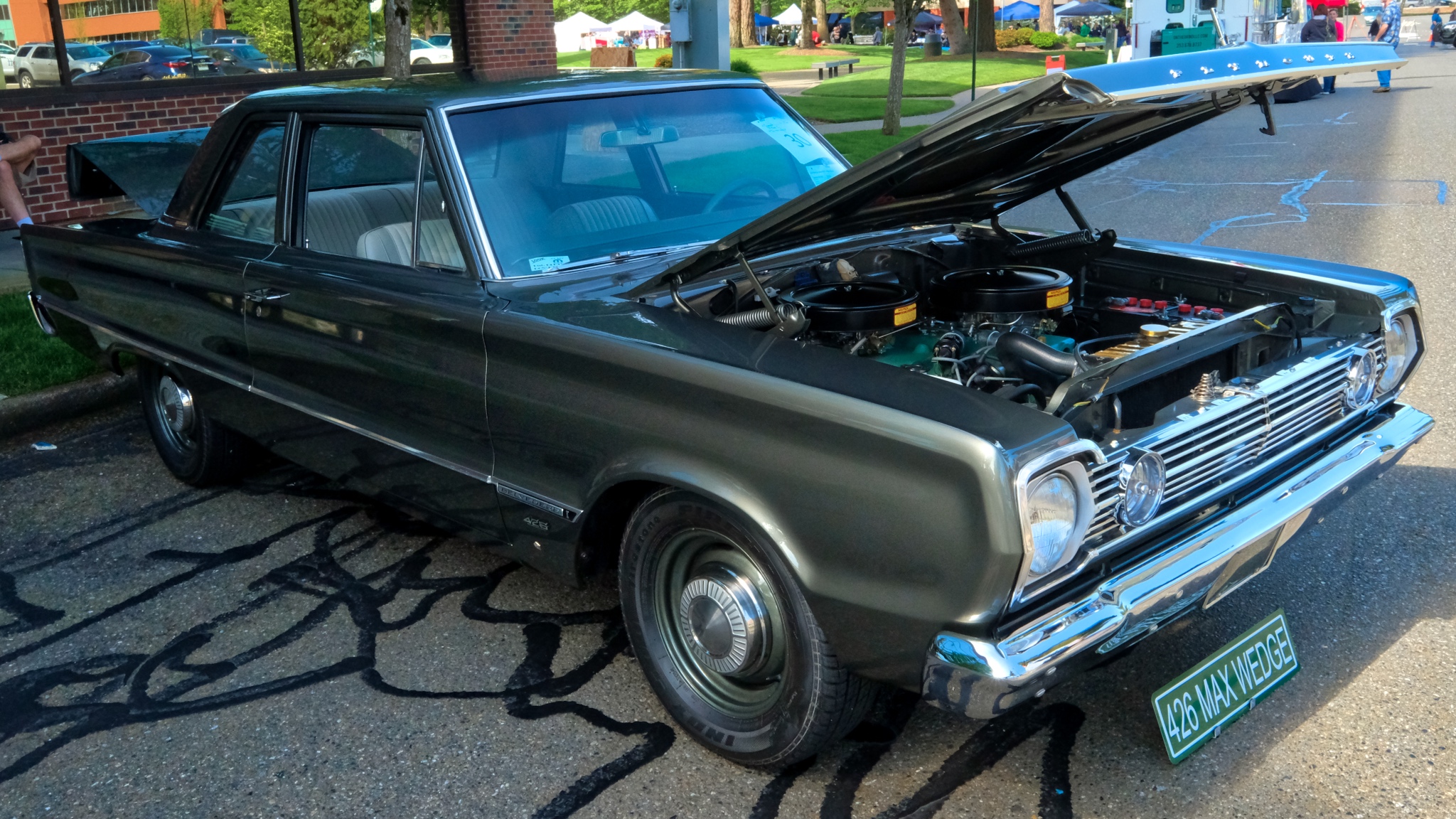
Certain cars from the 'Muscle Car' era are considered 'Holy Grail' cars. This 426 Max Wedge is a Holy Grail collector car.
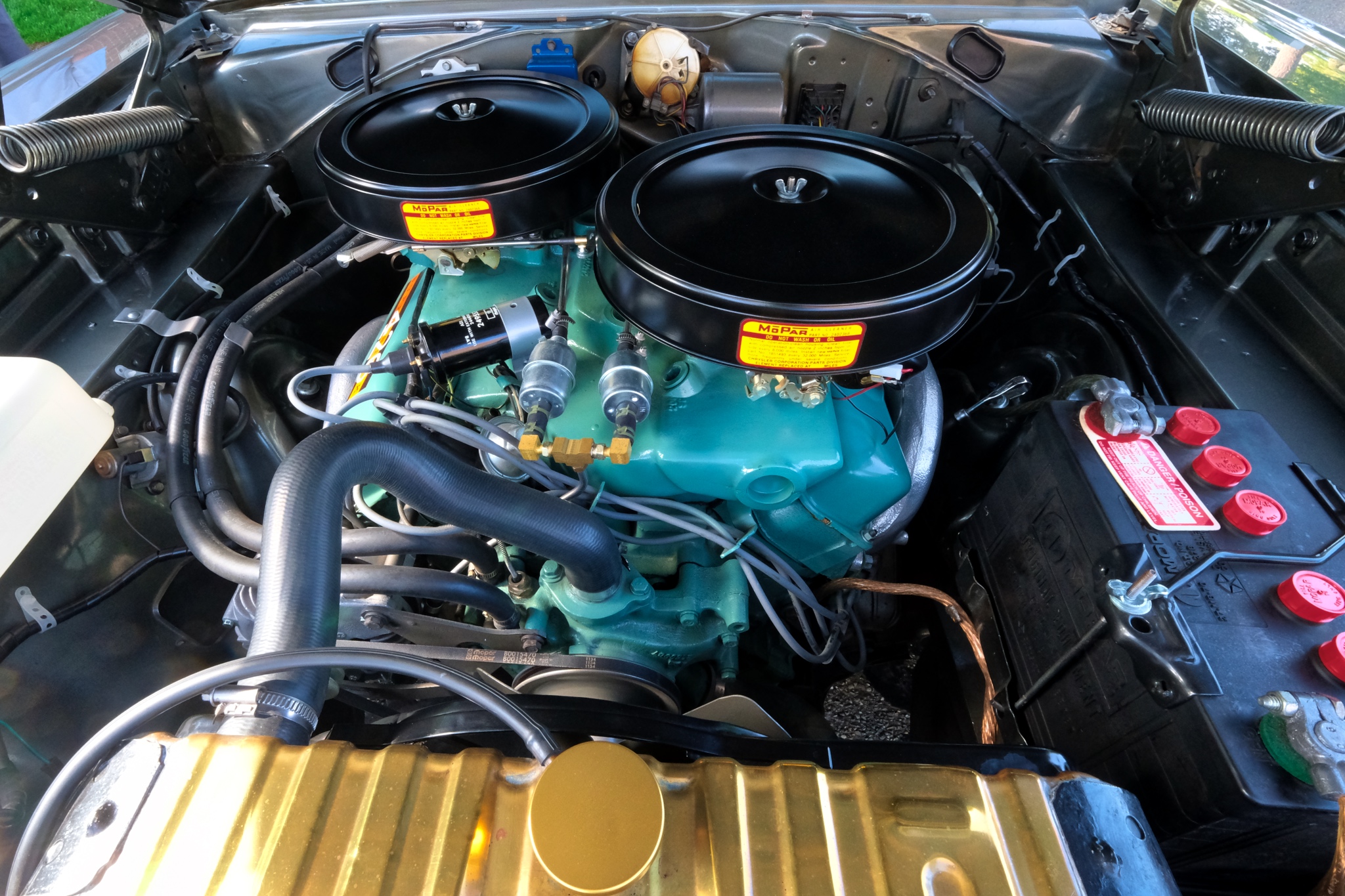
Perfectly presented 426 Max Wedge engine . . . essentially a race car engine offered in a street car.
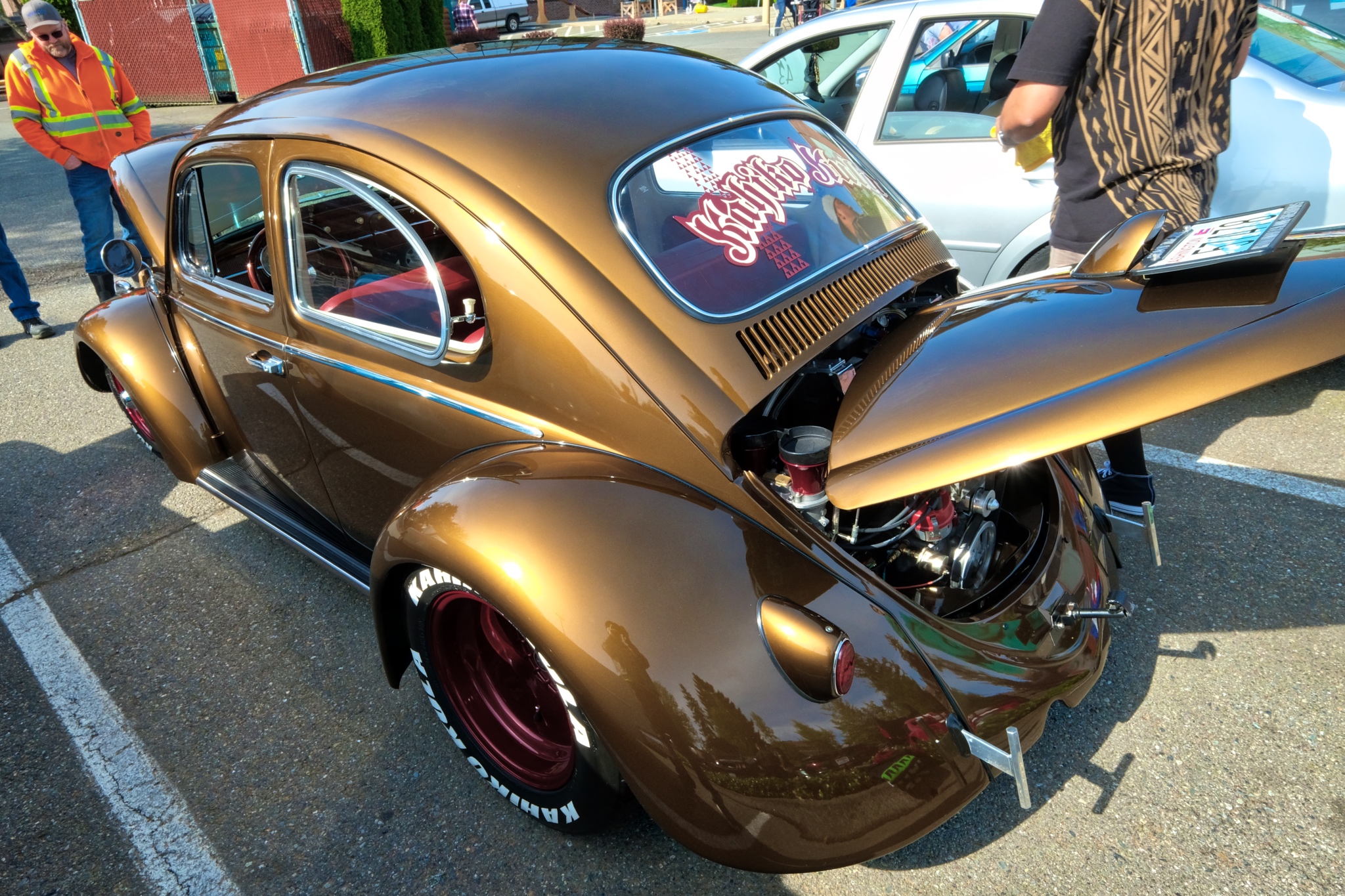
Another of my favorite cars. The paint and interior on this VW were absolutely amazing.
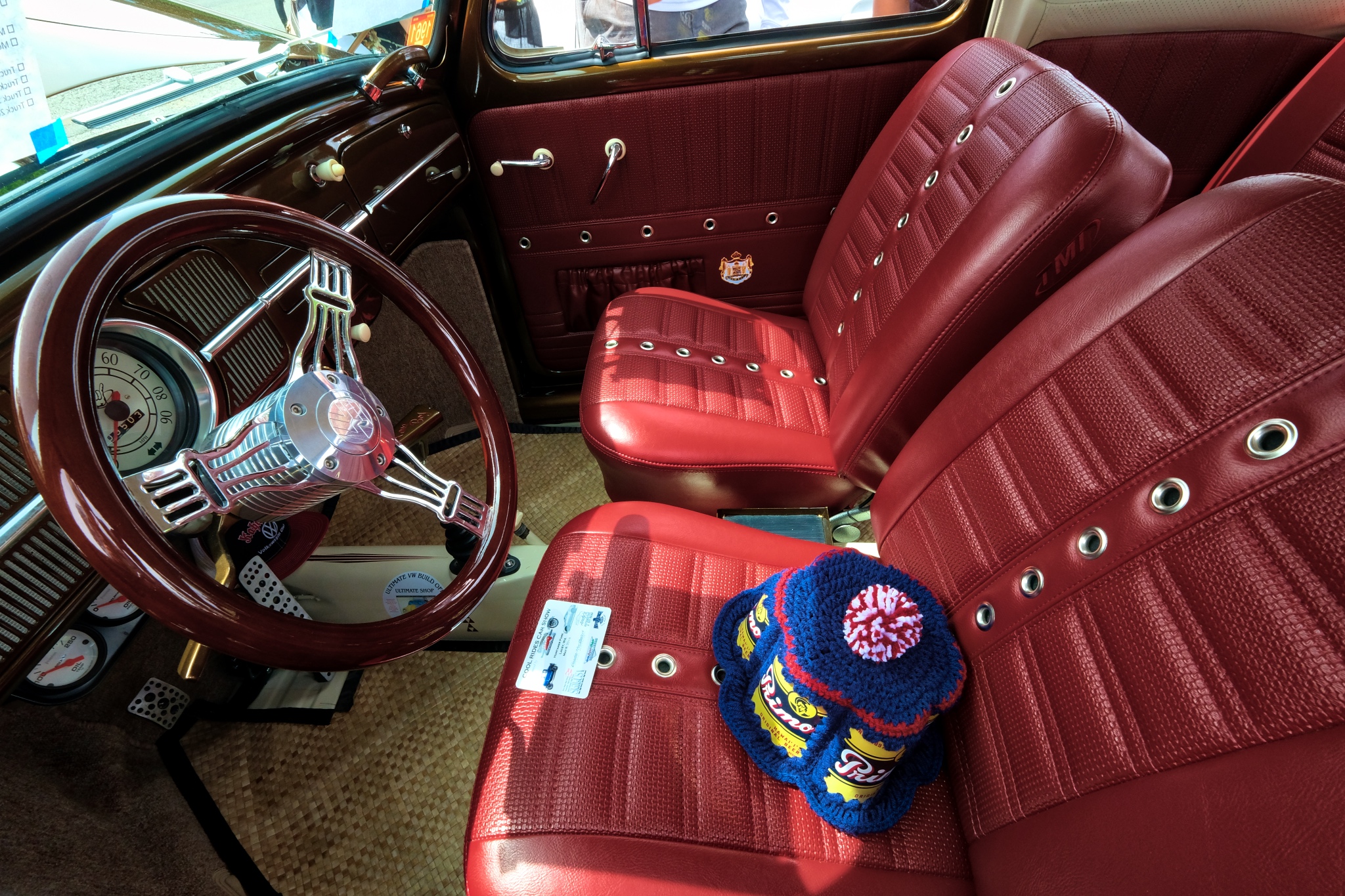
The interior on the brown Bug.
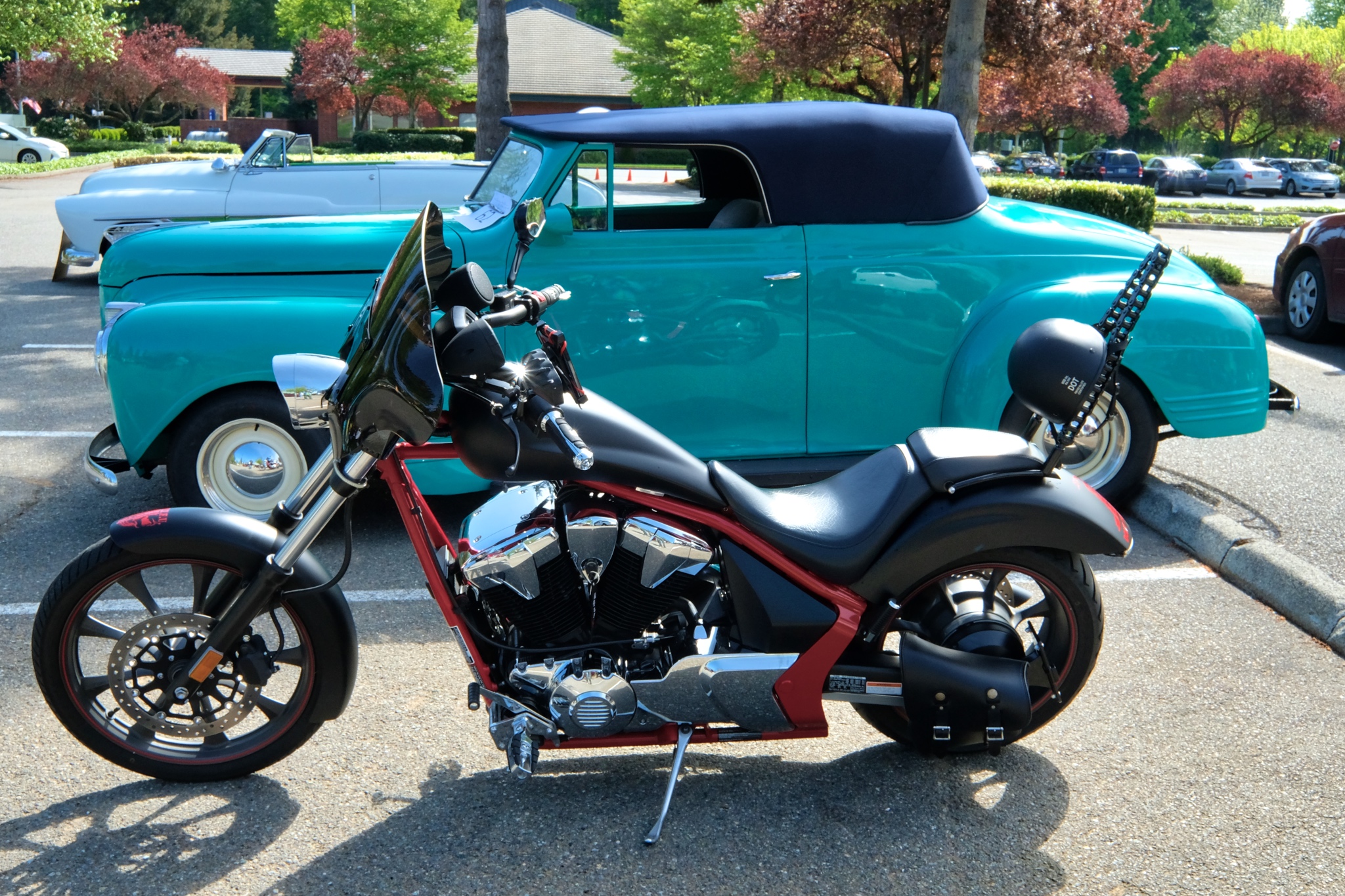
There was a motorcycle category at the show too . . . this Honda won the trophy.
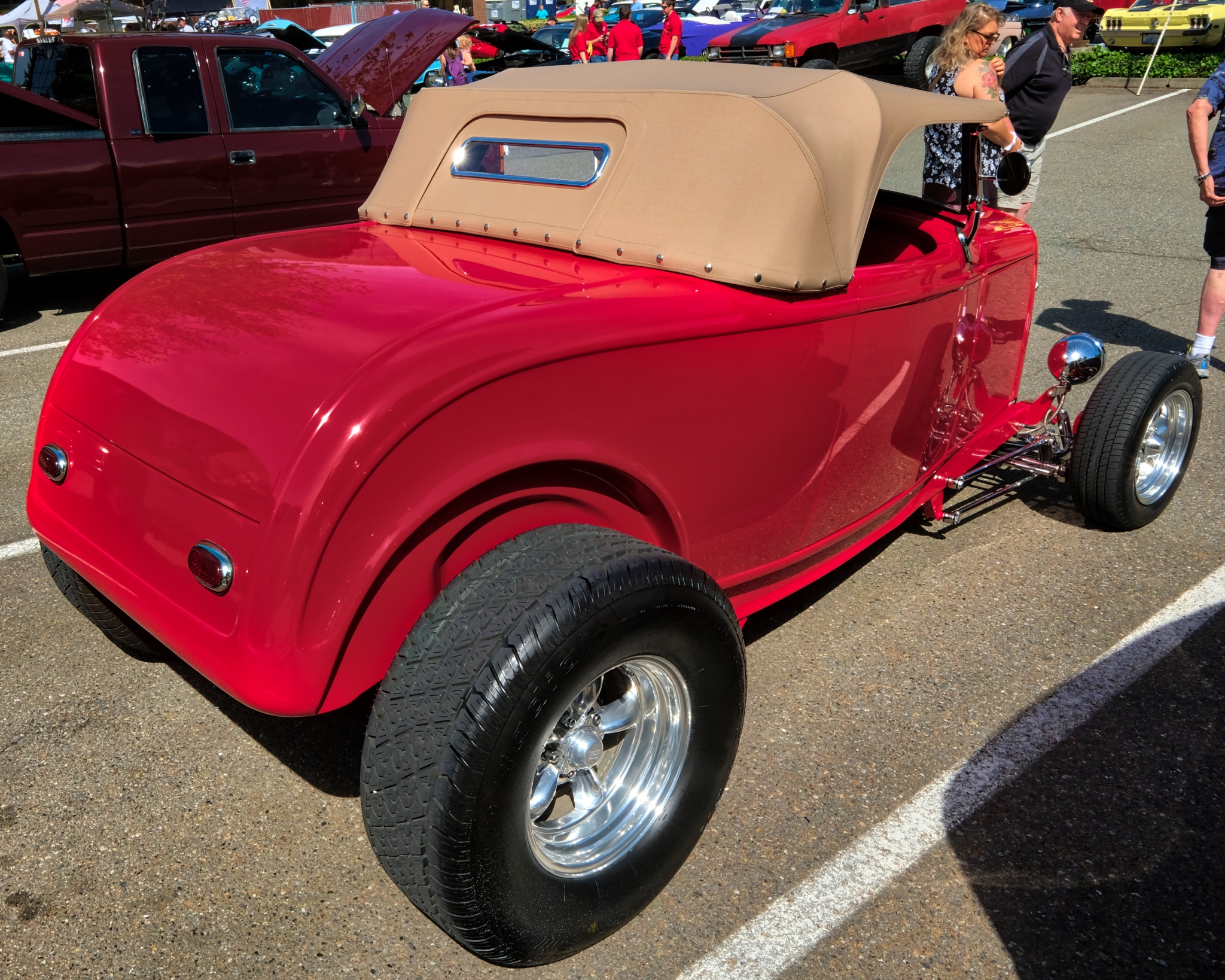
Another classic Deuce Highboy . . . in red. Tidy.
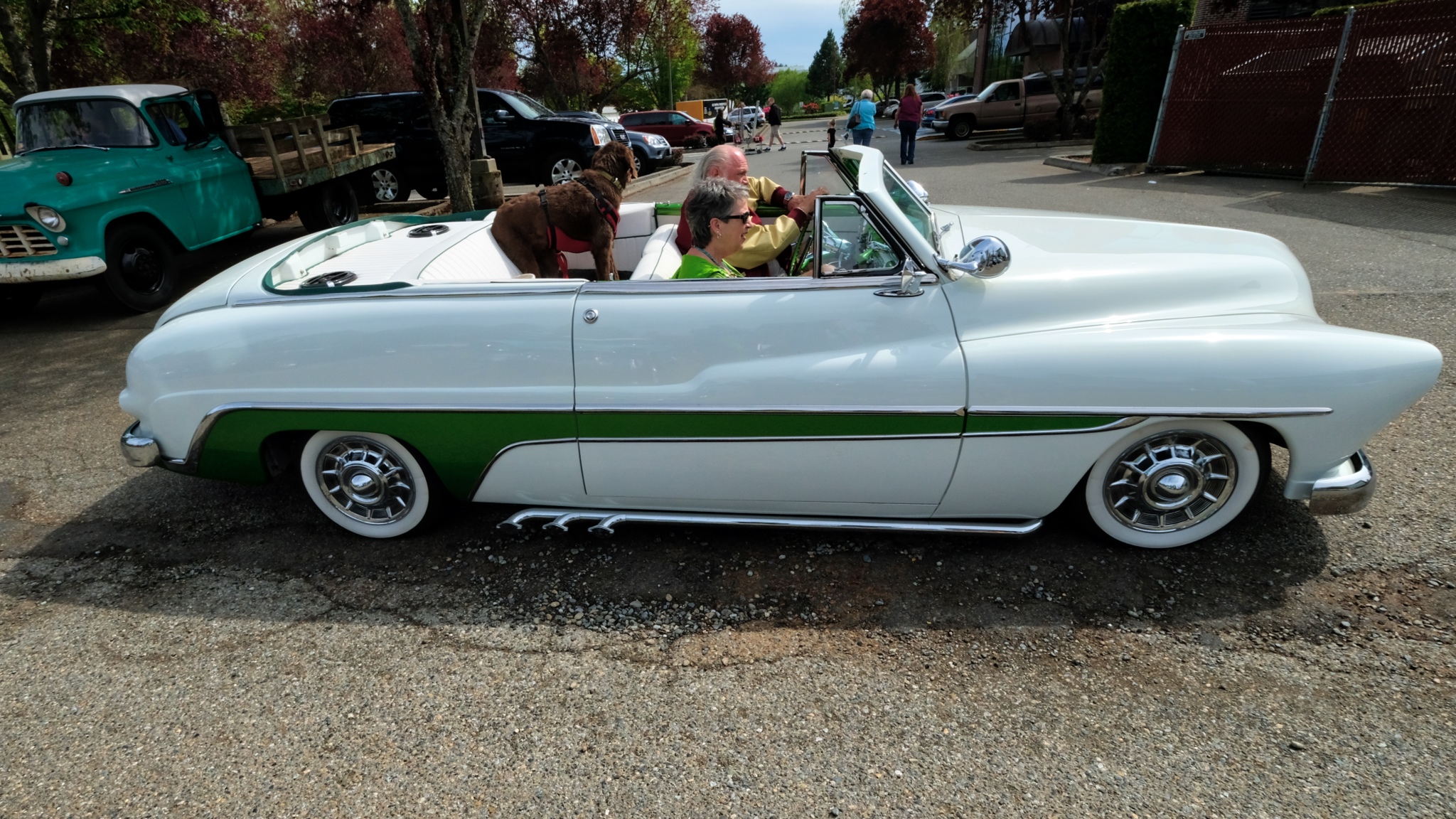
Winner, Best in Show . . . custom '49 Mercury convertible. WOW!
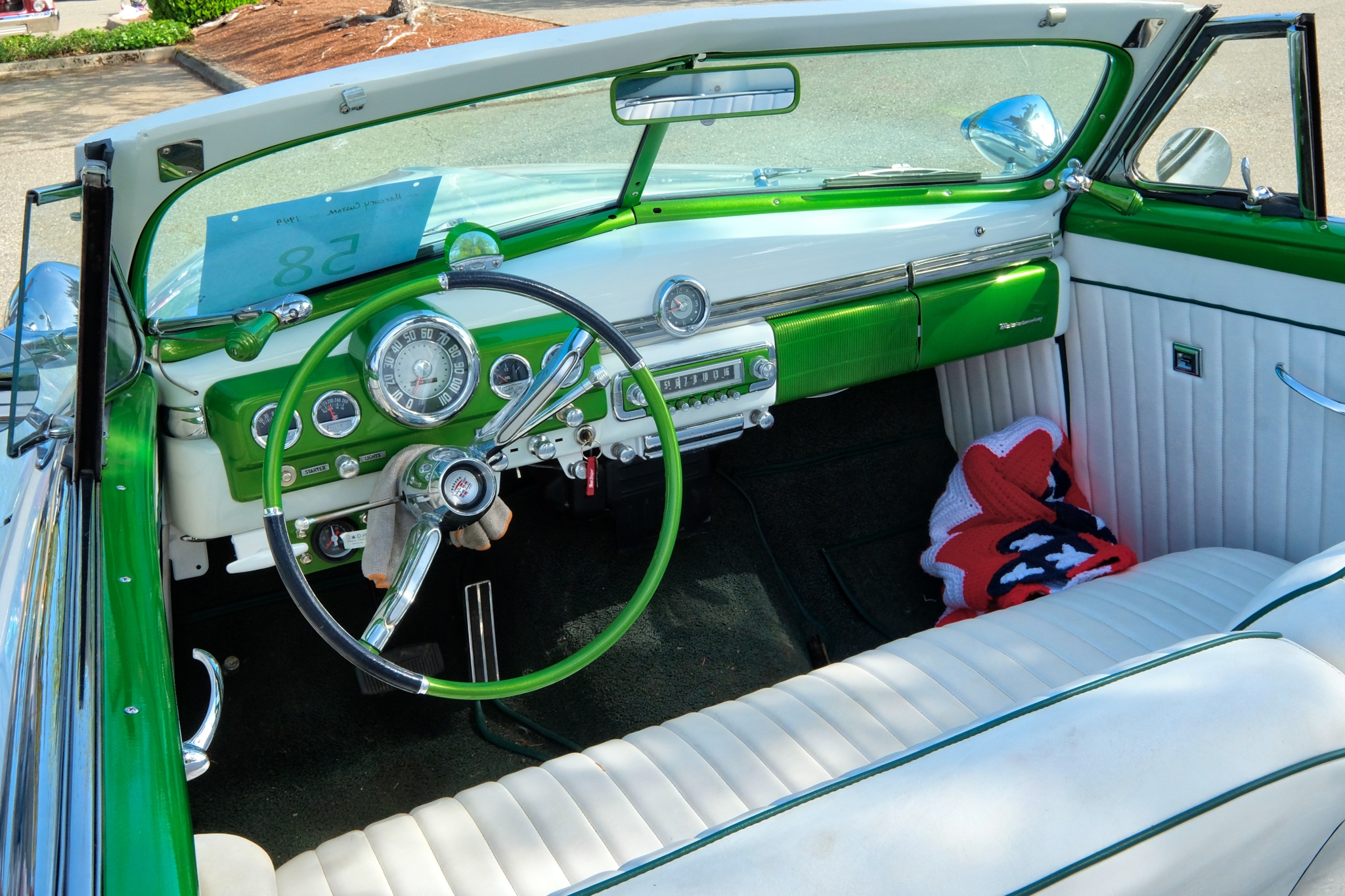
The dashboard on the Best of Show '49 Merc.
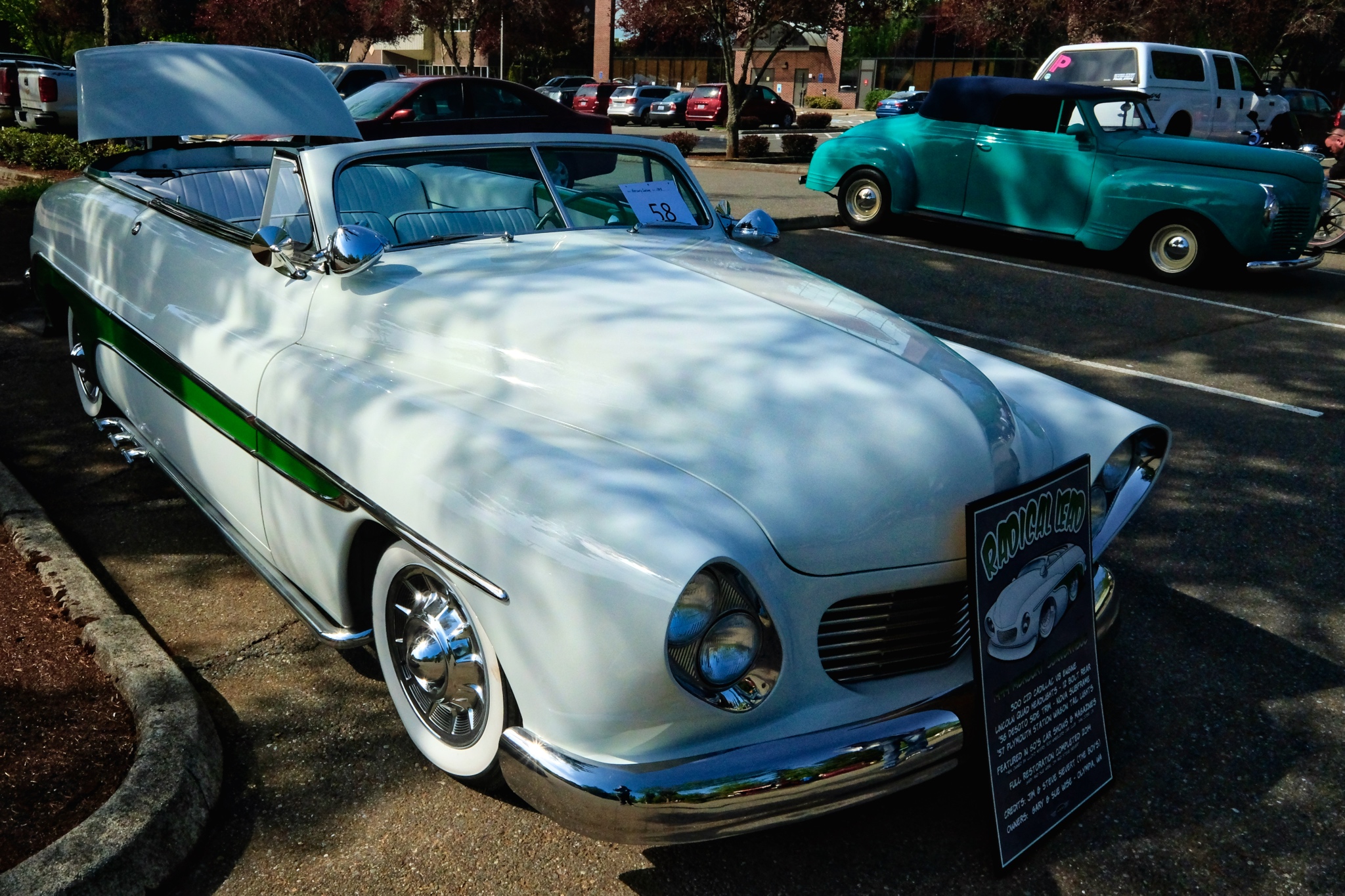
A beautiful customized Hot Rod. Classic!
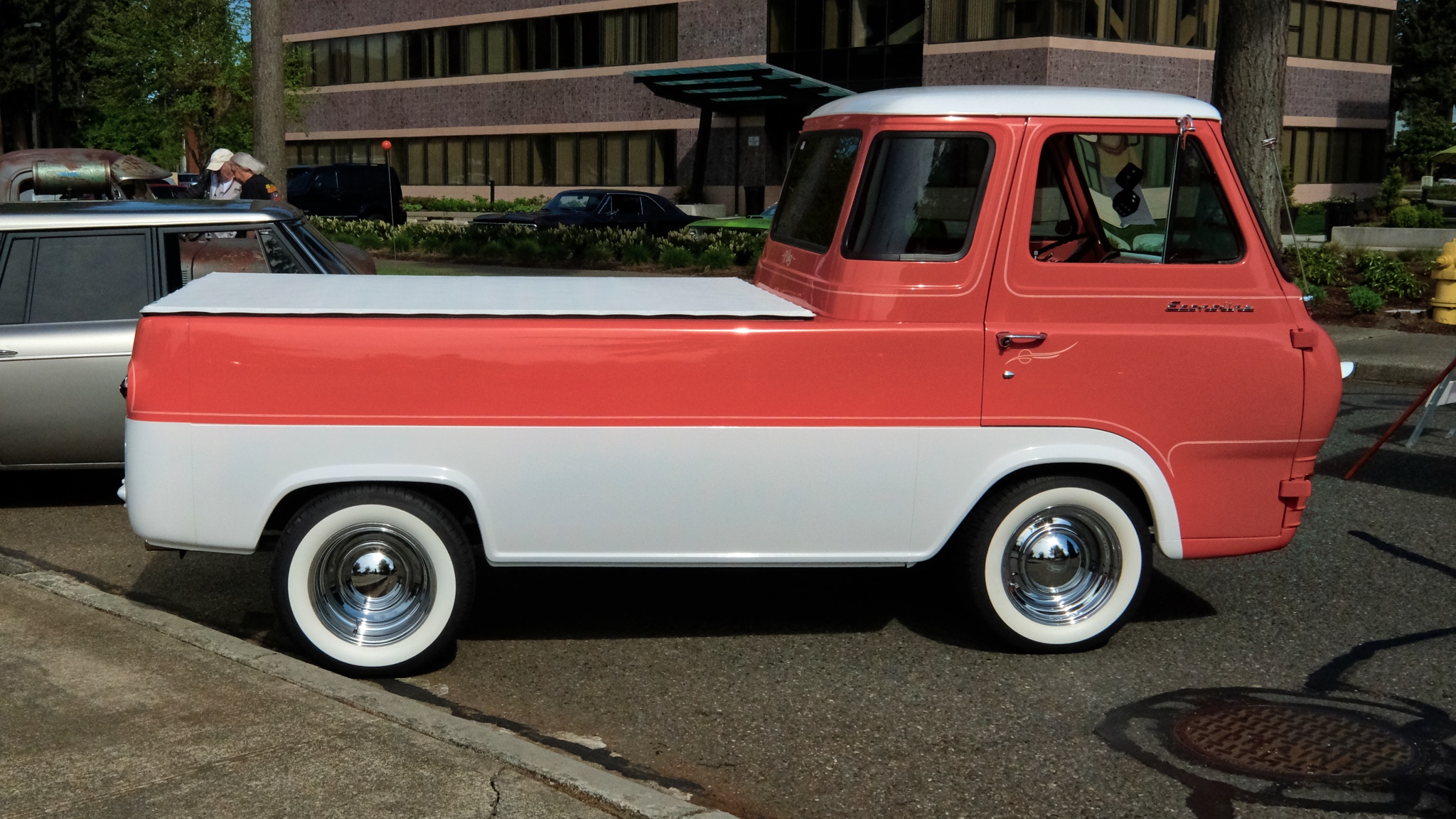
Another of my favorites, and winner of the Best Truck in Show, was this Ford Econoline pick-up. It was a real crowd favorite too.
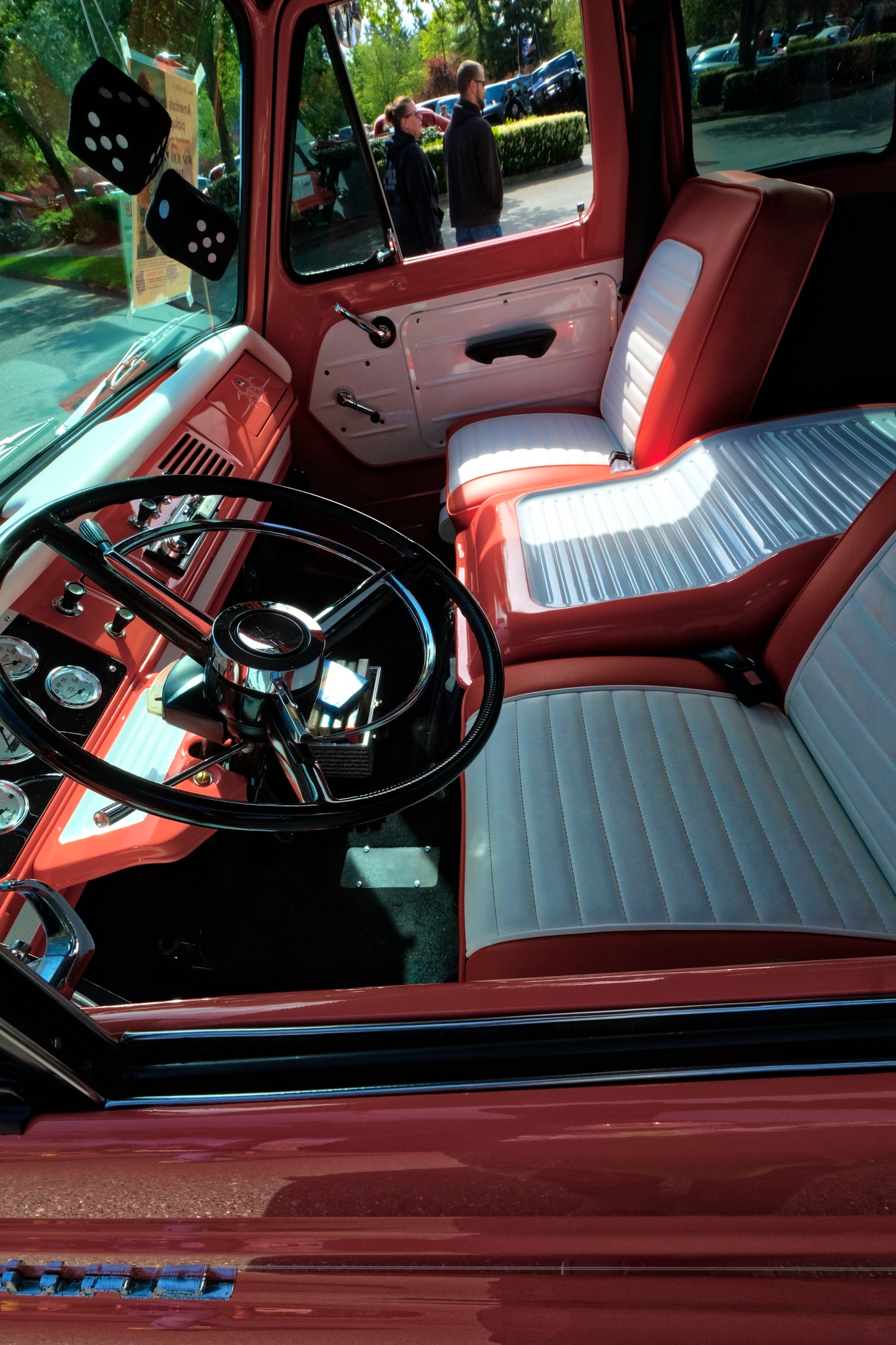
The Ford Econoline interior.
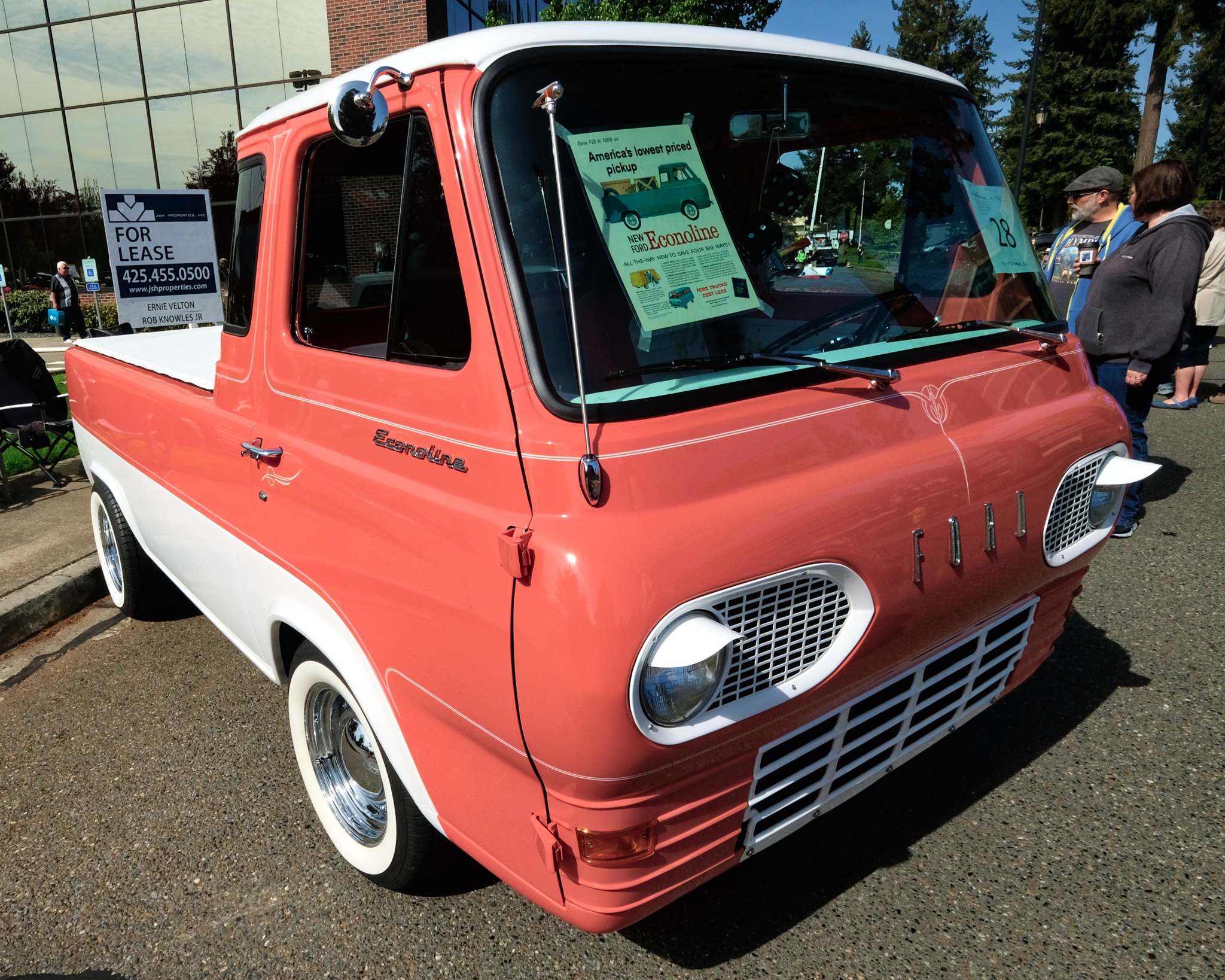
Cute 'eyelids'.
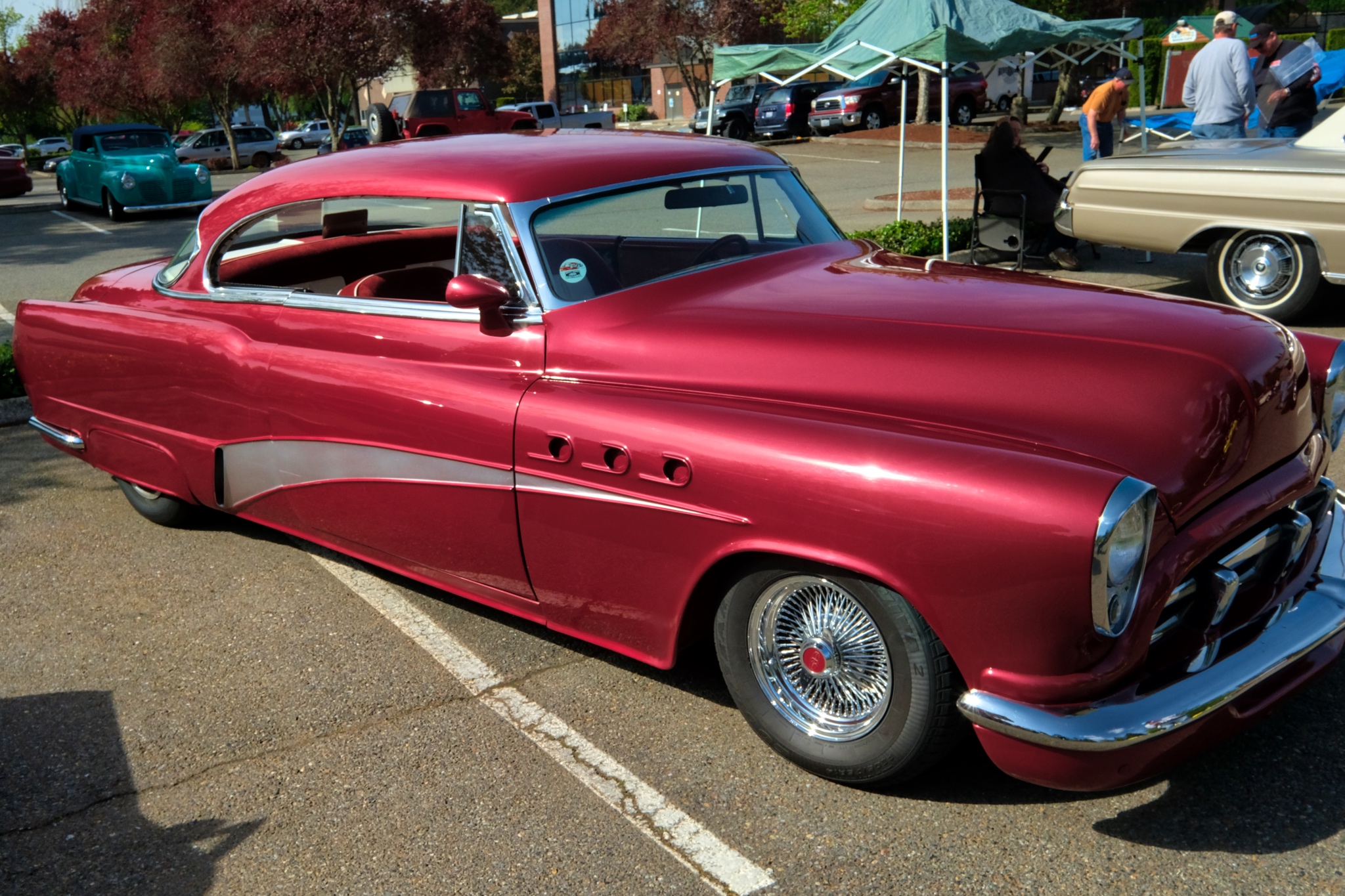
Nice old Buick hot rod.
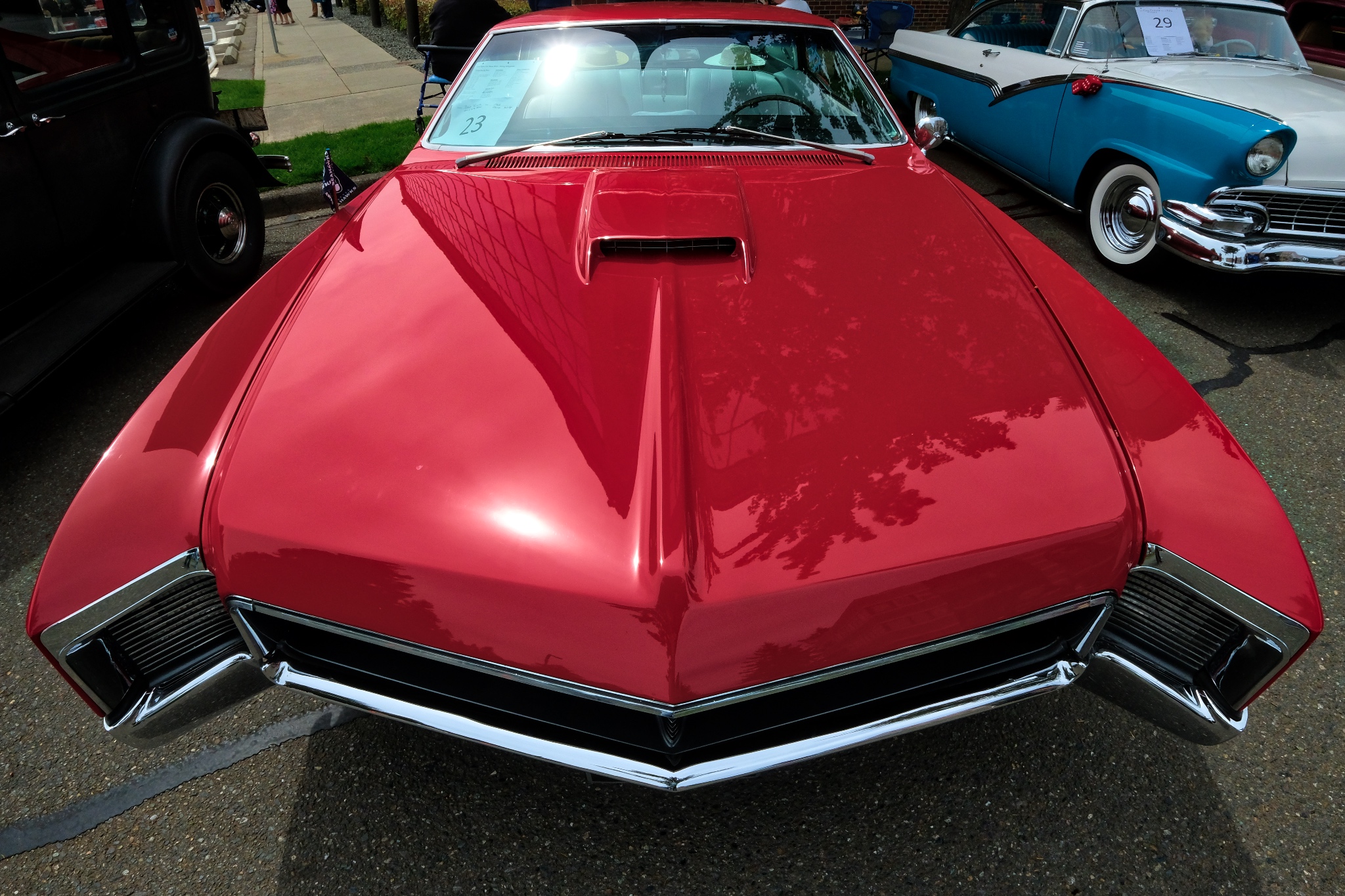
Another Buick . . . custom Riviera.
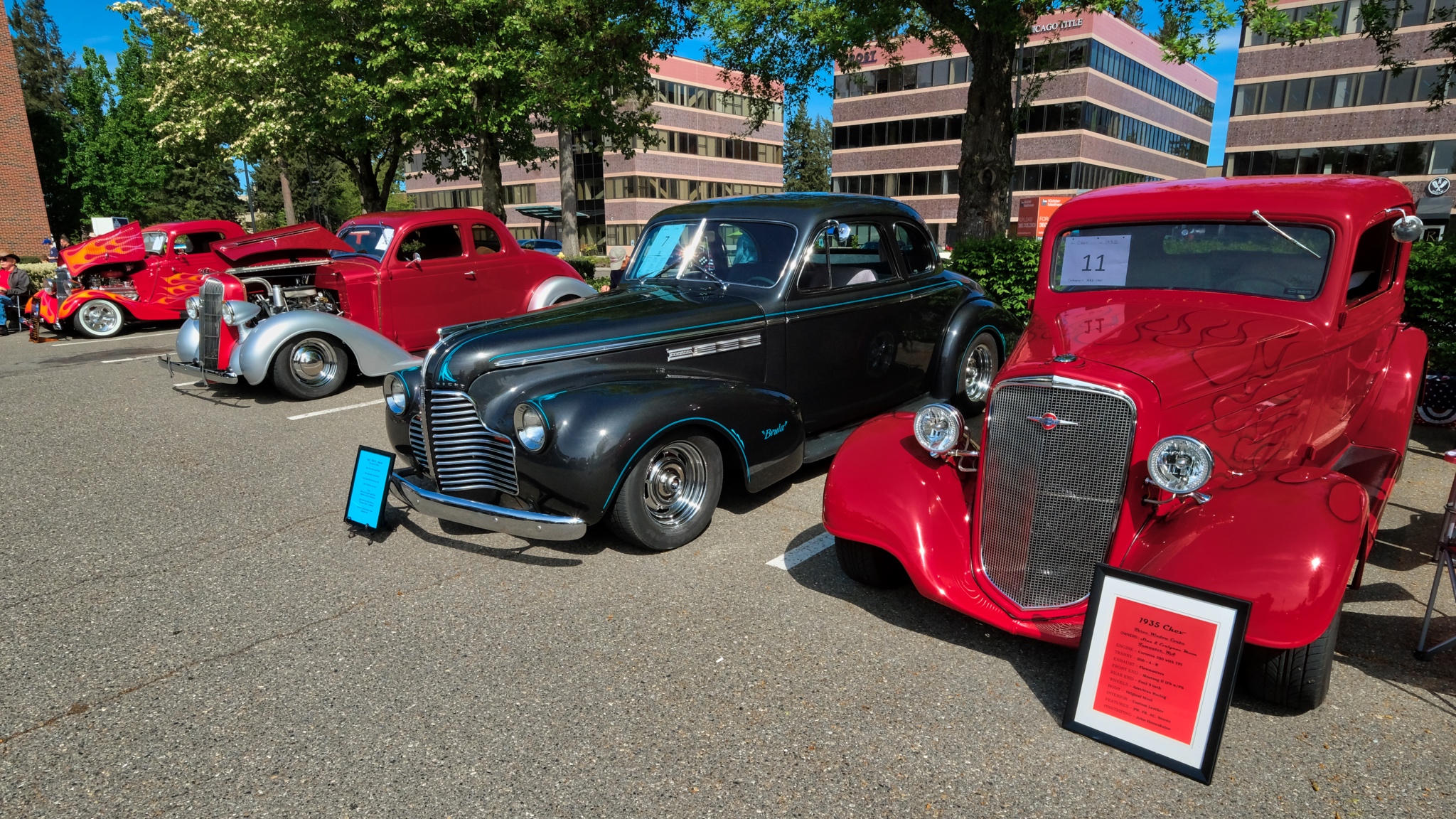
I had a lot of fun walking around the car shows . . . talking with the car owner/builders about their pride and joy . . . and answering questions about my brother's '55 Chevy.
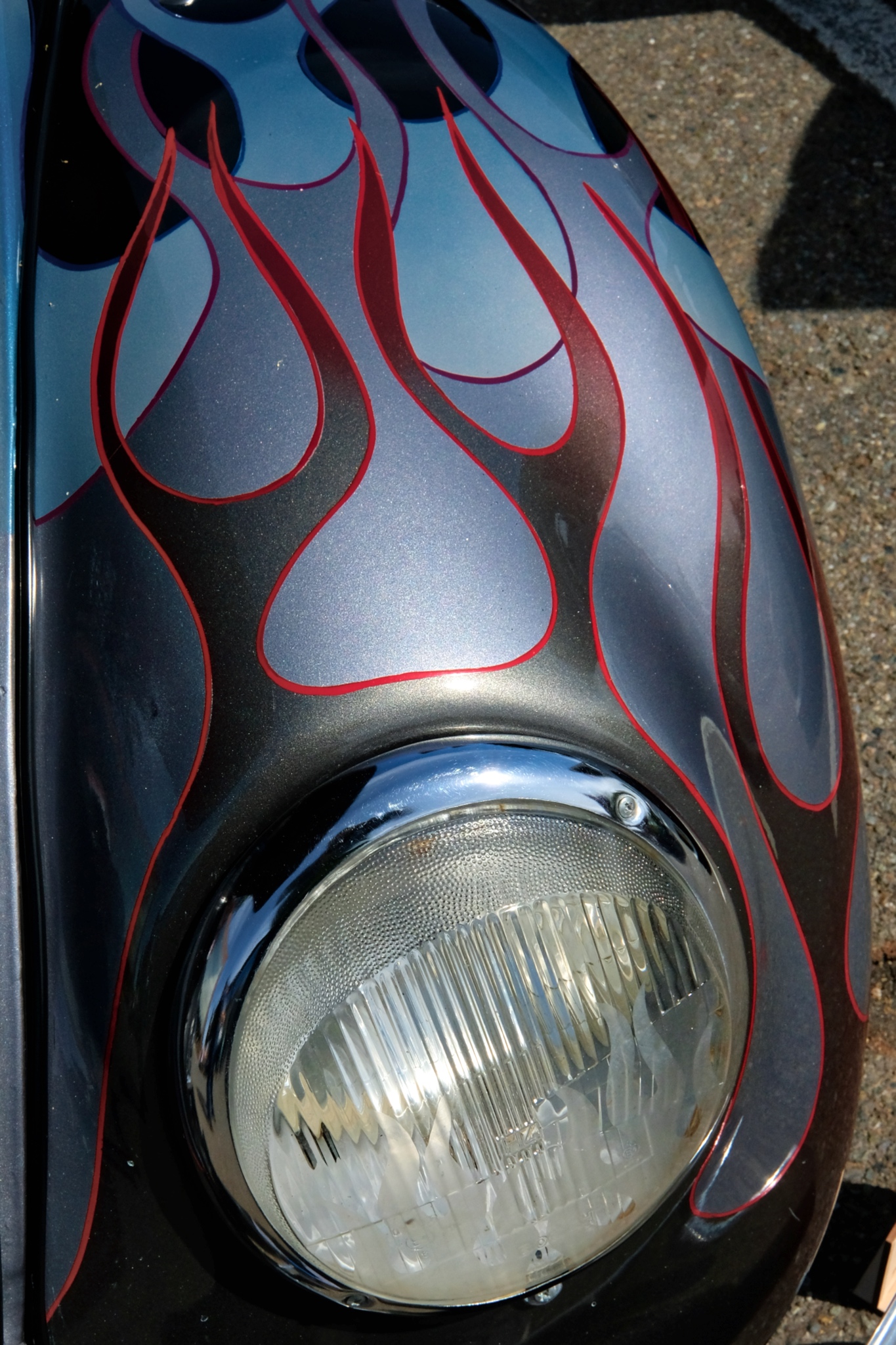
It had been many years since I attended a hot rod show . . . and now I have my fill!
The Procession of Species
 Wednesday, May 2, 2018 at 12:15AM
Wednesday, May 2, 2018 at 12:15AM An annual parade in Olympia, Washington State, USA brings families, teens, and old folks together in celebration of the life on our planet.
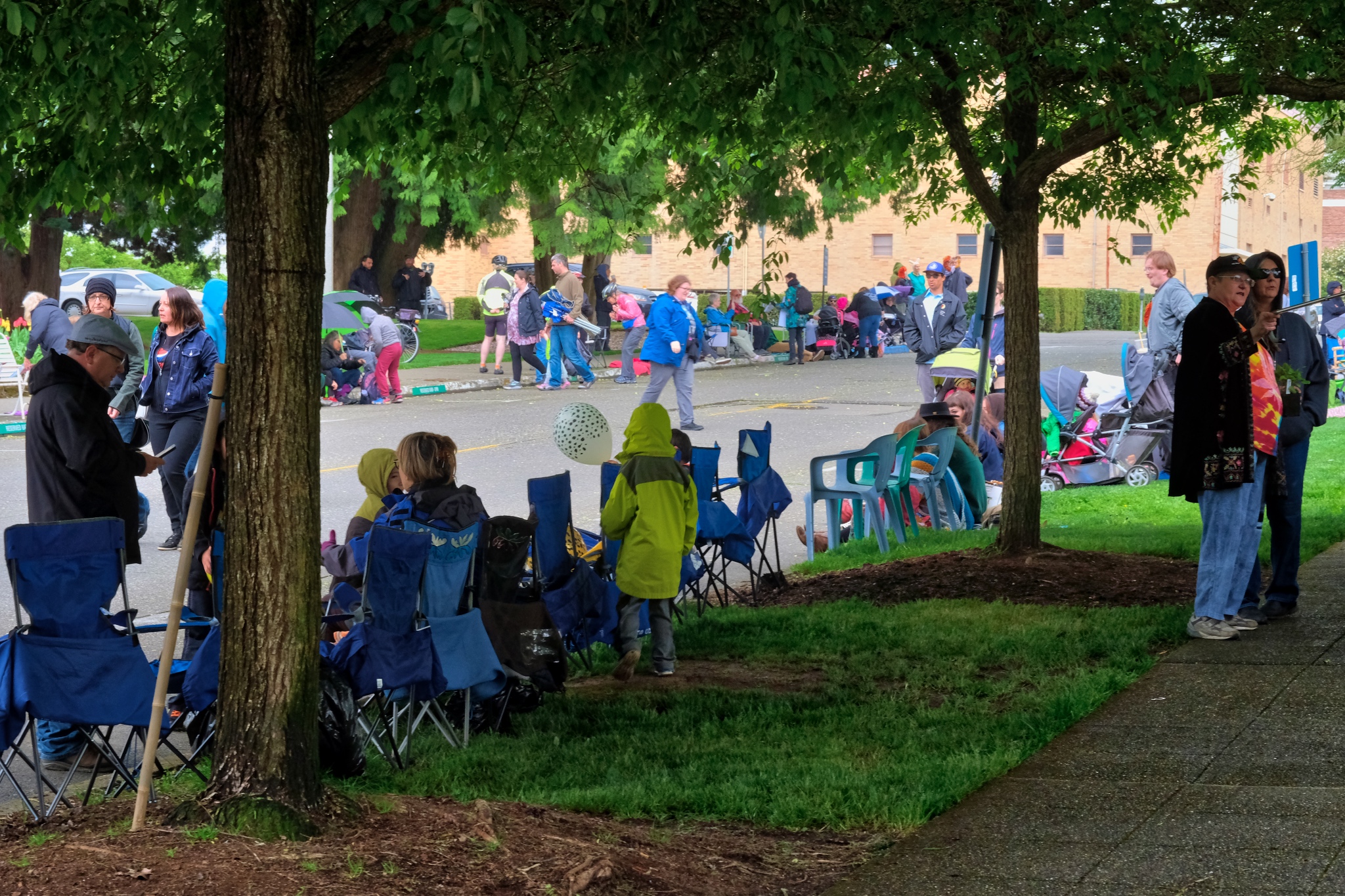
A popular event in Olympia, Washington is the Procession of Species. The townsfolk arrive early to grab the best viewing spots along the route.
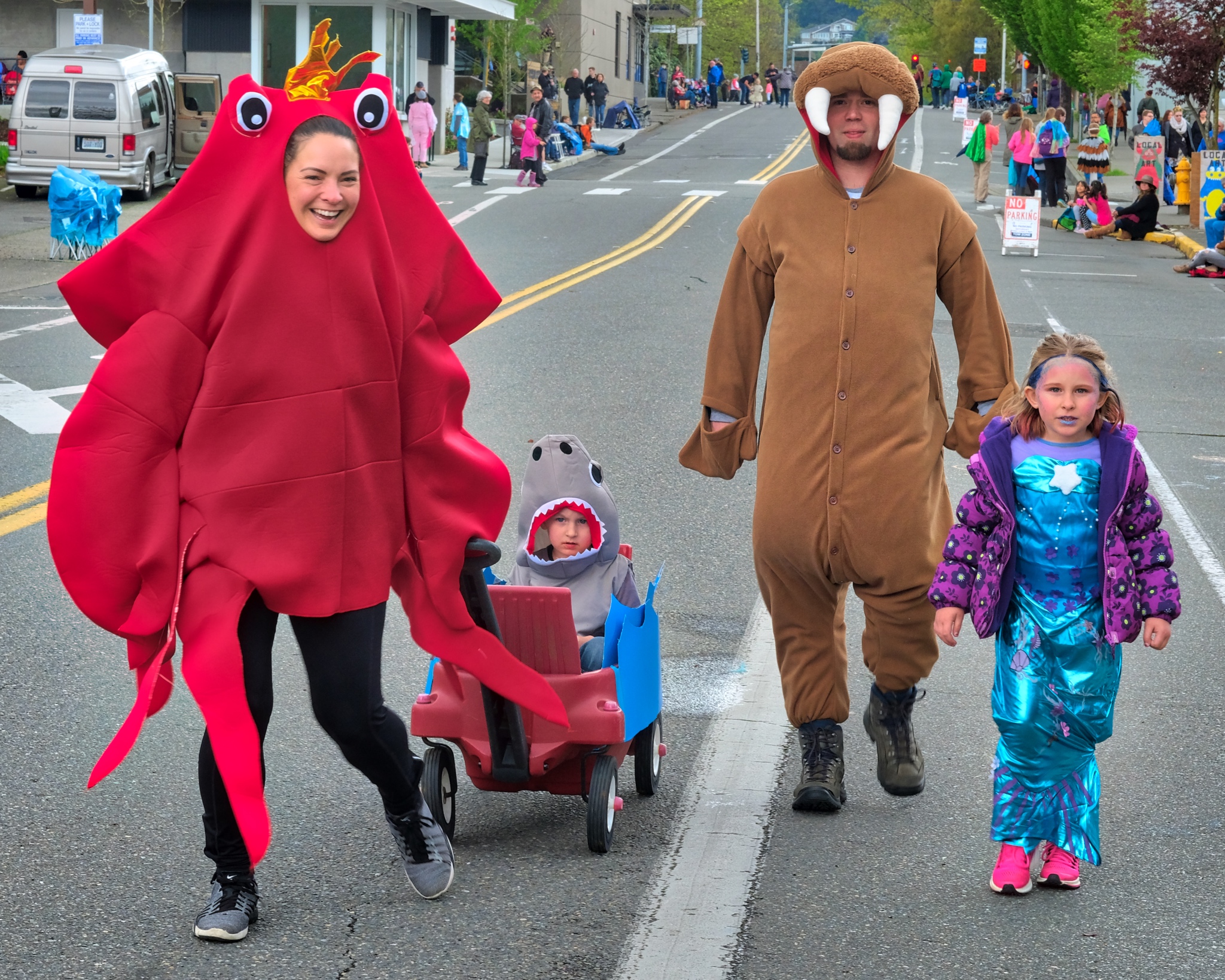
For families, the parade is an opportunity to dress up and walk down Main Street together.
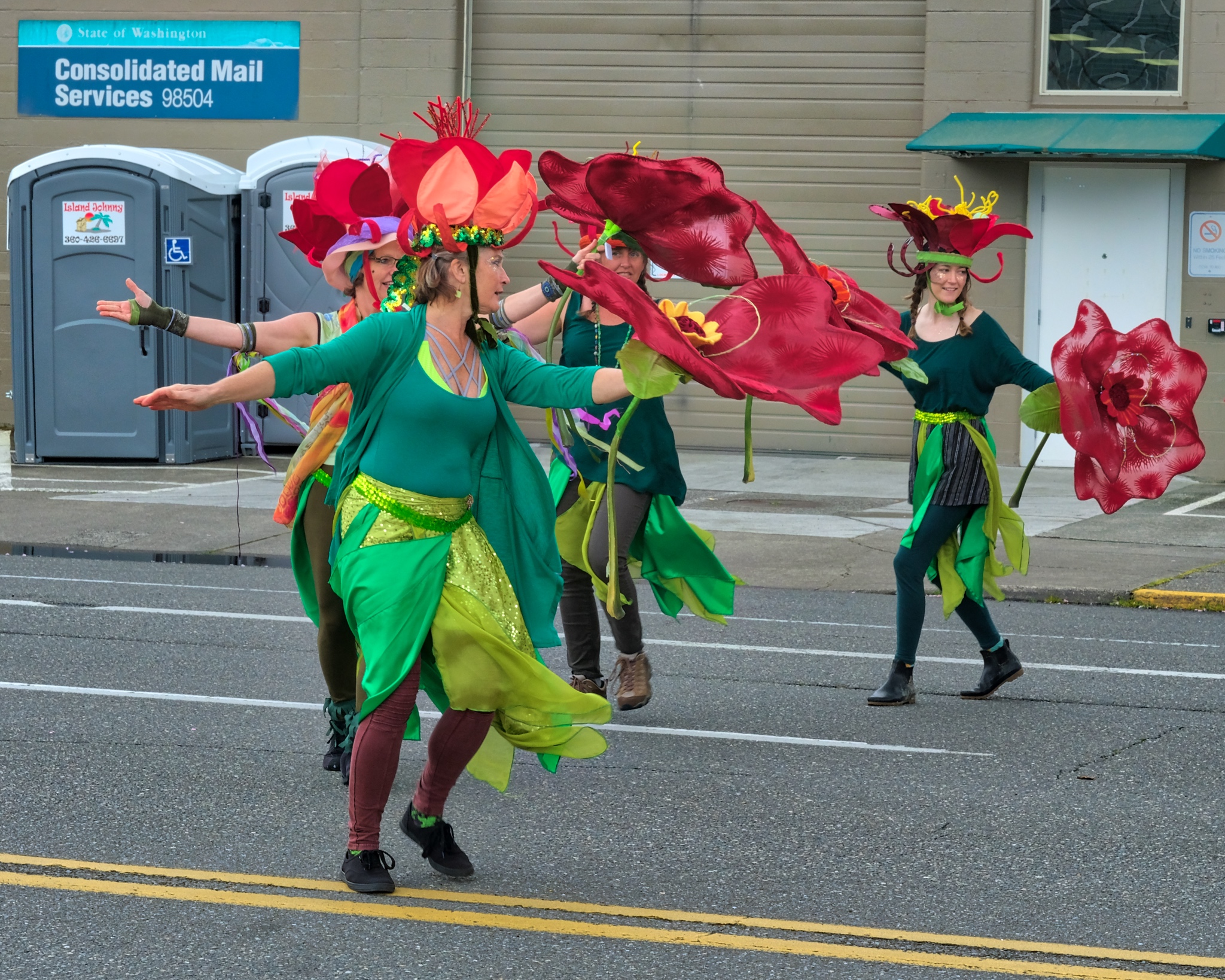
Groups of friends, of all ages, gathered hours before the official start to practice their street routines.
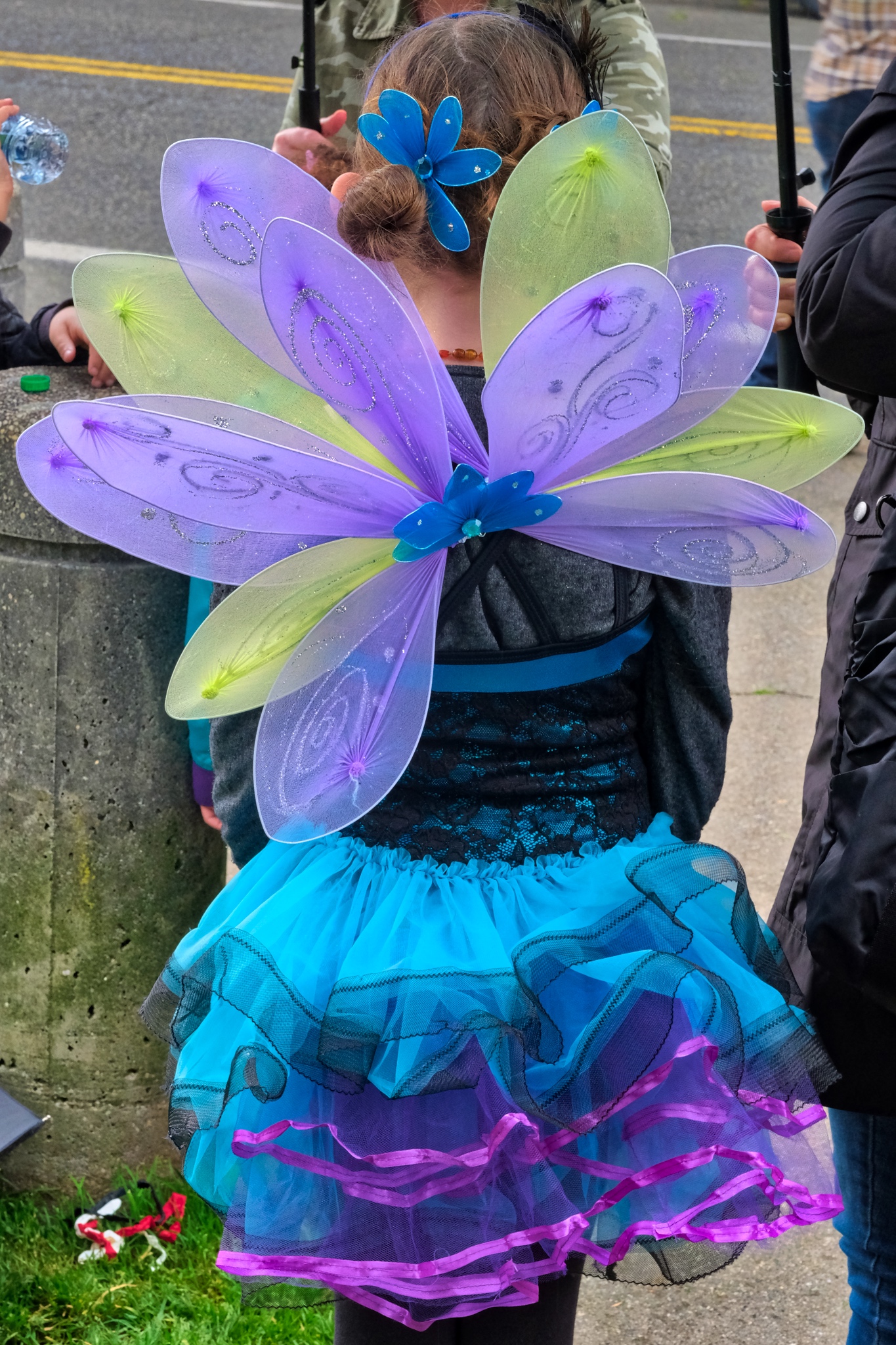
For the children . . . heaven!
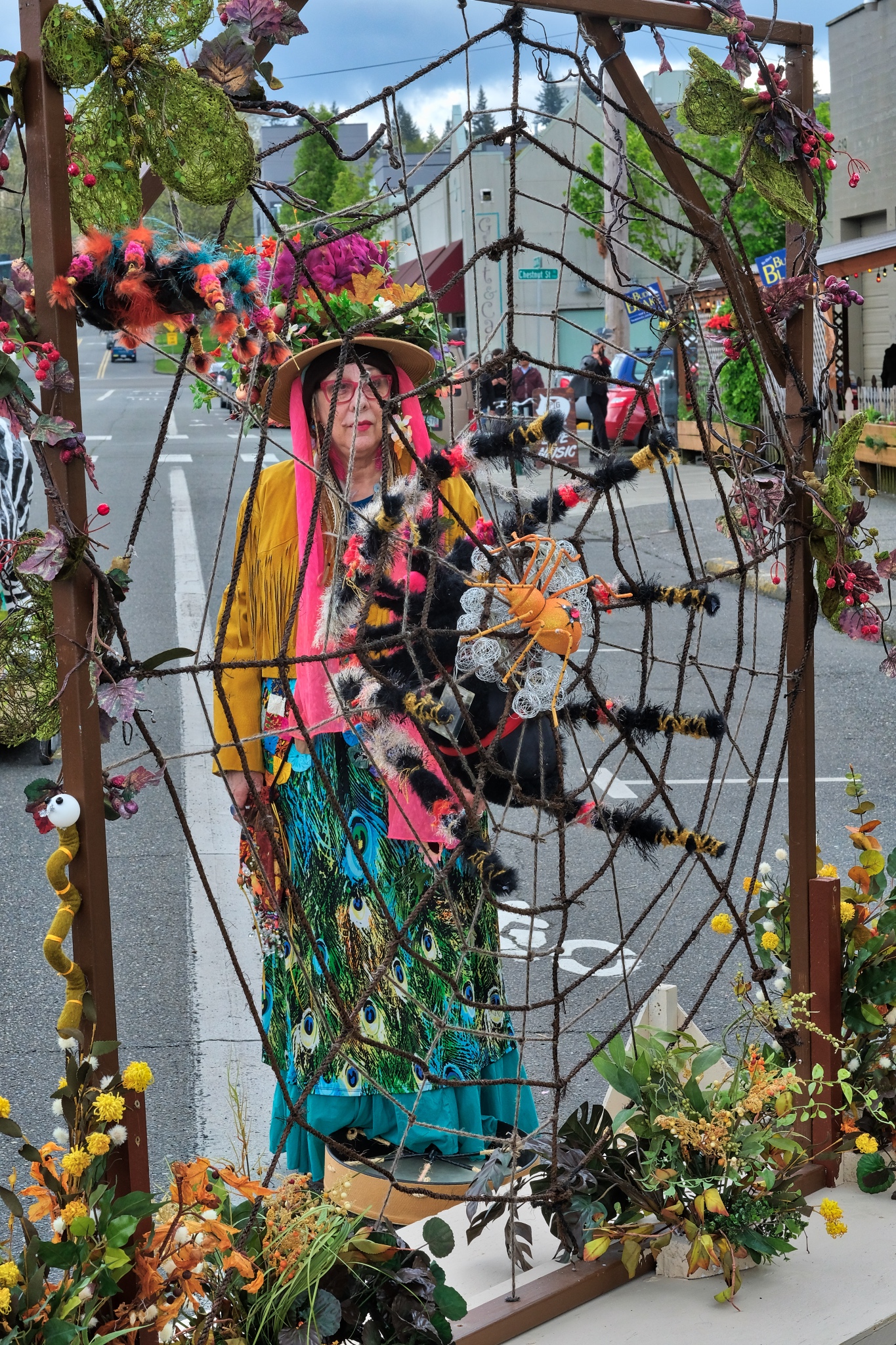
The parade rules were simple: any species that lives in the air, under the sea, or on the land . . . and NO motorized vehicles.
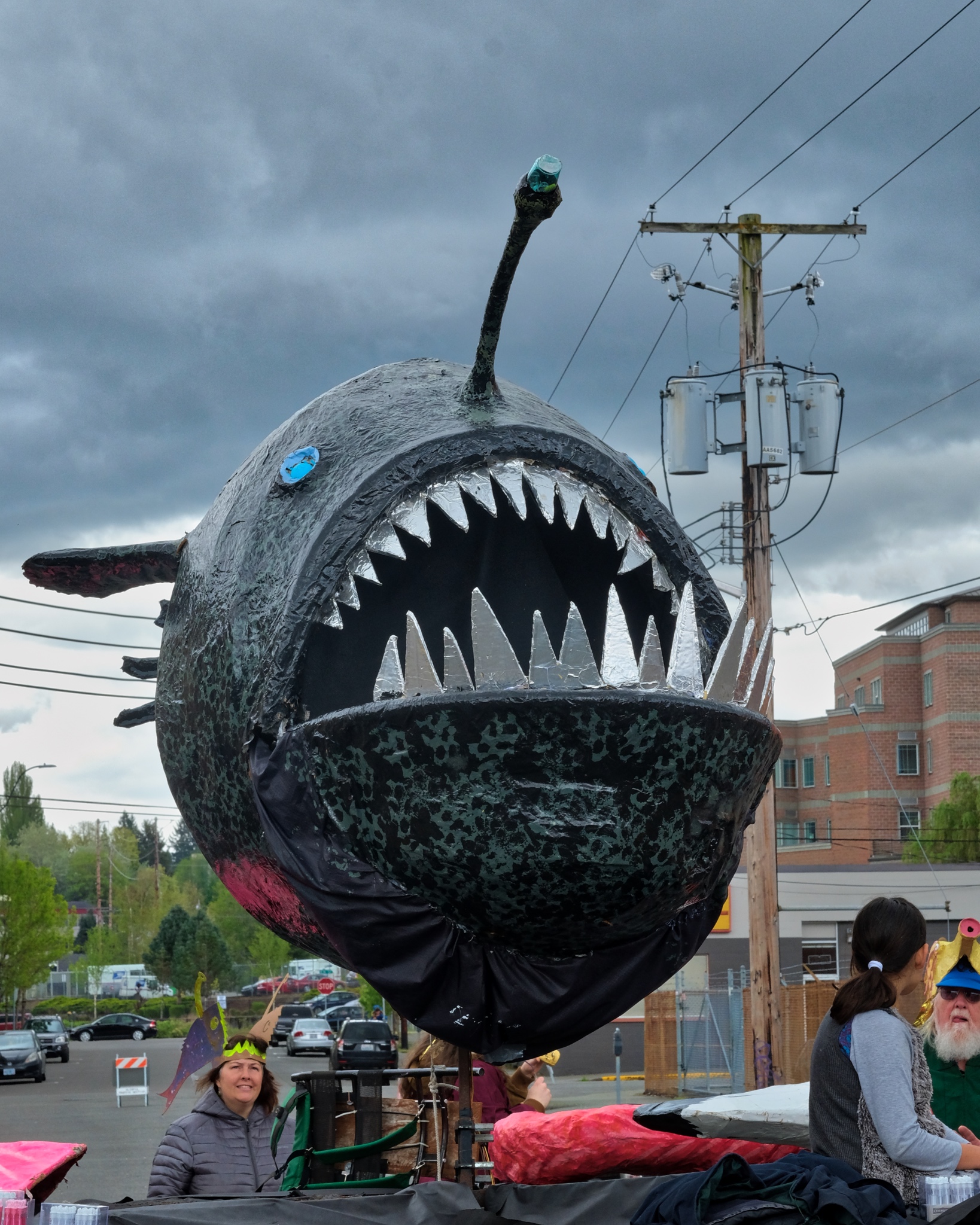
I wandered the pre-parade staging areas for these portraits of the communities' creativity.
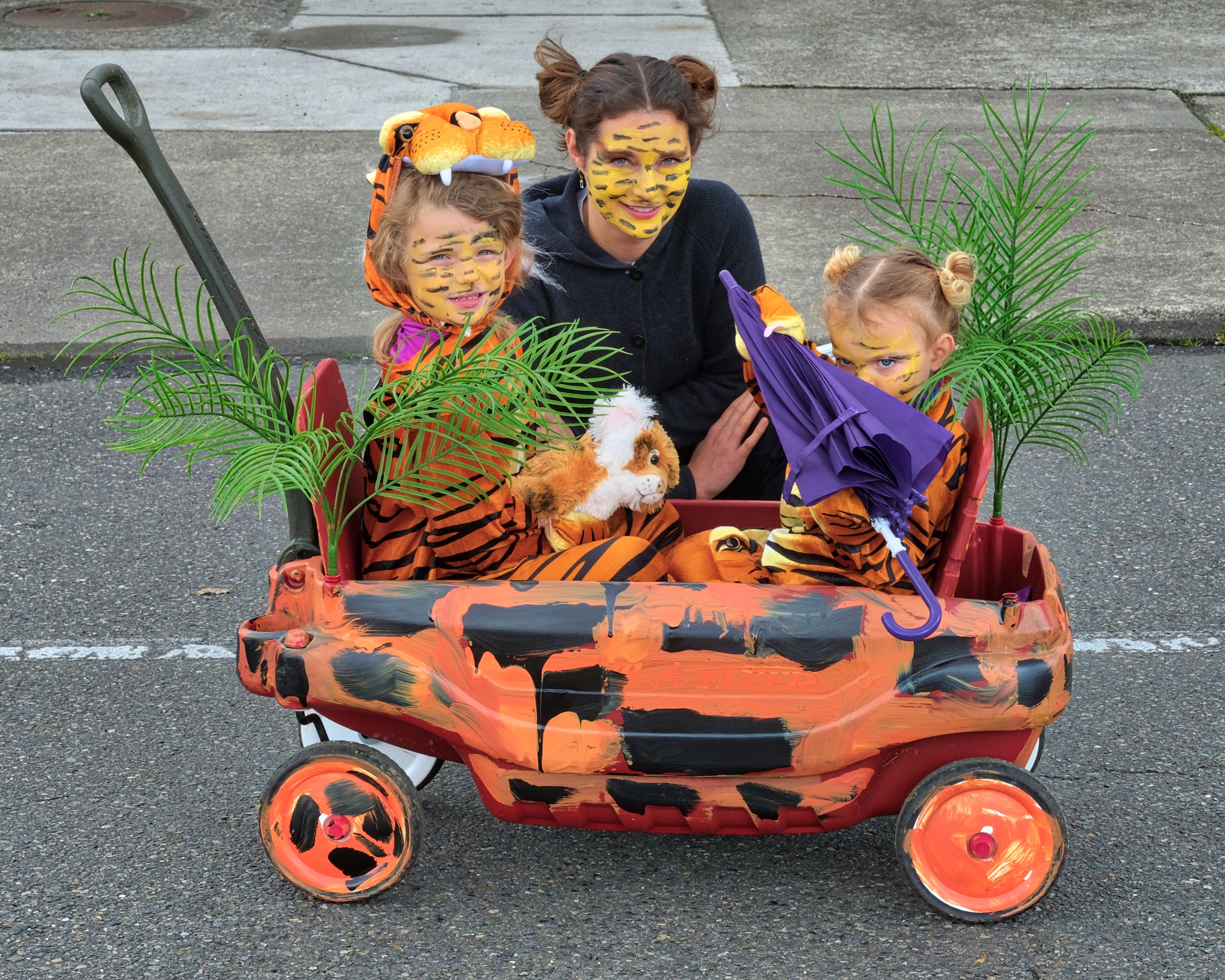
The kids were ready. Cute.

The city came around with wagons full of colored chalk for the children . . . . and came around later to collect the unused chalk.
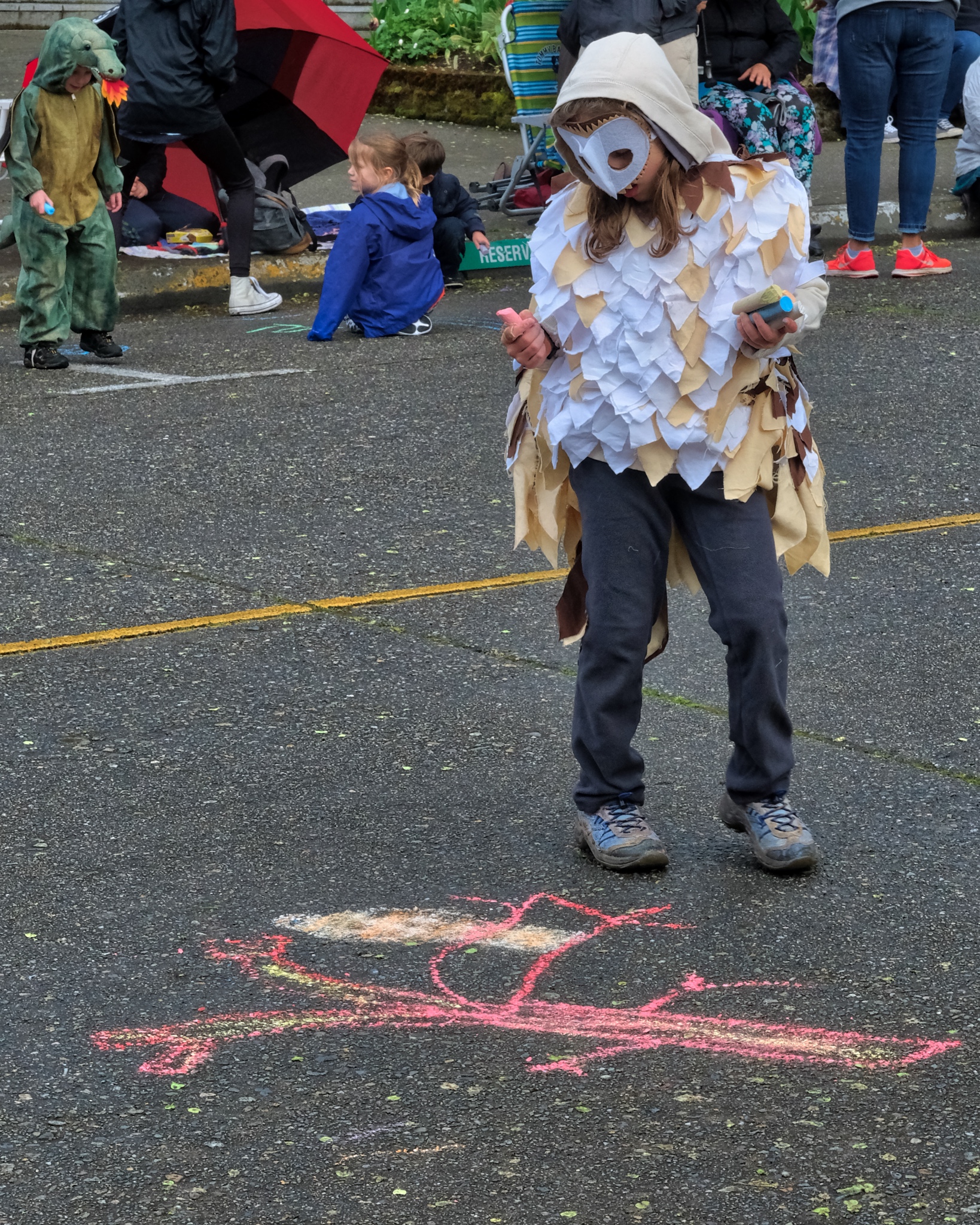
Bird Girl!
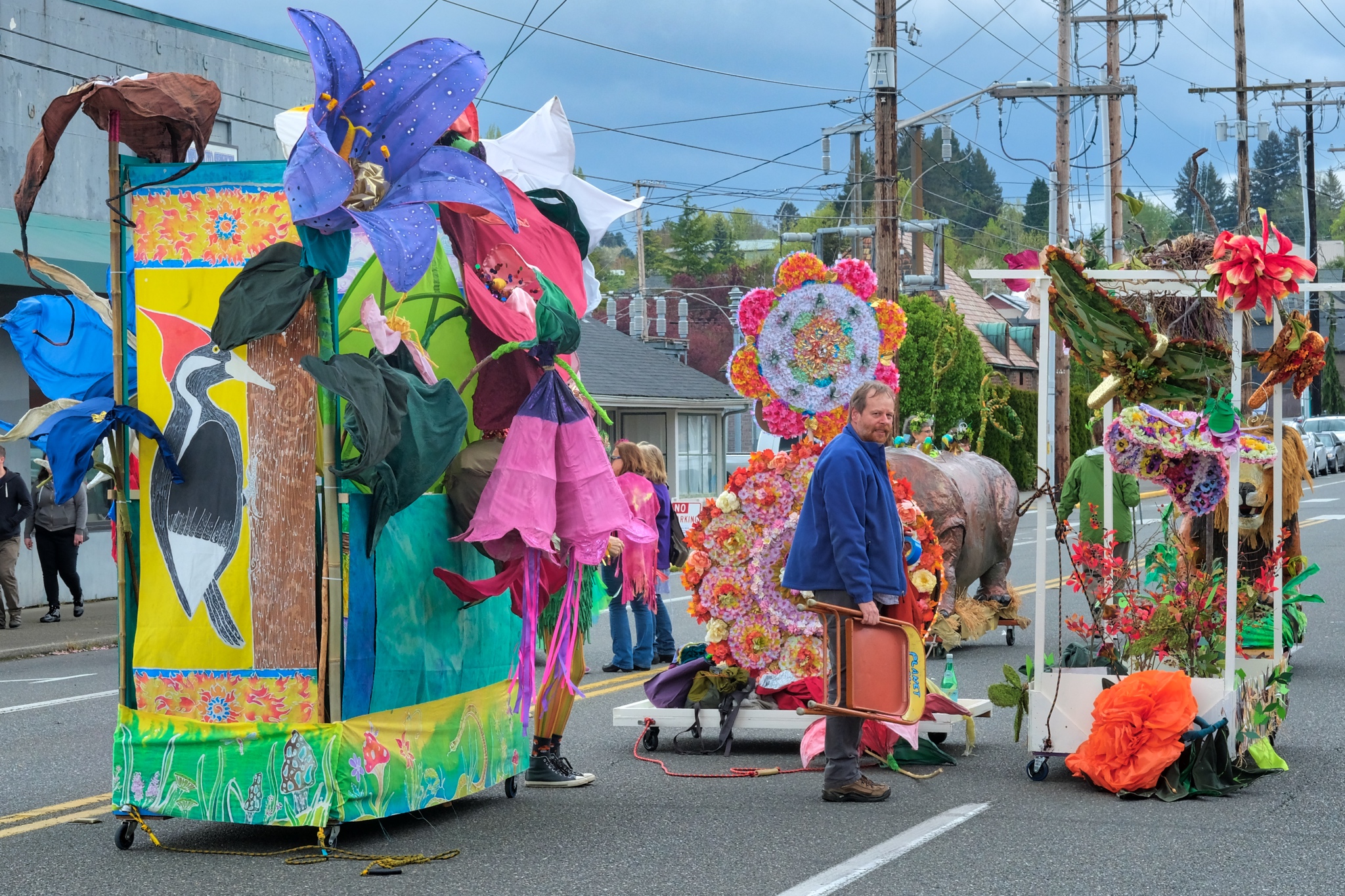
Floats . . . getting ready to parade.
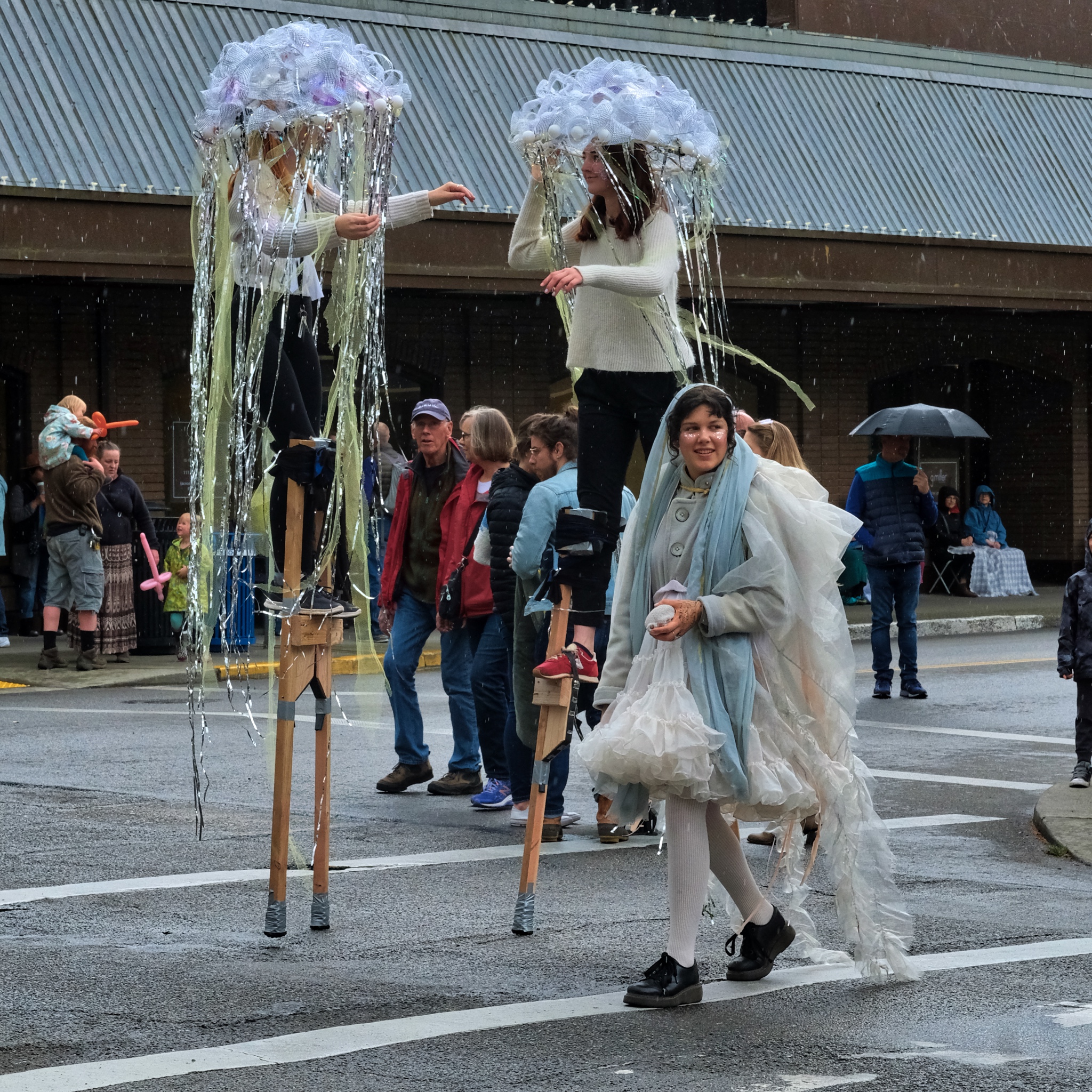
Stilted sea creatures arriving for the parade.
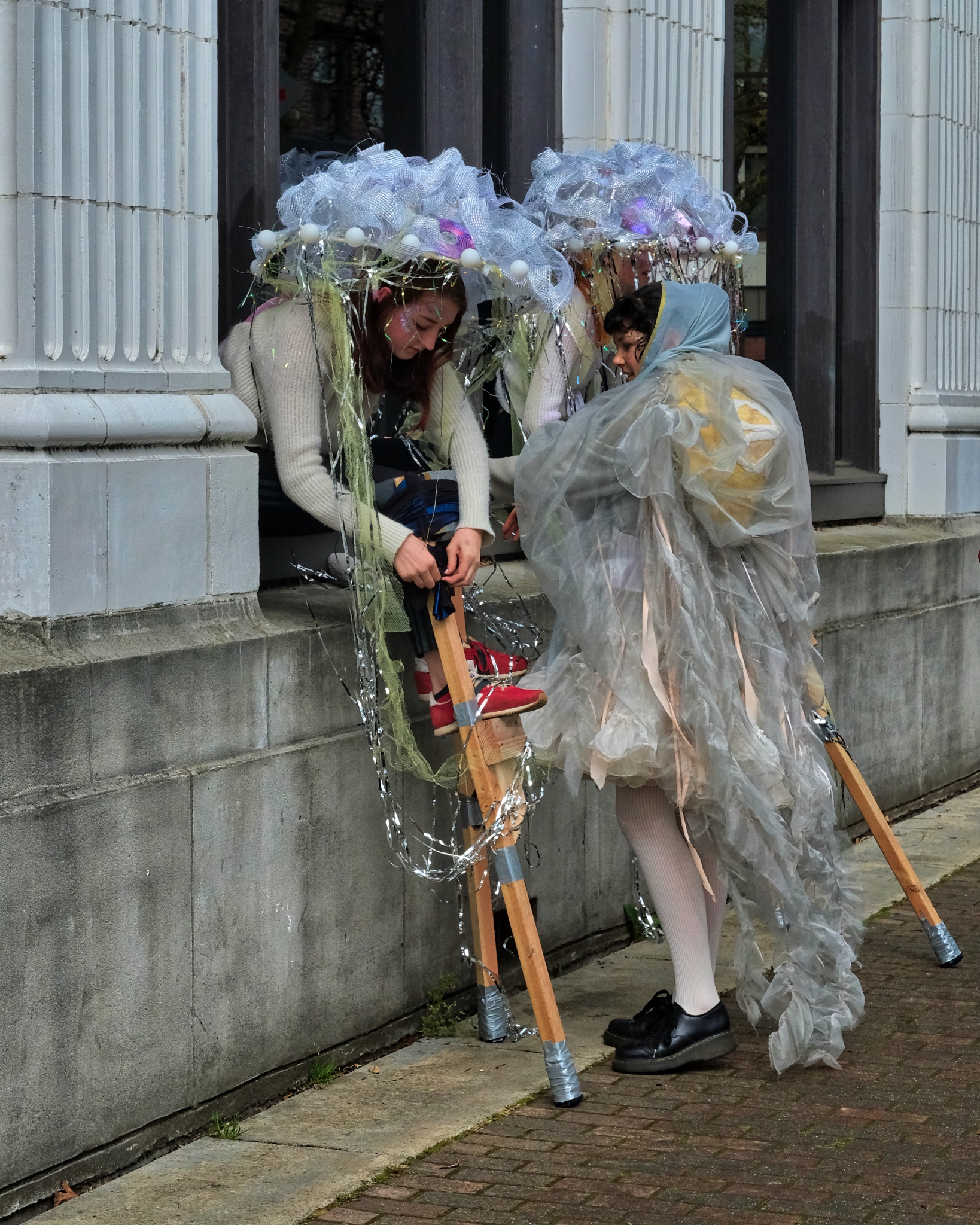
Final adjustments for comfort before the long march.
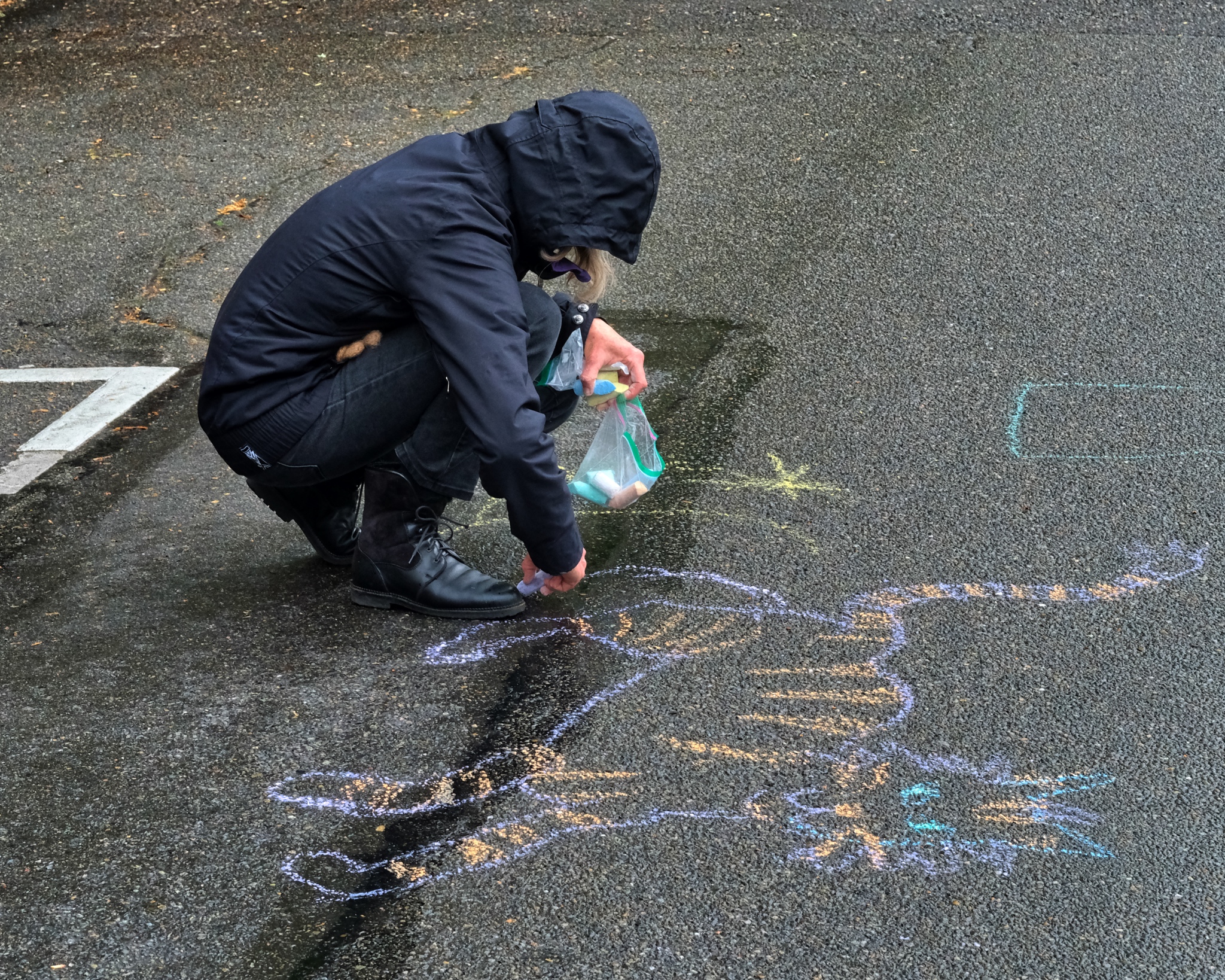
Some of the children 'street artists' were very good.
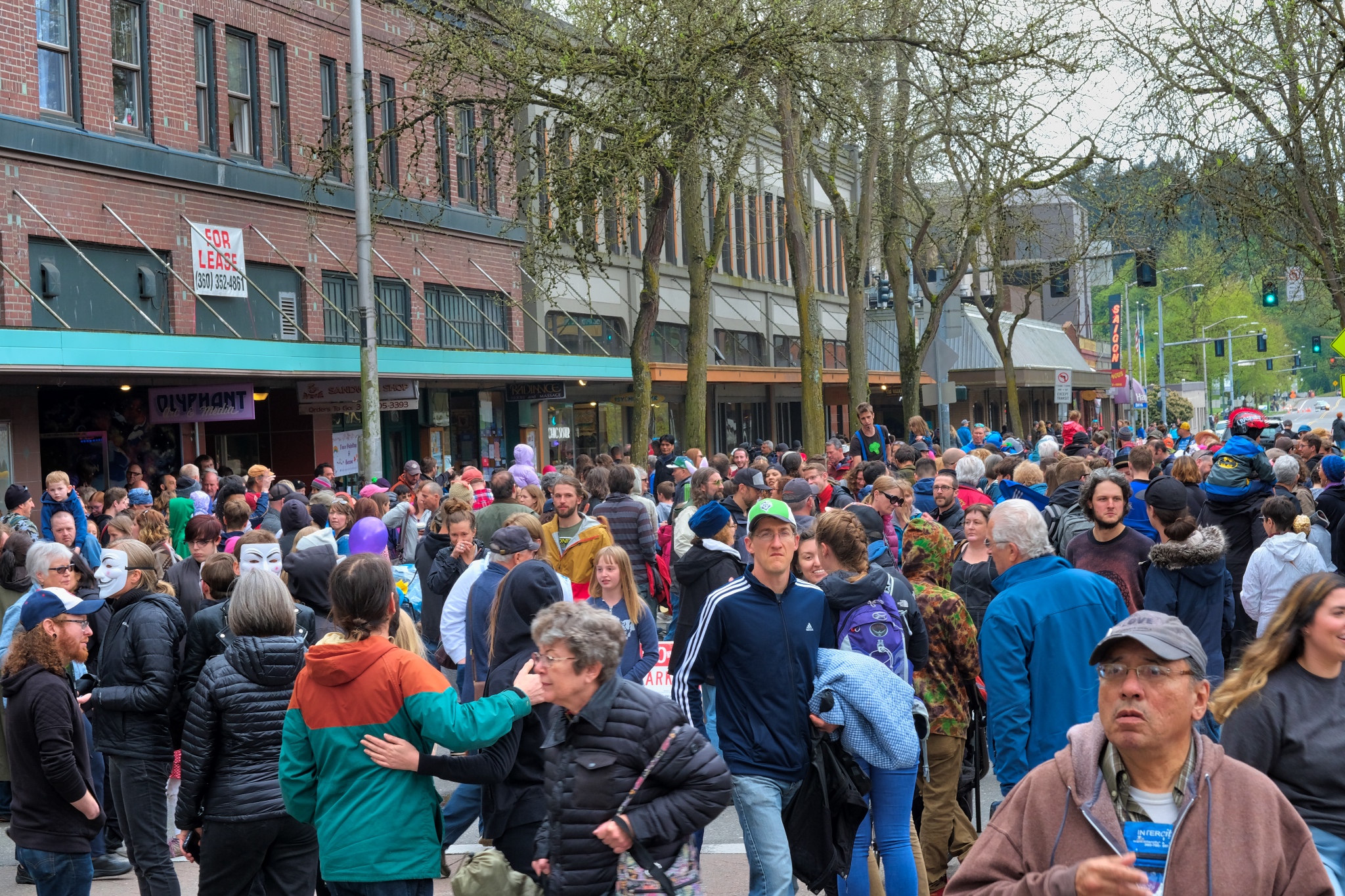
A large crowd began to assemble for the parade.
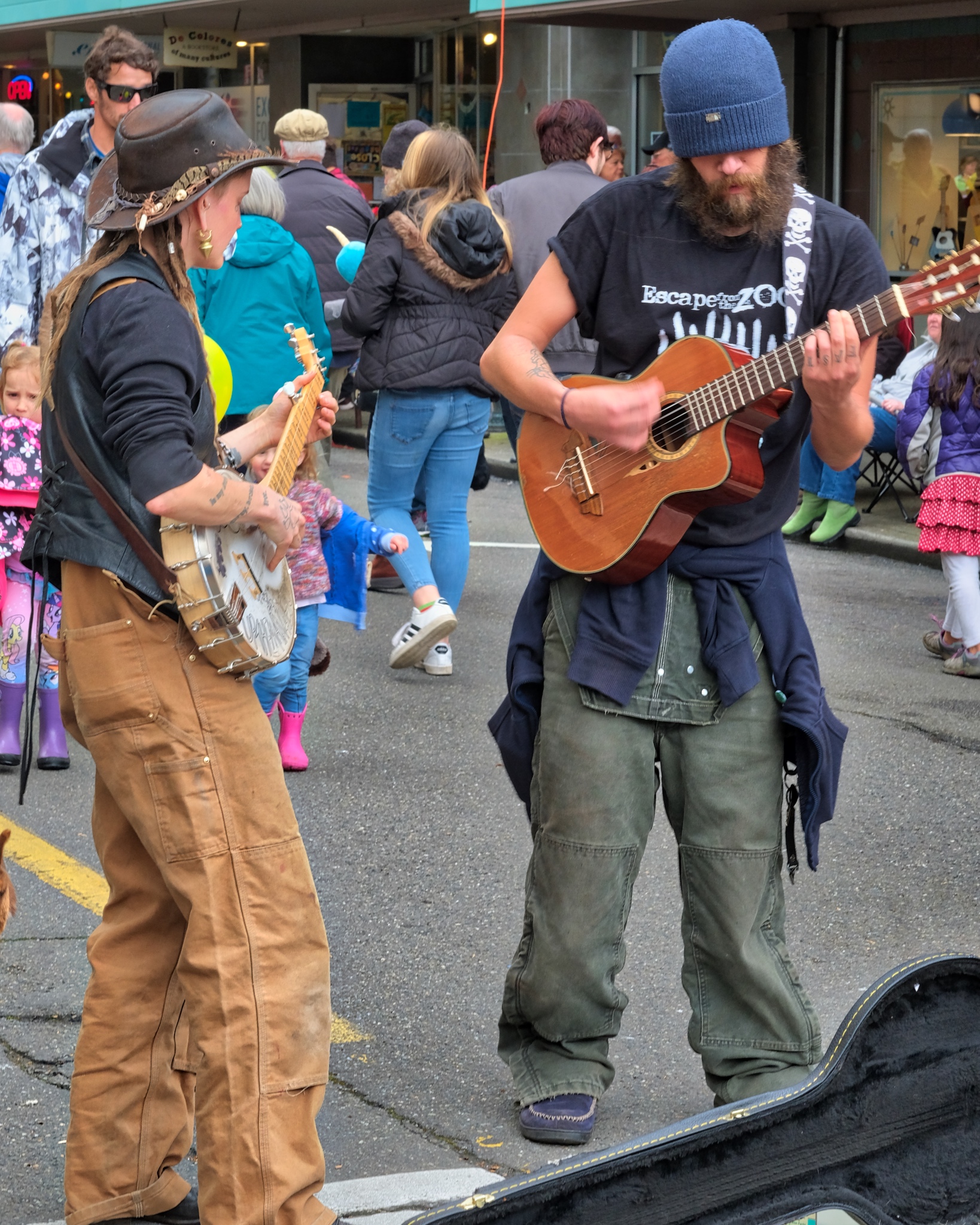
Wherever you have a large crowd, buskers will appear.
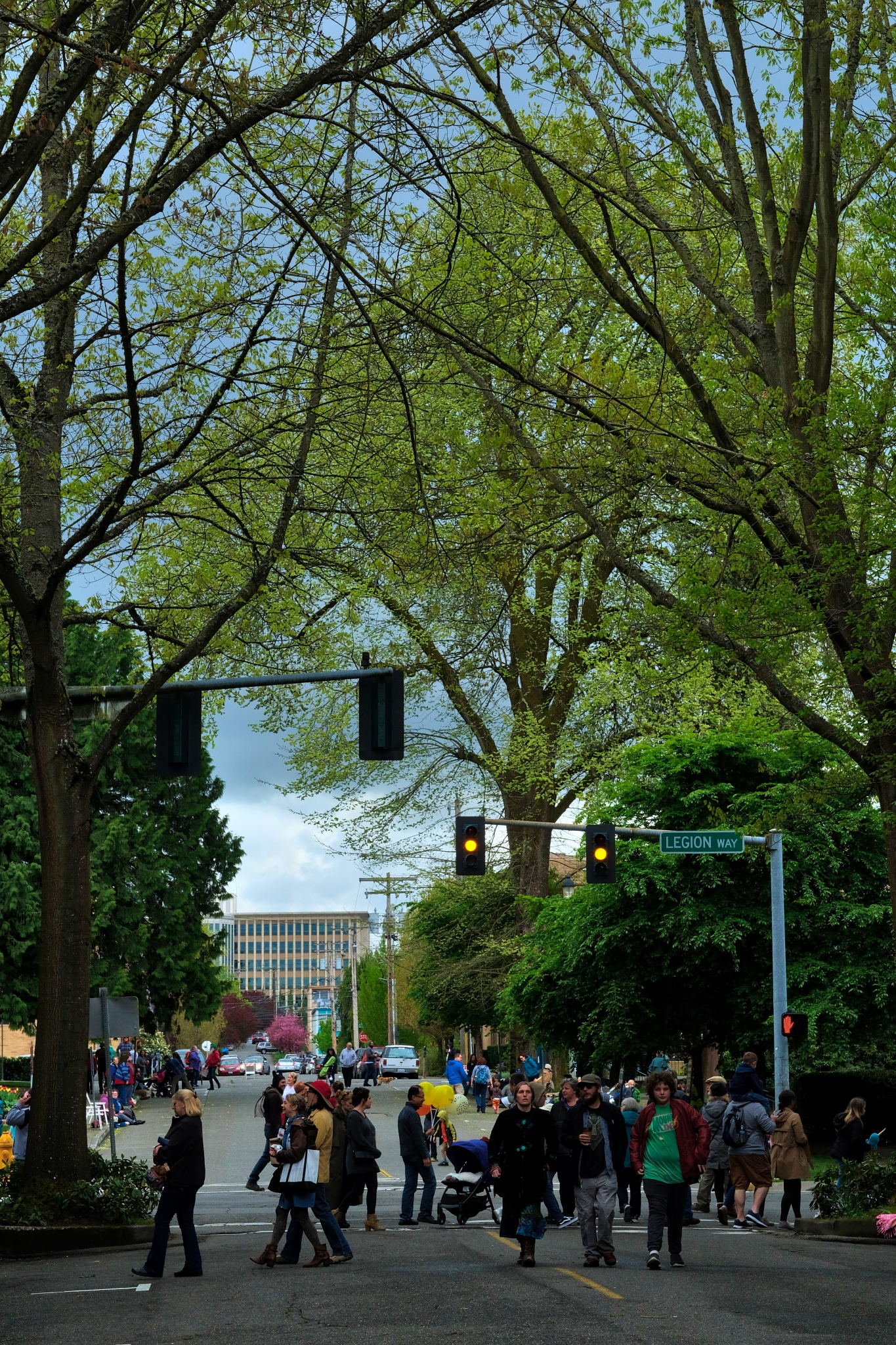
The clouds looked threatening . . . .
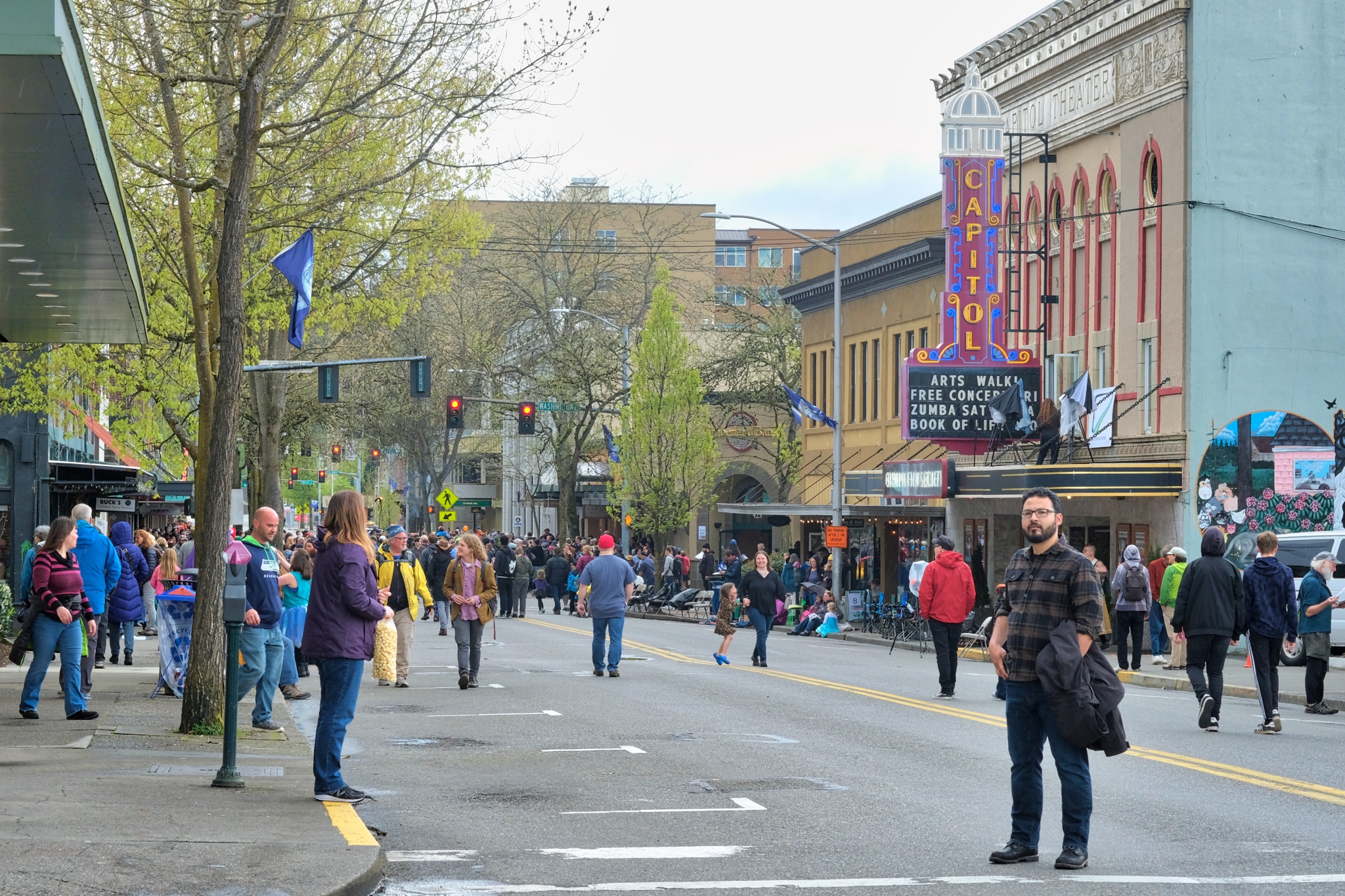
The Olympia city center was closed for the afternoon.
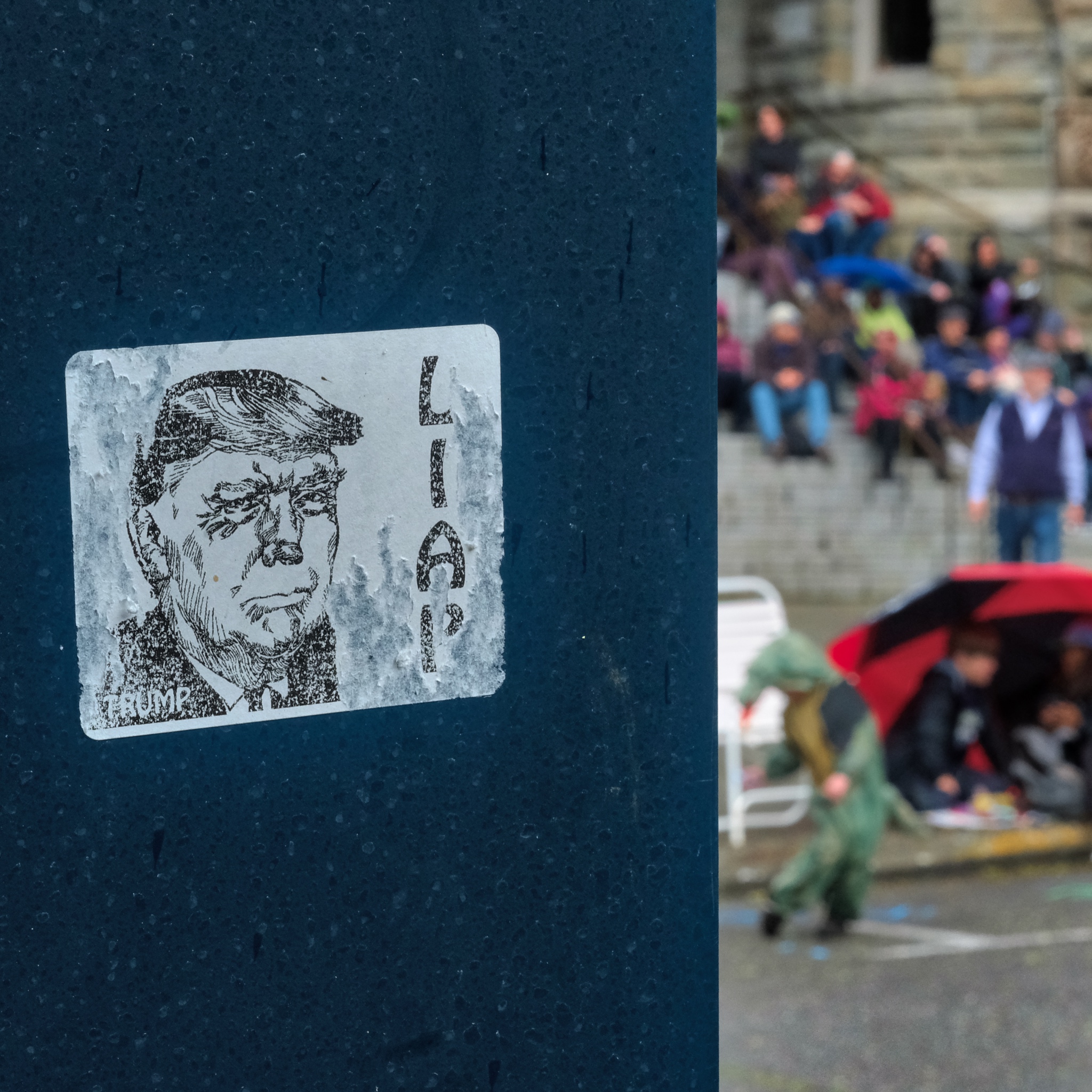
Olympia, being a state capitol, is a political town.
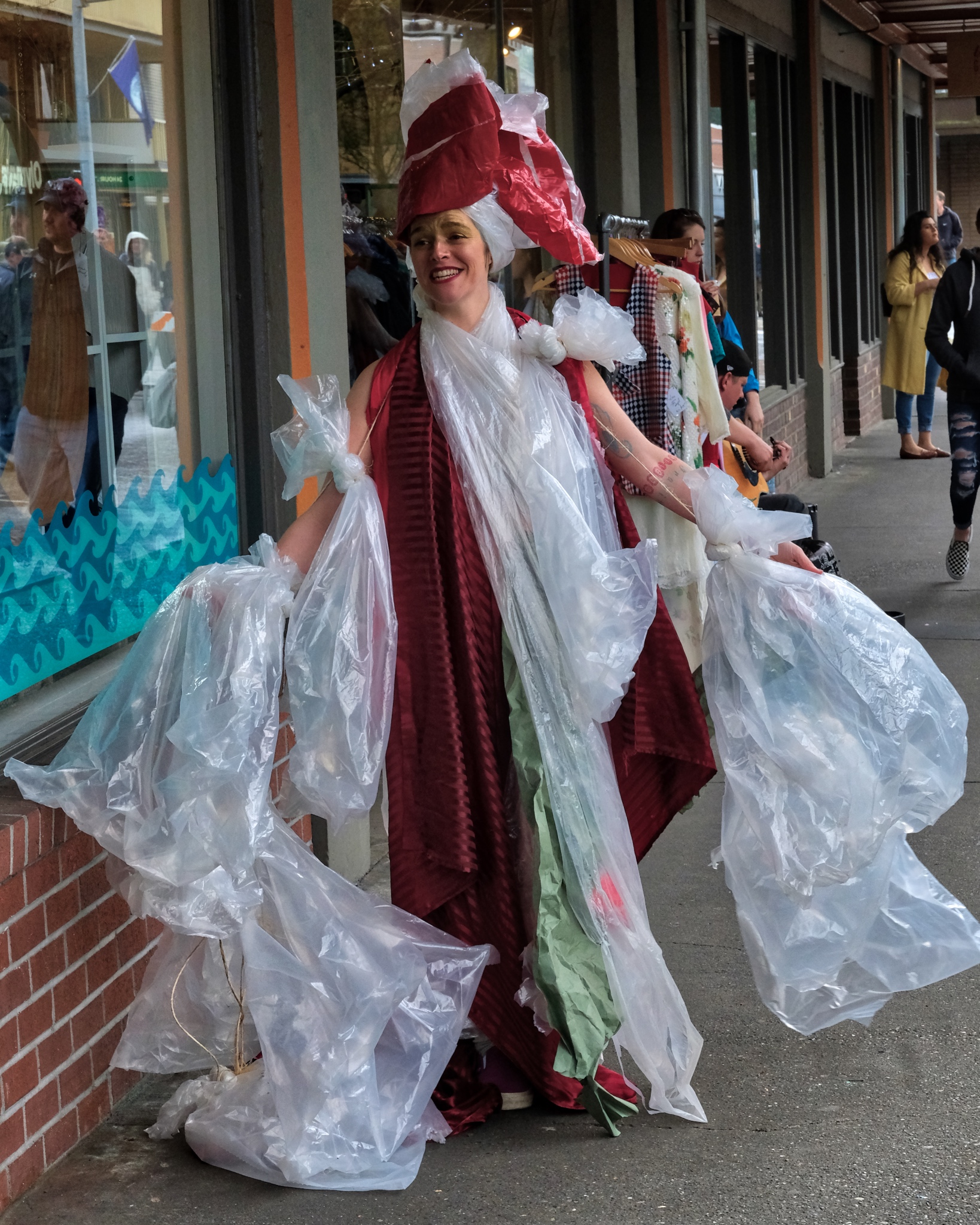
Town characters . . . The Goddess of Trash, "One day, everything you have will be mine!" she exclaimed.
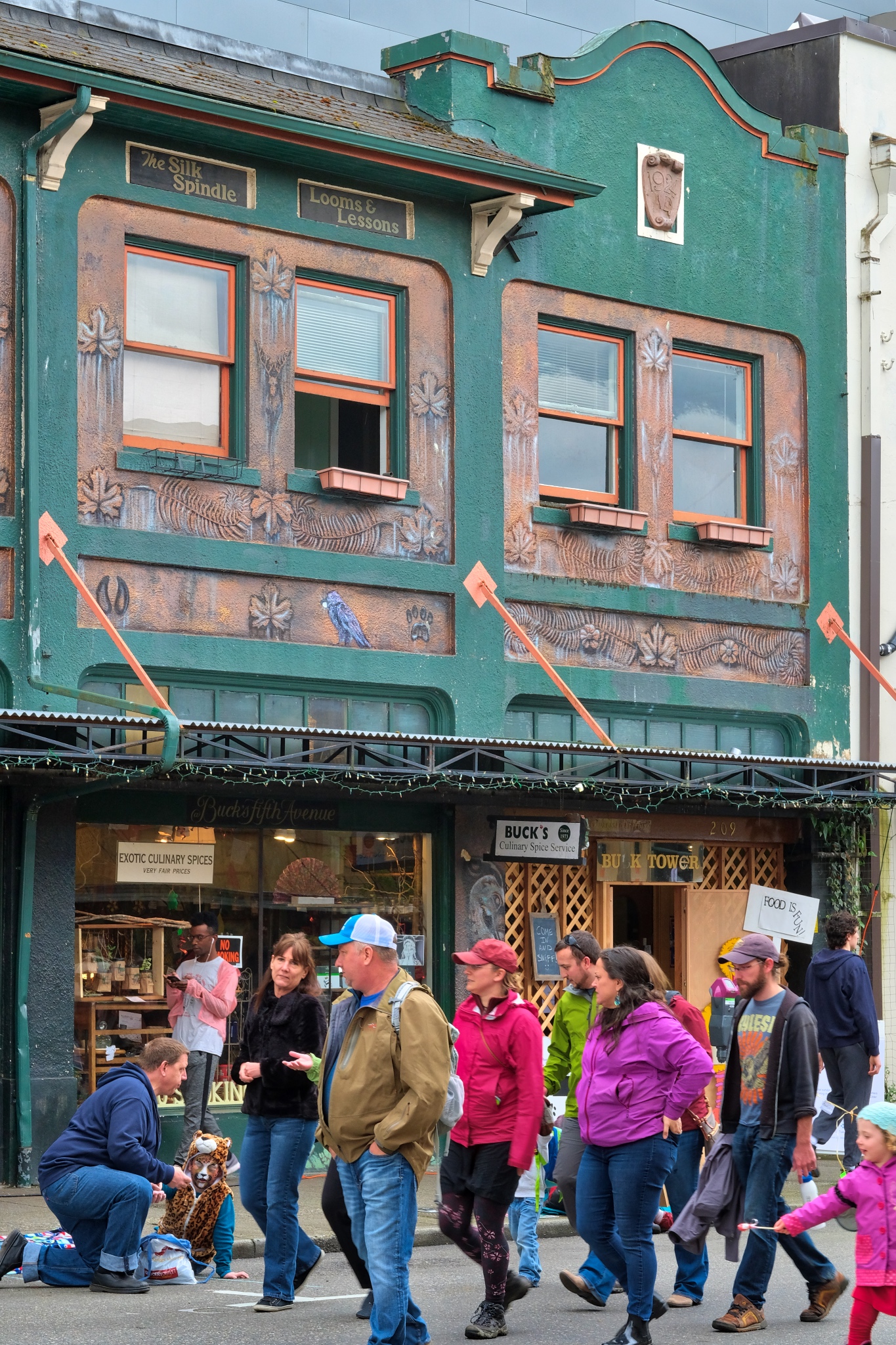
Old Olympia.
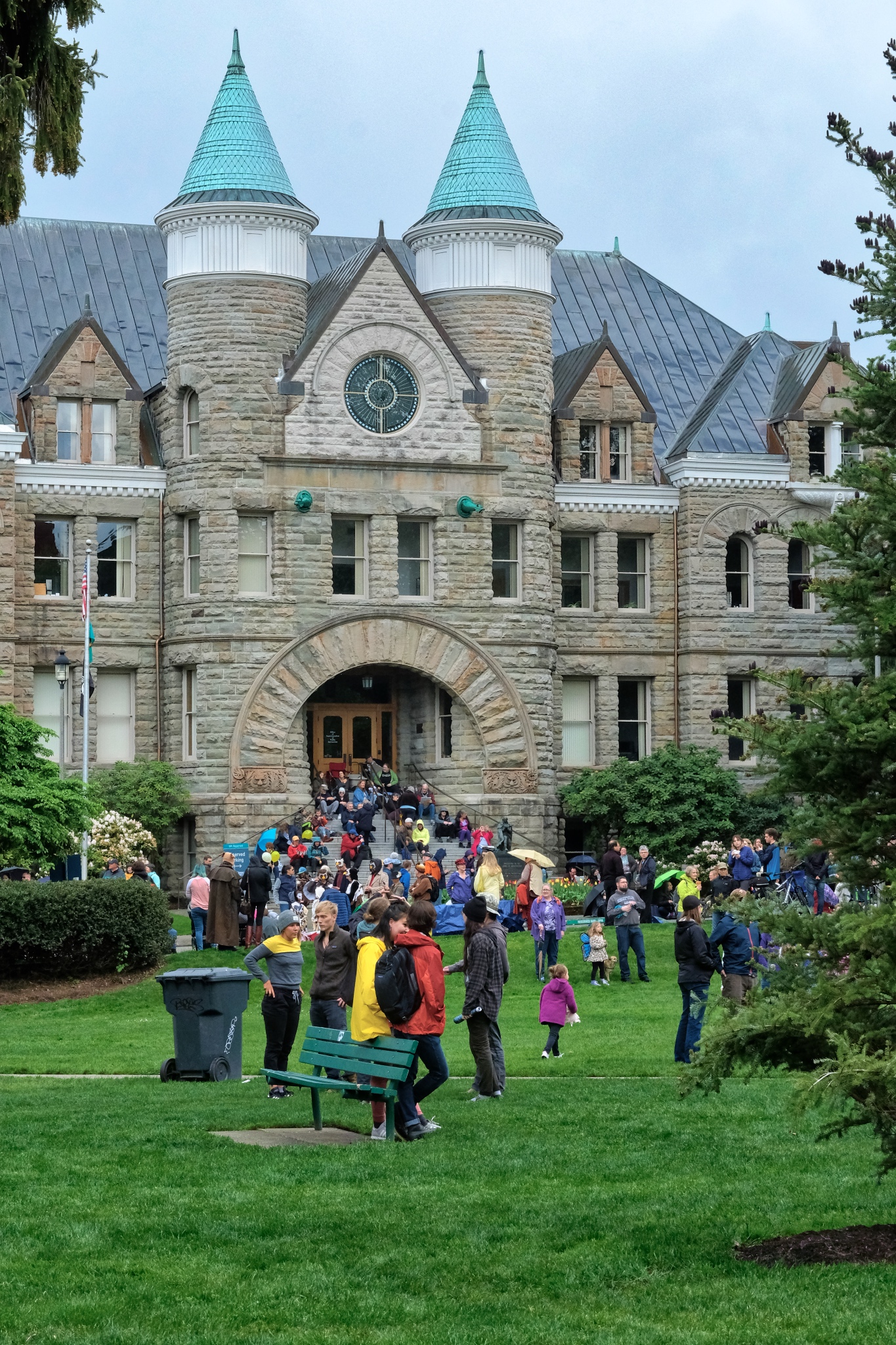
The crowds began to gather around the town square in front of the old state capitol building.
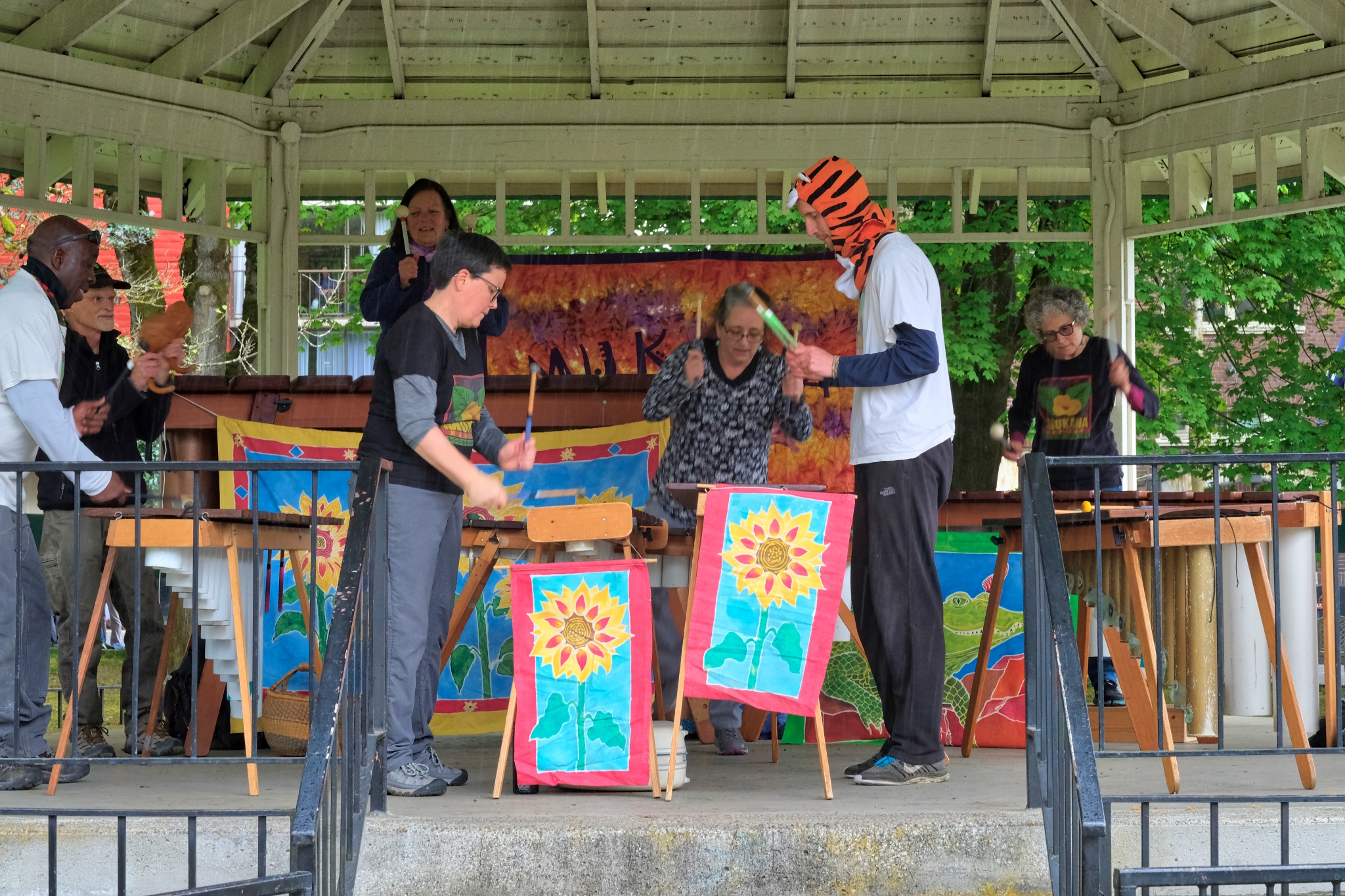
A marvelous xylophone band played in the square gazebo . . . . . and then . . . and then . . .
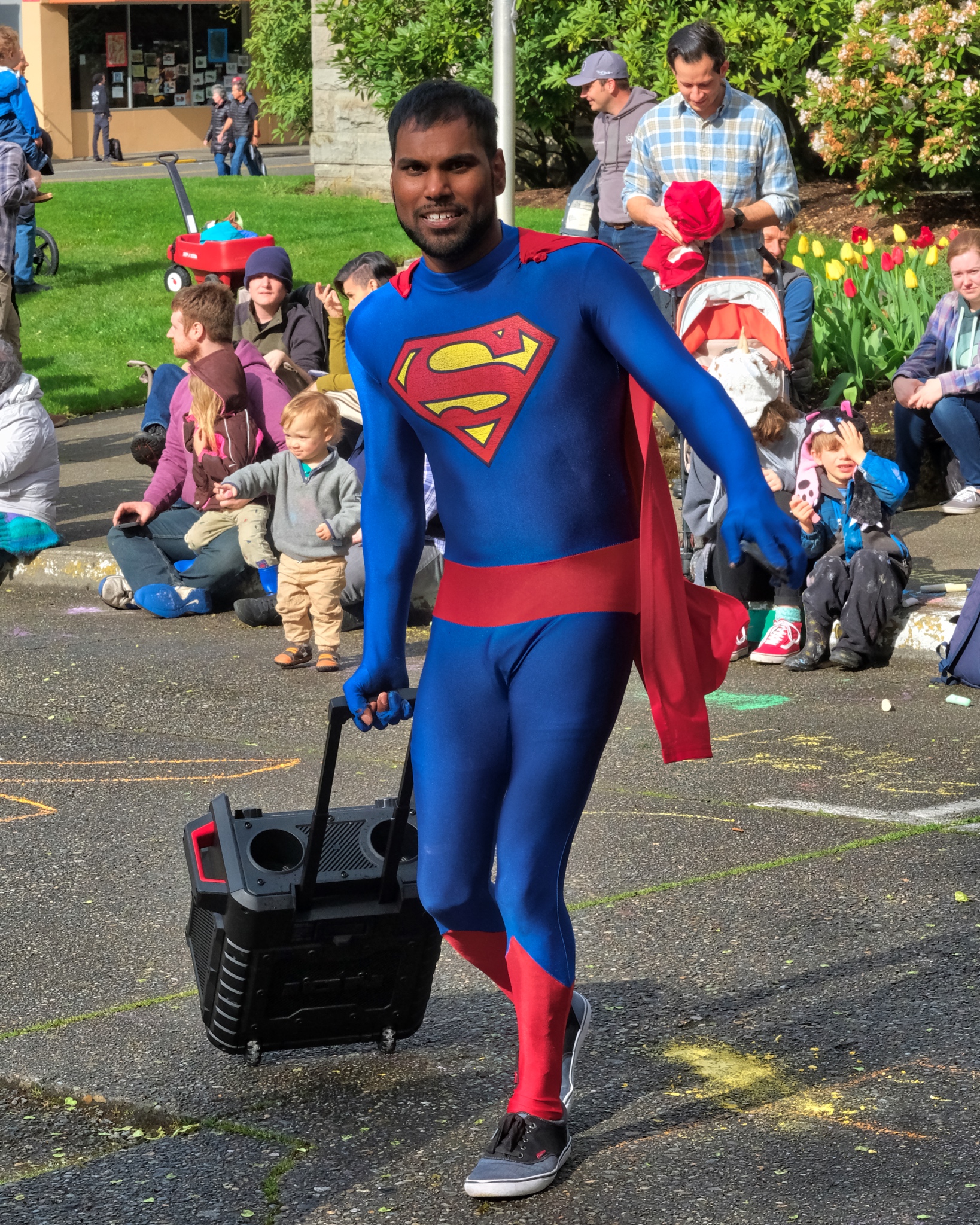
. . . and then a break-dancing Superman entertained the crowd . . . and then . . .

And then the Boys in Blue separated the crowd to the sidewalks . . .
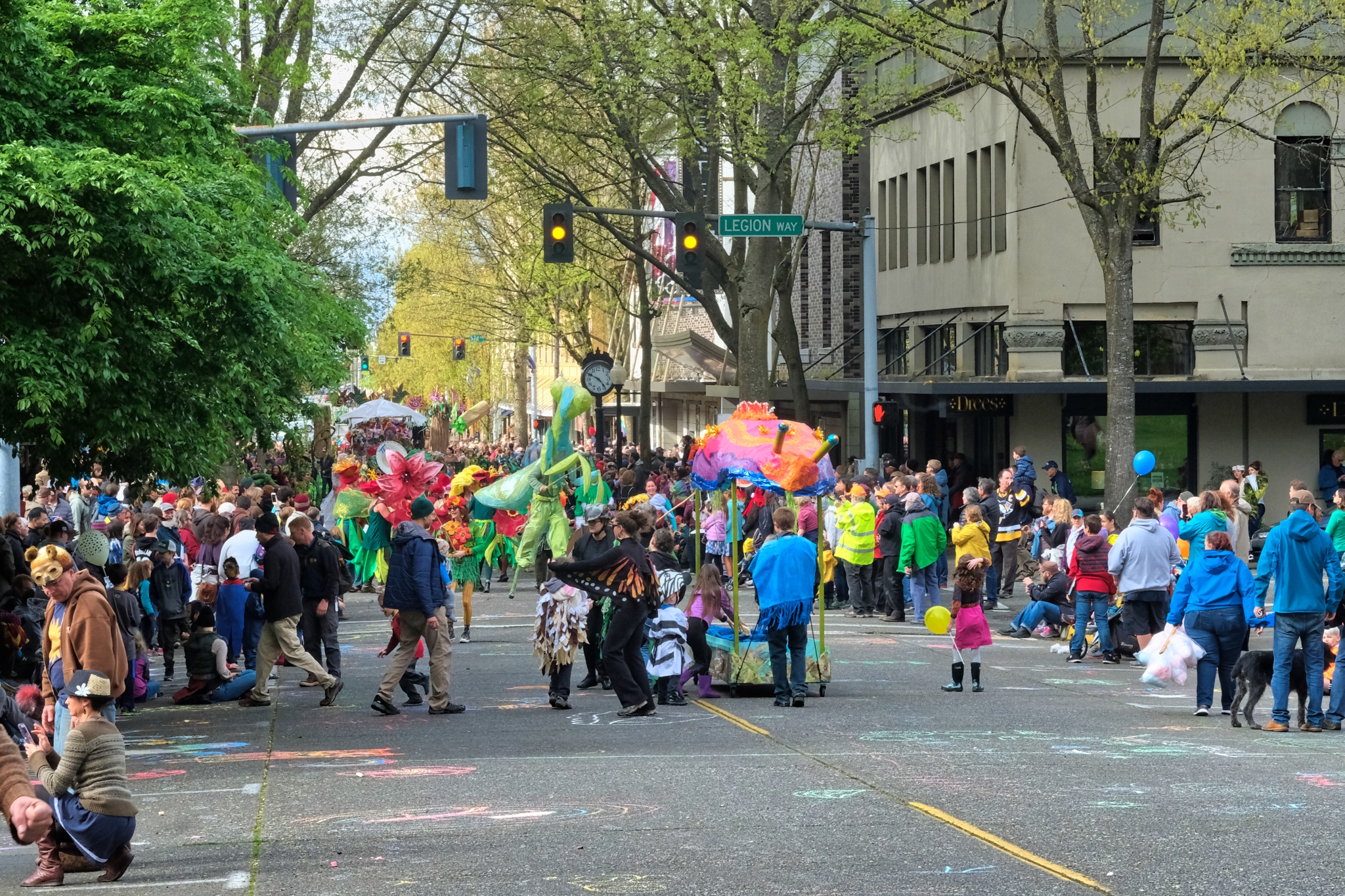
And then there was a buzz in the air as the start of the parade approached.
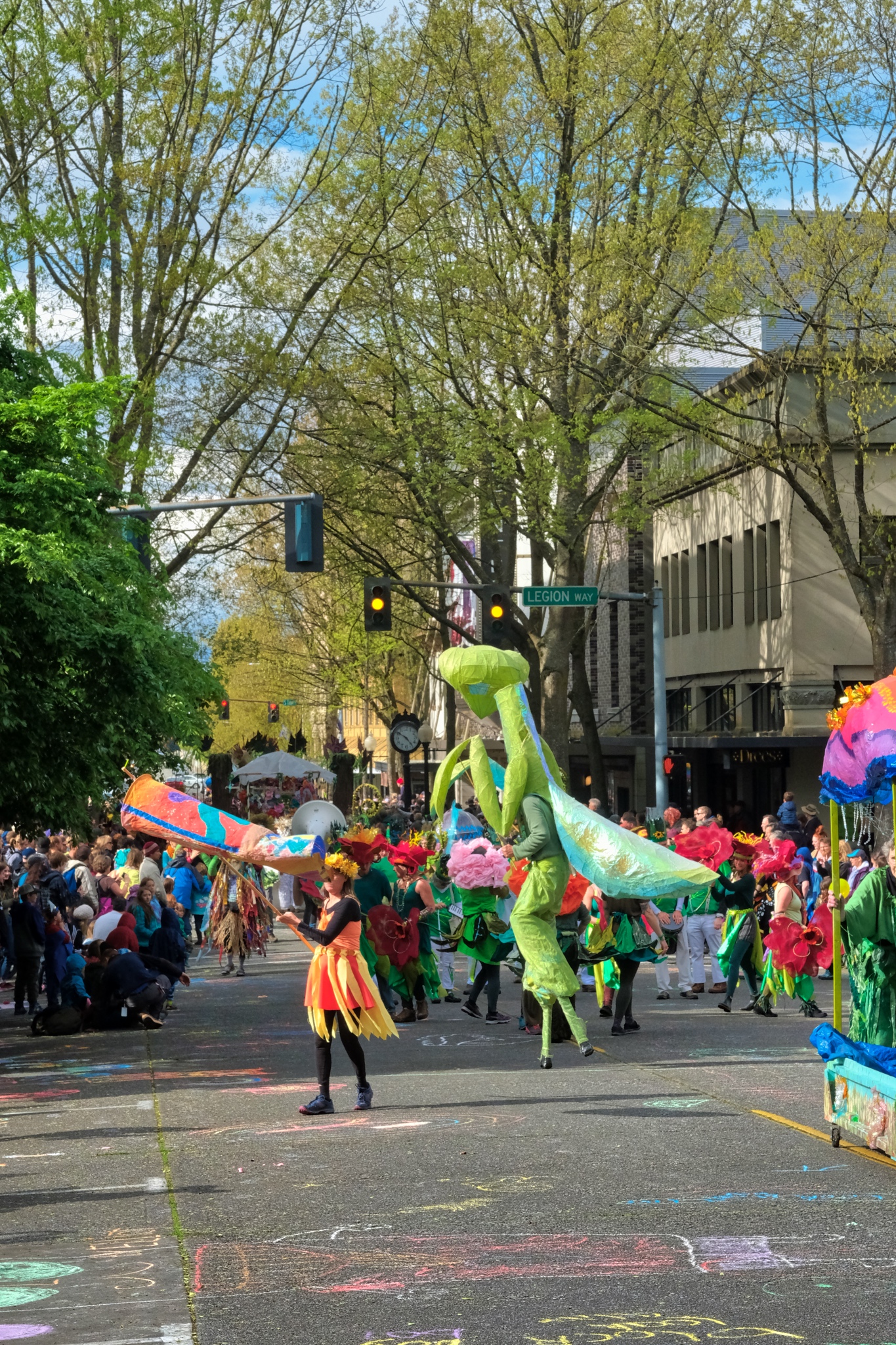
A fantastic scene approached!
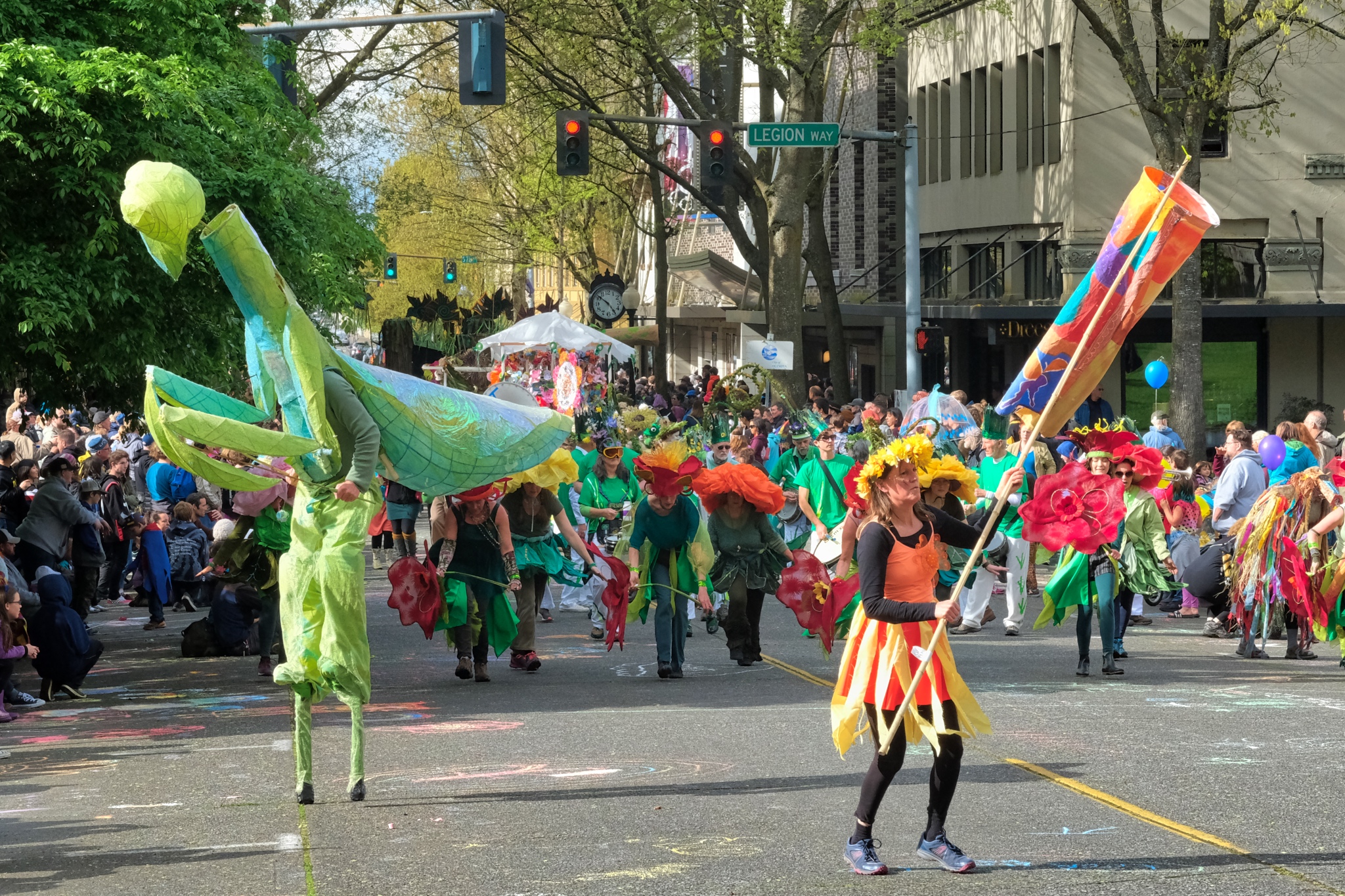
A parade of homemade costumes and floats. America celebrating itself.
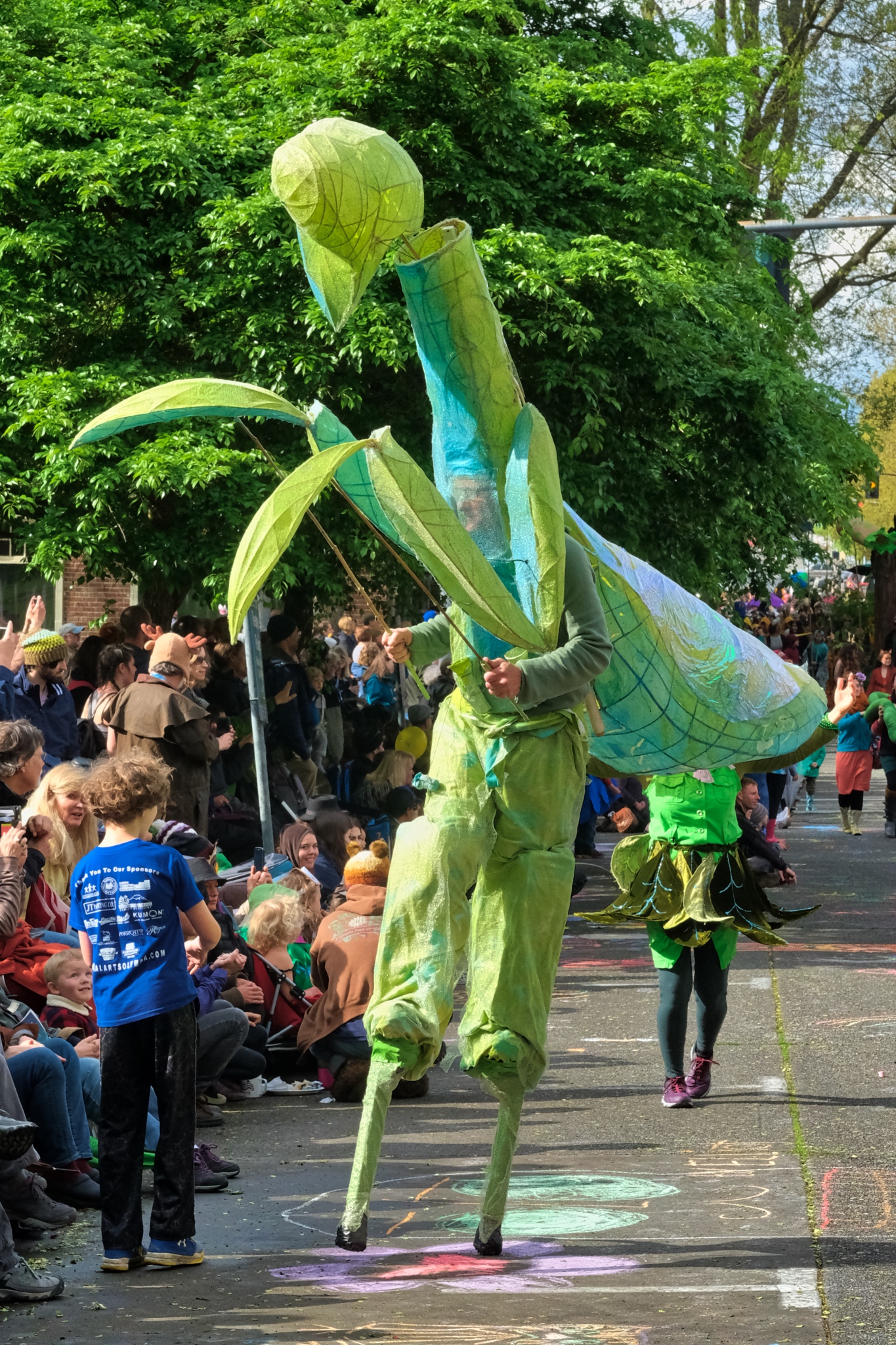
I loved this Mantis costume . . . and wanted one too.
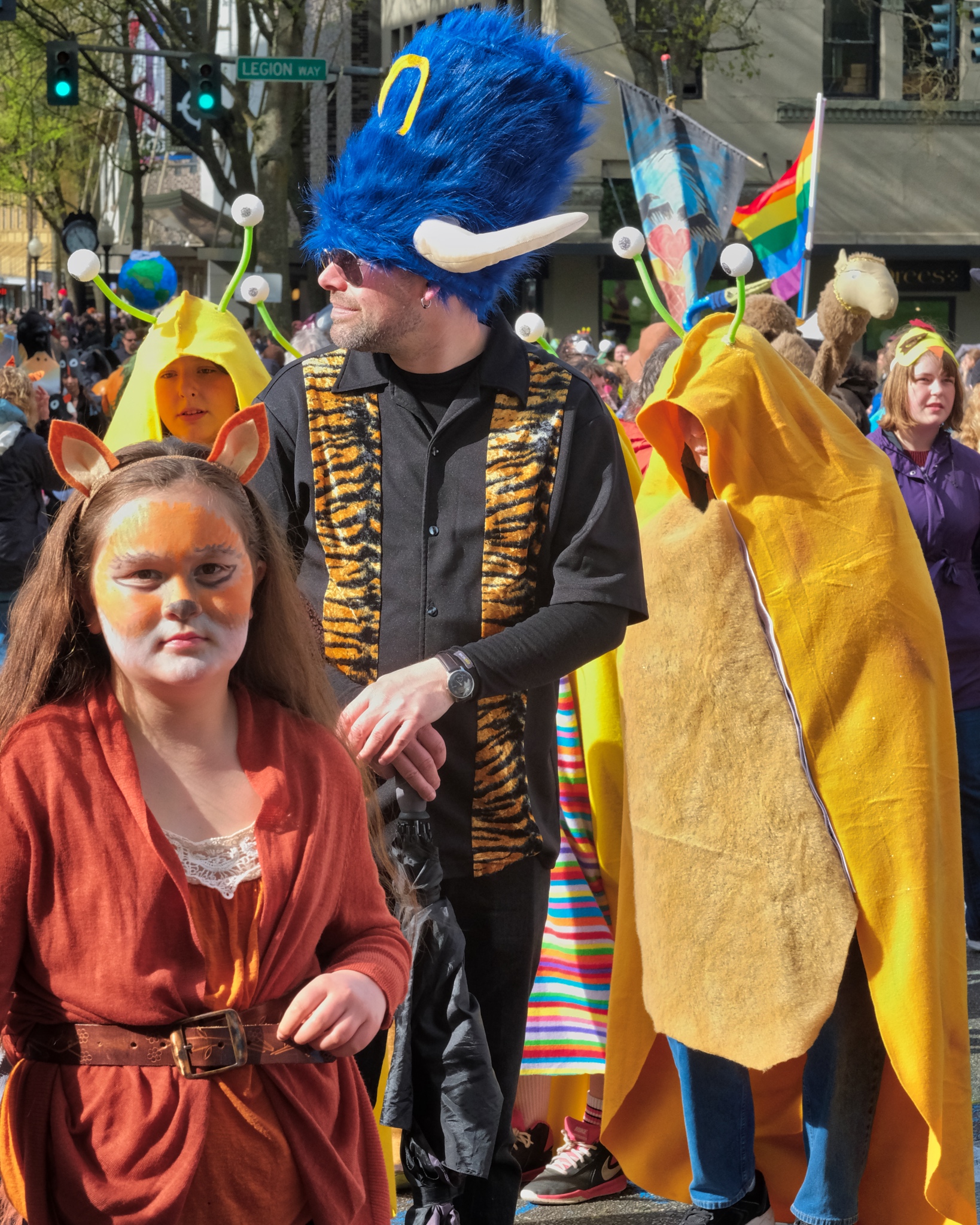
Citizens parading.
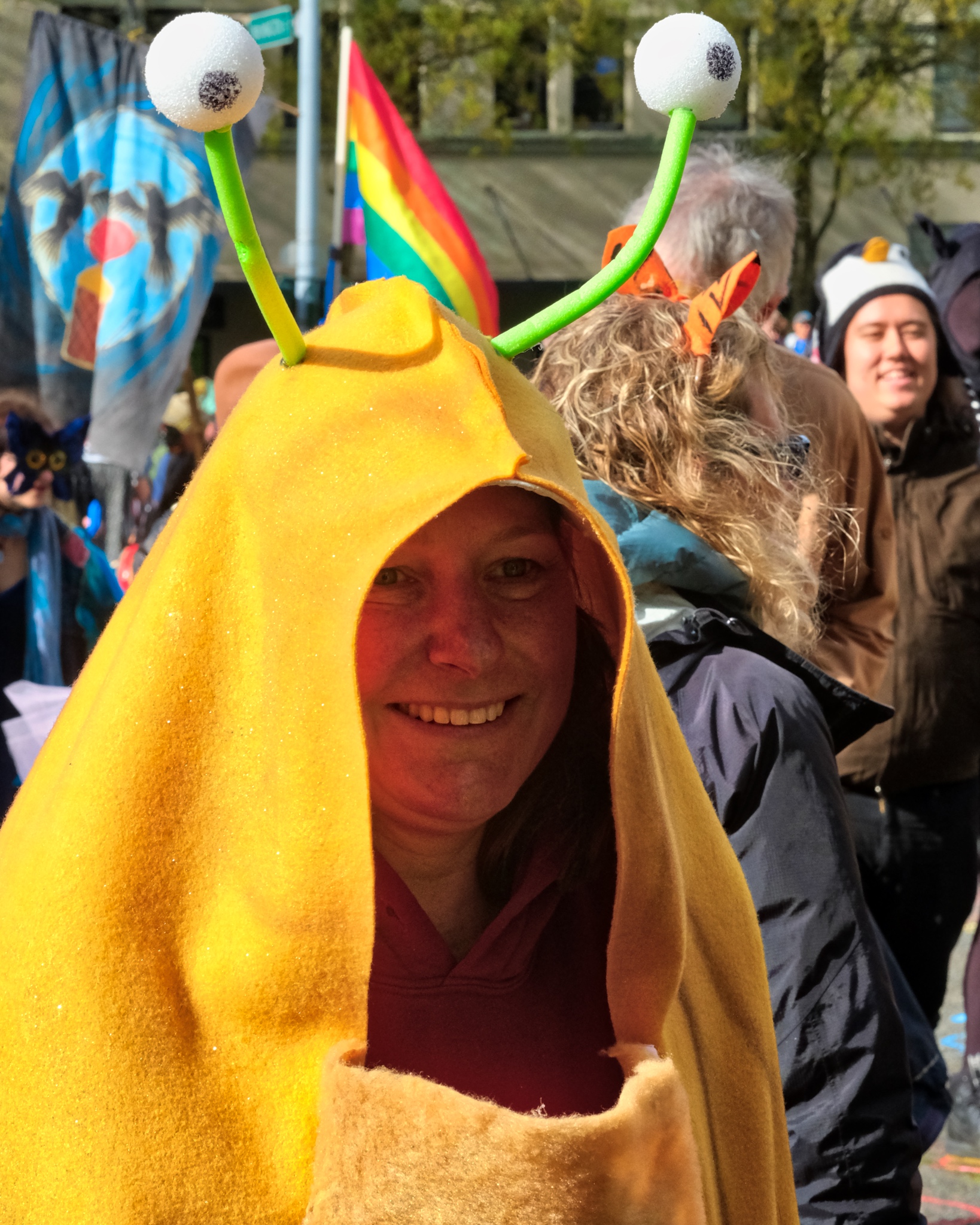
Its fun to dress up in a costume and walk through your town.
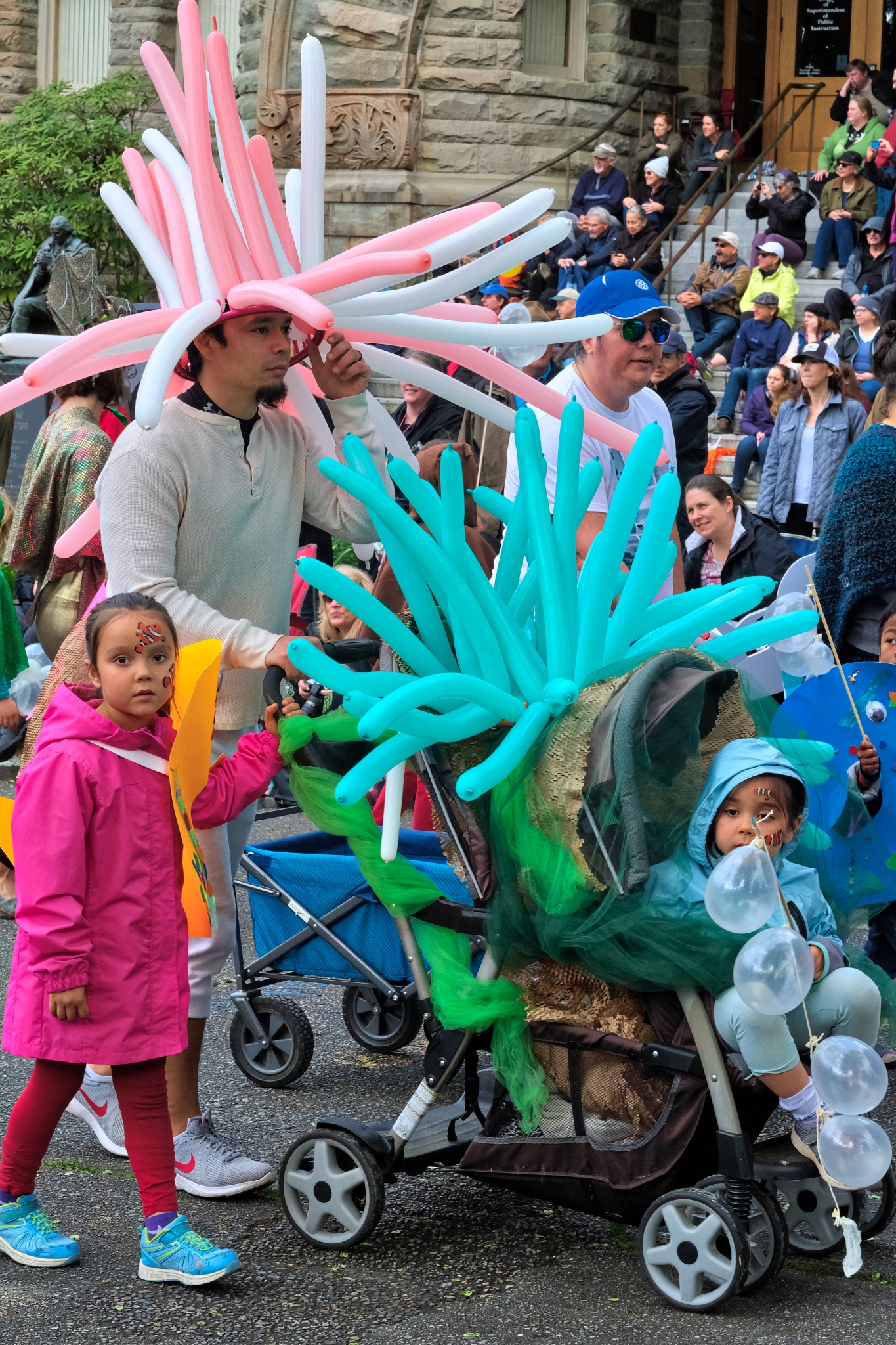
The families that 'floated' together were my favorites.
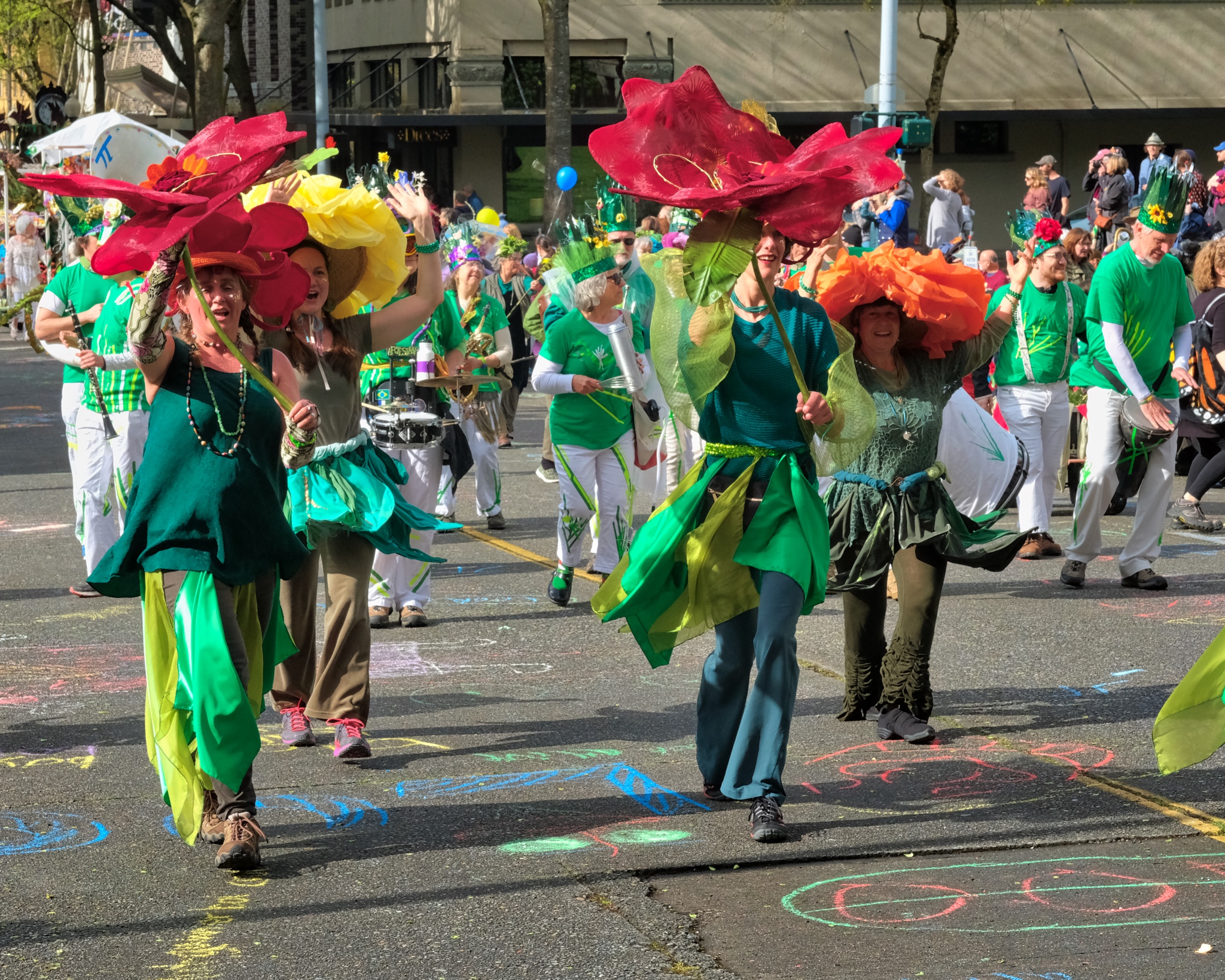
The ladies I saw practicing before the parade did well . . . and garnered much applause.
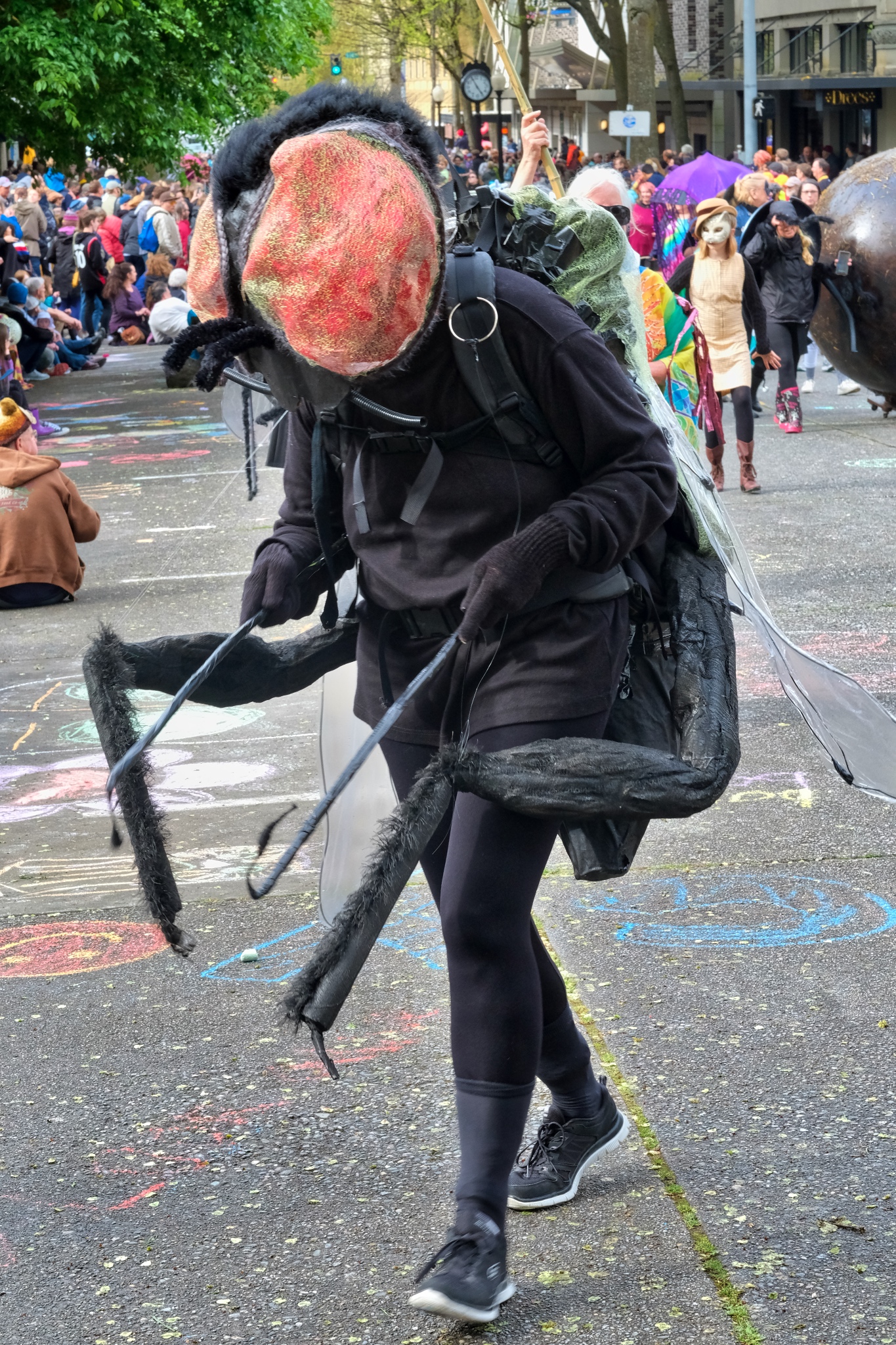
Some of the costumes were very creative! The Human Fly really scared some of the children . . . in good fun.
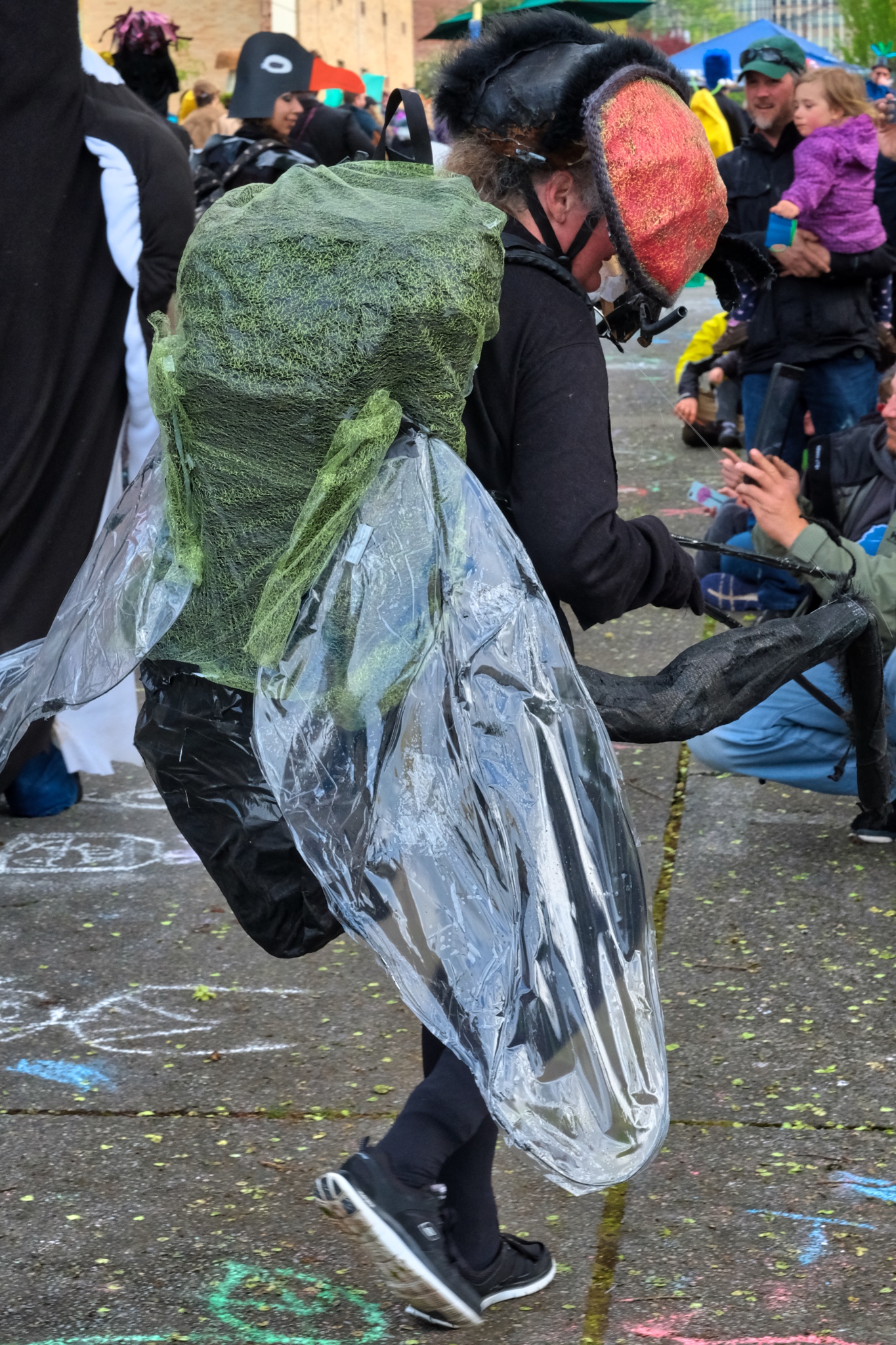
OOOOO! BBBBBZZZZZZZZZZZZZZ!
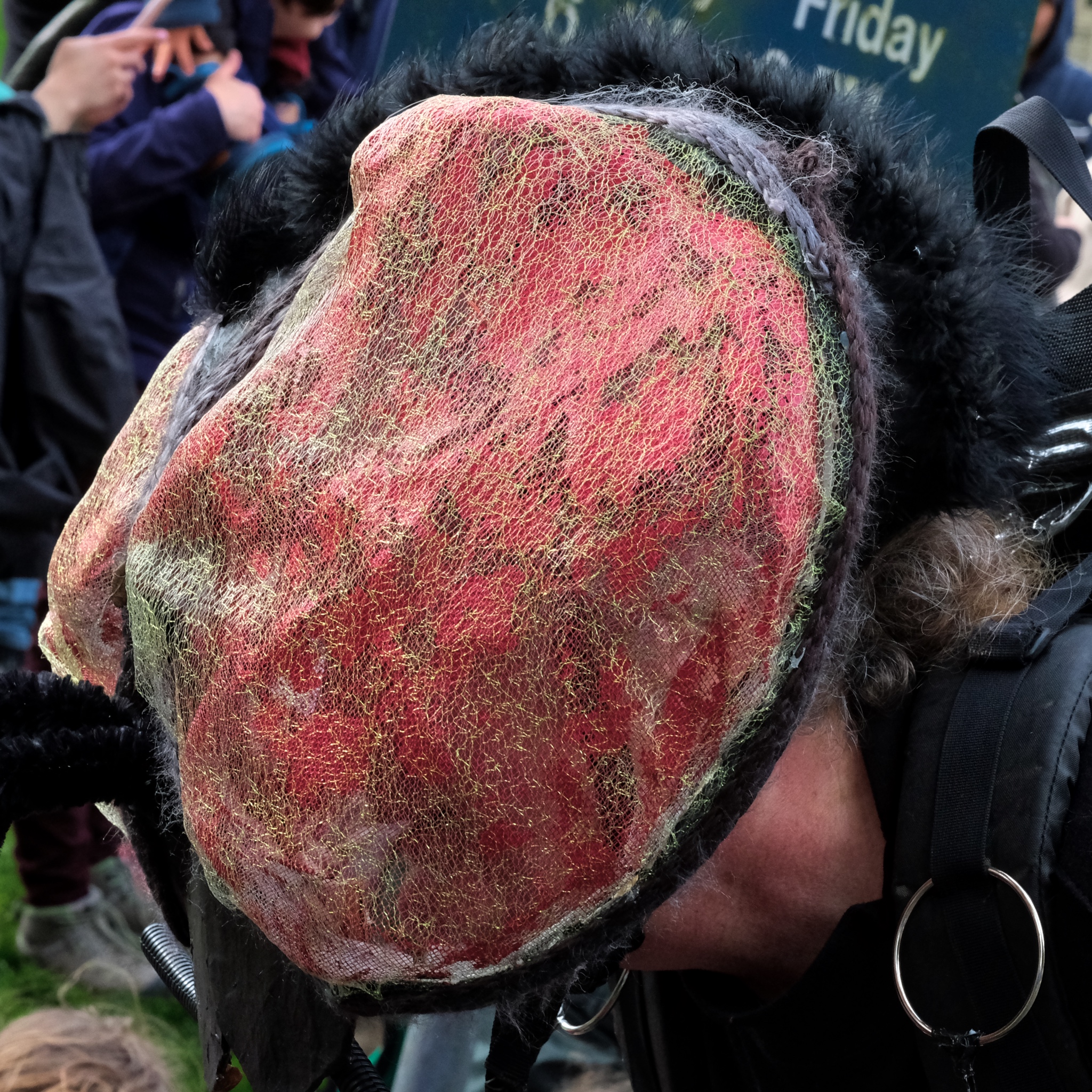
A fly eye! Spooky! Creative.
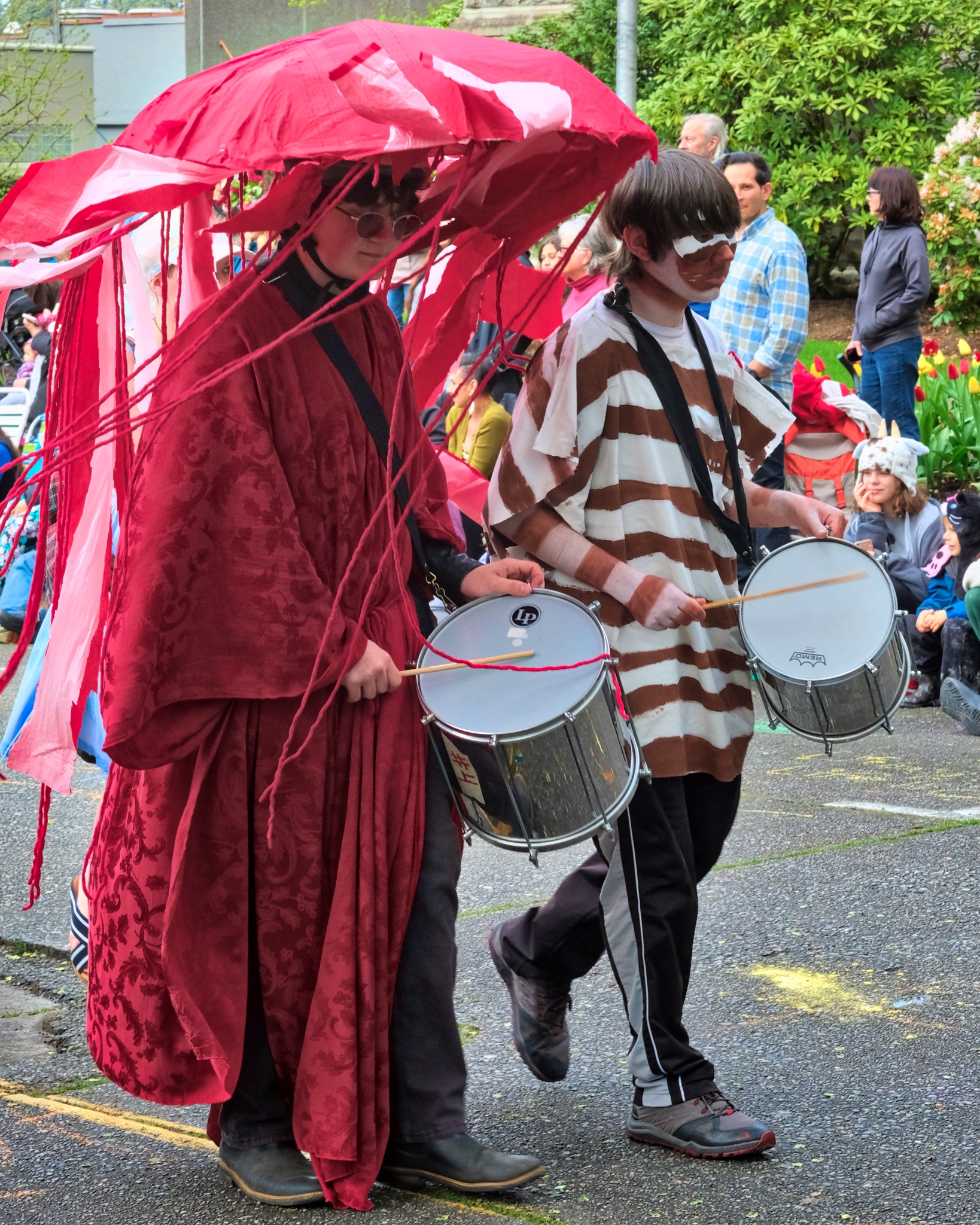
Even the morose teens joined in!
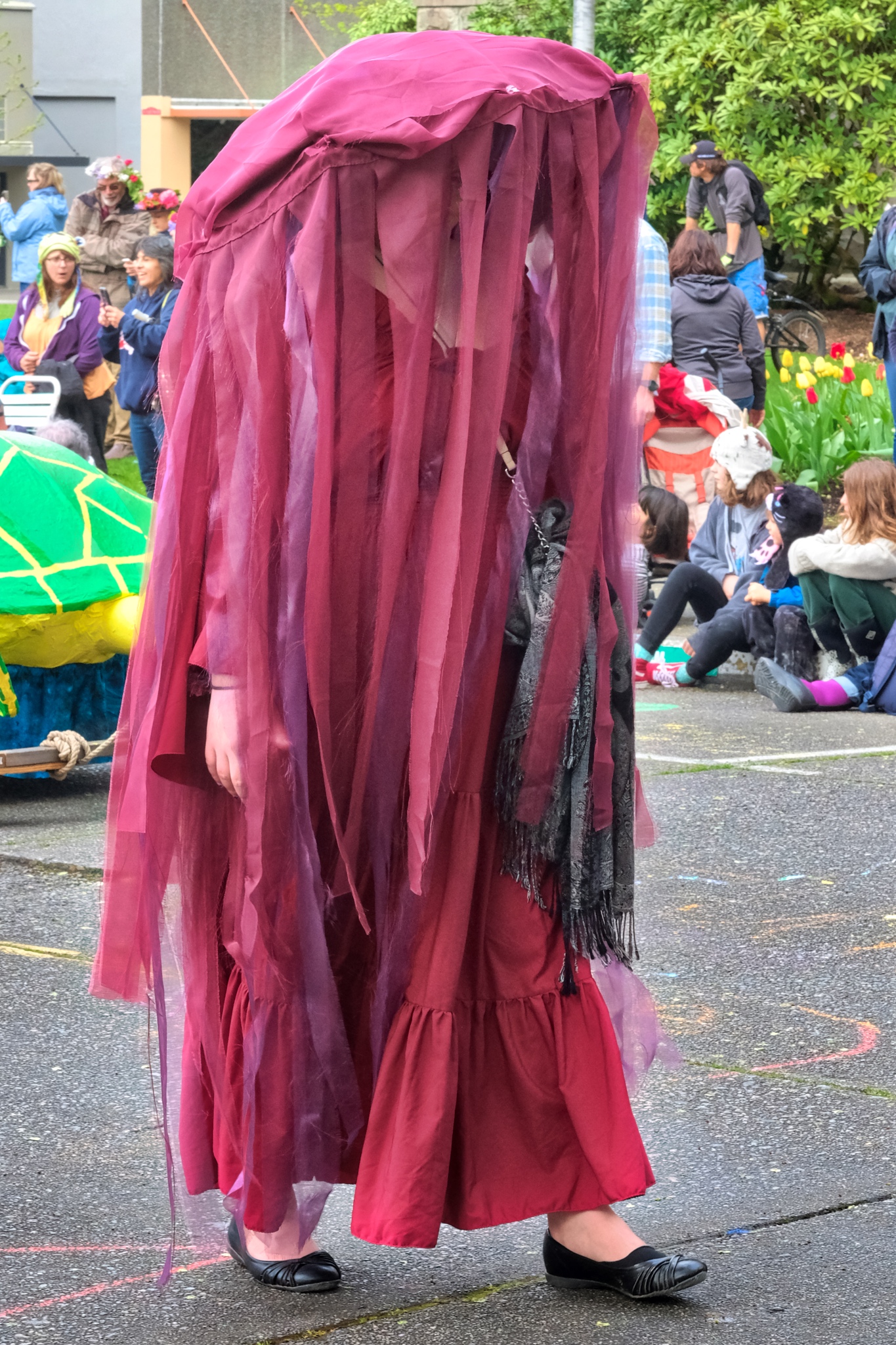
Jellyfish were very popular.
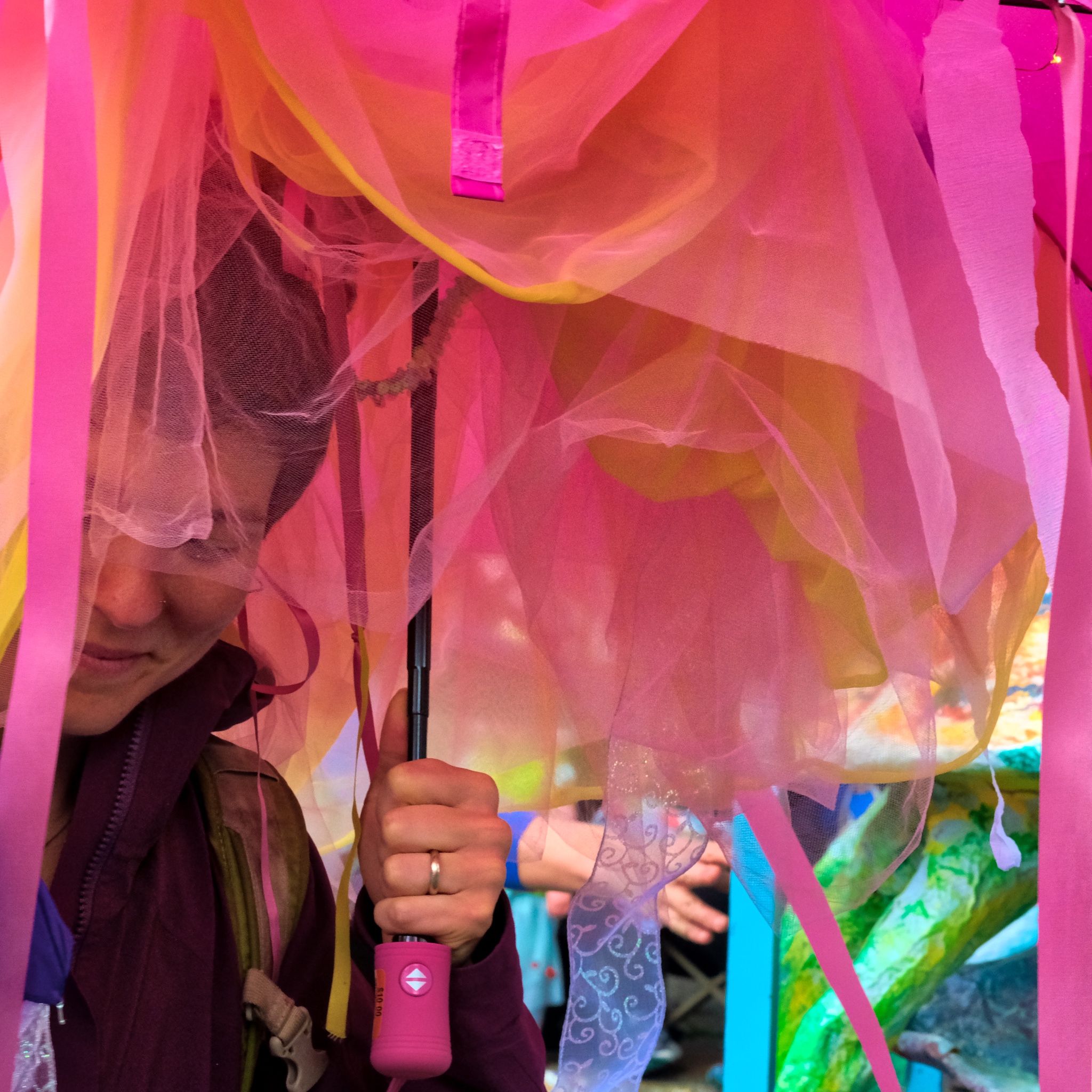
Fantastic colors of the jellyfish!
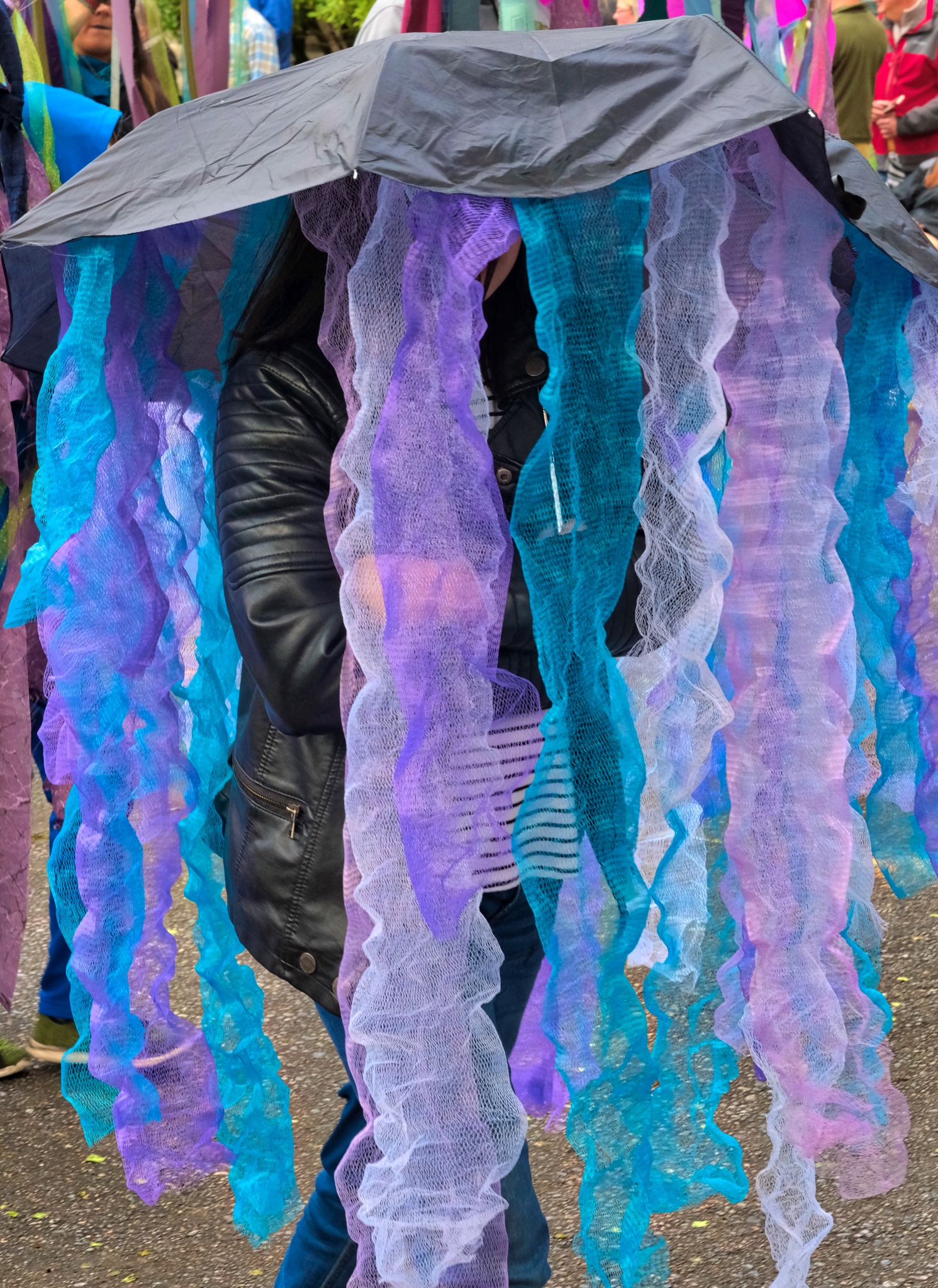
Some of the jellyfish were simply beautiful.
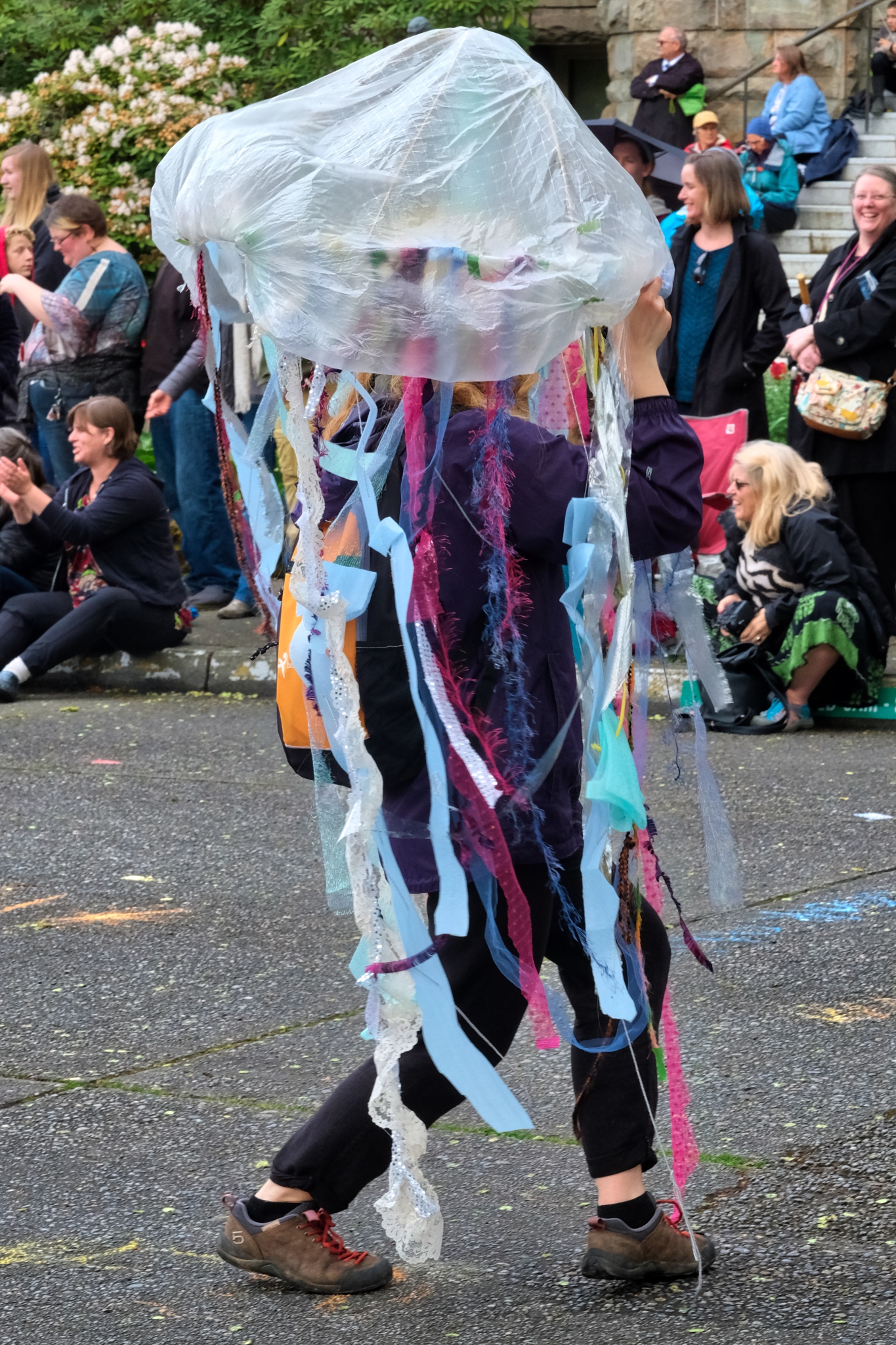
These jellyfish were very creative . . . they would rise, fill with air, then propel themselves around . . .
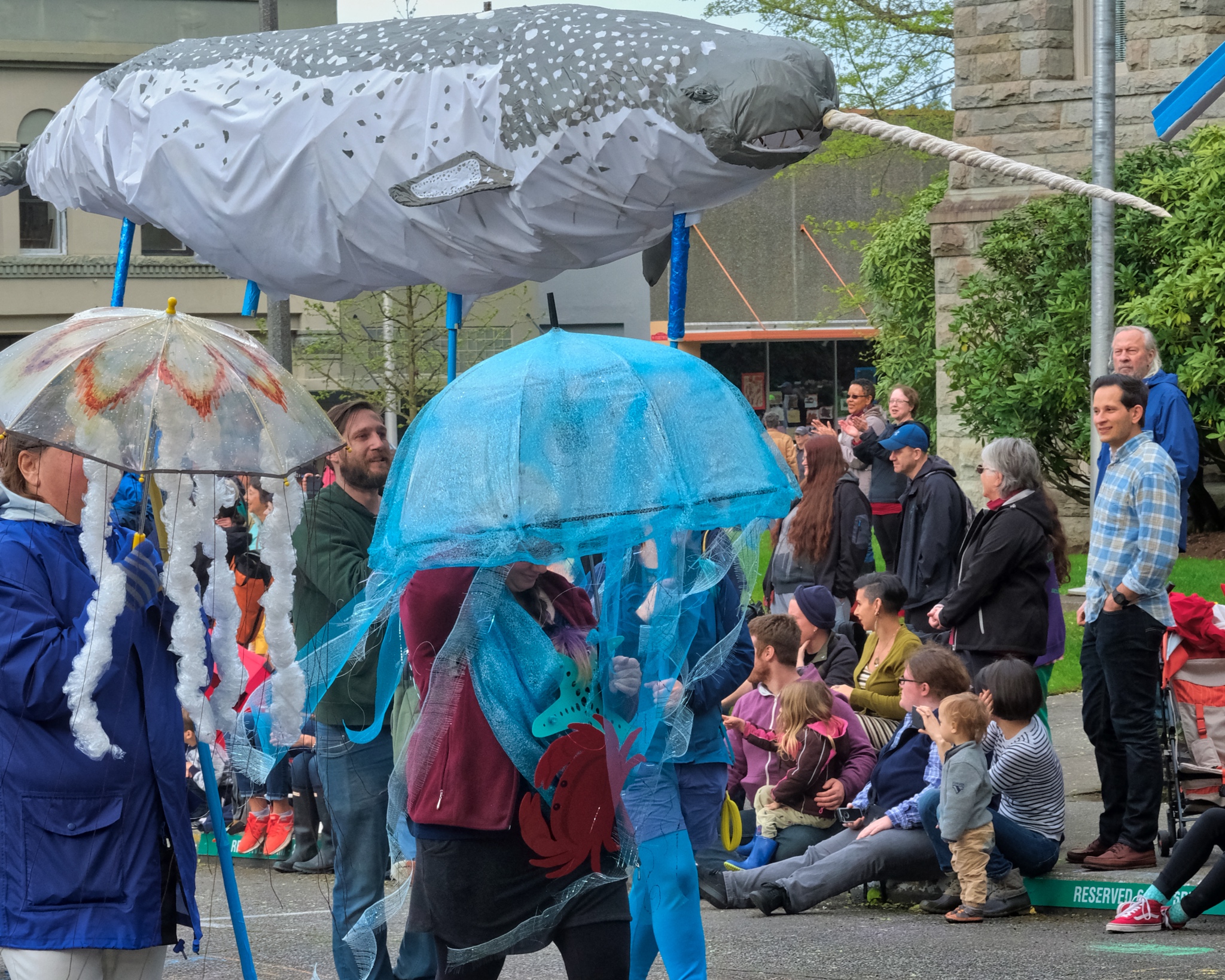
Lots of jellyfish . . . and a narwhal.
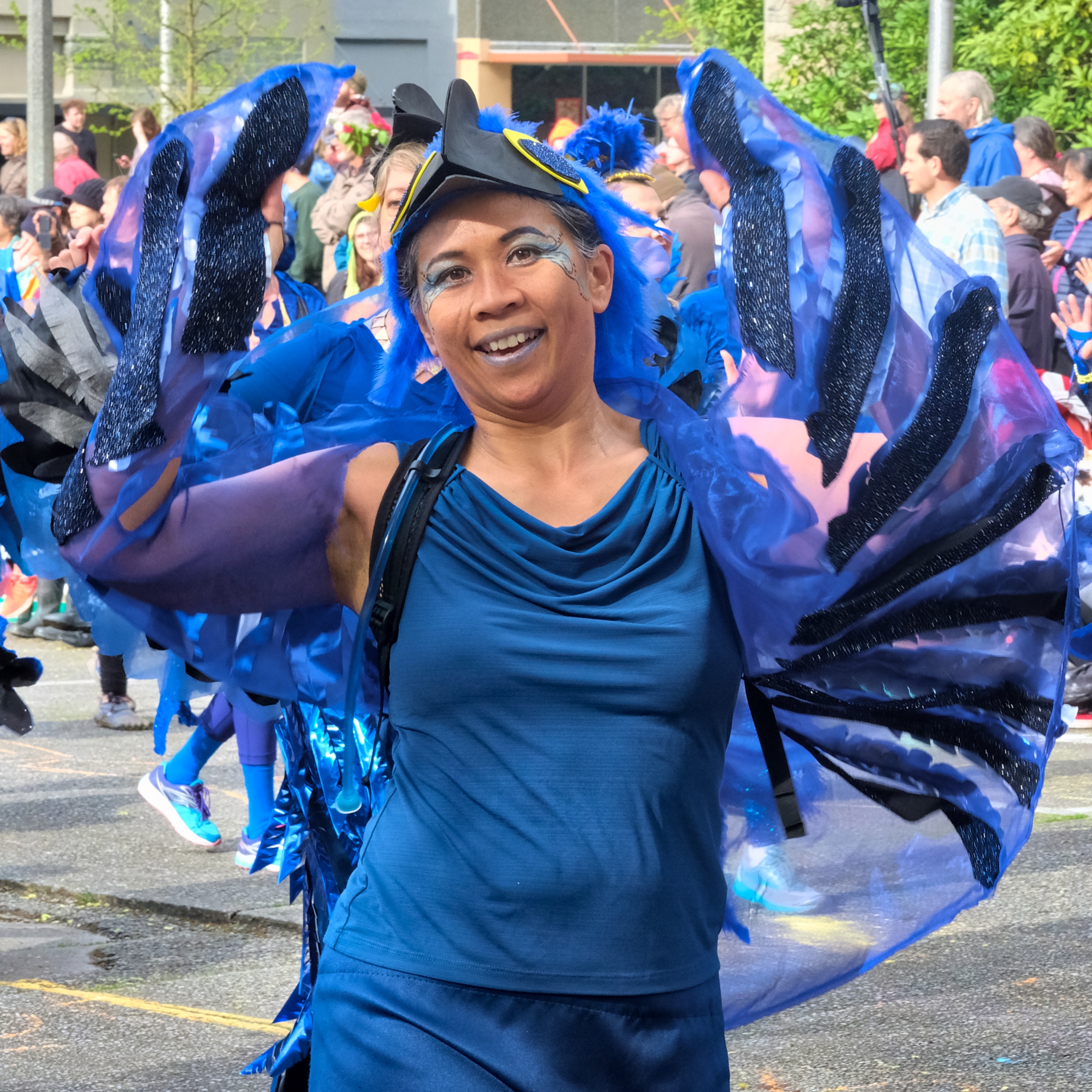
The sun finally came out and dried off the dampness. There were many troupes of dancers.
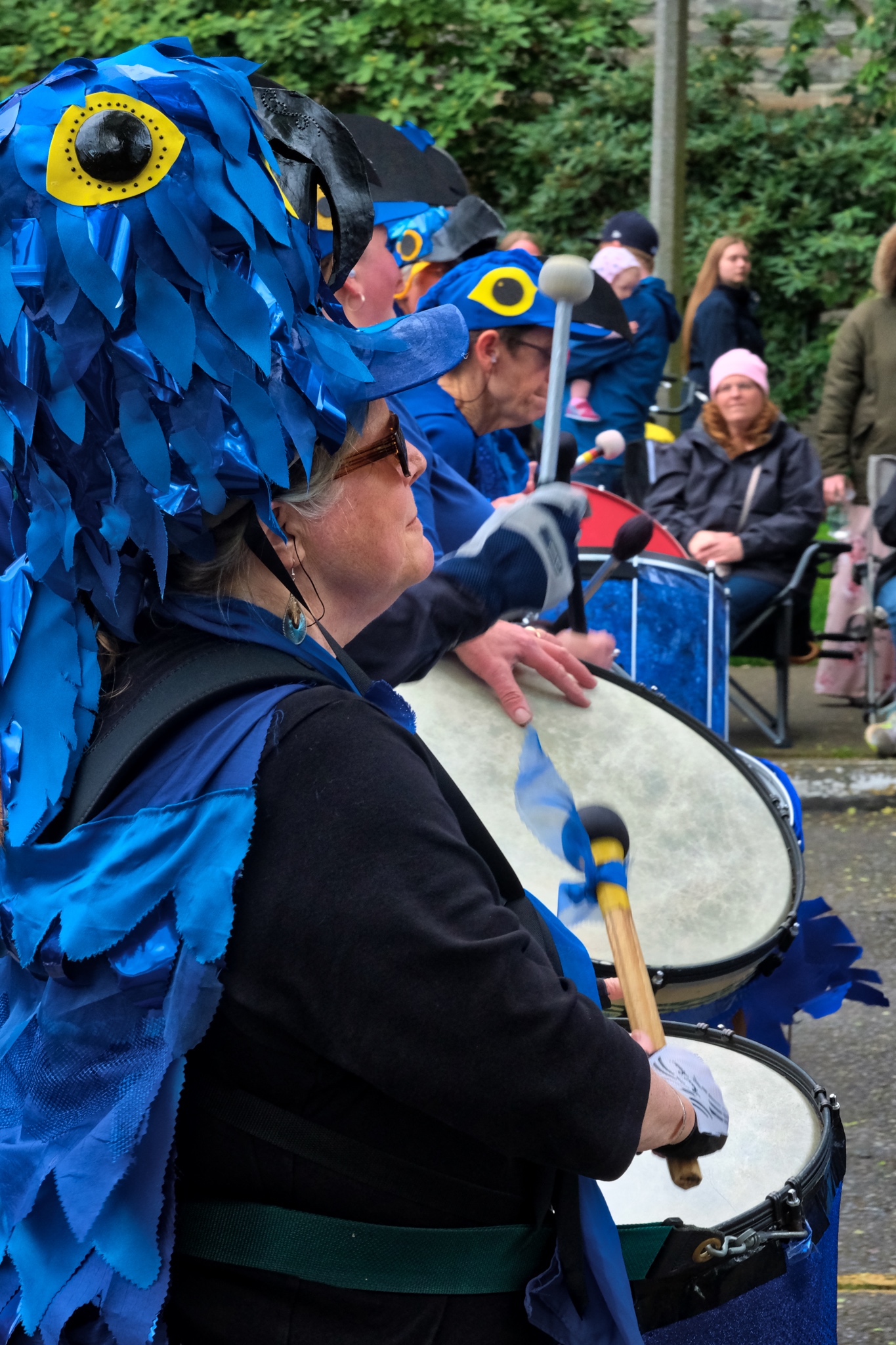
With the dancers came the drummers . . .
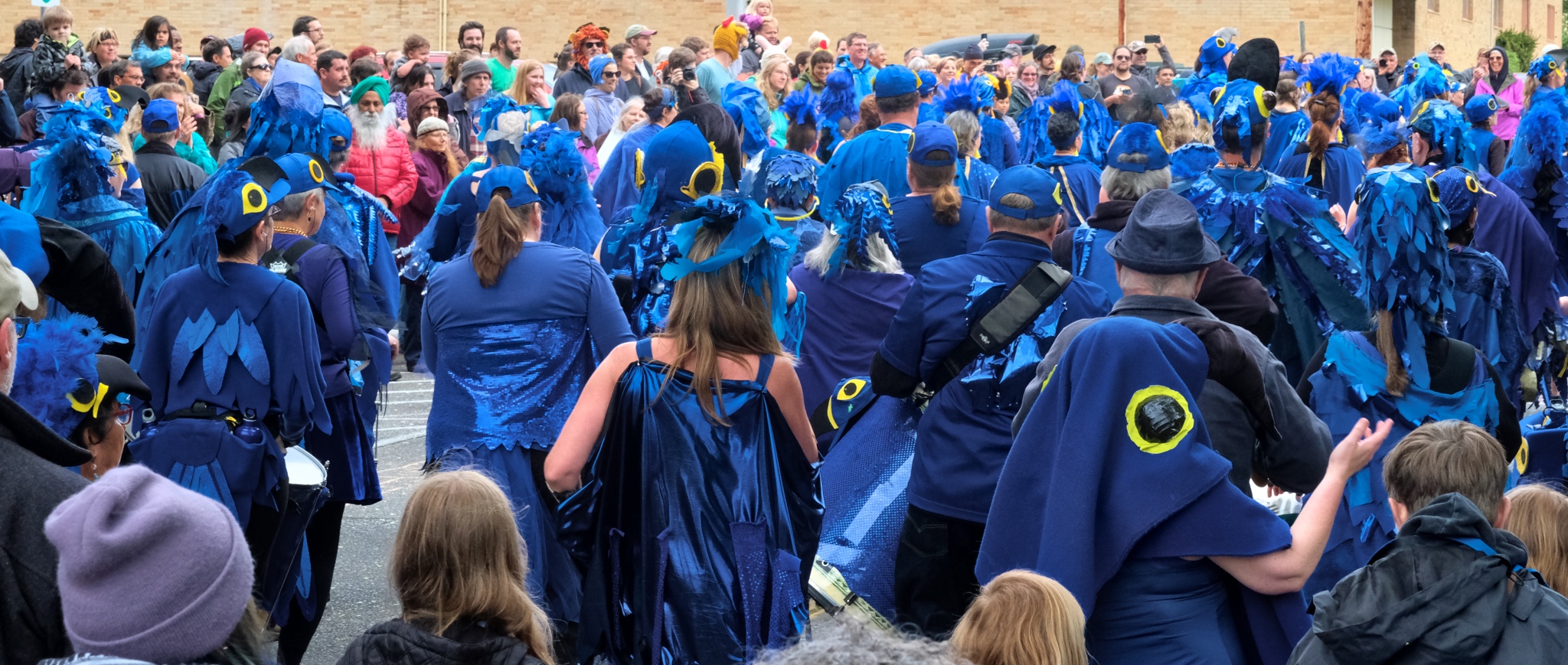
And more dancers!
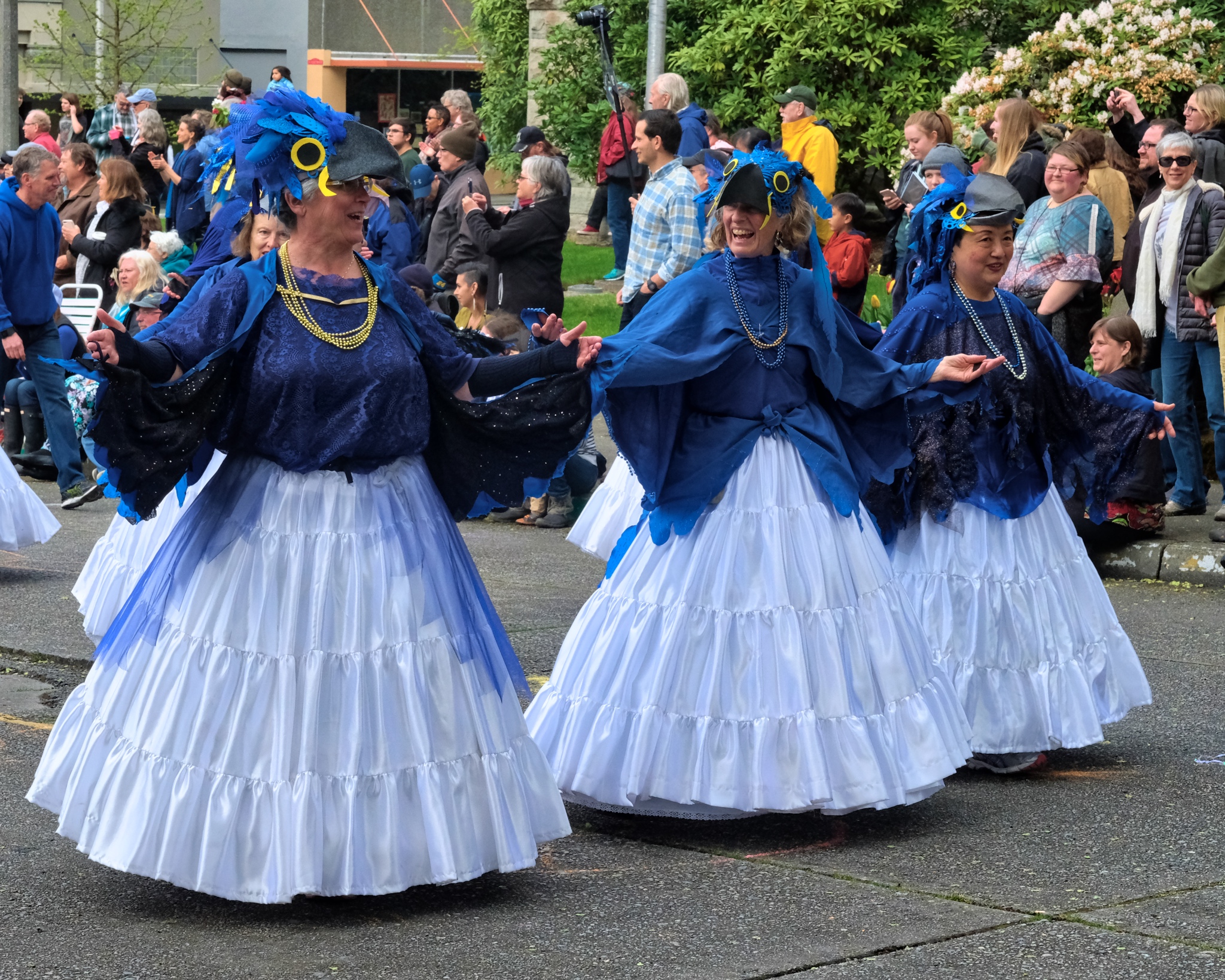
Having fun with your chums. A good day.
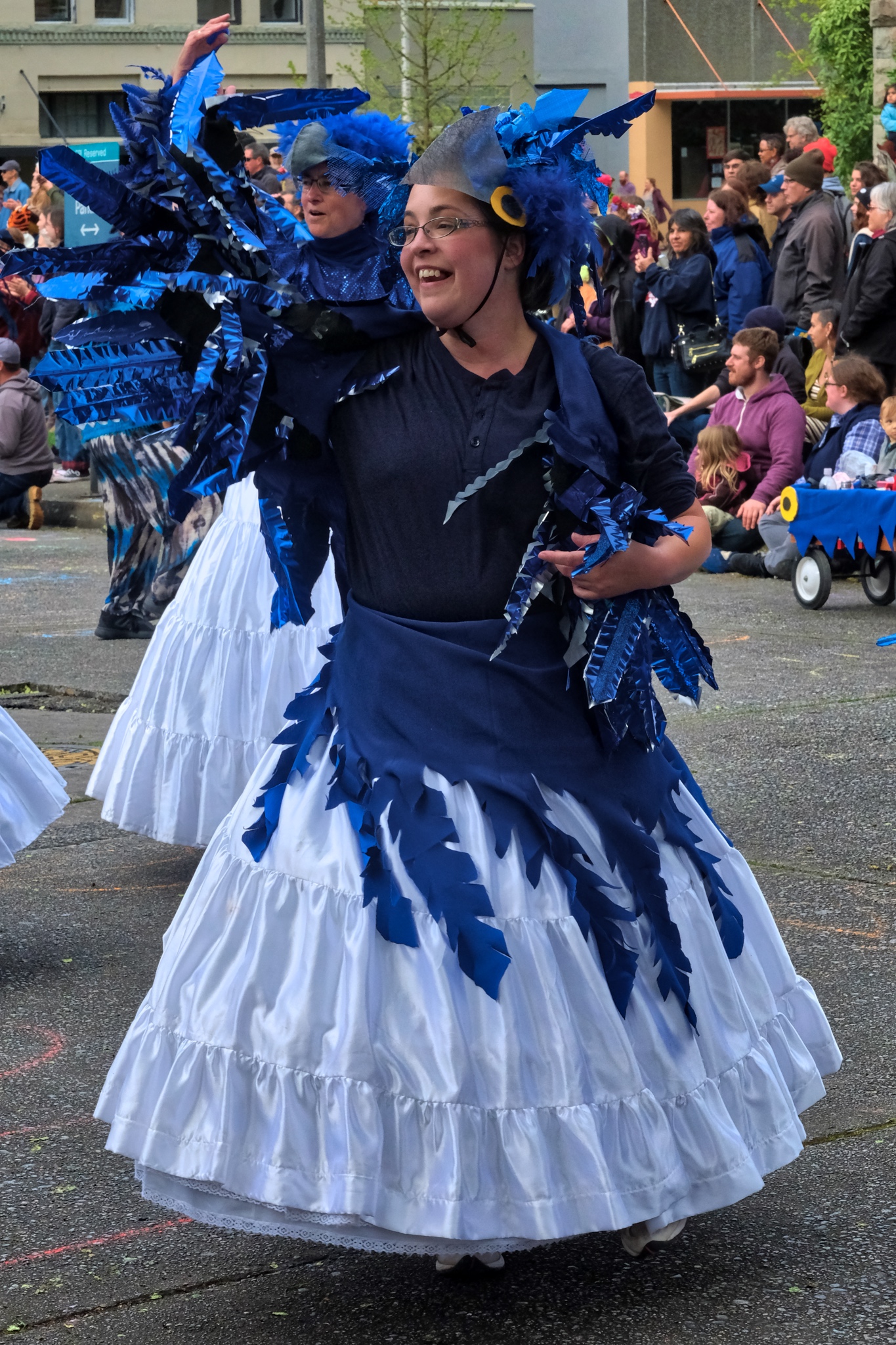
Getting into it!
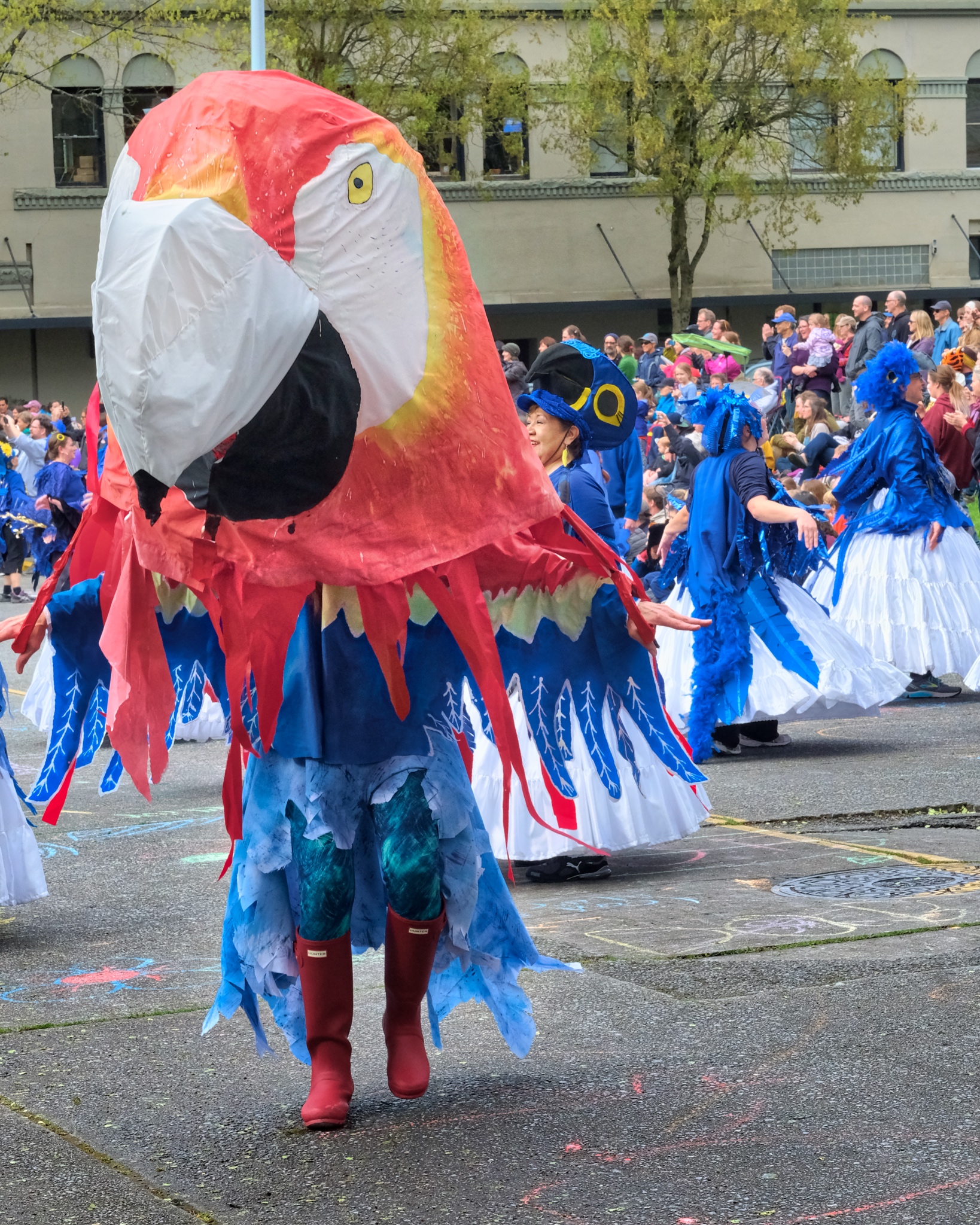
Parade parrot.
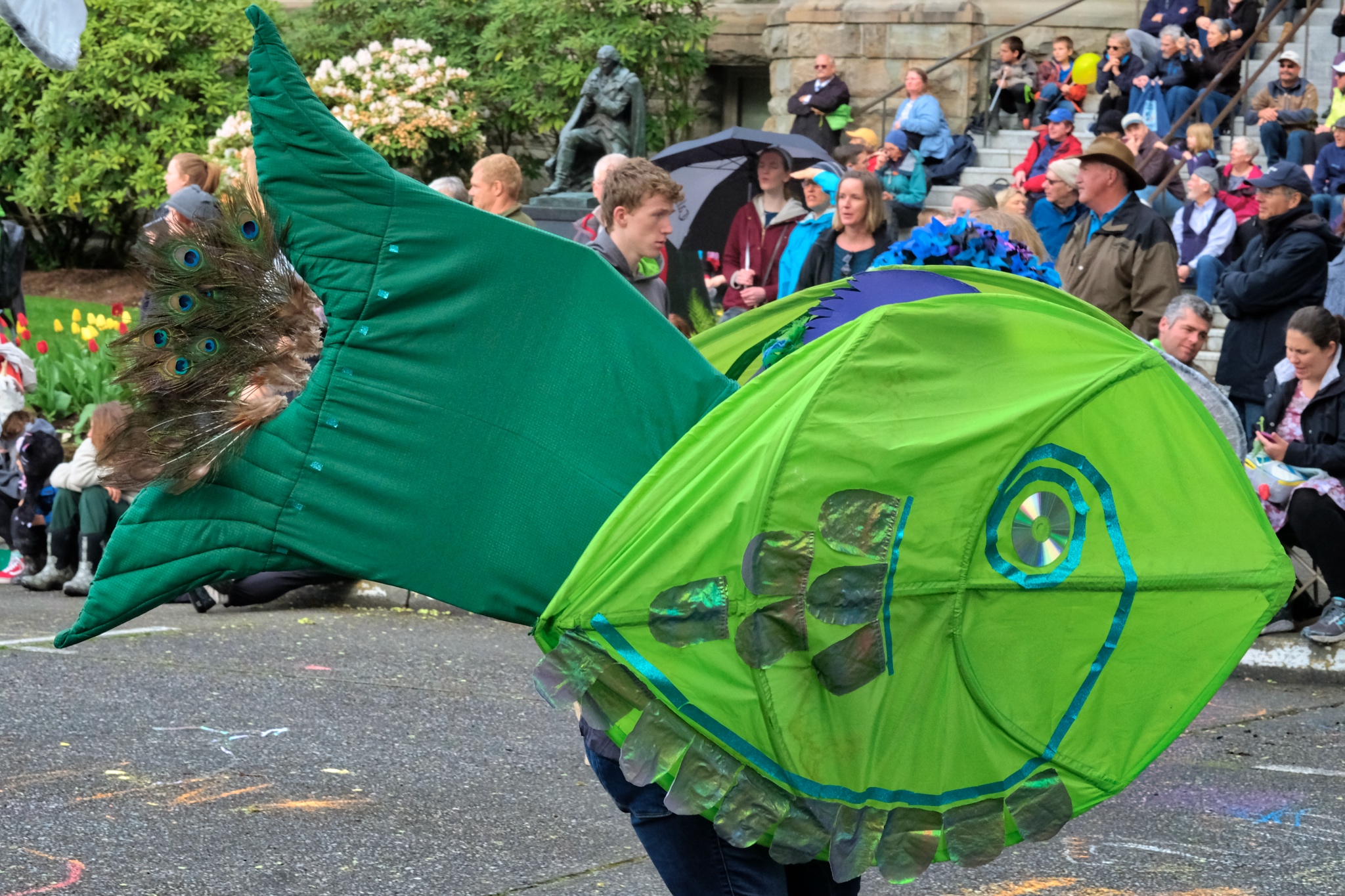
A fish when closed, a butterfly when open.
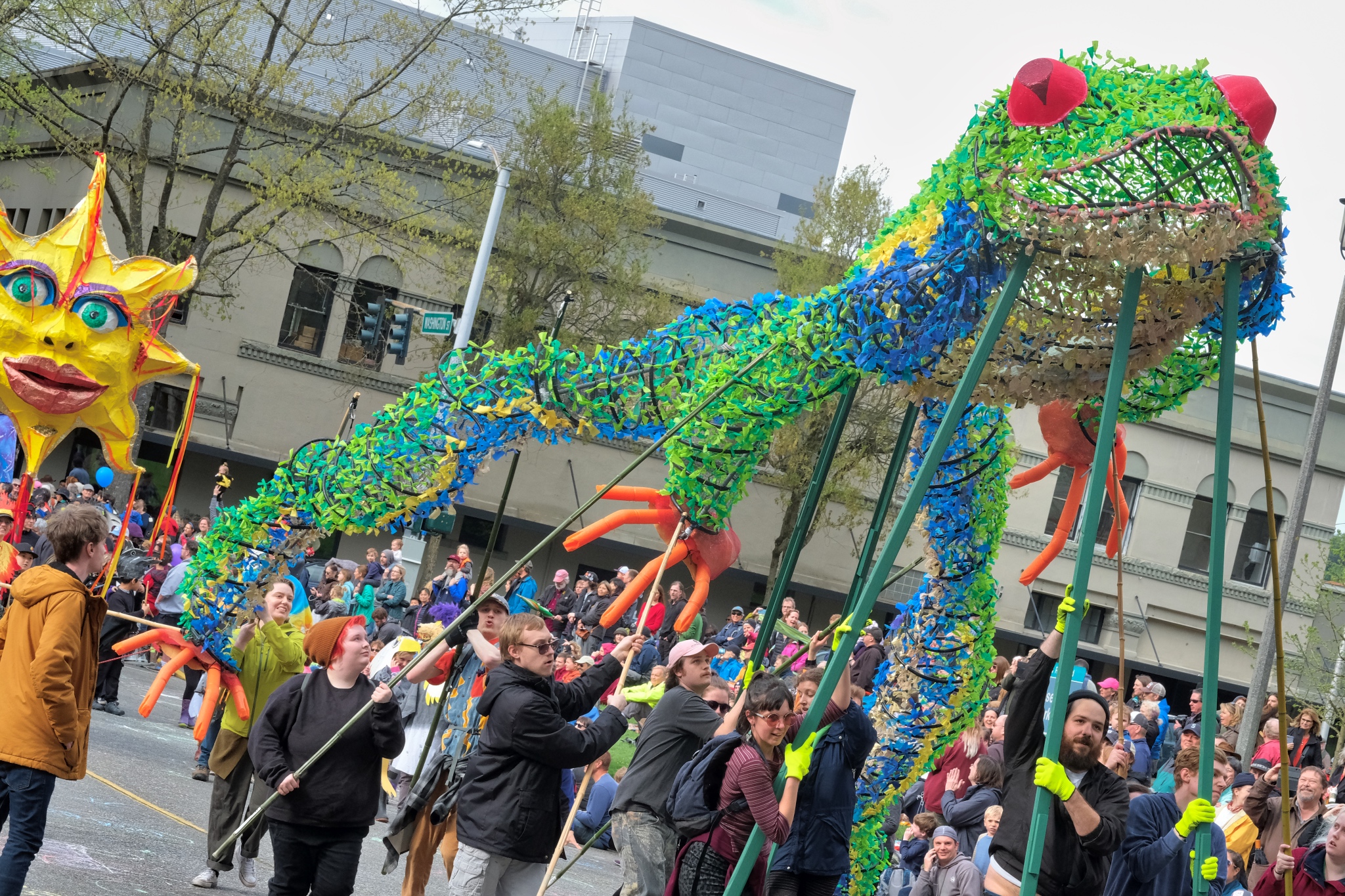
Some of the 'species' were very large . . . like this frog . . .
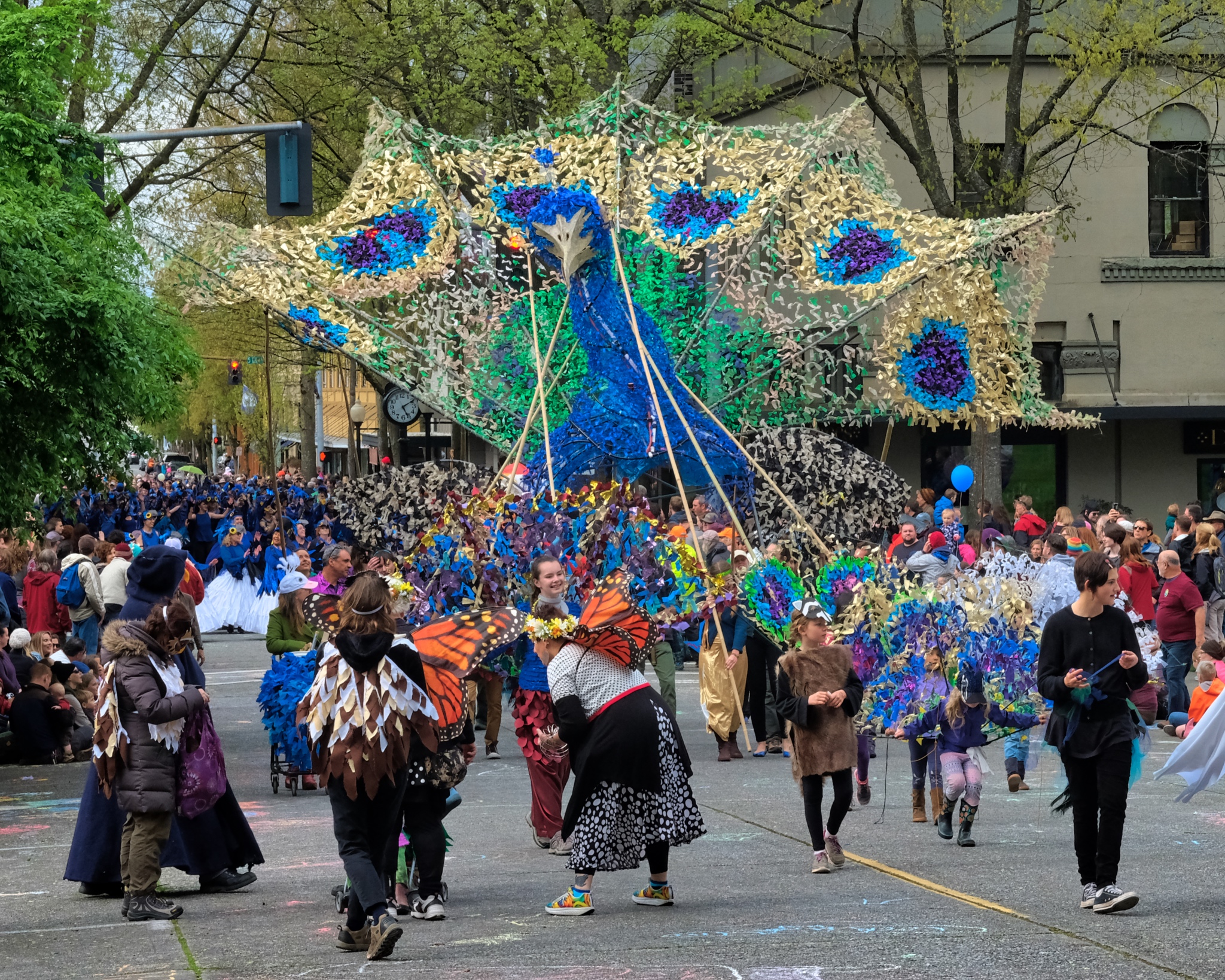
23 people were needed to manipulate this giant peacock down the avenue. Beautiful!
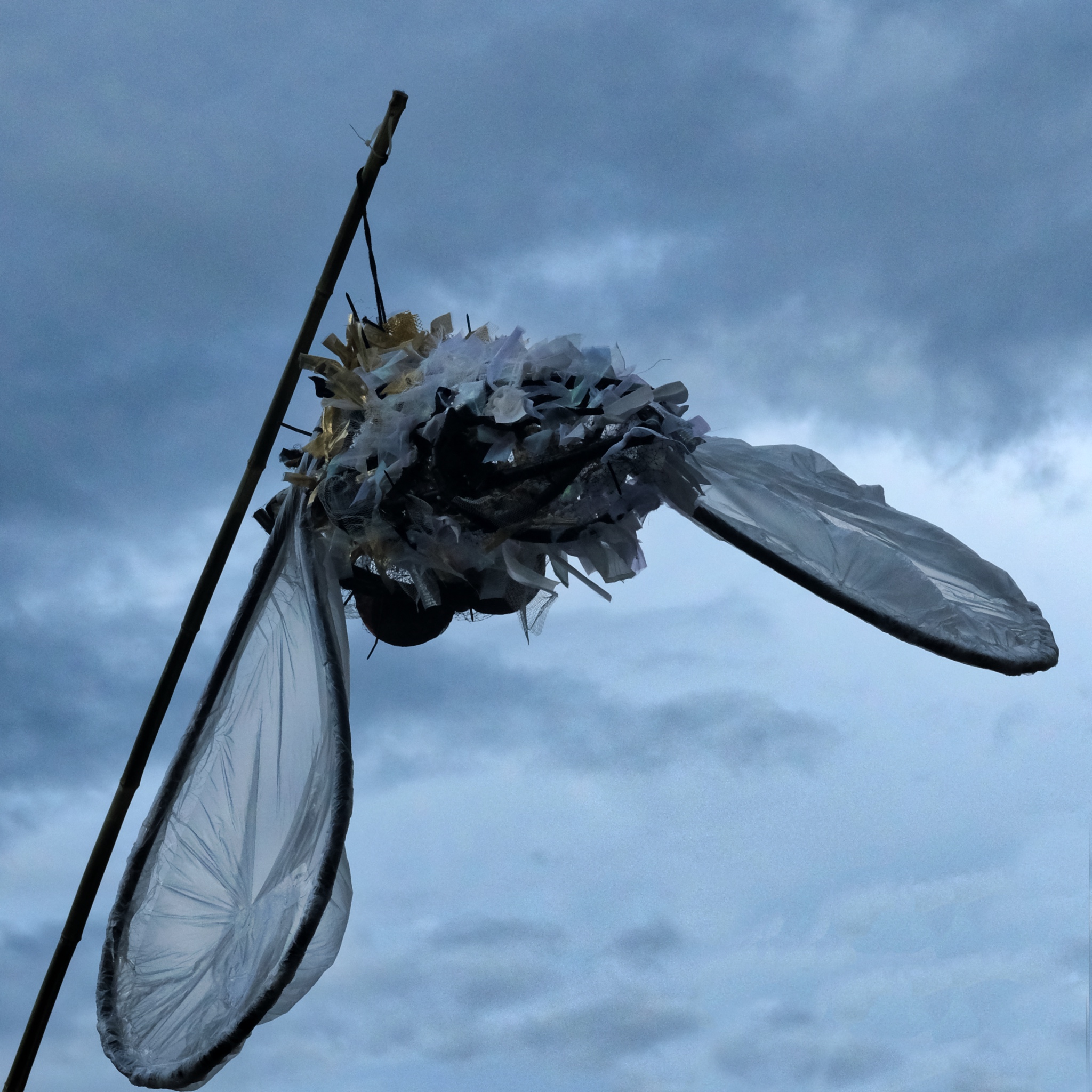
A very large flying insect buzzing around.
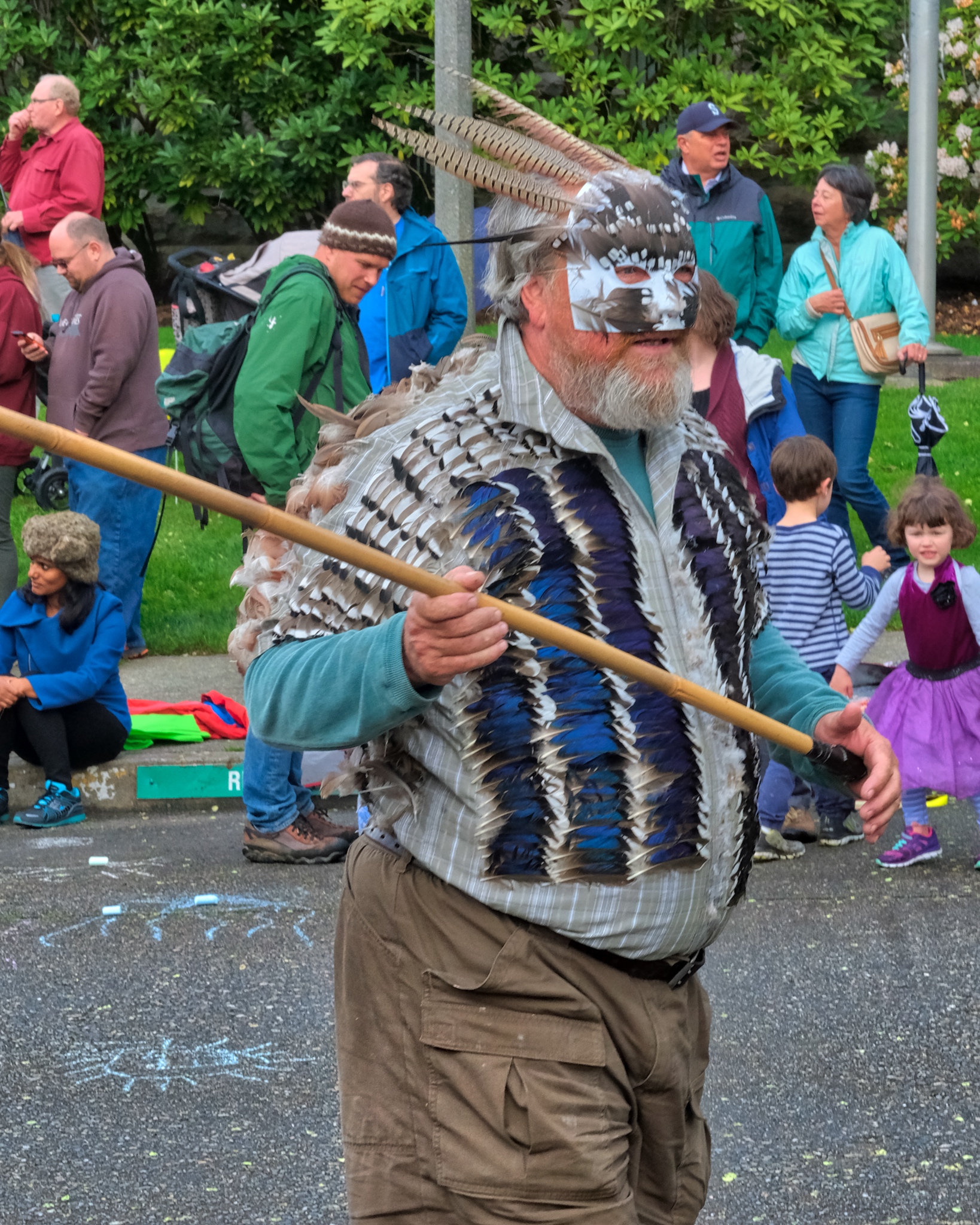
Just plain folks out having a good day.
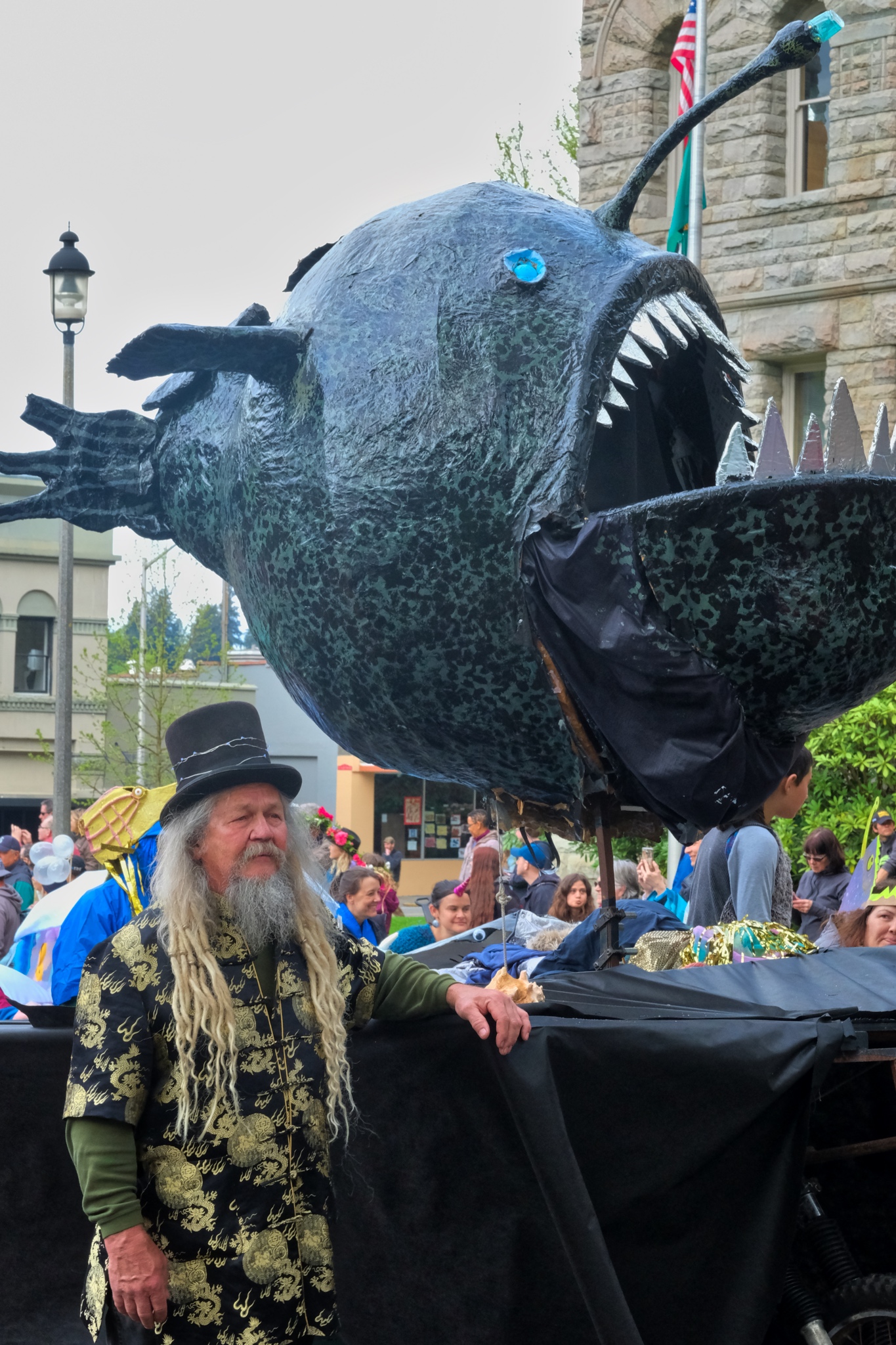
A couple of wizards showed up as well.
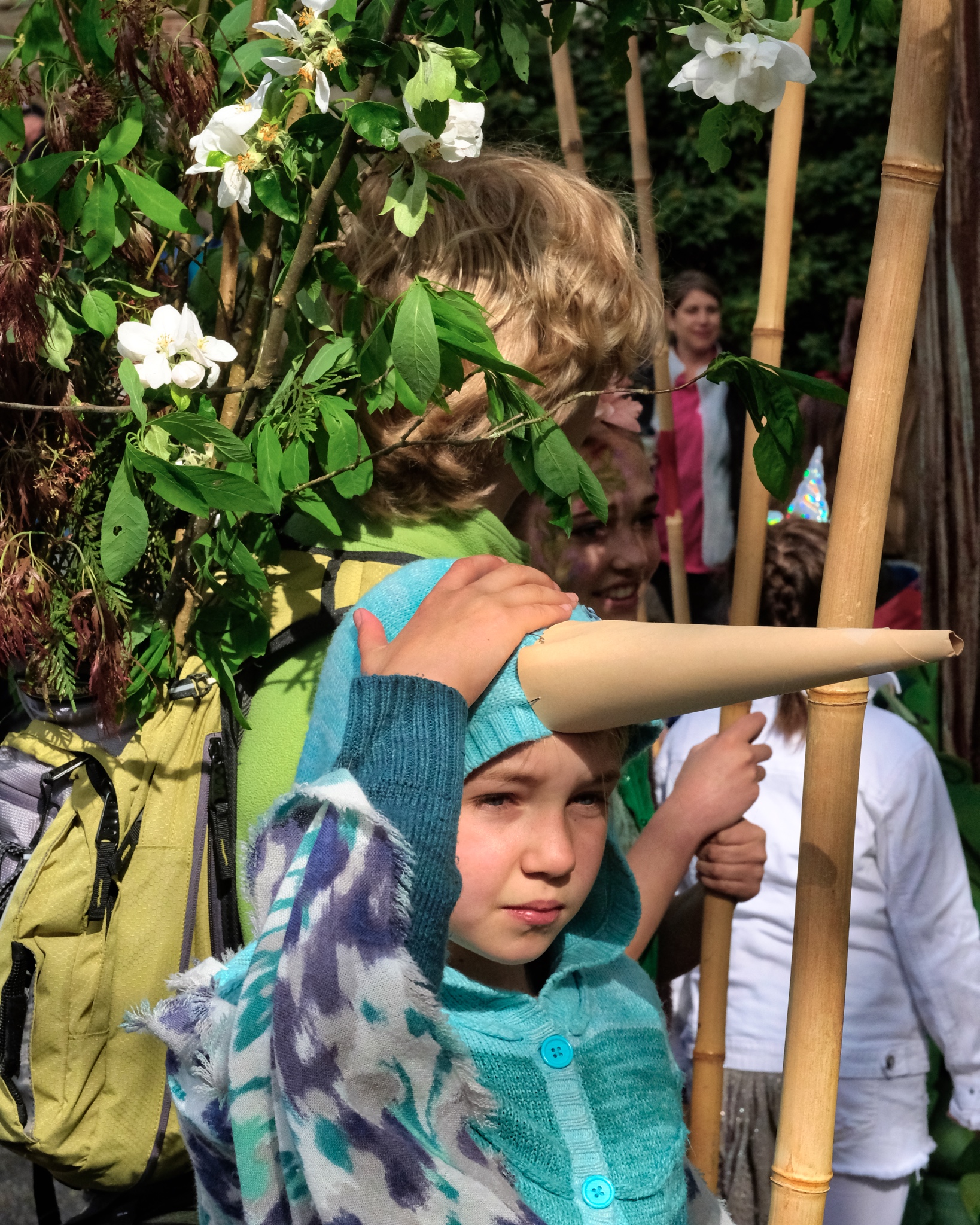
Fun for the whole family.
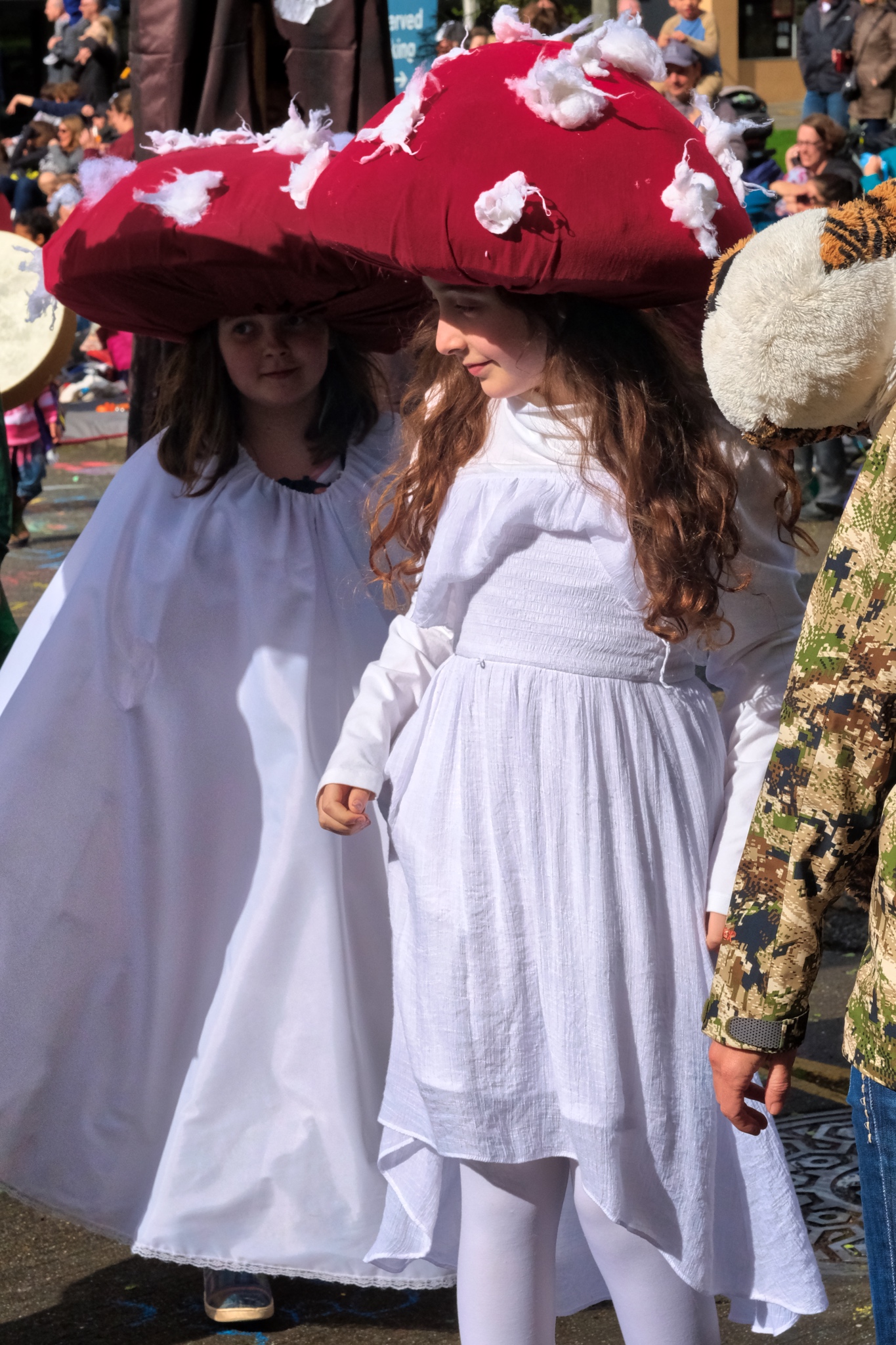
Sister mushrooms?
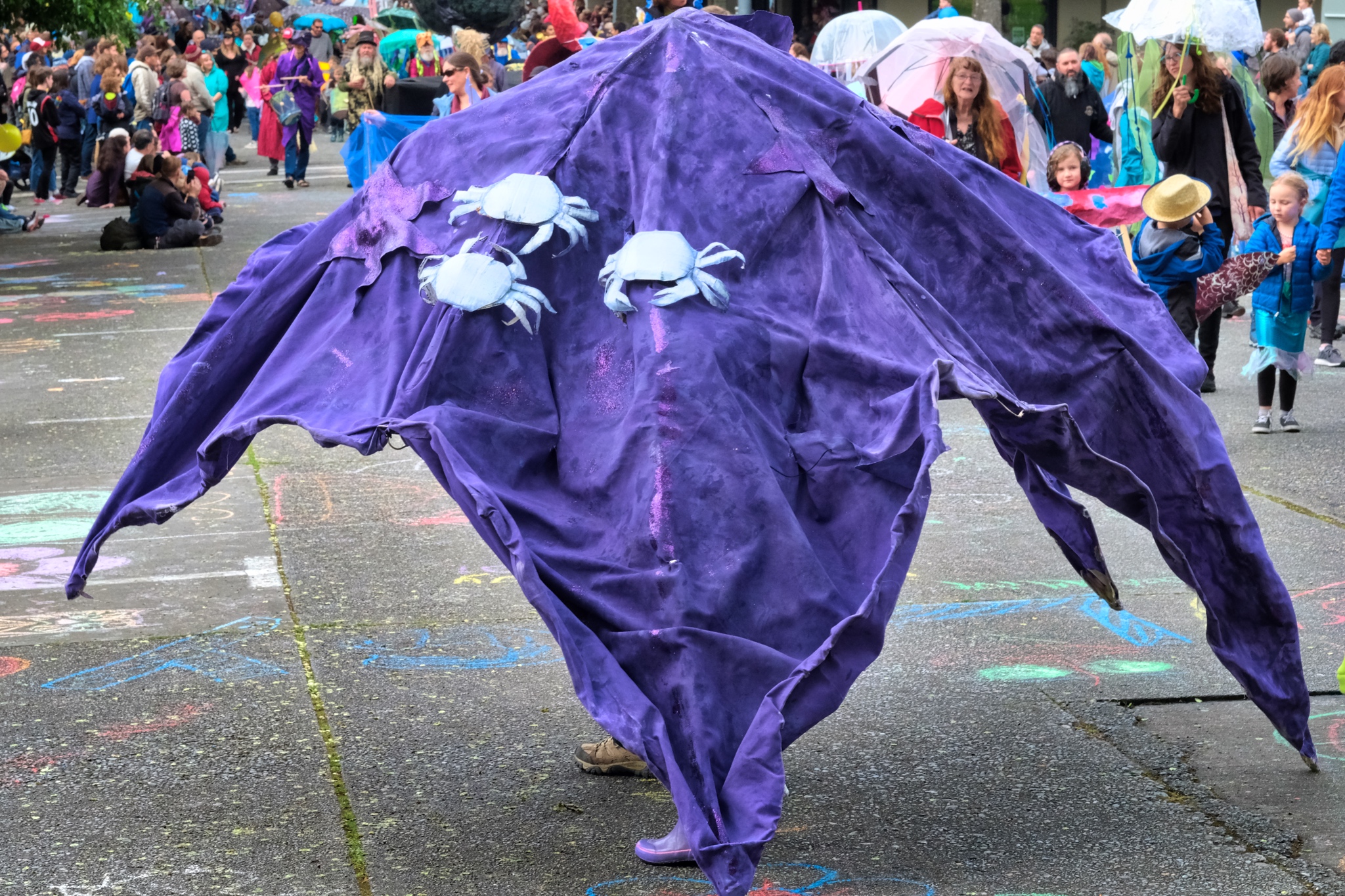
A creative starfish.
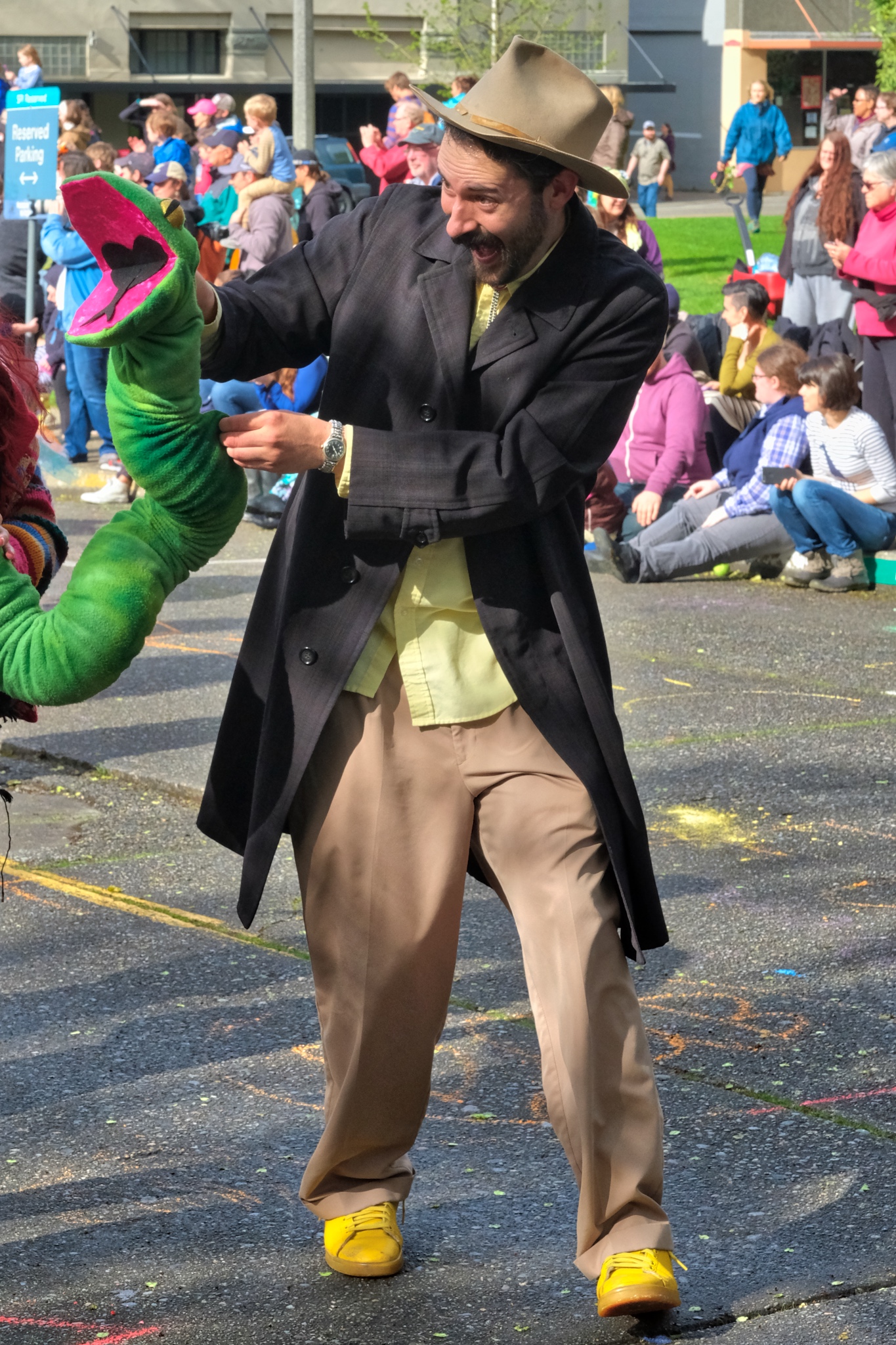
A great day out frightening the kids . . .
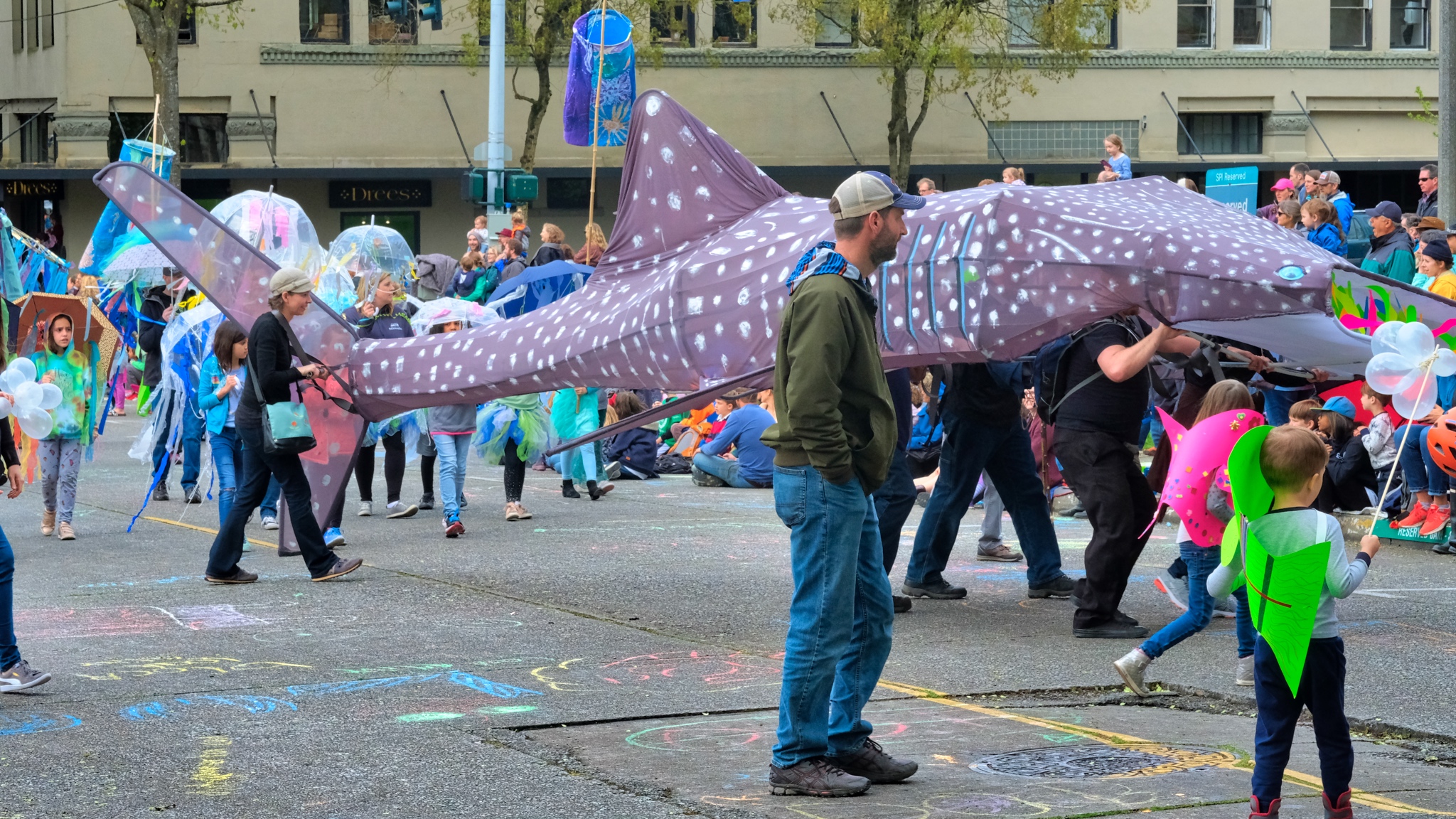
A rare 20 foot street shark . . . they would drag the crowd with the tail . . . as the children would scream!
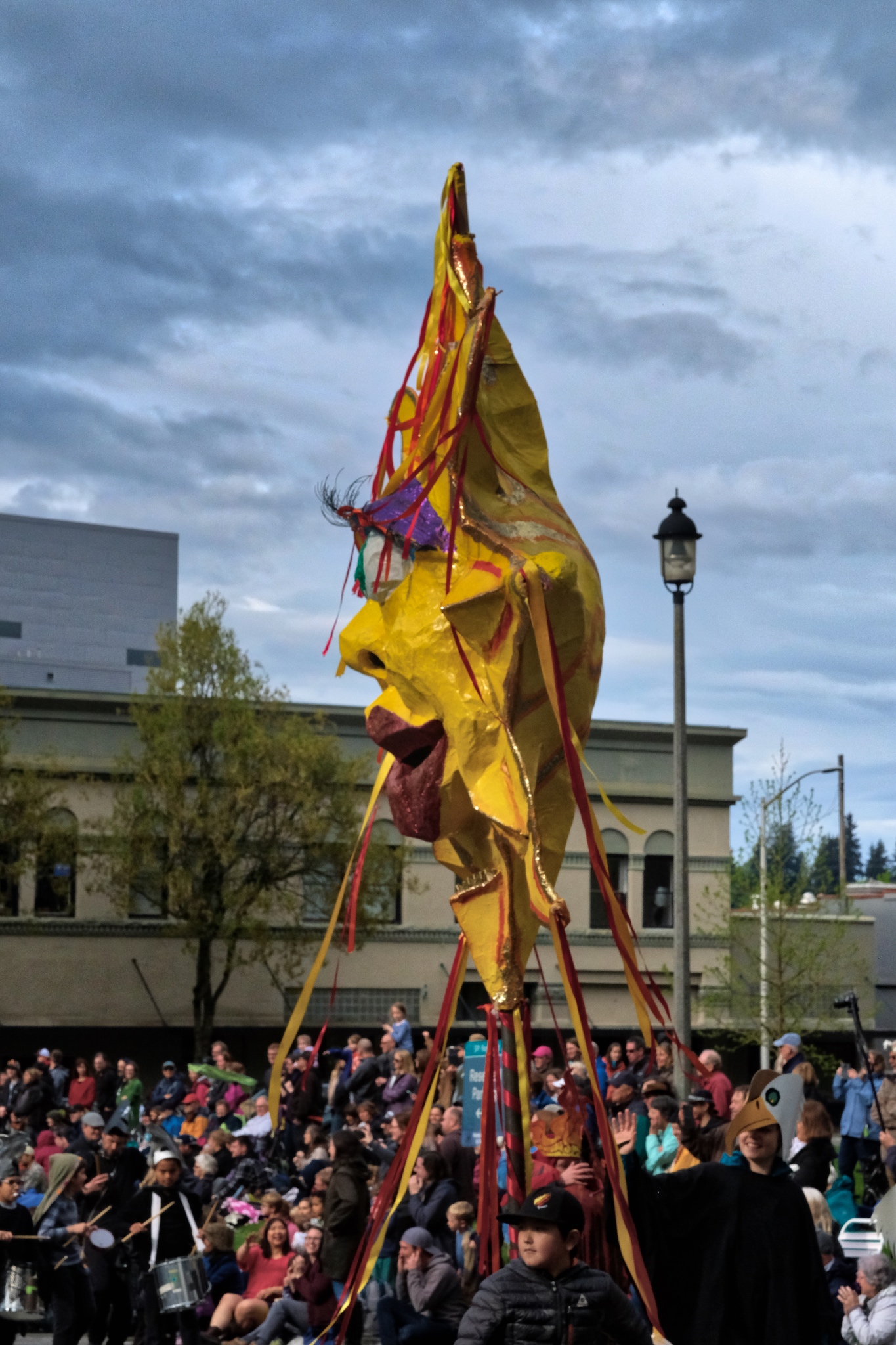
How much does it rain in Olympia? So much, that they have to actually carry the sun!
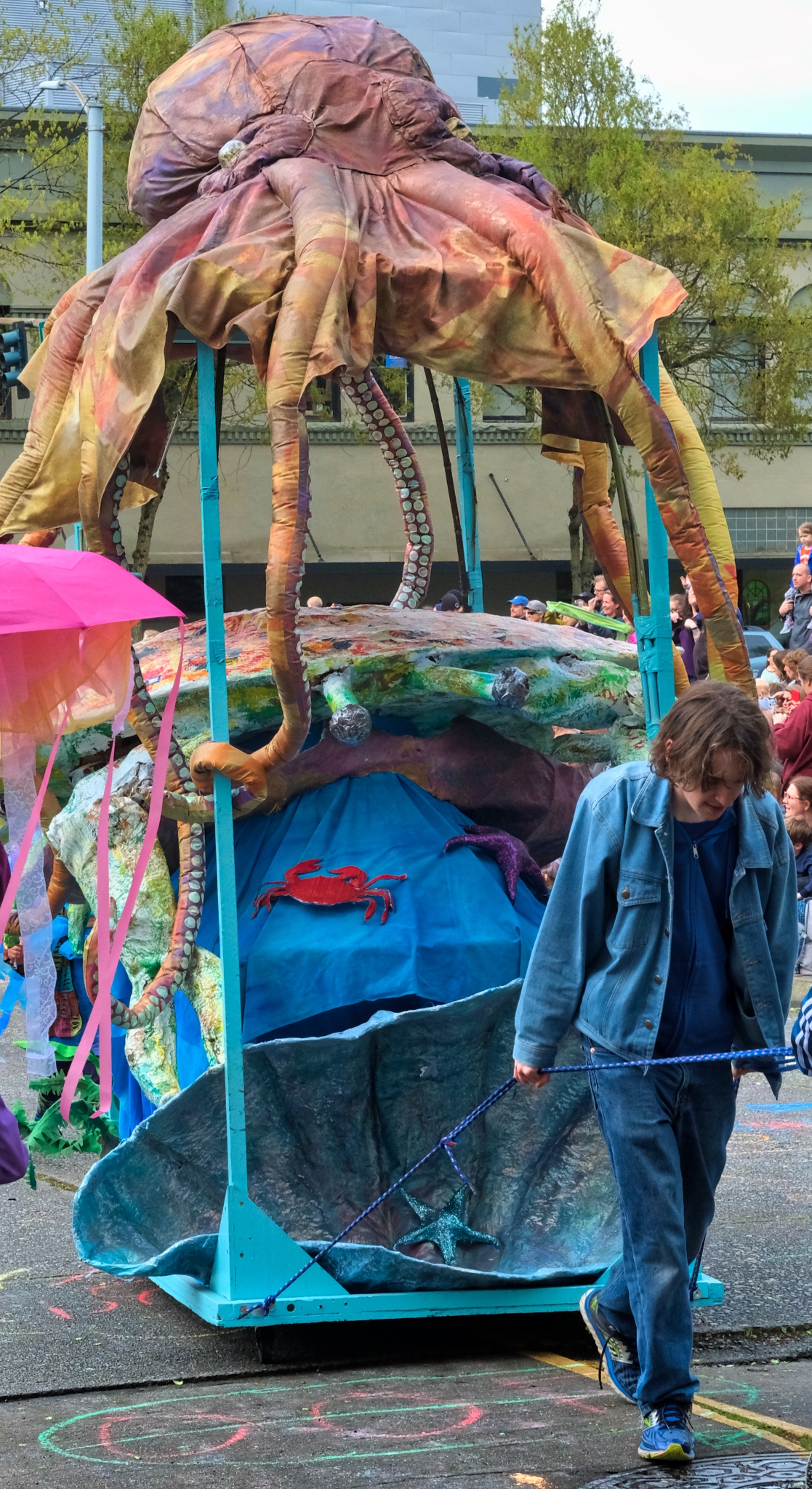
For a few, it was a long day . . . . might want to use larger wheels next year . . . and grease those bearings too . . .
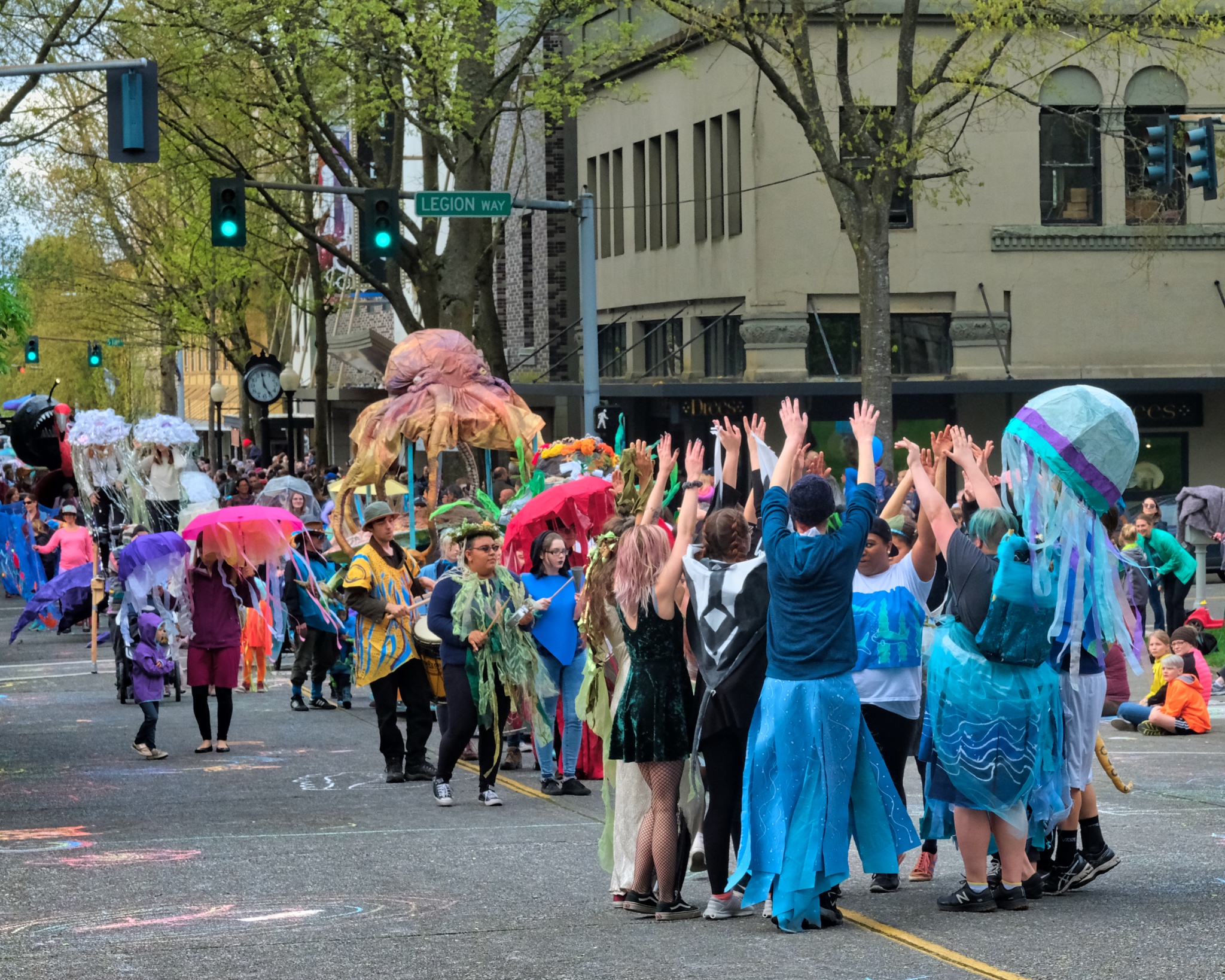
This group were fantastic dancers with a wonderful routine.
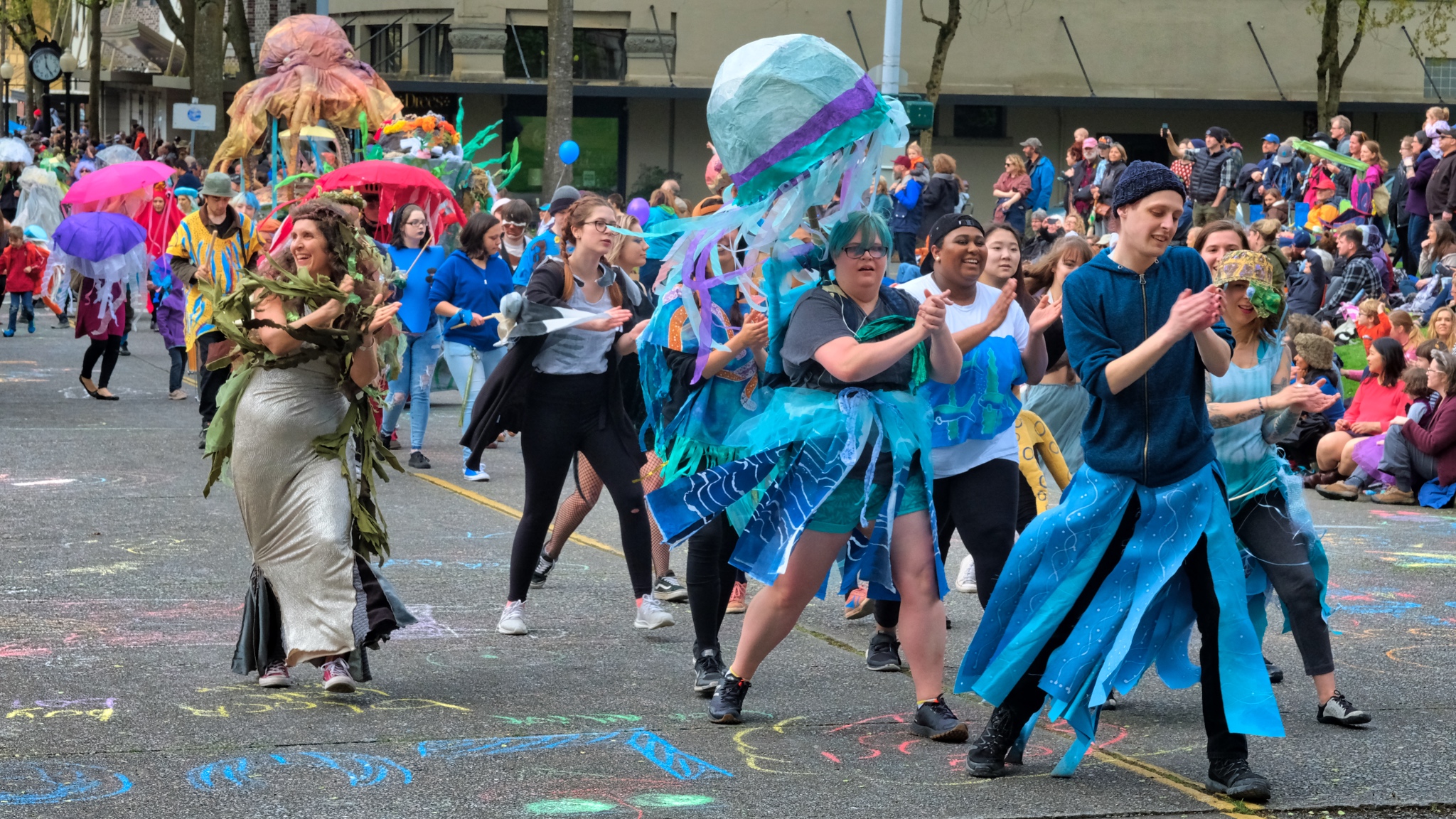
An energetic and diverse group of very good dancers having a ball!
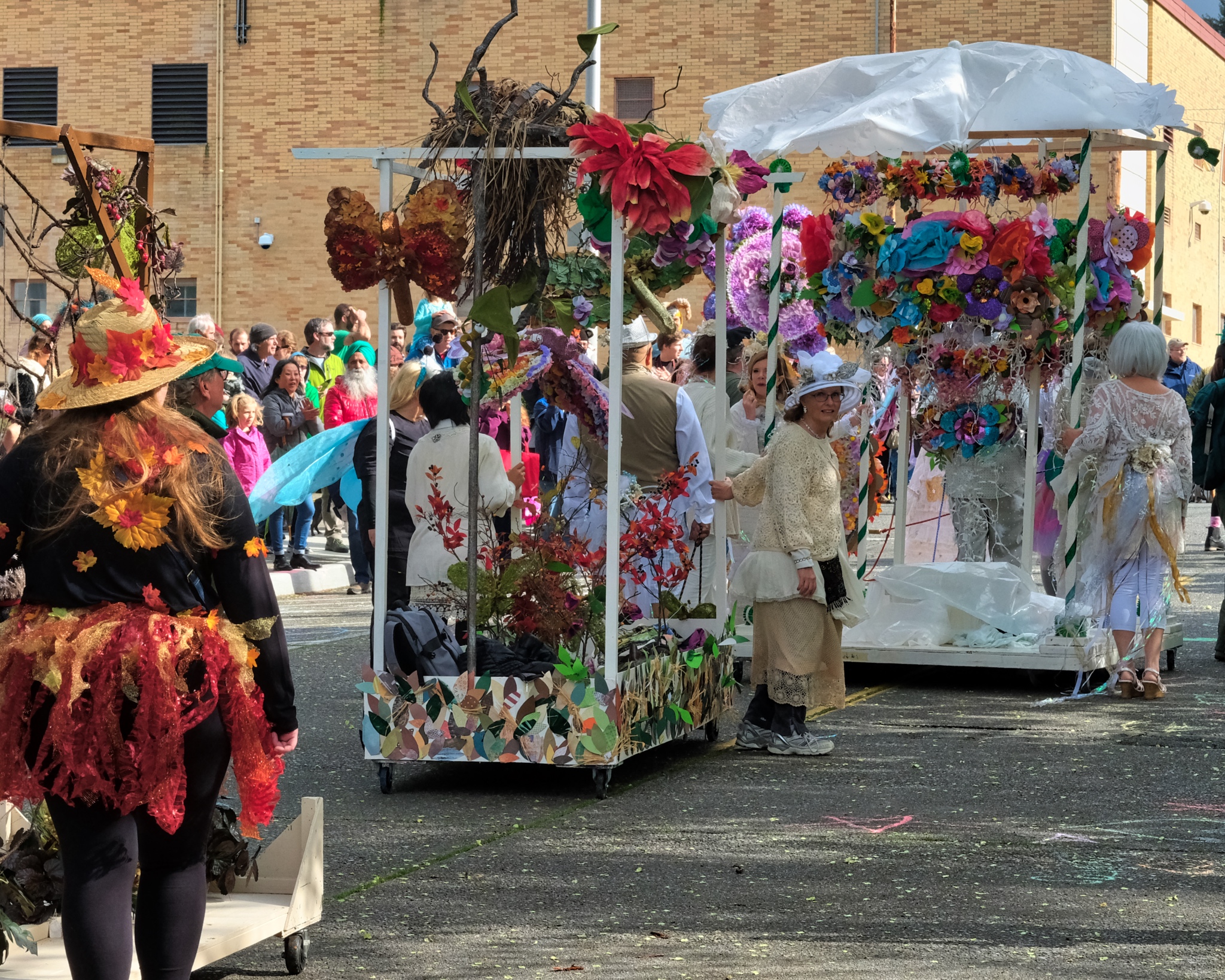
And then the last of the floats passed by . . . and the parade was over.
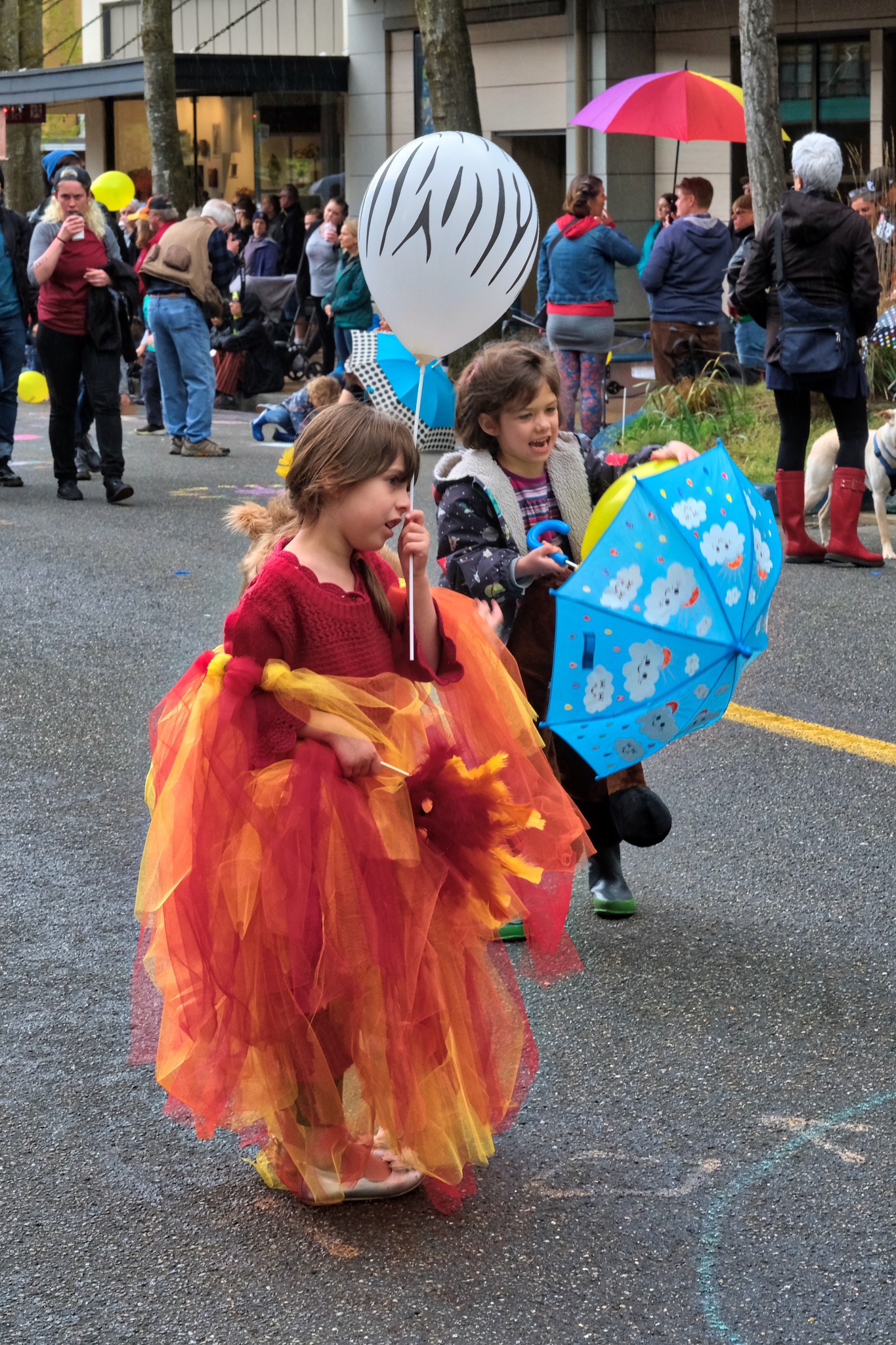
Time to go home . . . and enjoy the sweet memories.
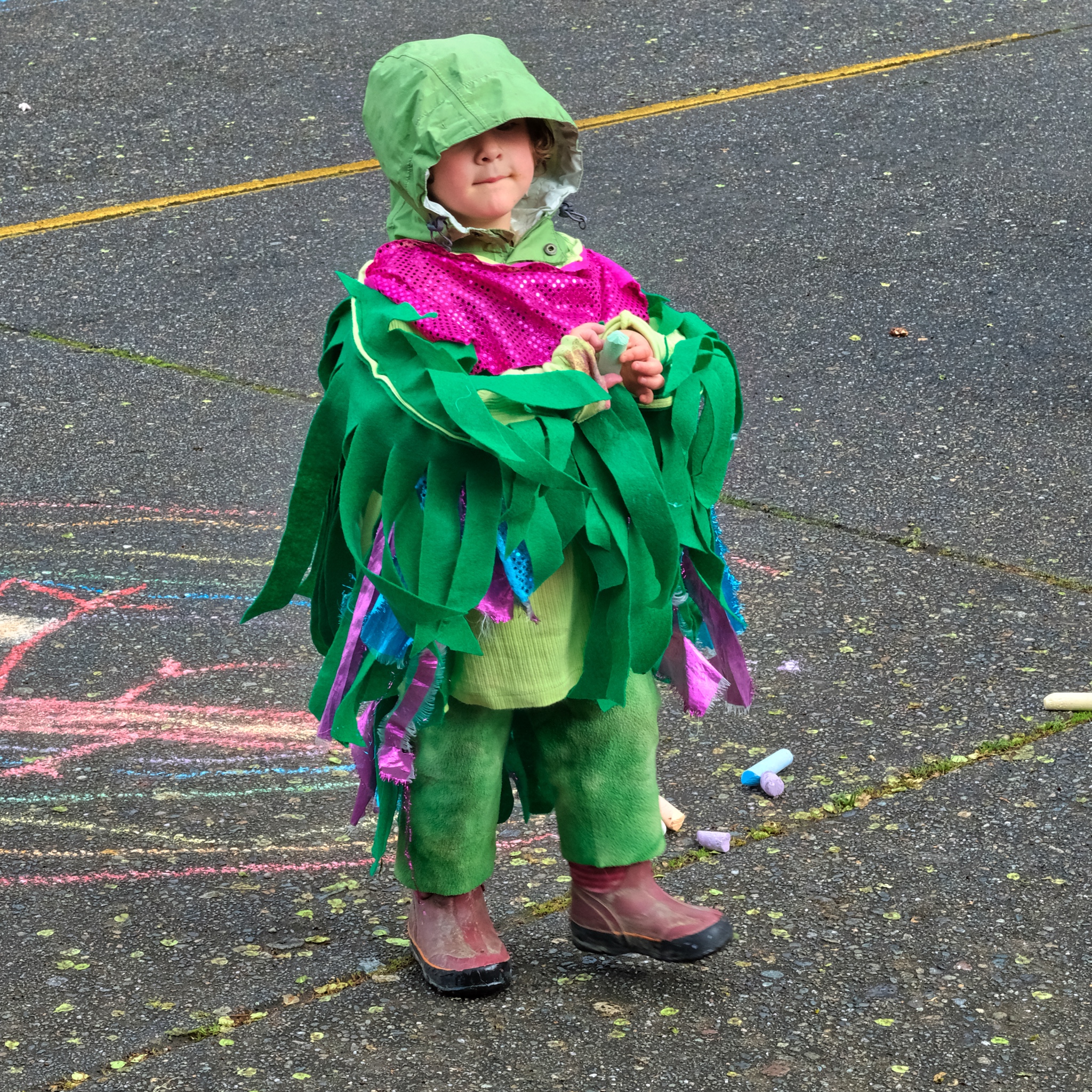
But I don't want to go home . . .
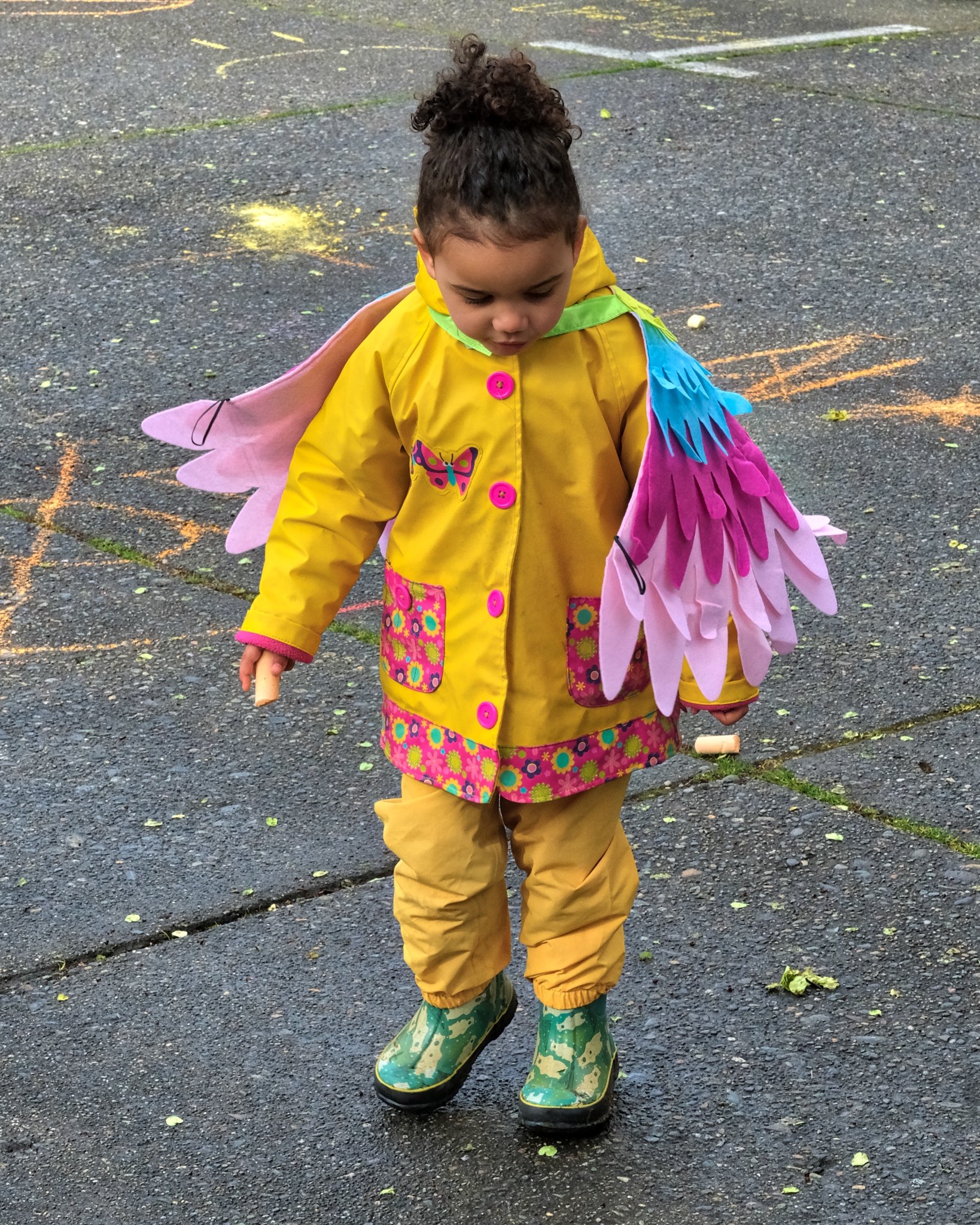
Do we have to go home NOW!
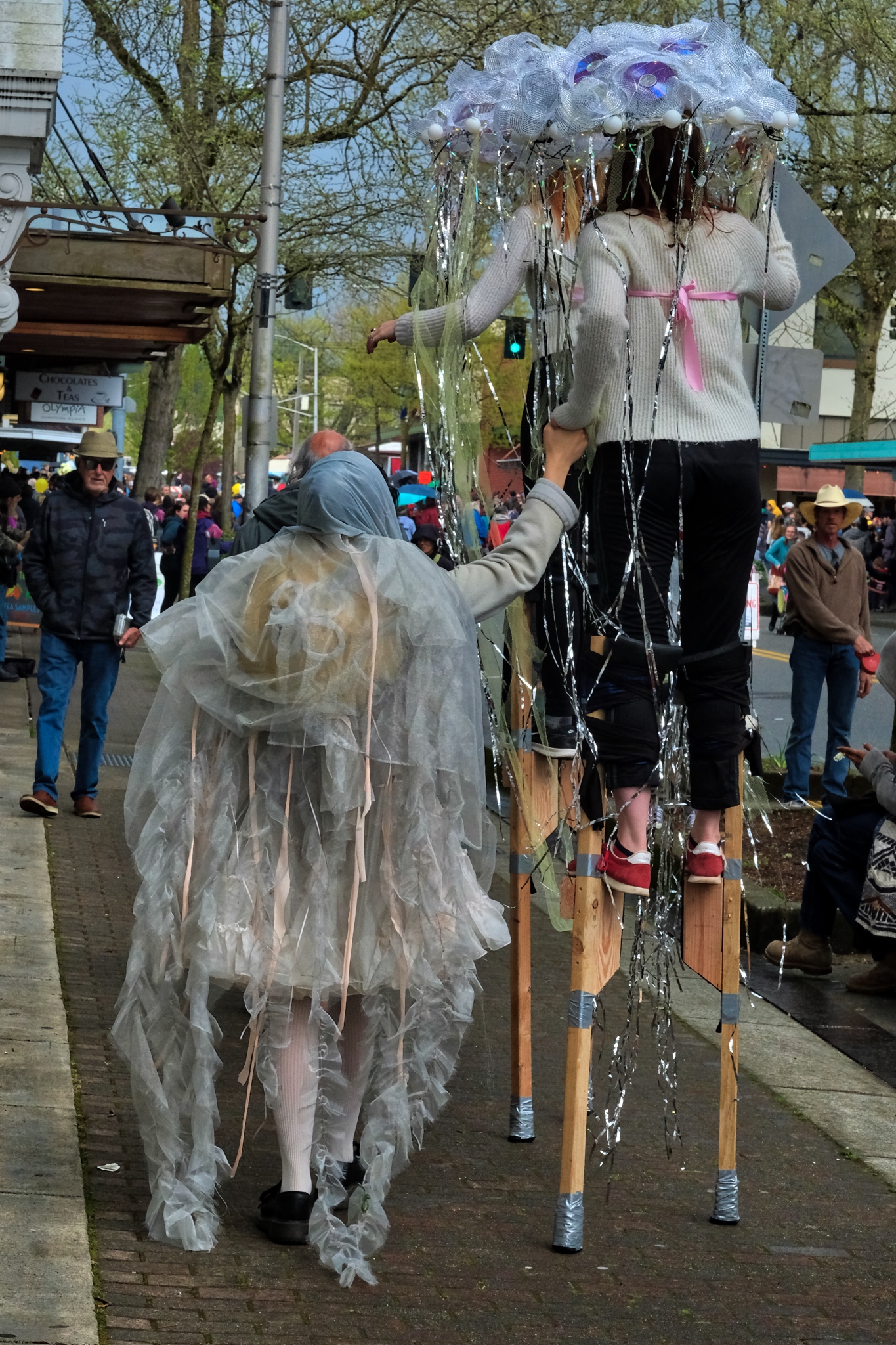
And that was that, as they say.
Biking The Chehalis Western Trail In Early Spring: Heaven!
 Friday, April 27, 2018 at 11:08PM
Friday, April 27, 2018 at 11:08PM 
Mile Zero - The Chehalis Western Trail, just outside of Olympia, Washington.

With my new (used) bike under me on a cold and damp late March day, I headed up the trail to see wht I could see . . . . and take a few photos. Mile Zero is only a few hundred yards from where I am staying.

The brown vestiges of last Autumn still strewn about on the wet trail . . .

. . . but here and there the first signs and sprouts of Spring were appearing.

I rode this trail in sections . . . up and back for 5-7 miles each way at a time, in different weather and in an ever exploding Springtime.

Before all the foliage returned, there were still many views out across the Thurston County rural landscaped.

The Chehalis Western Trail is a converted logging company rail line cut through beautiful forested Pacific Northwest countryside.

The trail is very well maintained and the horse riders, walkers, and bike riders share the pavement . . . and follow the rules.

As the weeks went by, and the weather warmed, the bare branches started to show tiny daubs of green.

The deep, old growth forests remain lush throughout the winter.

There are a number of ponds and small lakes along the 18 miles of the trail I have ridden so far.

I have taken my bike rides at various times of the day . . . an evening scene at one of the many lovely lakes.

Riding through these tree-lined canyons and green tunnels is a visual delight.

My new (used) large-size hybrid bike. Perfect for this kind of riding. It has a sprung front end and a sprung and damped seat. Very comfortable. I have since added more kit - lights, a dinger, a water bottle, and a couple of sacks for my phone and camera.

Such different scenes along the way . . . from open and sunny to dark and closed in.

I stopped often to take photos and have a sip of water.

A beautiful pond where I would sit and rest each time to just enjoy Nature.

As Spring progressed, the trail became greener and greener.

Very occasionally I would see another cyclist or walker.

New growth everywhere . . . . in late Spring.

There was more and more green in the tree tops the later in Spring I rode.

Sometimes I would load my bike into my truck and drive up to where I last turned around. My last leg (so far) was from mile 11 to mile 18. This leg of the trail brought me up into the foothills of the Cascades Muntains . . . and a very different topography.

The Deschutes River.

The Chehalis Western Trail runs along side the Deschutes River for several miles.

Up in the hills there were beaver dams with duck pairs paddling about.

The trail crossed several pleasant streams.

A Llama (or Alpaca?) ranch along side the trail. Cute.

I felt right at home on the trail . . . there were many 'Old Timers' like me out for exercise and inspiration.

My now 'kitted out' bike on a water stop . . . up near Mile 18.

I returned often to my favorite pond for quiet meditation.

Mmmmm!

It has been raining about 50% of the time I have been here . . . and many areas of the forest are supersaturated . . . making for some wonderful reflections.

Beautiful daubs of green and yellow adorn the trees all along the route.

A small sign directed me to this pretty lakeside rest area.

An idyllic Pacific Northwest scene . . . on the more-or-less rare clear day in late April.

The same stretches of trail I rode only one month earlier are now lush with new leaves and flowers.

Trees sprouting puffs of Spring.

Beautiful wild flowers along the trail.

Blossoms and blooms.

These fruit tree blossoms . . . smelled so sweetly.

Deep in the undergrowth . . .

Such a bold yellow!

Such lovely scenes all along . . .

Greener and greener as the weeks go bye.

April 27, and the refoliation is nerly complete.
Update on Tuesday, May 8, 2018 at 3:20AM by
 Dr. Jeff Harper
Dr. Jeff Harper
 Dr. Jeff Harper
Dr. Jeff Harper

Two weeks later and I am out with the intention of riding the last 13 miles . . . . beginning at mile 15 of the trail.

It was a beautiful day . . . clearing all day, and warm. Wonderfully bucolic scenes of western Washington.

The cows were enjoying the good weather . . . and fresh tender grass.

The Chehalis Western Trail climbs up into the foothills of the Cascade mountain range, and as it does, the trees become larger.

The trail up in this part is an almost continuous tunnel between the trees.

Such a lovely and inspirational place for an all-day bike ride.

There were some wildlife to spot . . .

It must have been a very bad winter here . . . the deer were very thin. :-)

The cows, on the other hand, seemed to have done well over the winter.

The bike path became sunnier as the day wore on.

On and on down into a tunnel of foliage . . .

A rail line crossed over the path, which was itself a rail line before being paved.

It must be very wet here throughout the winter . . . these trees were completely moss and lichen covered . . . and only just beginning to bud out.

Beautiful . . .

Sometimes the trail would come out of the trees into bright sunshine.

There were many kinds of wild flowers. I had a lot of miles to cover, so I did not stop as often as would have liked.

Sweet yellow wild flowers.

As the trail neared its end near the town of Yelm, there was more farmland.

What an idyllic scene.

A dry shed for the kids to wait for the school bus . . . it rains a lot here.

The rural school bus waiting shed was decorated nicely . . .

The complexity of these budding trees in the bright clear sunshine was captivating.

I eventually rode to the end of the trail . . . 13 miles one-way . . . and then back for a total of 26 miles (40K) in one day! Overall I rode the 34 miles of the trail in three sections . . . both directions, for a total of 68 miles along the fantastically beautiful Chehalis Western Trail while Spring was exploding all around me.
In The Garden: Earliest Spring in the Pacific Northwest
 Monday, April 16, 2018 at 7:14AM
Monday, April 16, 2018 at 7:14AM Four weeks in a garden on the Puget Sound of Washington State . . . .
 The earliest days, misty and damp. The end of a long, wet winter in the Pacific Northwest. This is the garden as it begins to awaken.
The earliest days, misty and damp. The end of a long, wet winter in the Pacific Northwest. This is the garden as it begins to awaken. Lat years glory subdues . . . but awakening.
Lat years glory subdues . . . but awakening.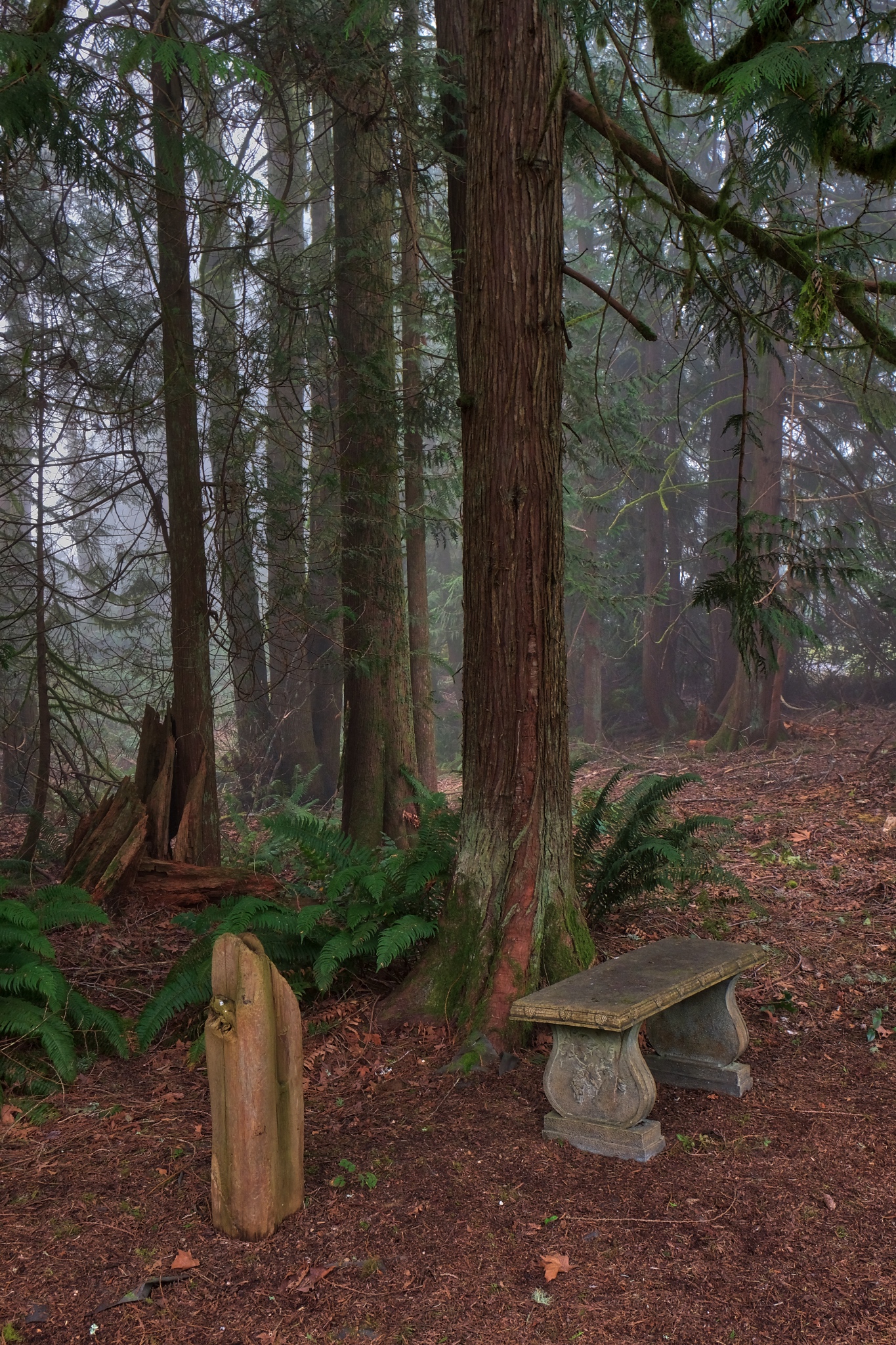 The misty forest that surrounds the house is beginning to stir.
The misty forest that surrounds the house is beginning to stir.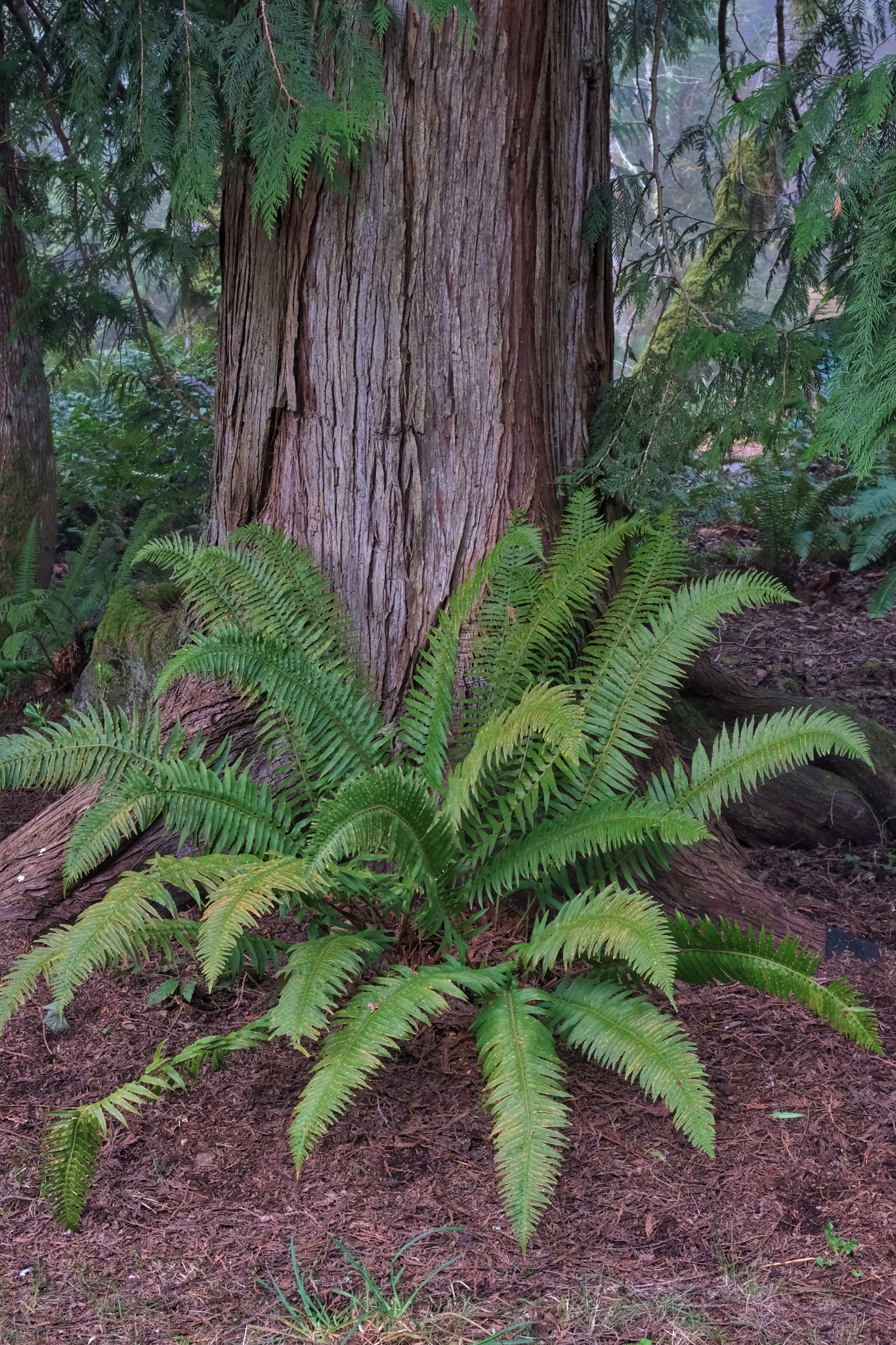 The sheltered ferns made it through the cold snaps.
The sheltered ferns made it through the cold snaps.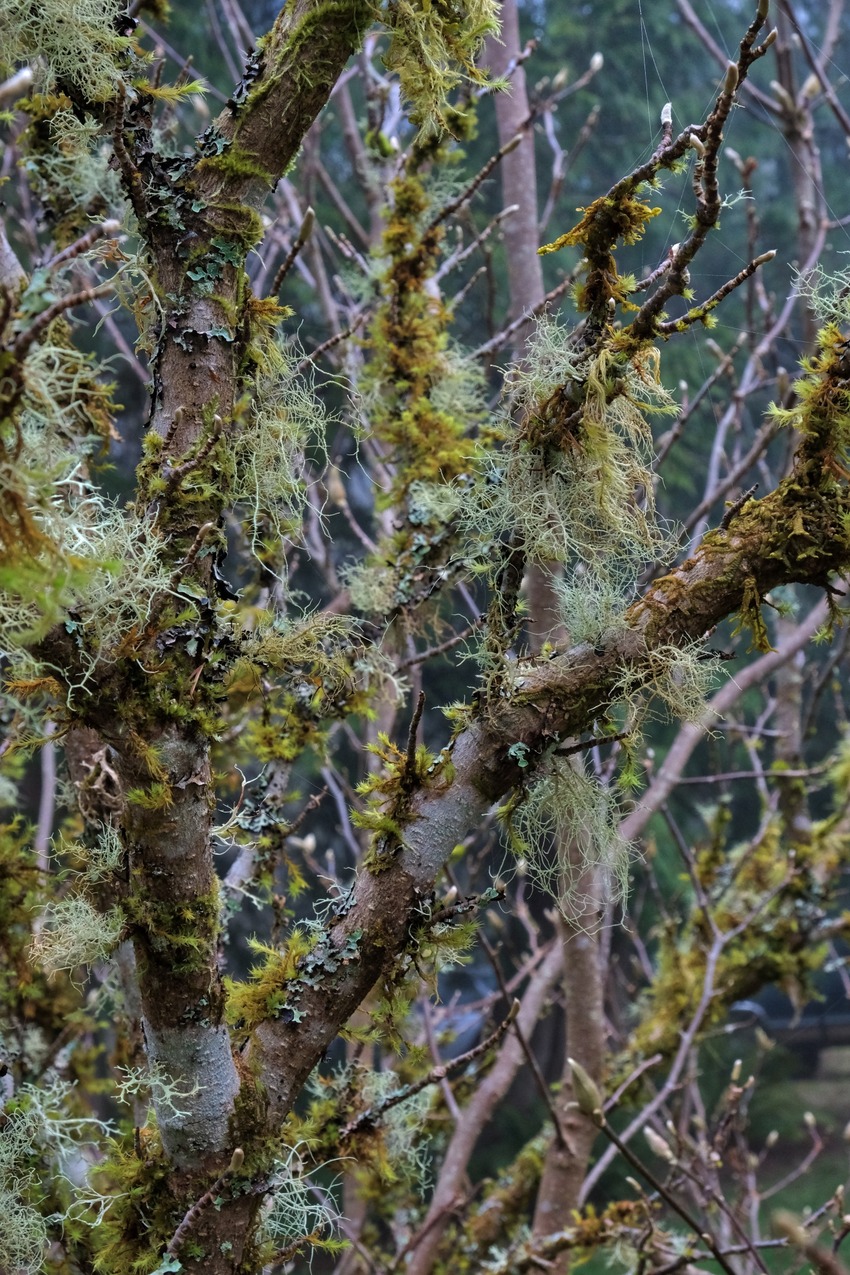 The mosses and lichens are adapted to thrive through the winter . . . when all the leaves have fallen from the trees.
The mosses and lichens are adapted to thrive through the winter . . . when all the leaves have fallen from the trees.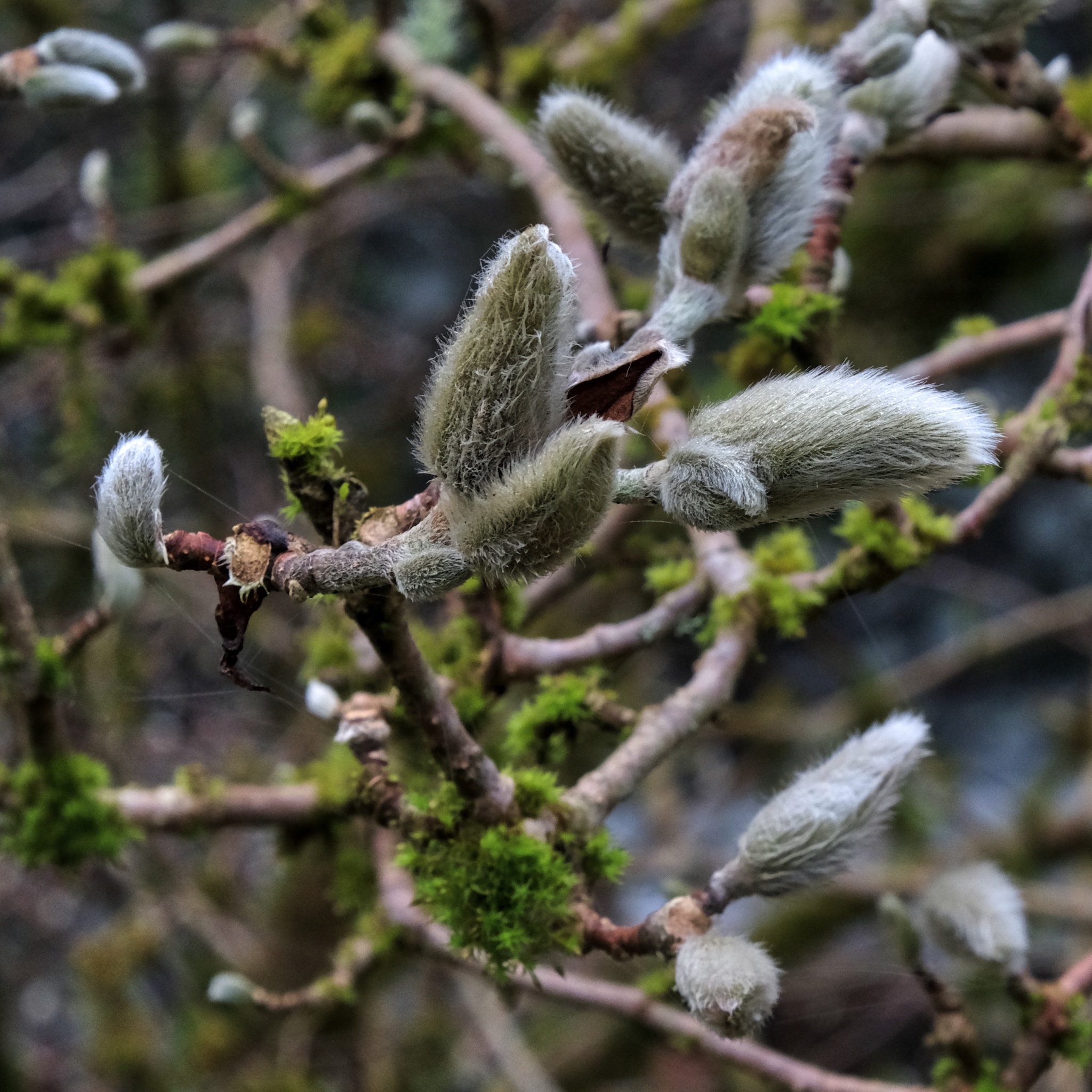 Here and there buds are starting to appear.
Here and there buds are starting to appear.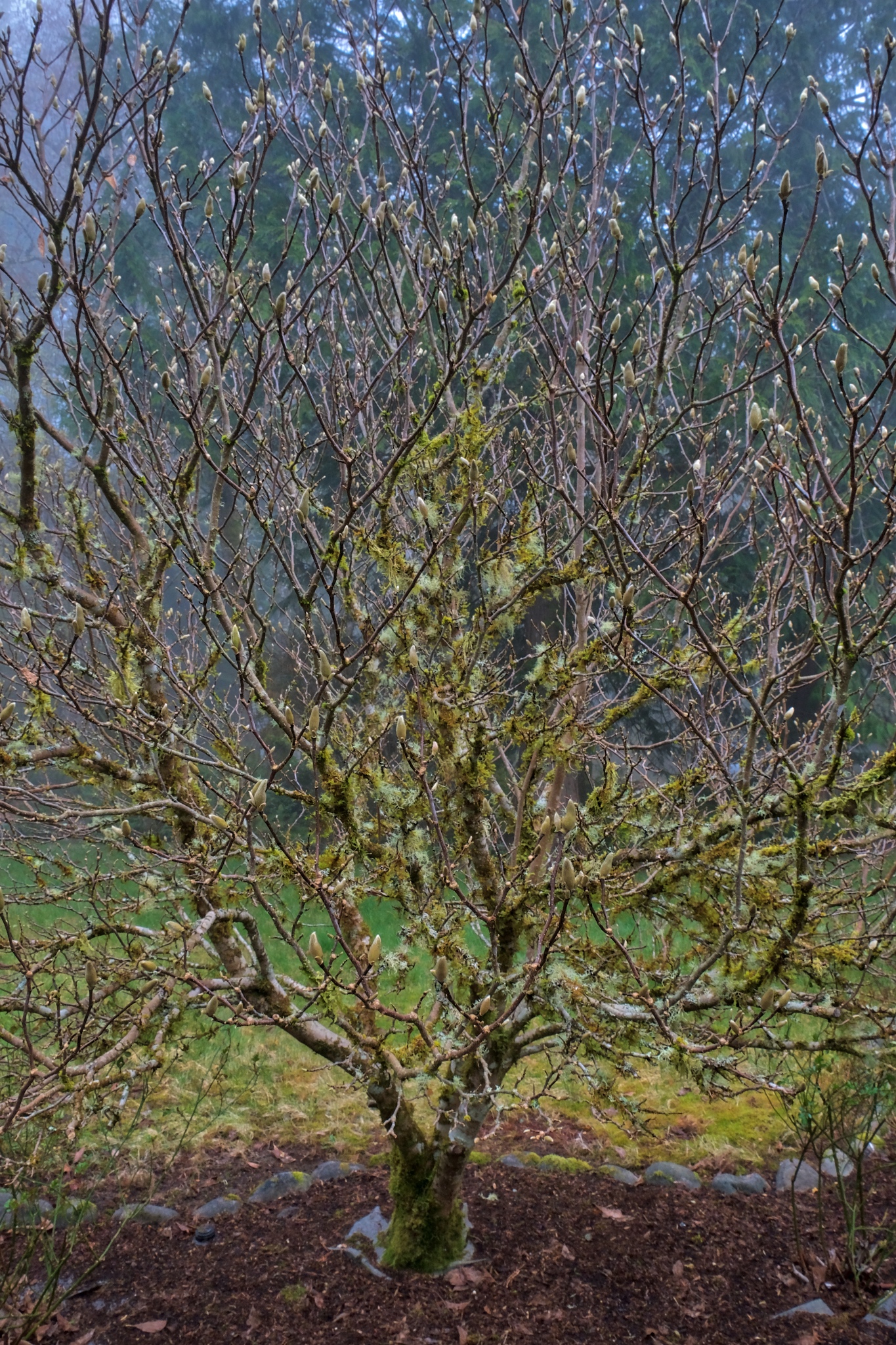 The front yard Magnolia flashes it's first promise of wild flowering . . .
The front yard Magnolia flashes it's first promise of wild flowering . . .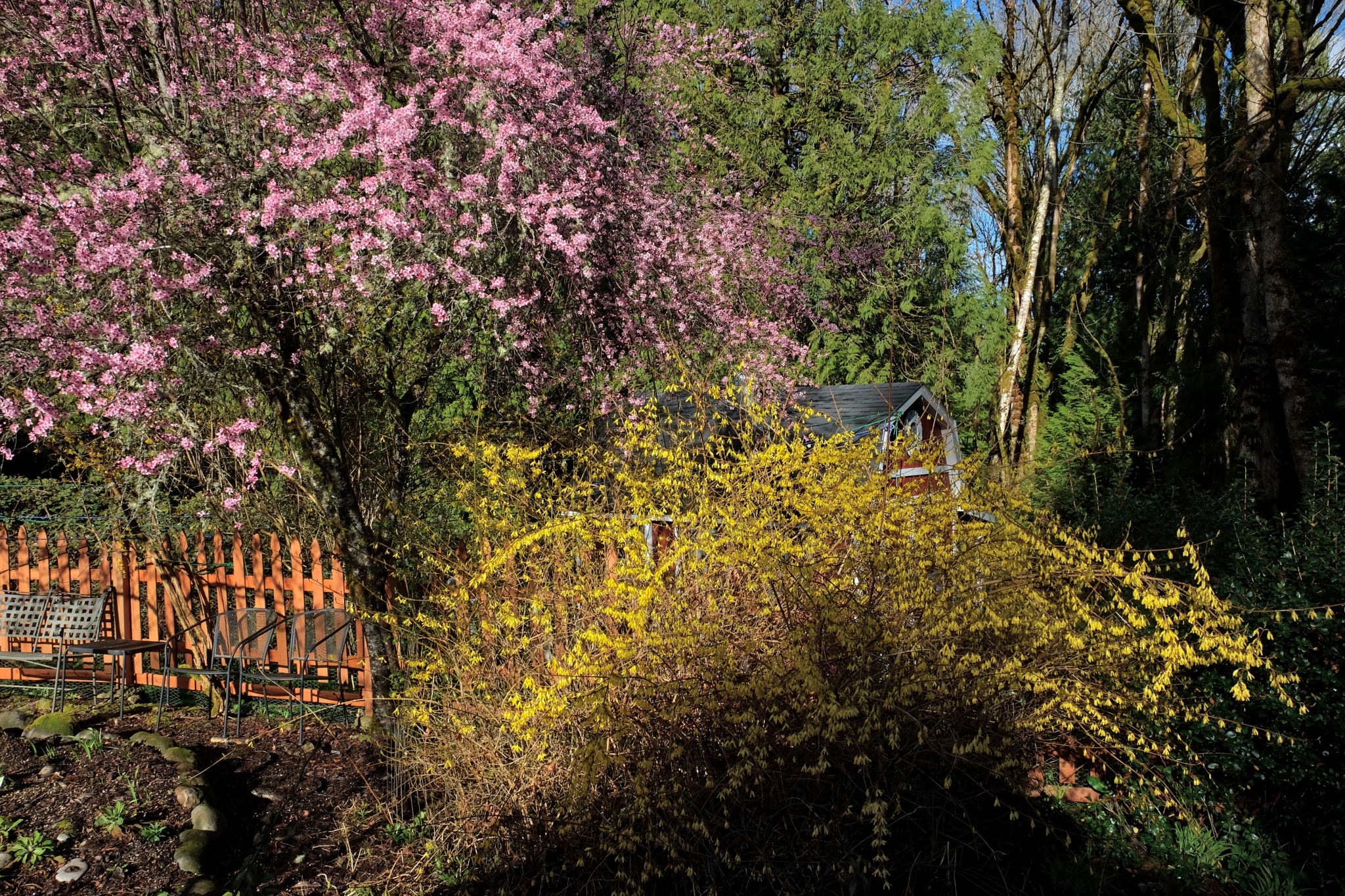 A week later . . . and the sun broke through for an afternoon of amazing light and color!
A week later . . . and the sun broke through for an afternoon of amazing light and color!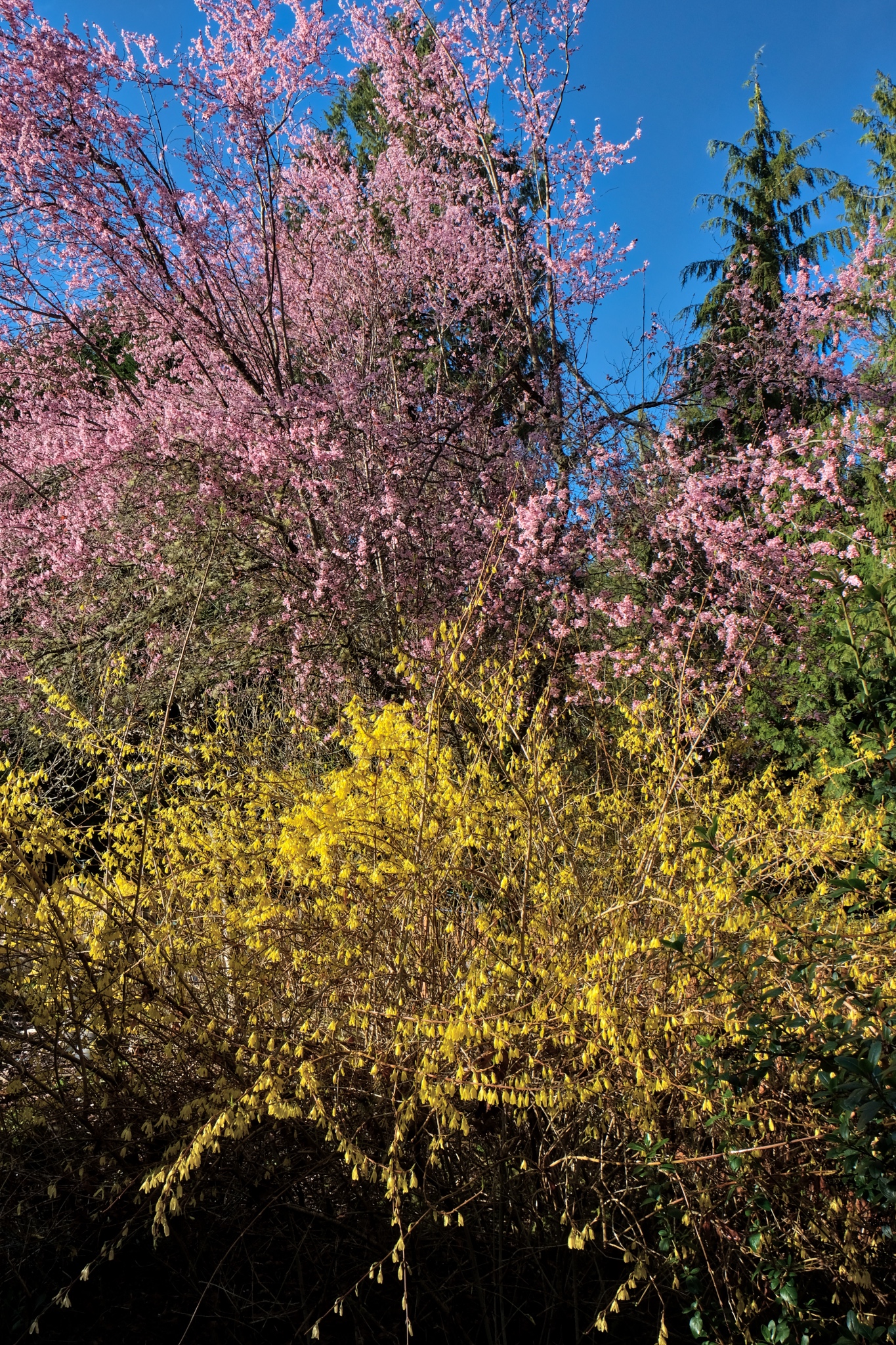 The bold blossoms of the Forsythia and Oriental Plum dominate the garden.
The bold blossoms of the Forsythia and Oriental Plum dominate the garden.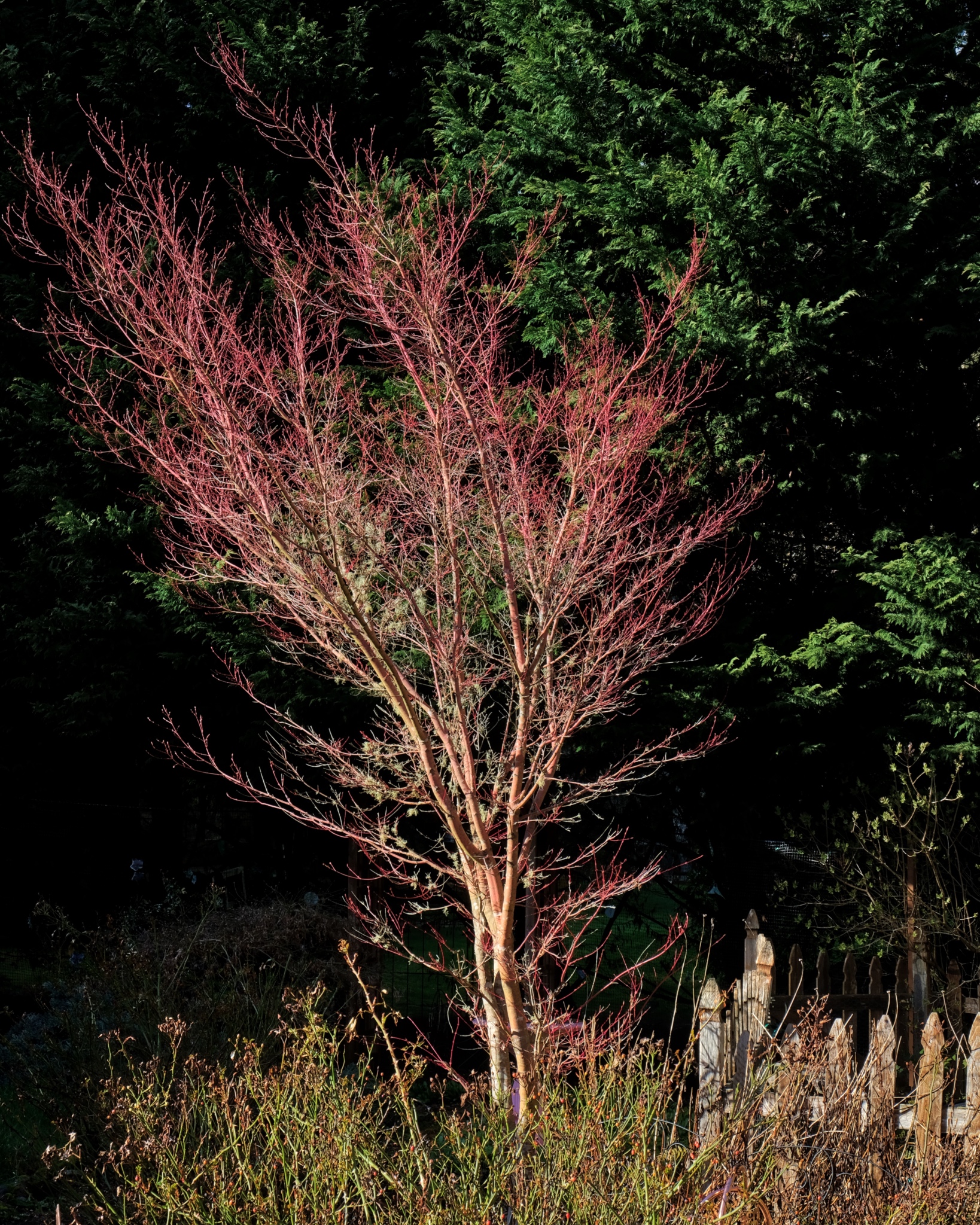 You can almost hear the trunks and branches stretch under the turgor rising from the roots.
You can almost hear the trunks and branches stretch under the turgor rising from the roots.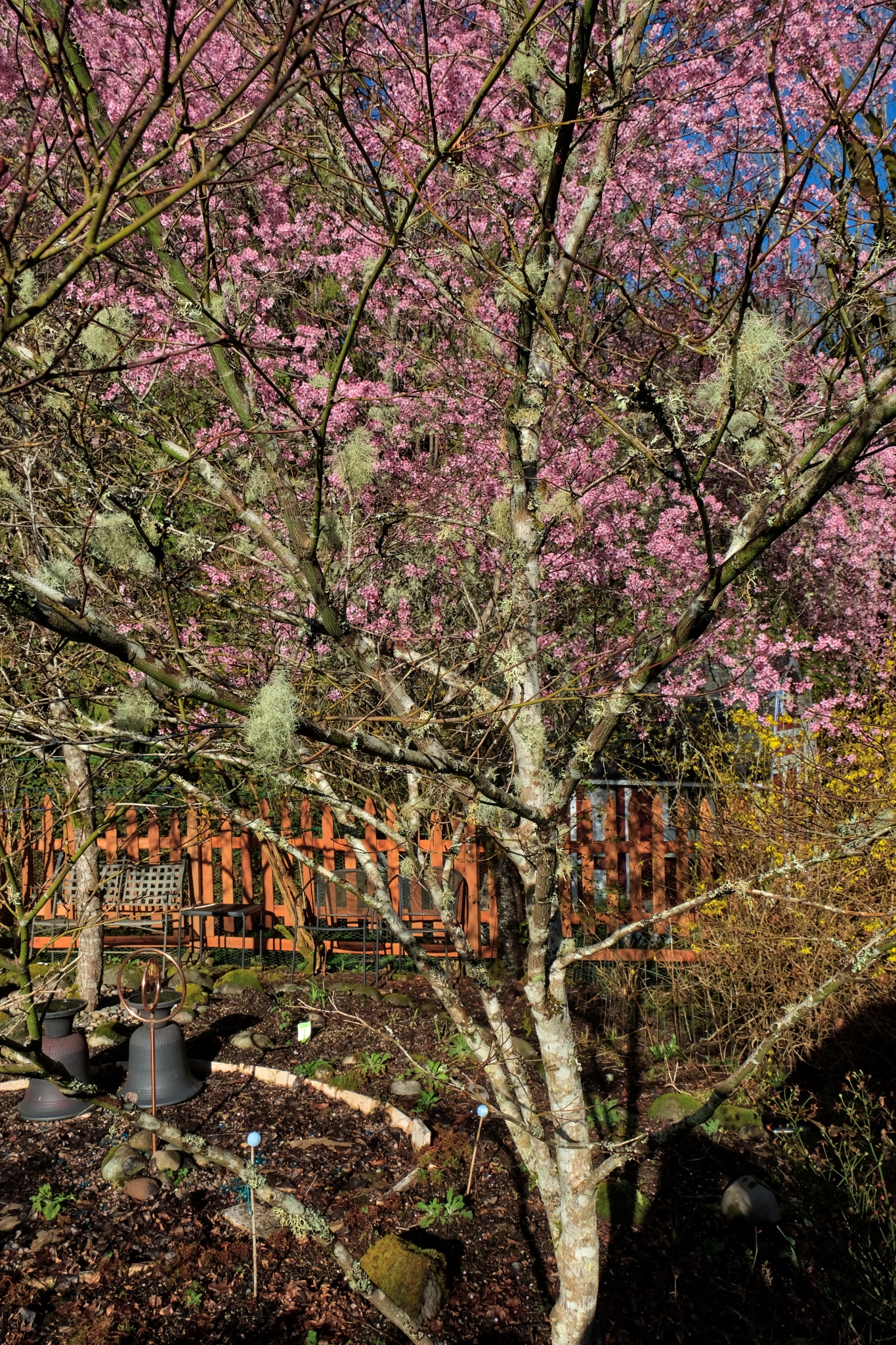 Promises of what is to come in the garden.
Promises of what is to come in the garden.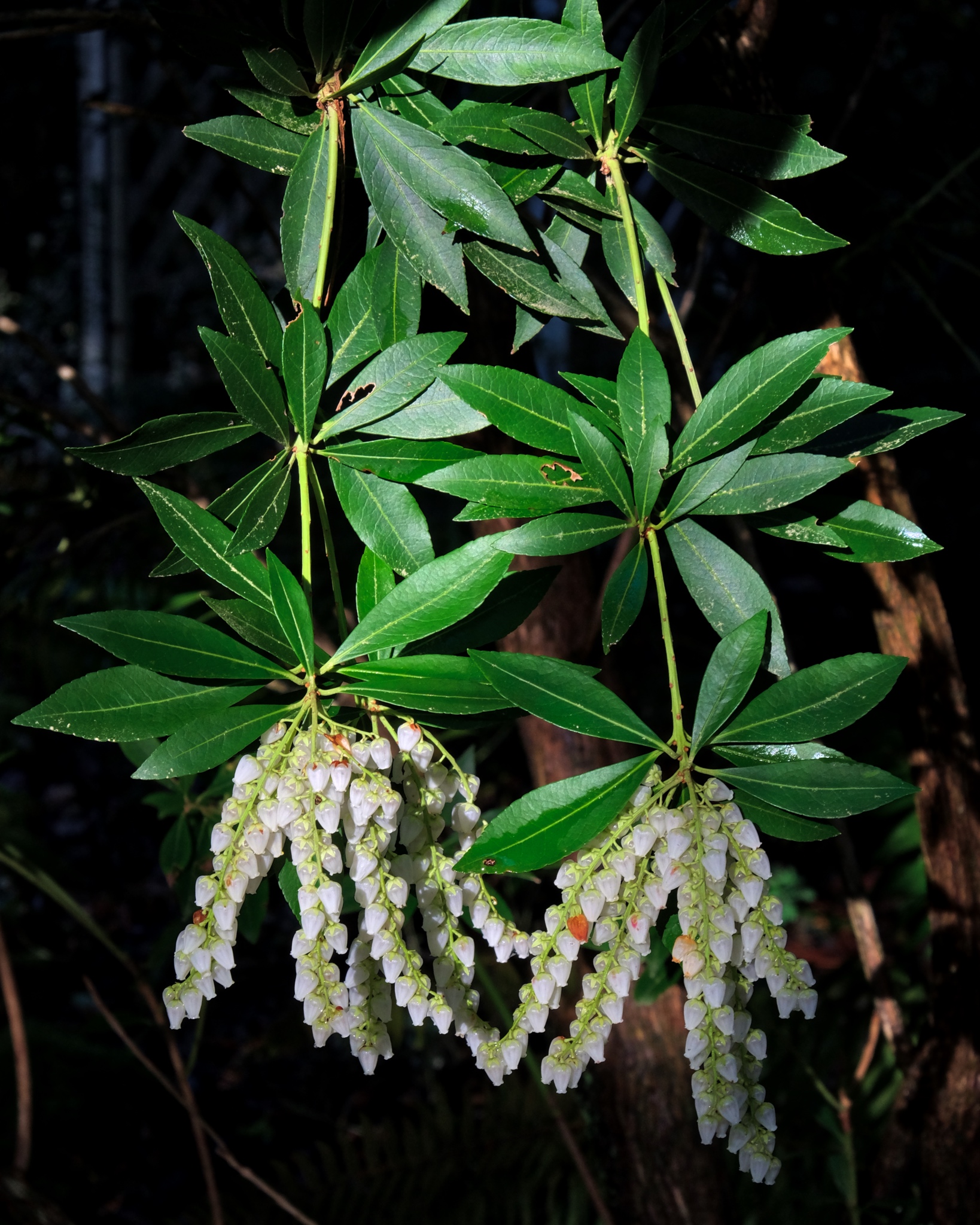 A few brave blossoms gambling against a late frost.
A few brave blossoms gambling against a late frost.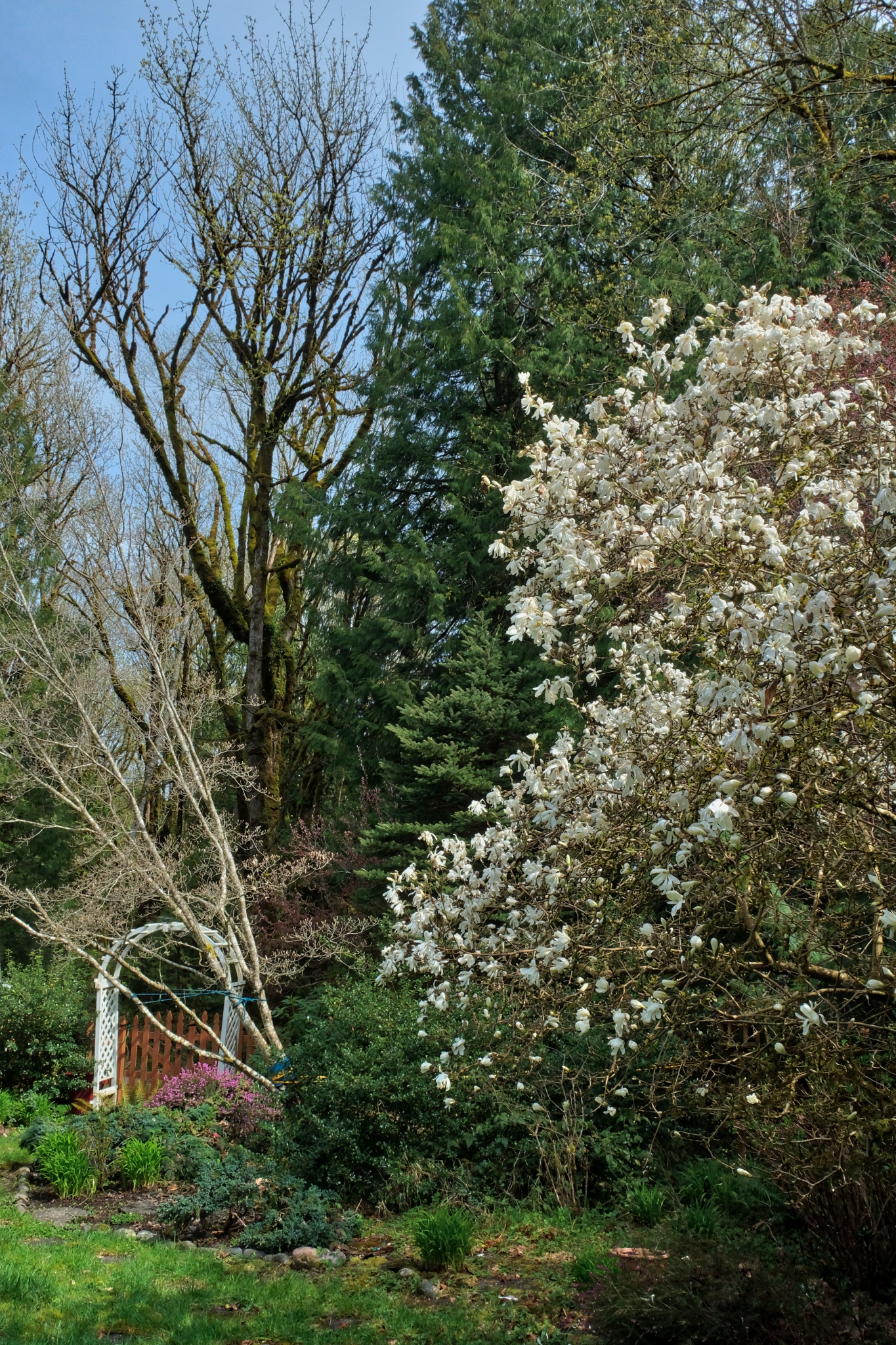 A sunny day one week later . . . and the whit Magnolia has burst out in a constellation of white flowers.
A sunny day one week later . . . and the whit Magnolia has burst out in a constellation of white flowers.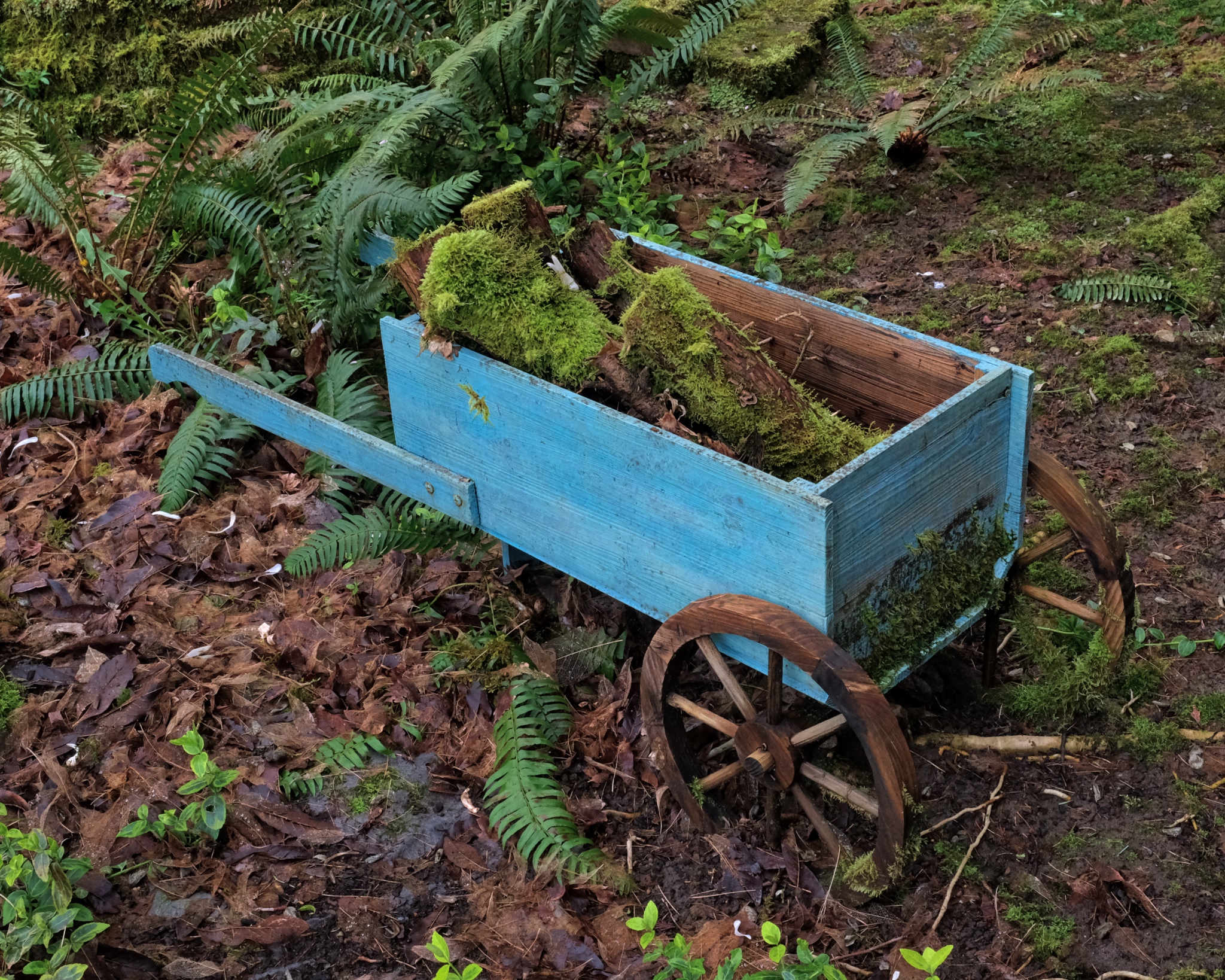 A sunny blue garden wheelbarrow . . .
A sunny blue garden wheelbarrow . . . 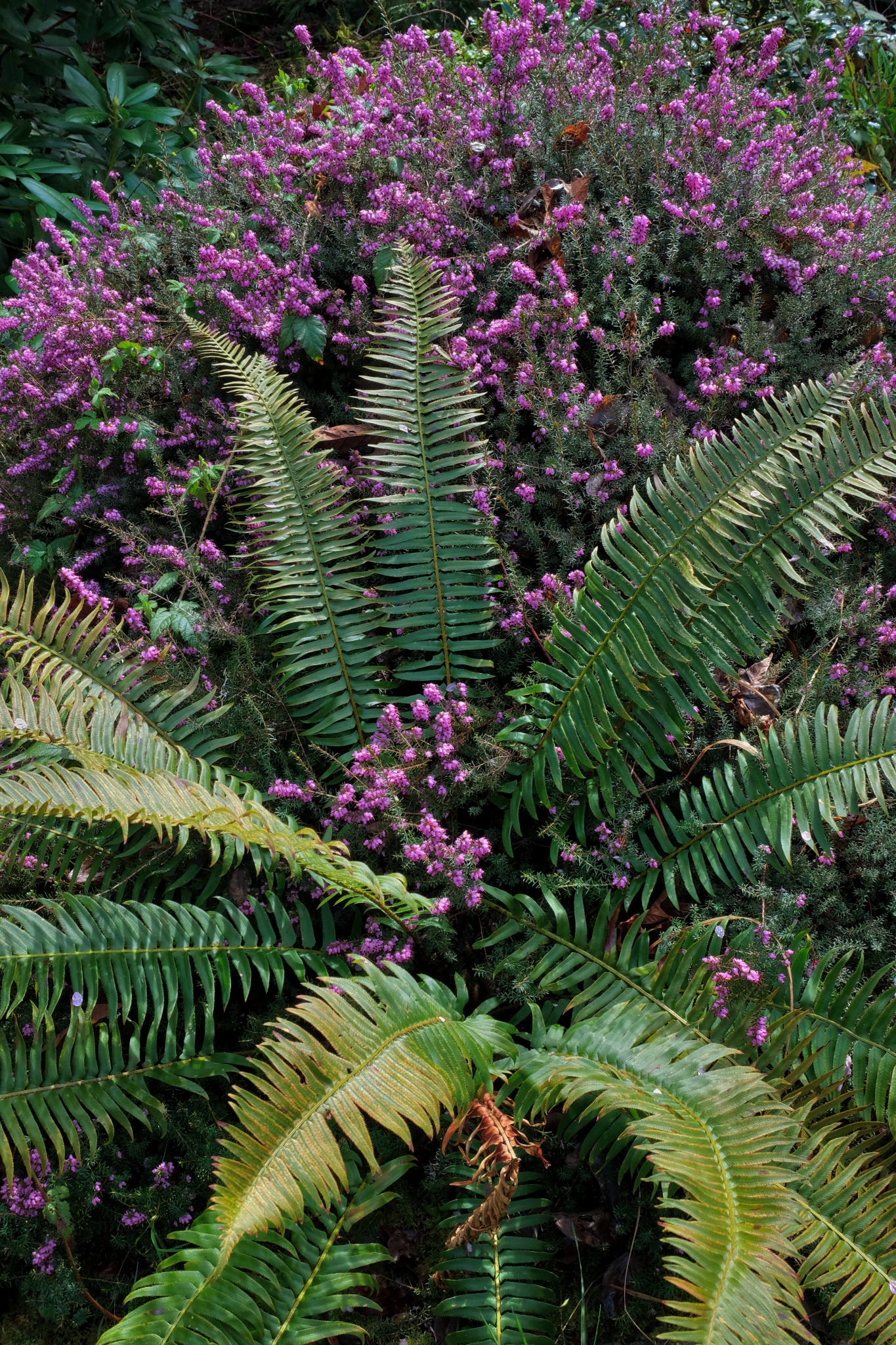 New flowering everywhere!
New flowering everywhere!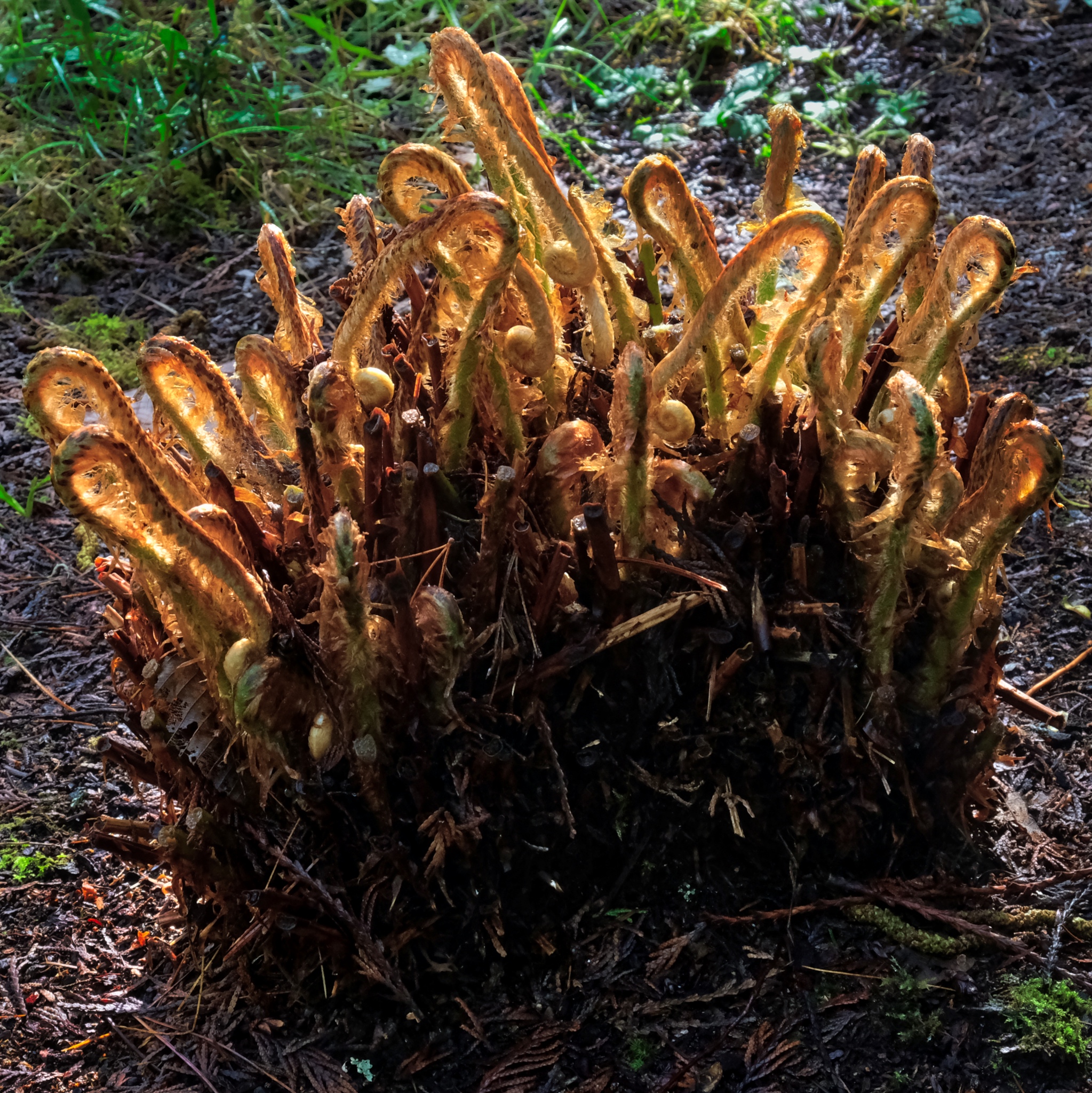 The ferns seem to be exploding out of the ground!
The ferns seem to be exploding out of the ground!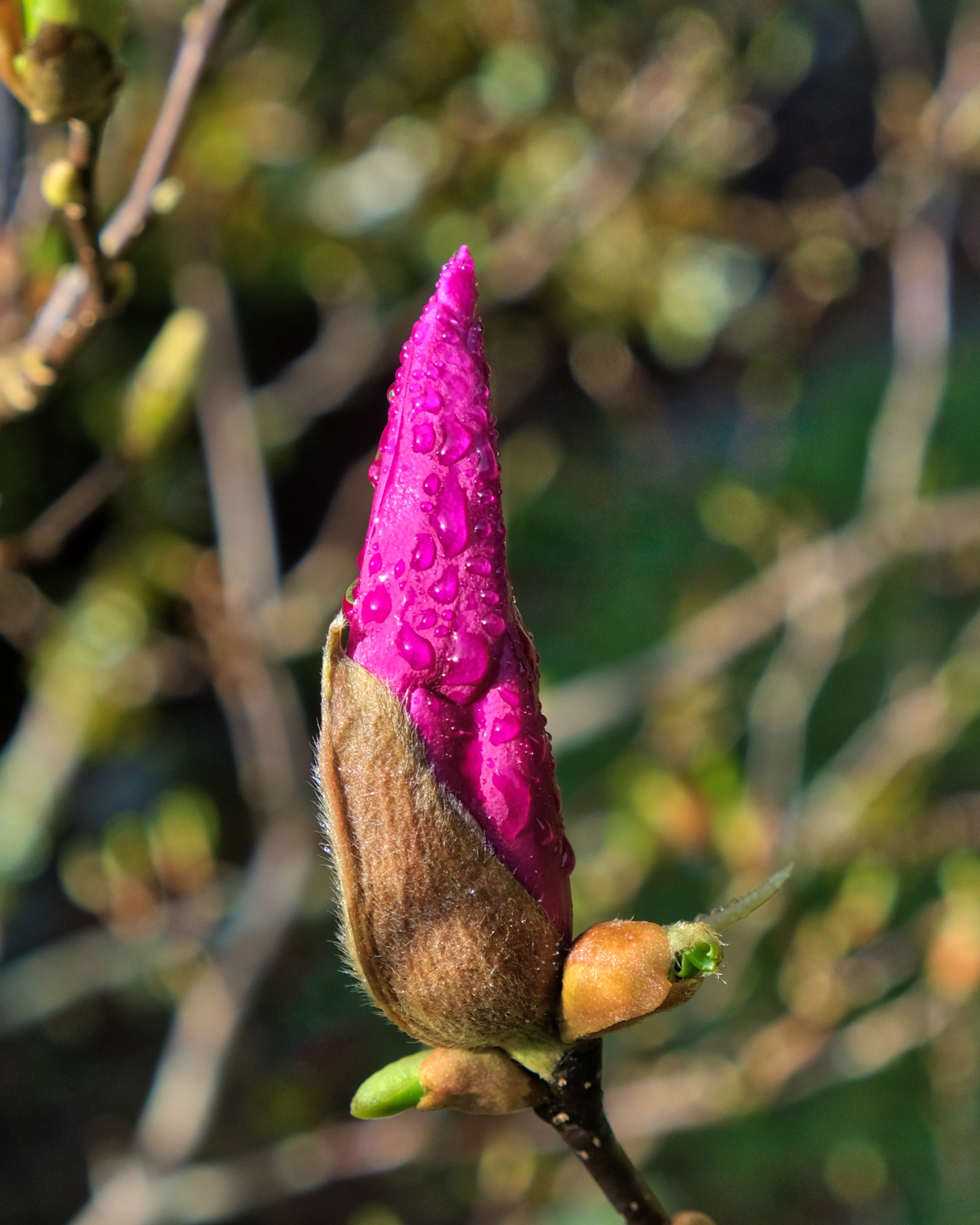 The purple Magnolia is beginning to show color in its buds.
The purple Magnolia is beginning to show color in its buds.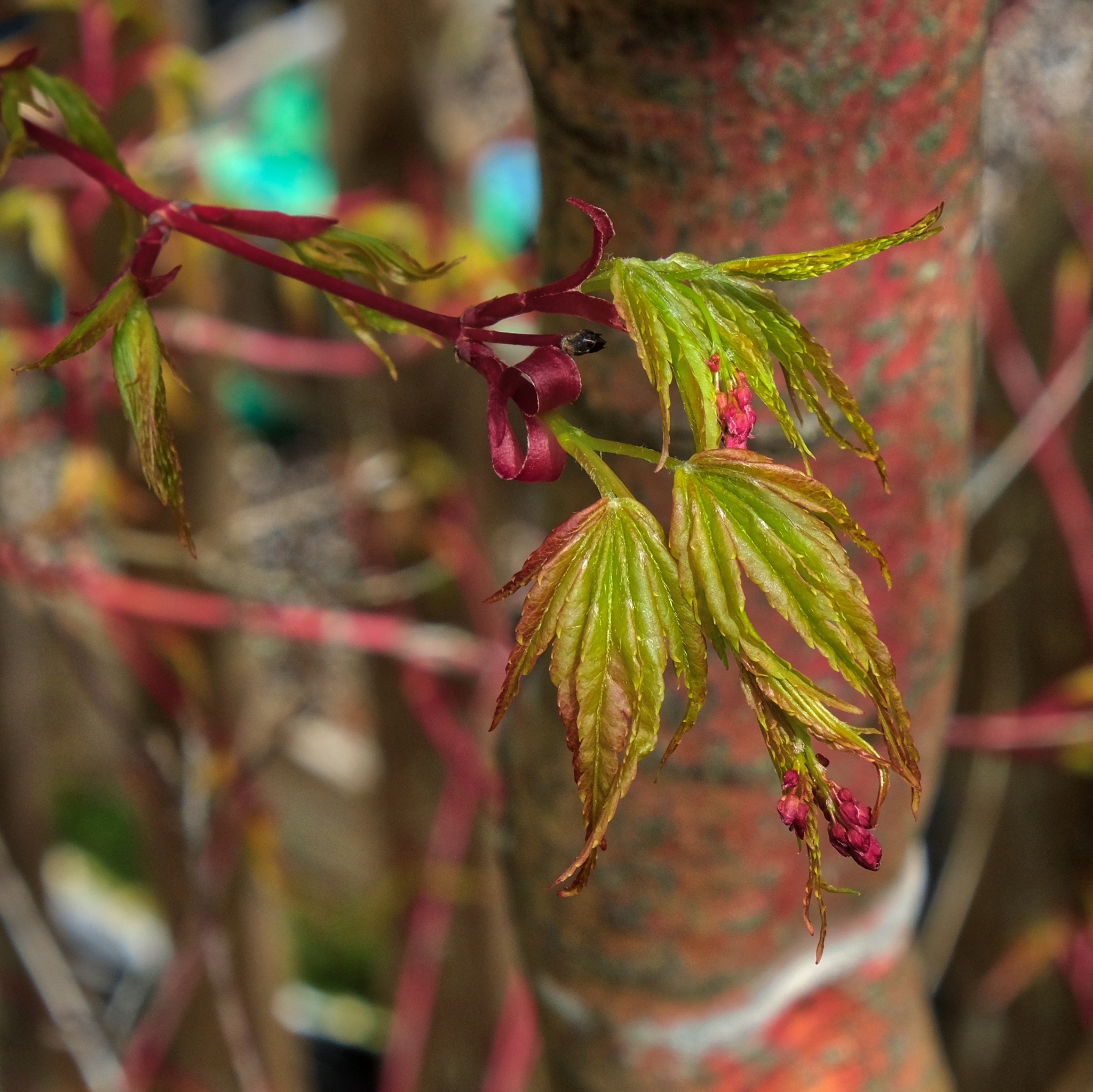 Leafing . . . right before your eyes.
Leafing . . . right before your eyes.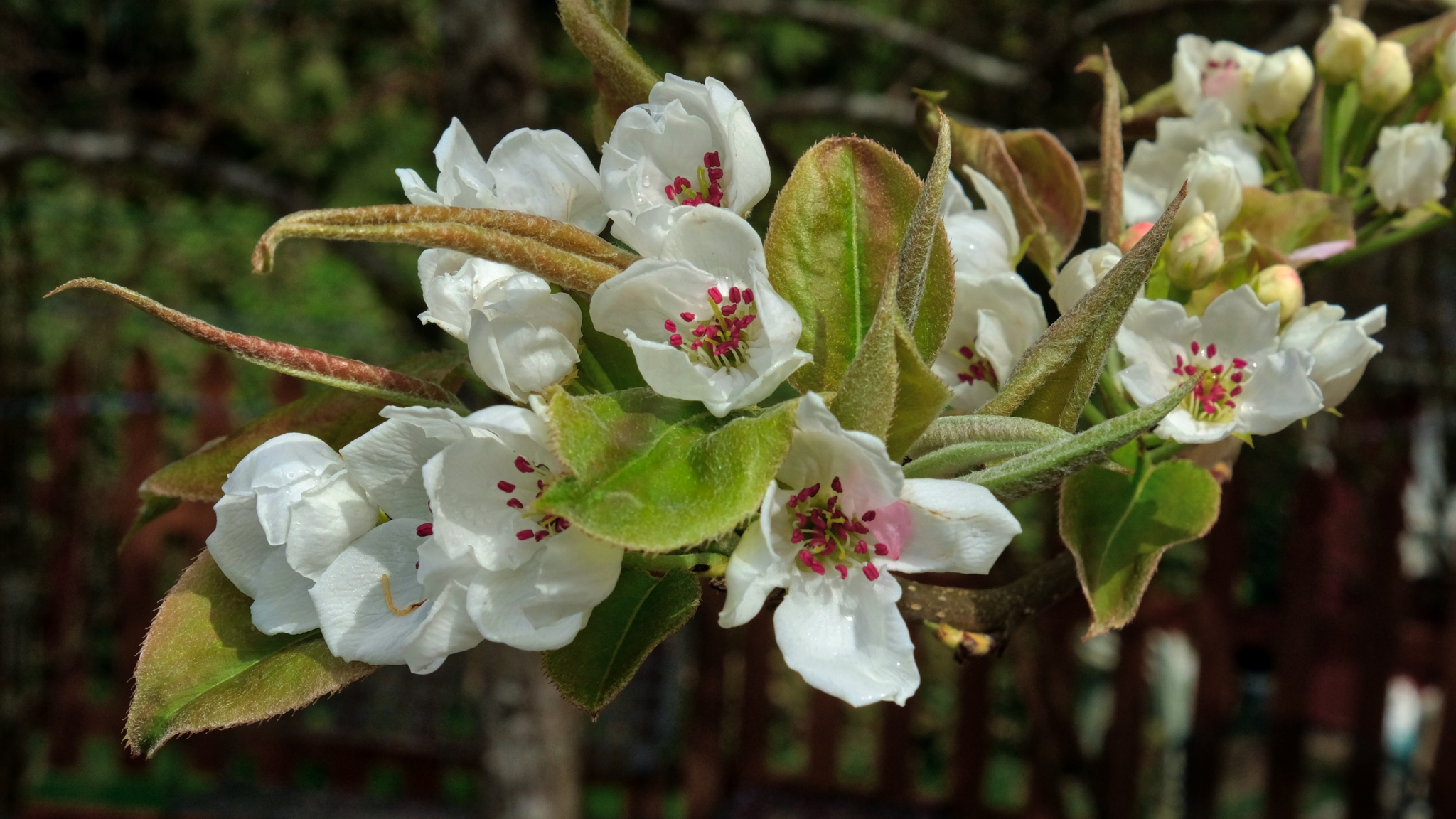 The Japanese Pear blossoms seemed to appear overnight!
The Japanese Pear blossoms seemed to appear overnight!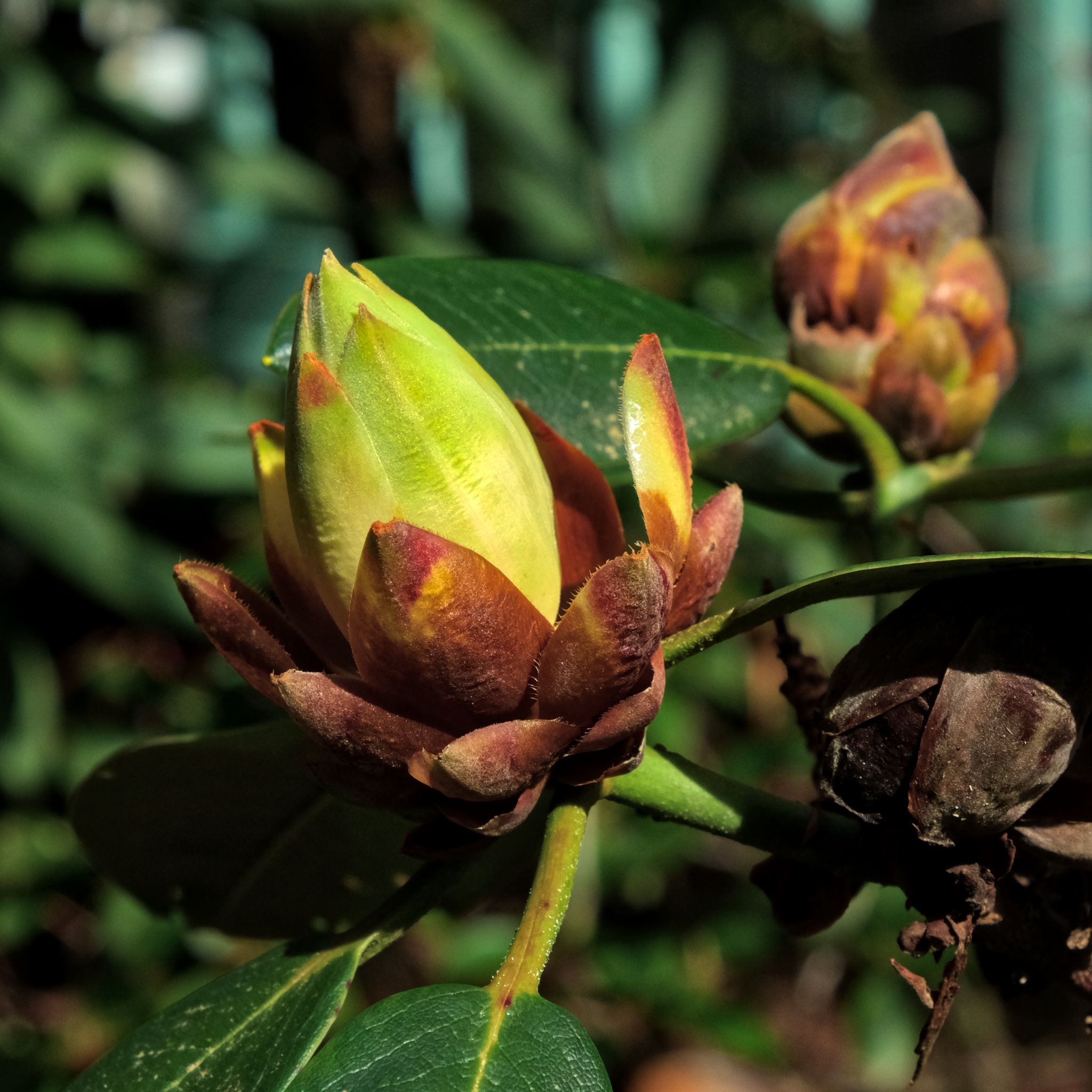 The rhododendron buds continue to swell . . .
The rhododendron buds continue to swell . . .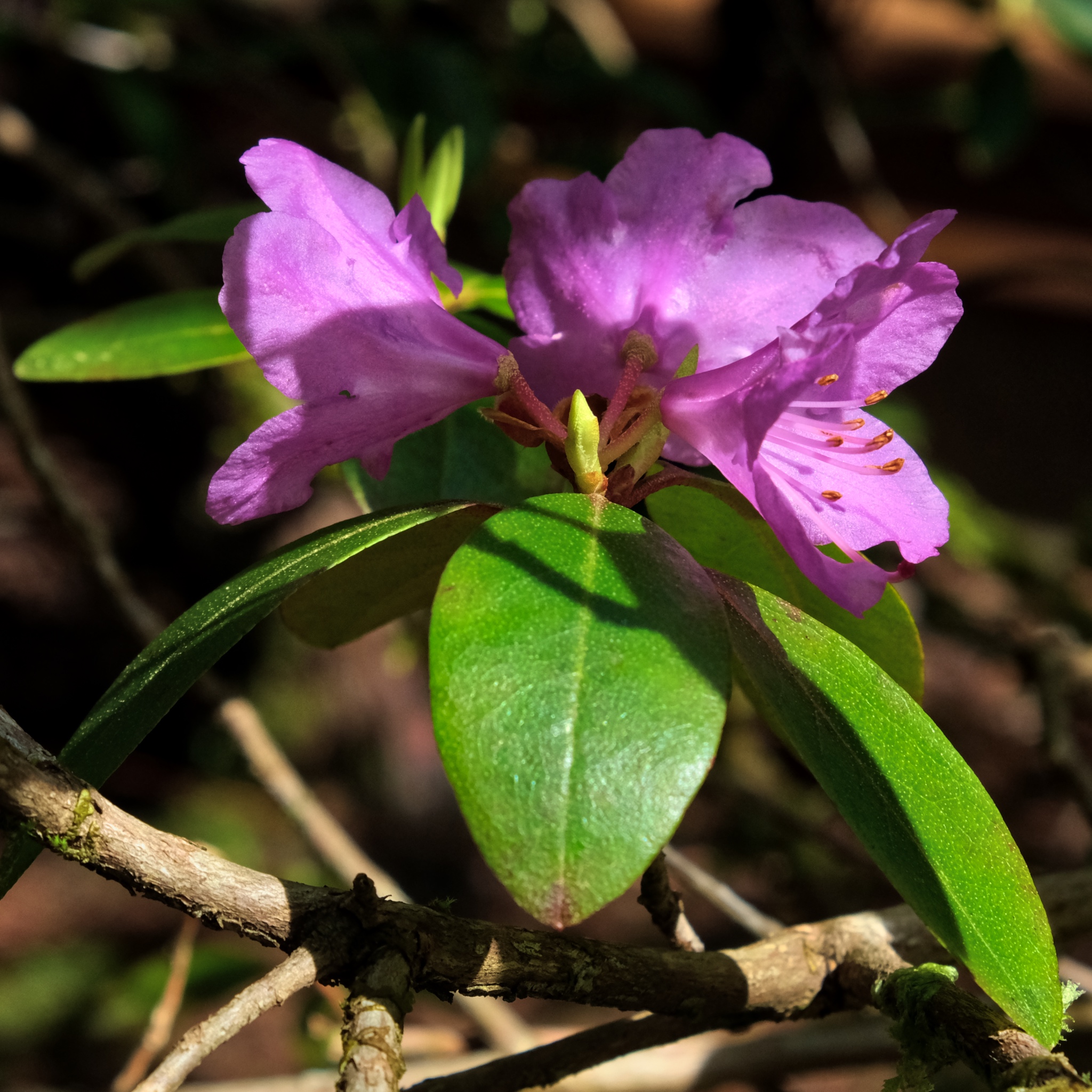 Down under the rhododendrons, a small violet flower blooms.
Down under the rhododendrons, a small violet flower blooms.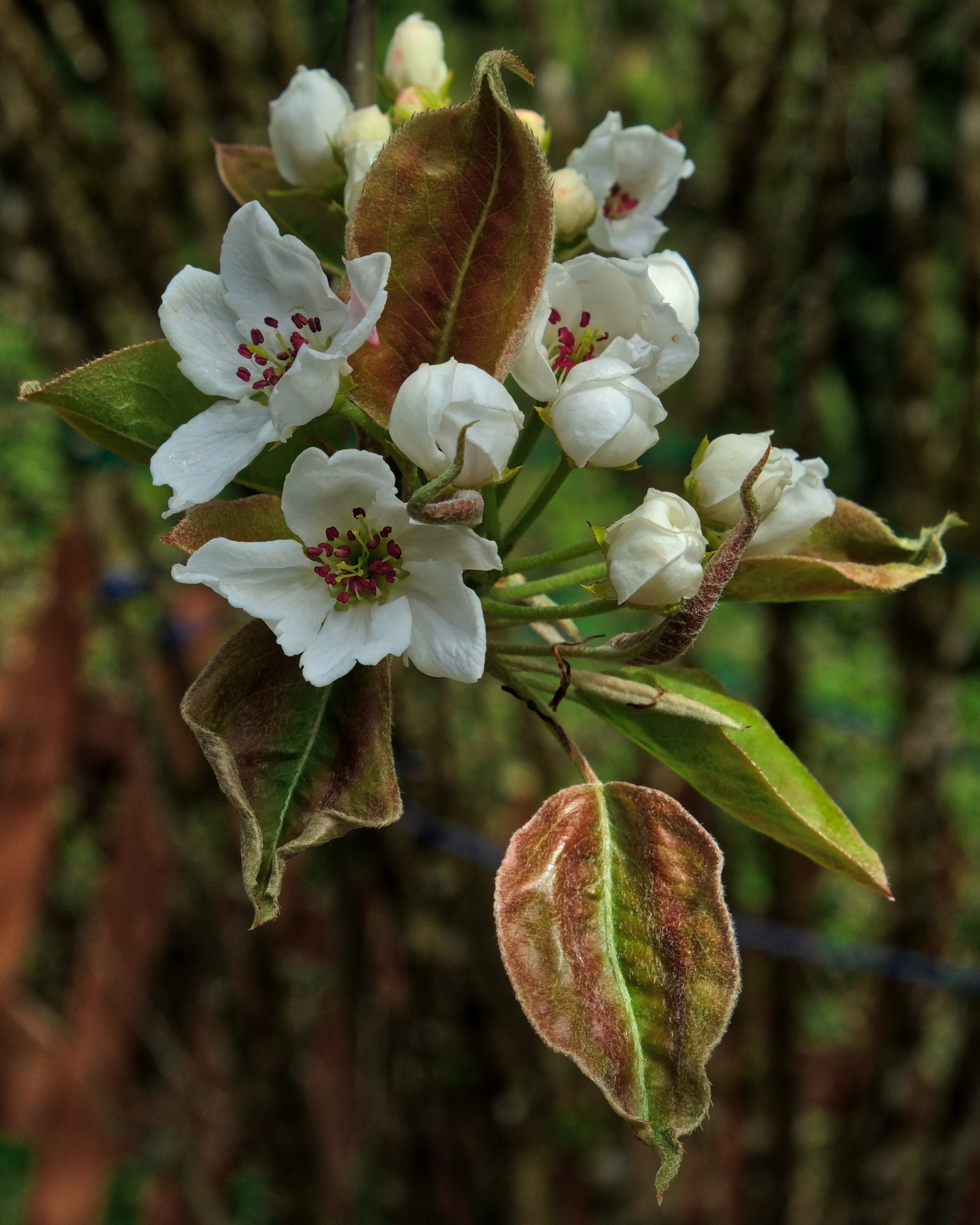 Like an arrangement from a florist . . .
Like an arrangement from a florist . . .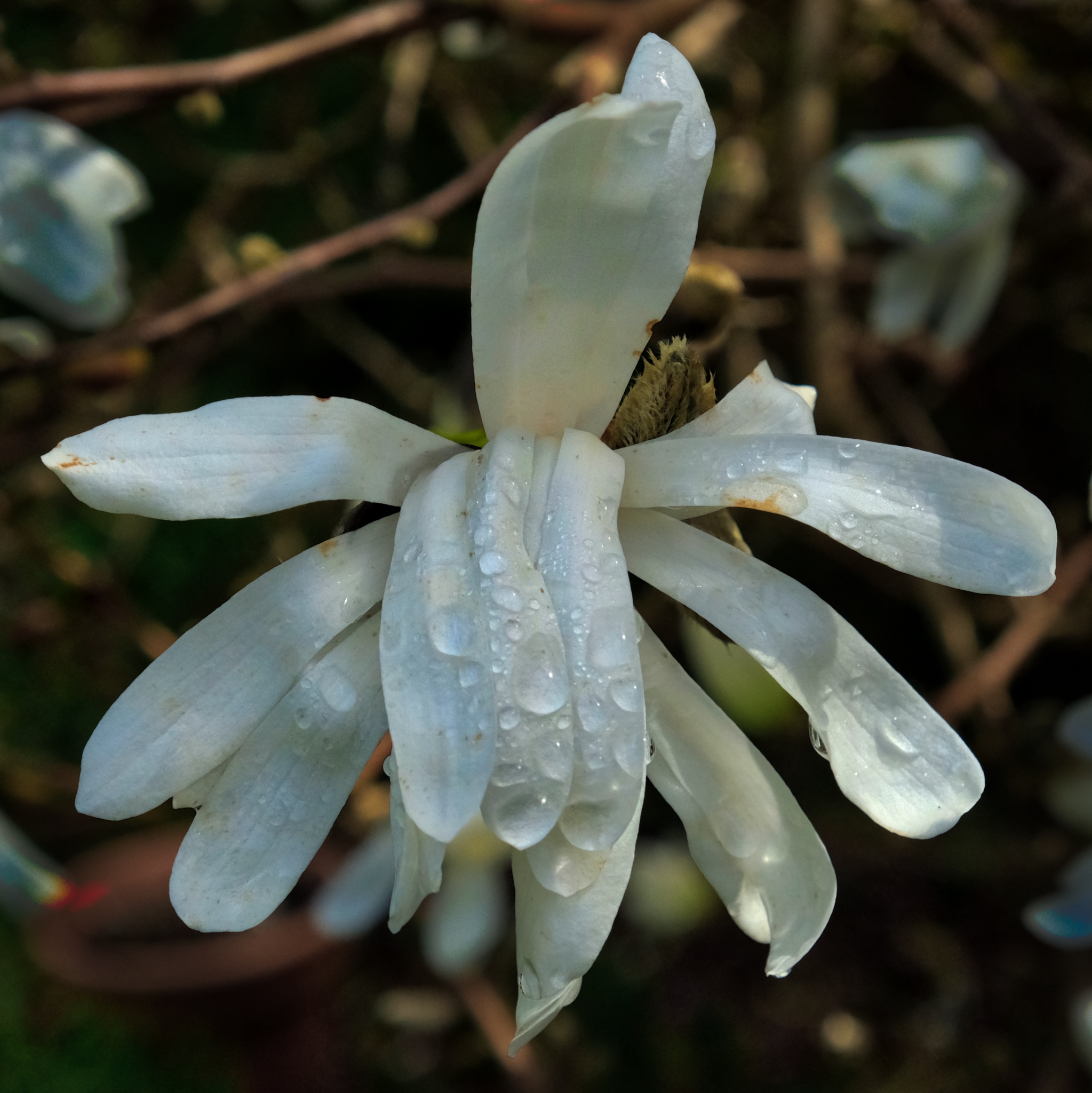 White Magnolia.
White Magnolia.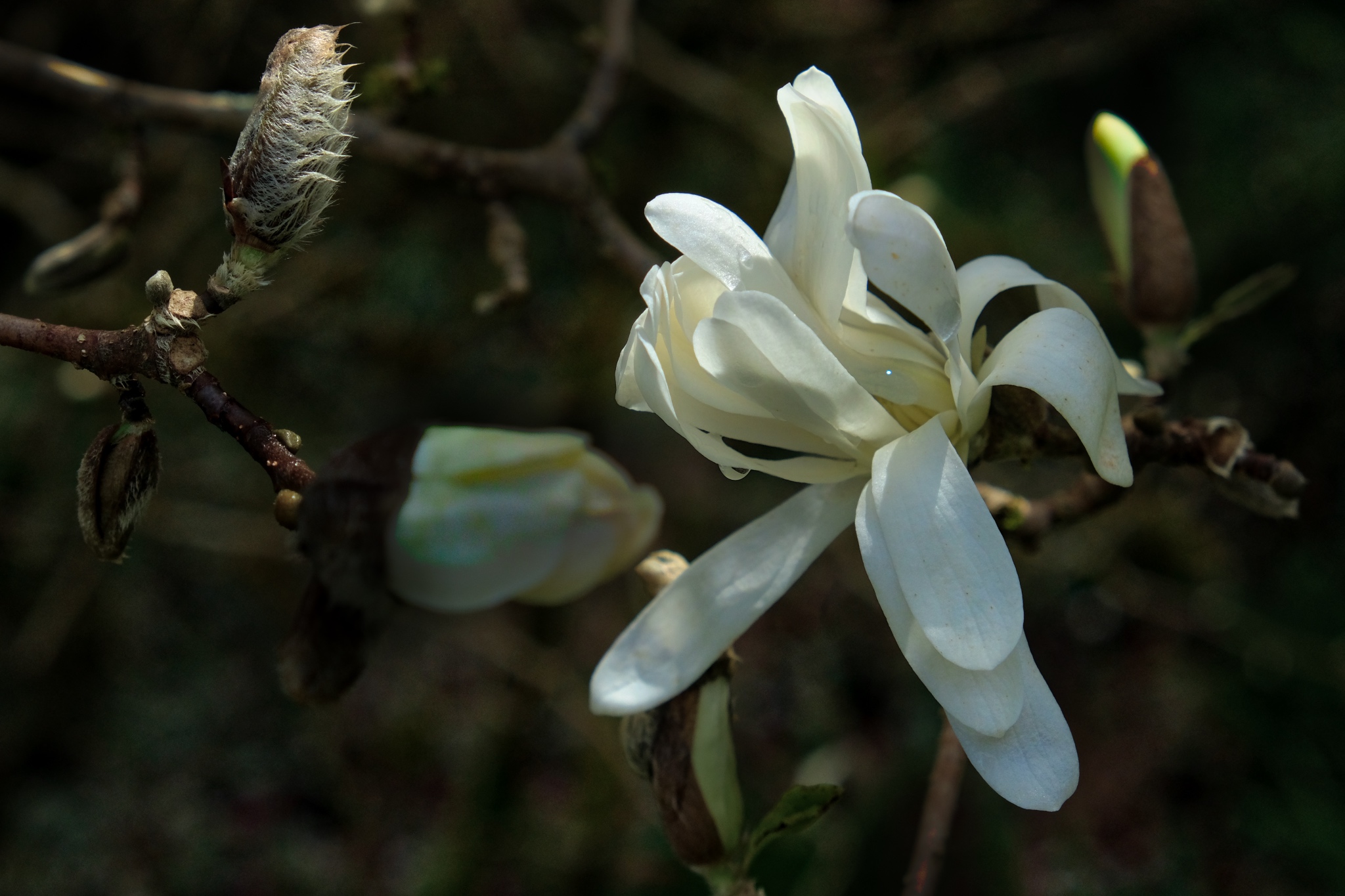 Delicate beauty.
Delicate beauty.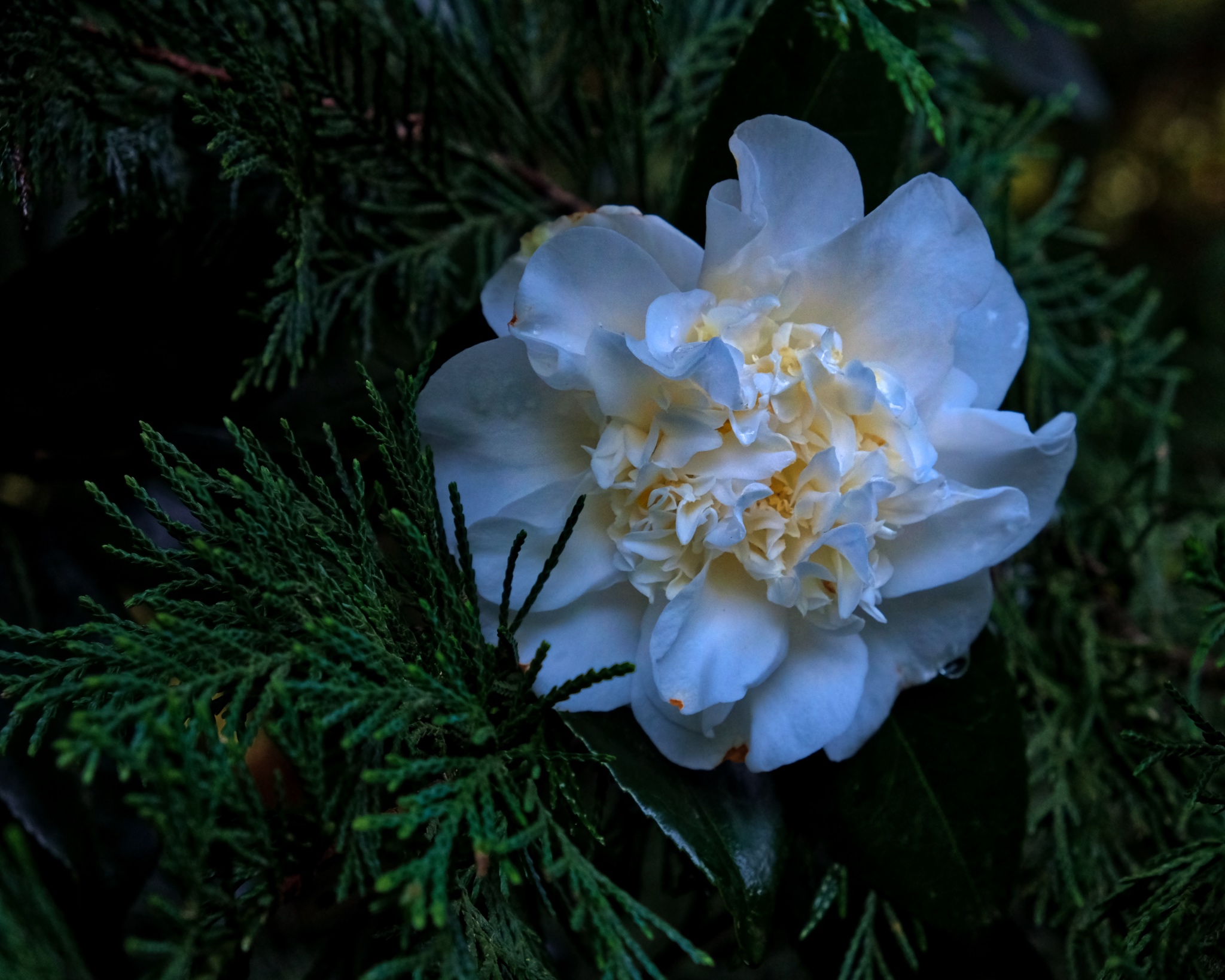 Hidden in the dark shadows at the edge of the garden . . .
Hidden in the dark shadows at the edge of the garden . . .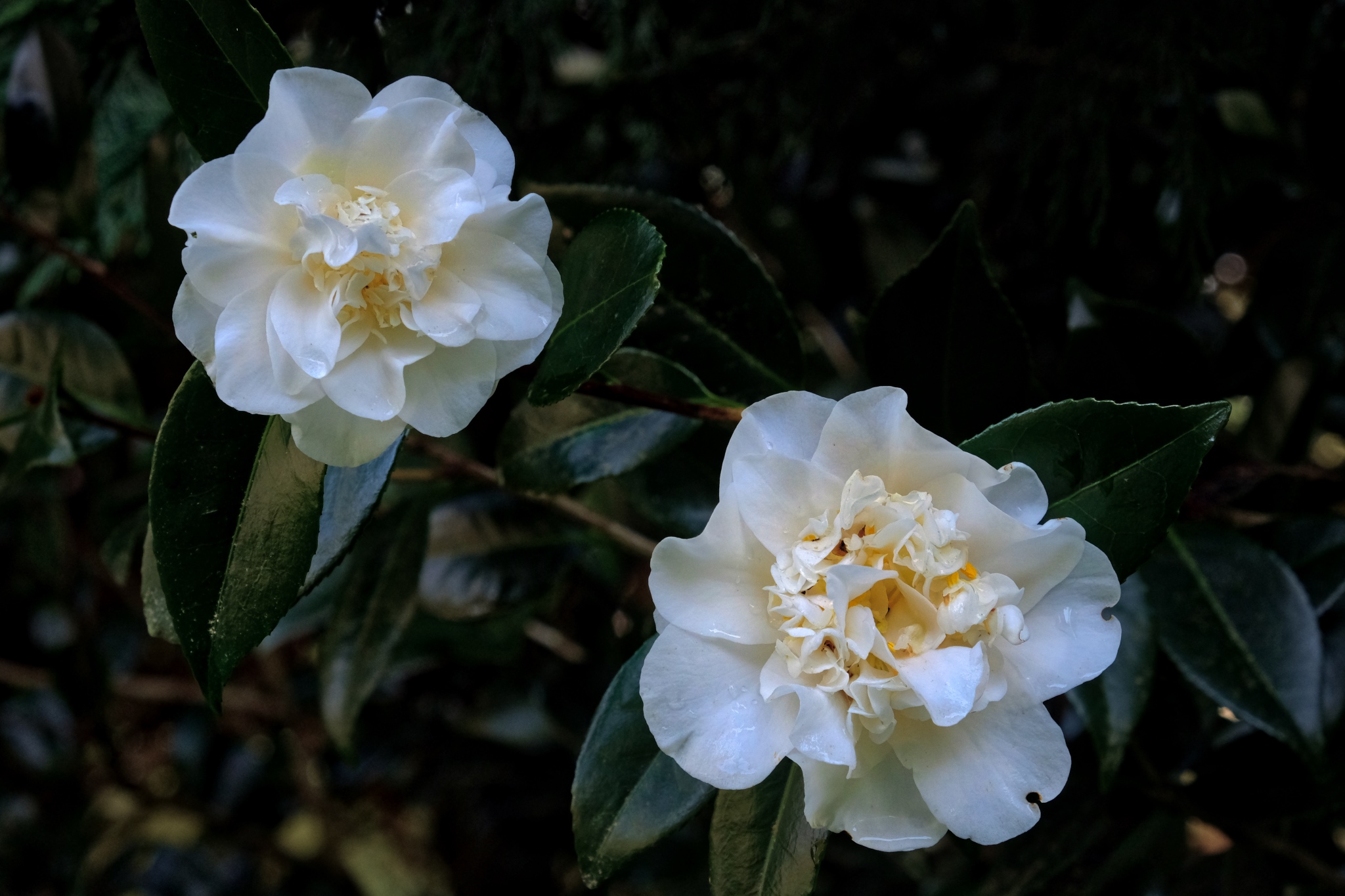 These gave off a wonderful aroma.
These gave off a wonderful aroma.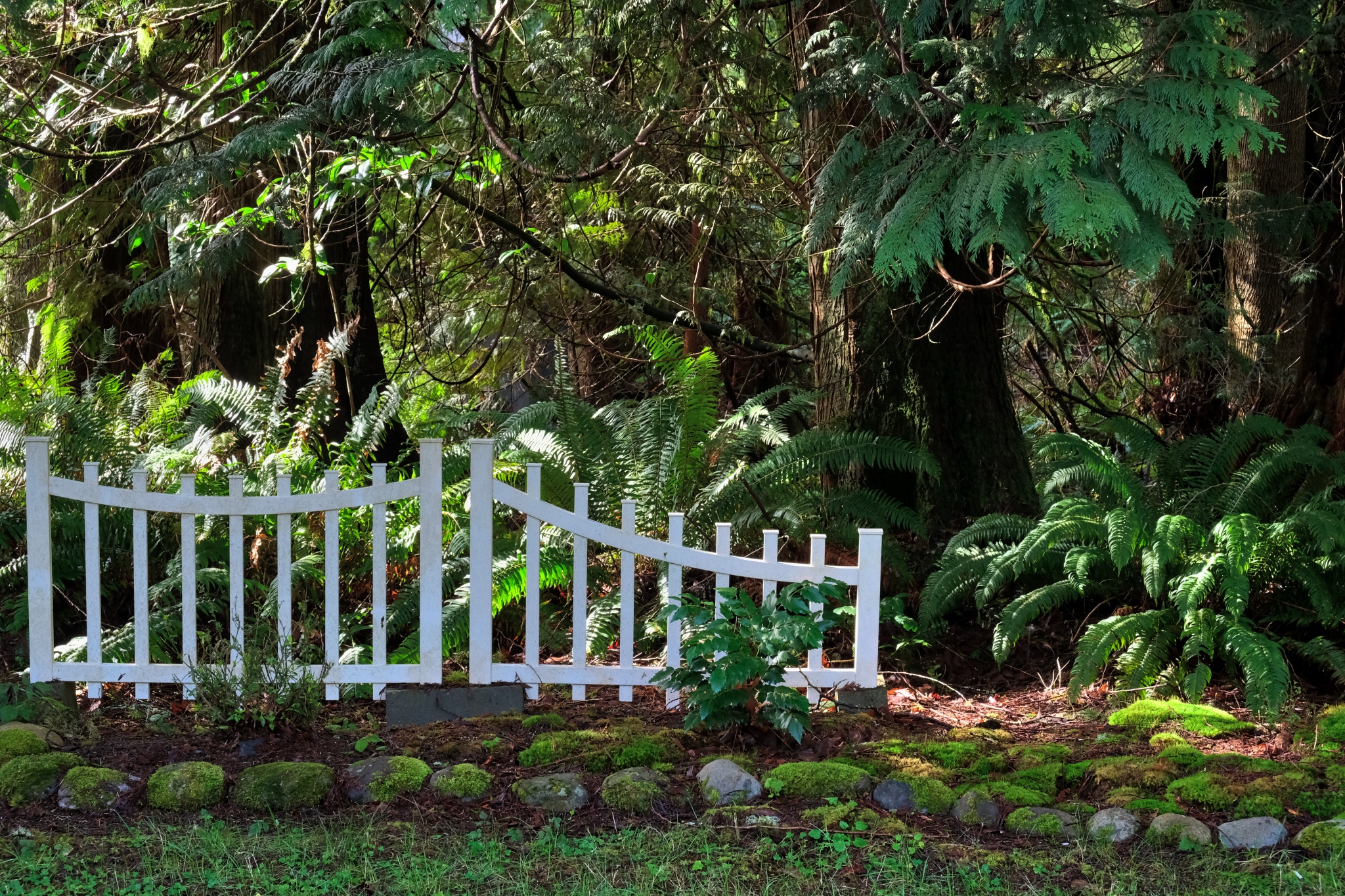 A (rare) wonderful sunny day in the great Northwest.
A (rare) wonderful sunny day in the great Northwest.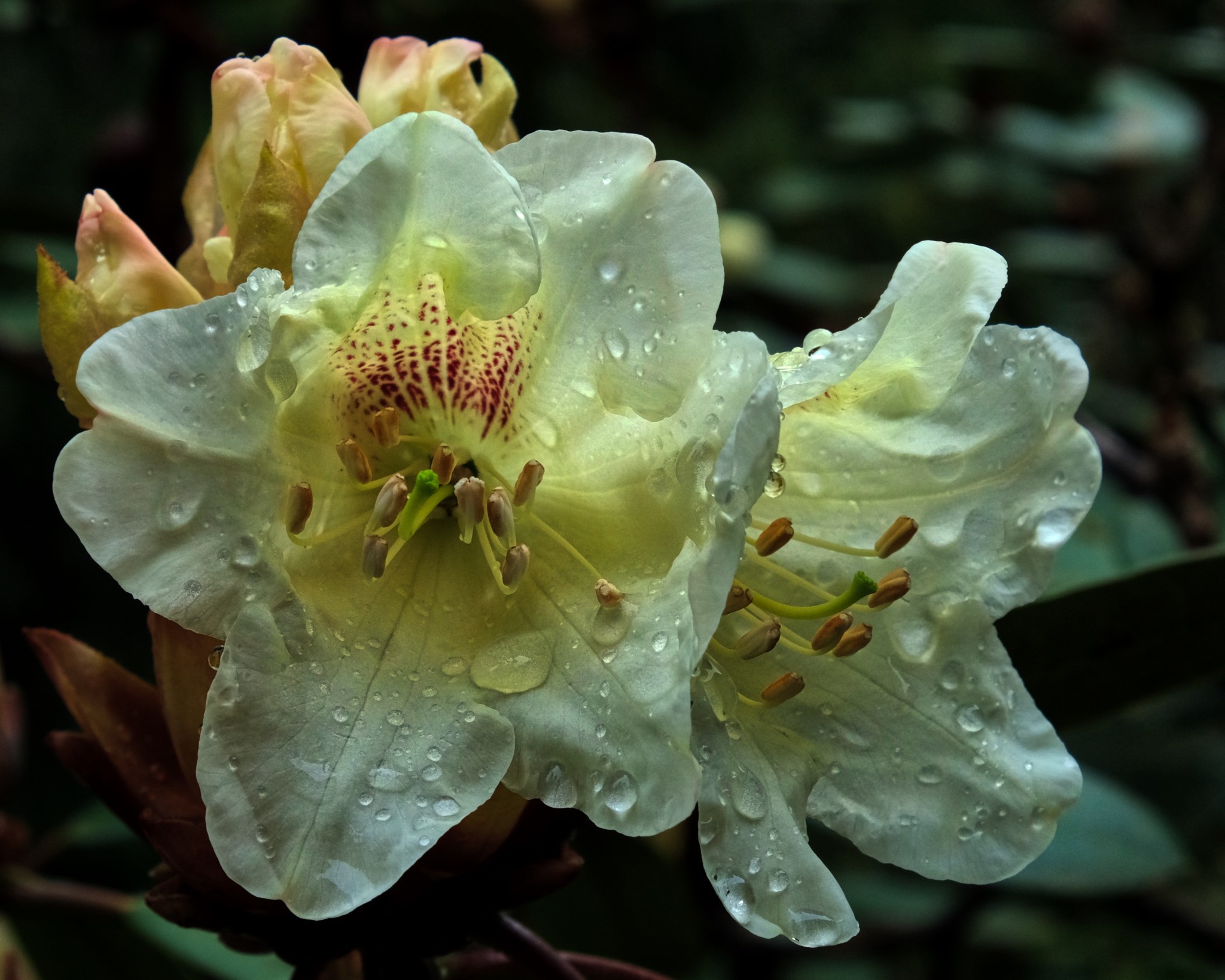
Weeks later . . . more wet and dark days . . . the famous Washington State rain has been relentless, but that has not stopped the powerful urge of Nature to break free.
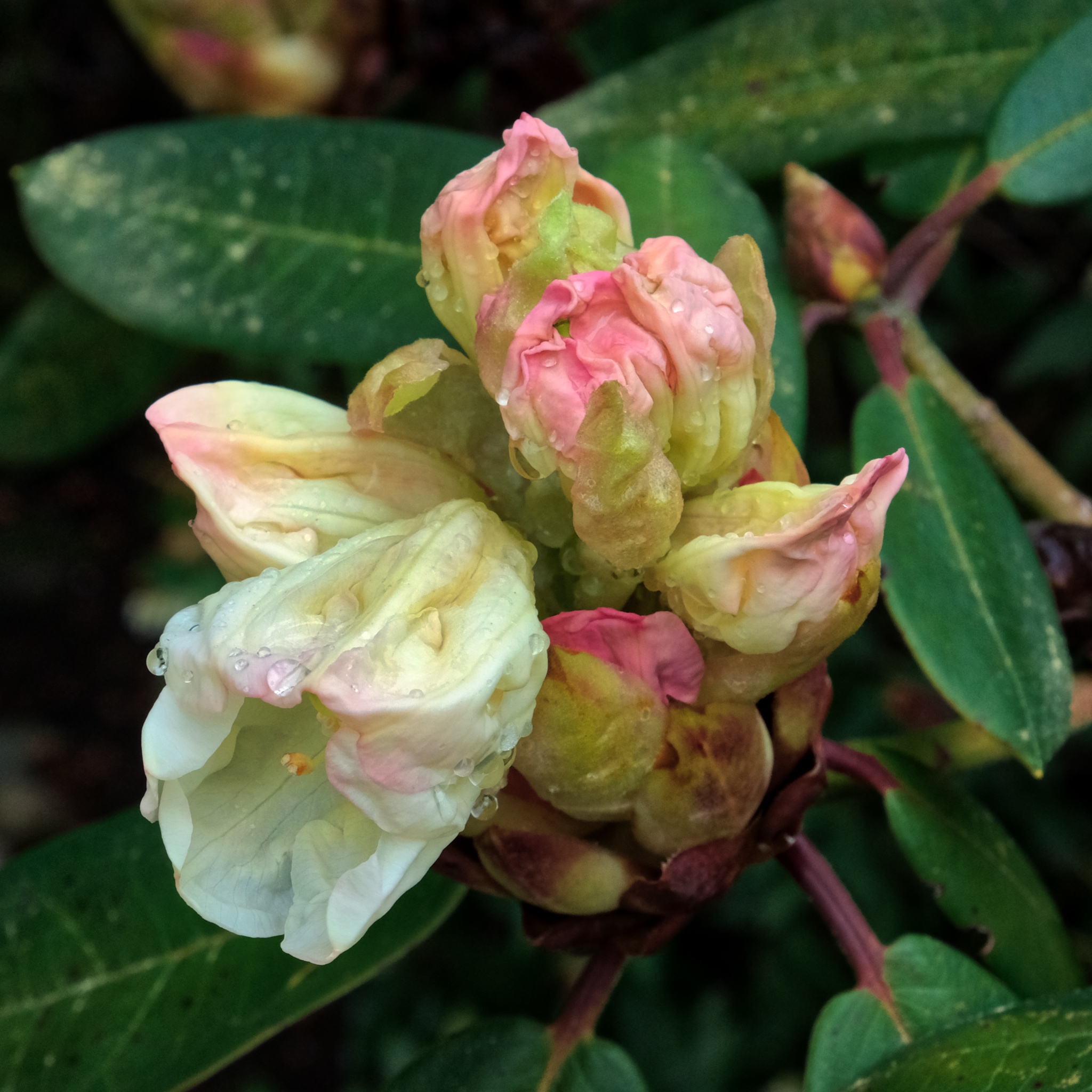 The Rhododendron are just now beginning to emerge from the tight buds.
The Rhododendron are just now beginning to emerge from the tight buds.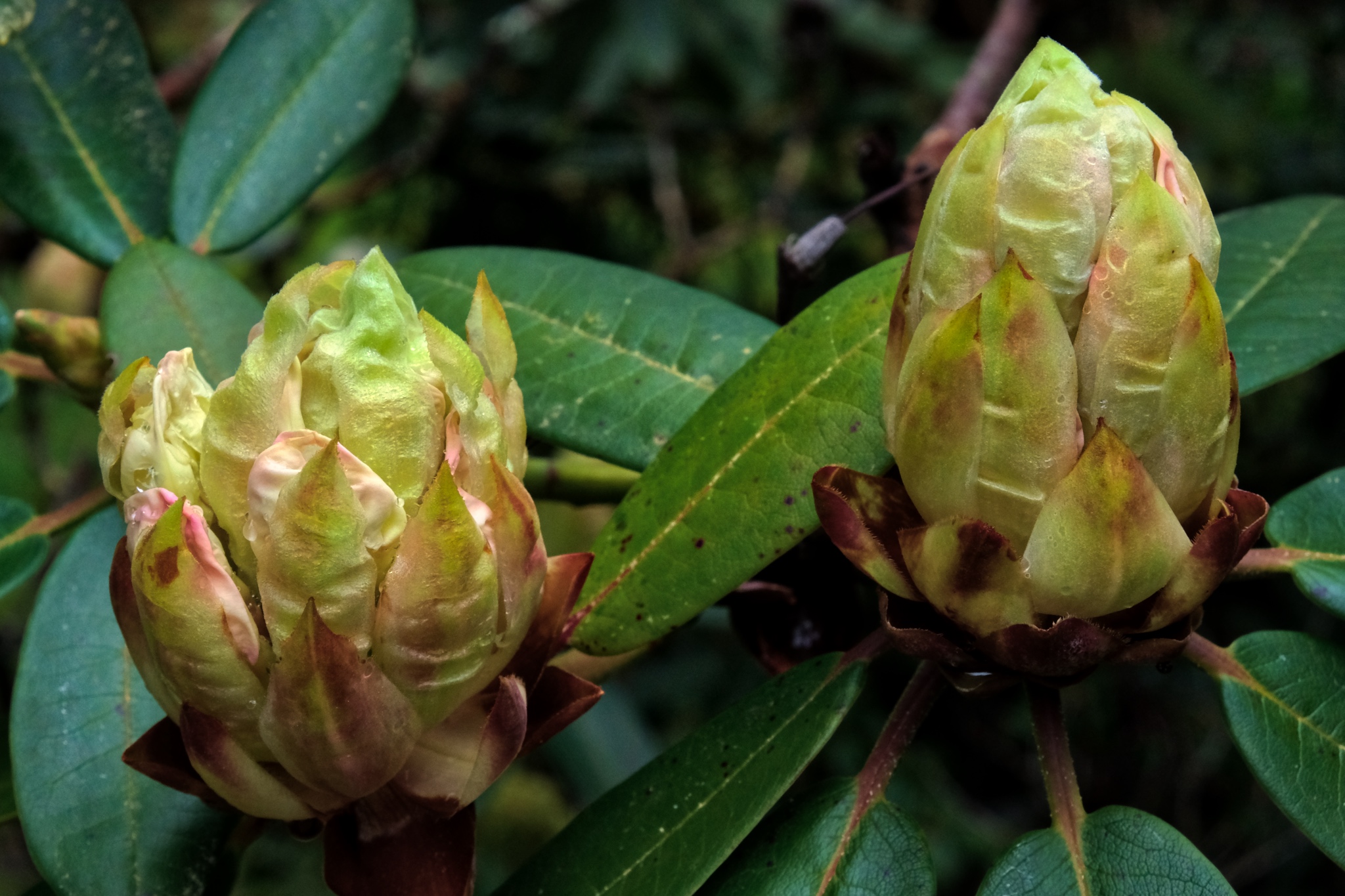 New buds . . . fraught with beauty.
New buds . . . fraught with beauty.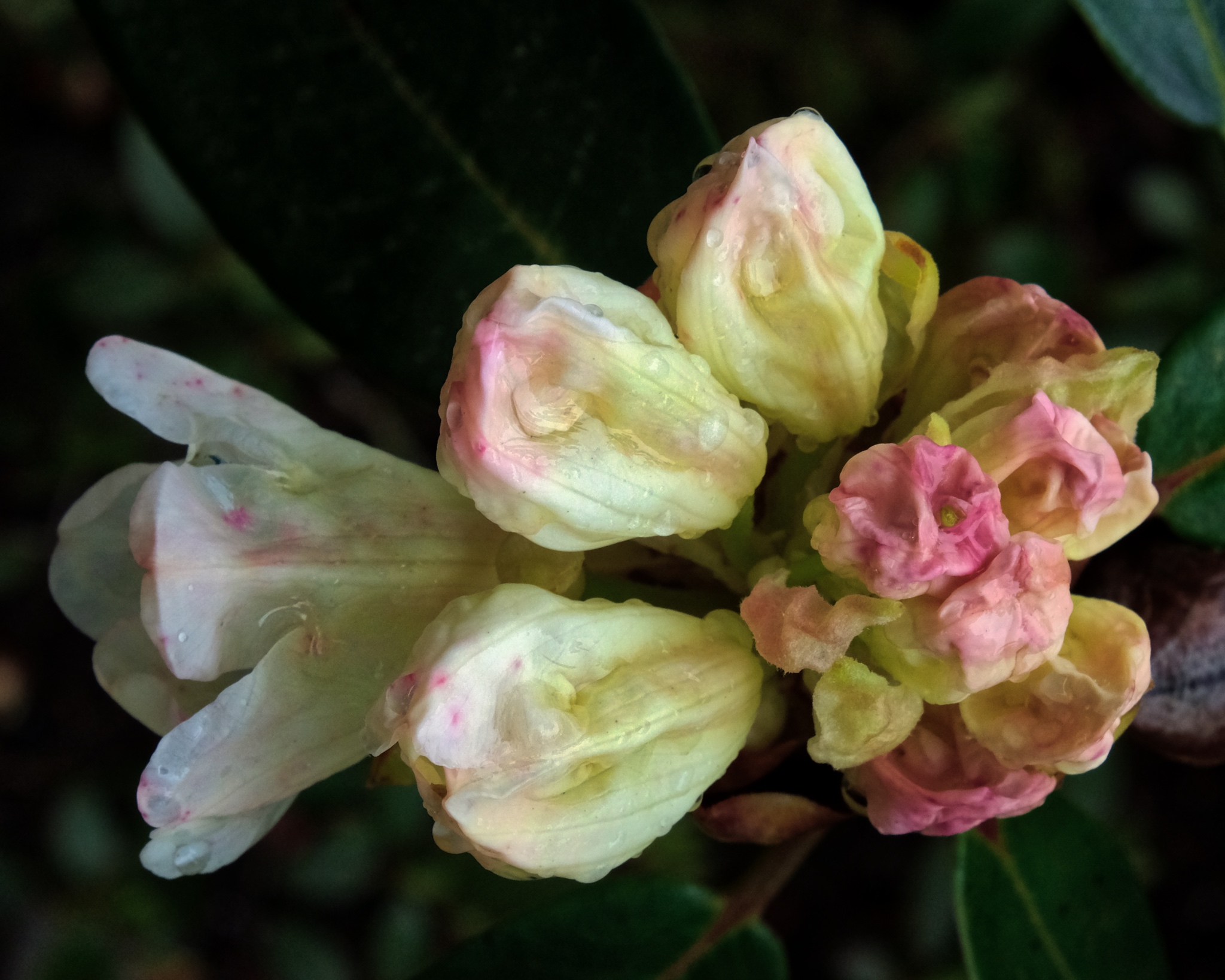 Warped and twisted as they unfurl their beauty . . .
Warped and twisted as they unfurl their beauty . . .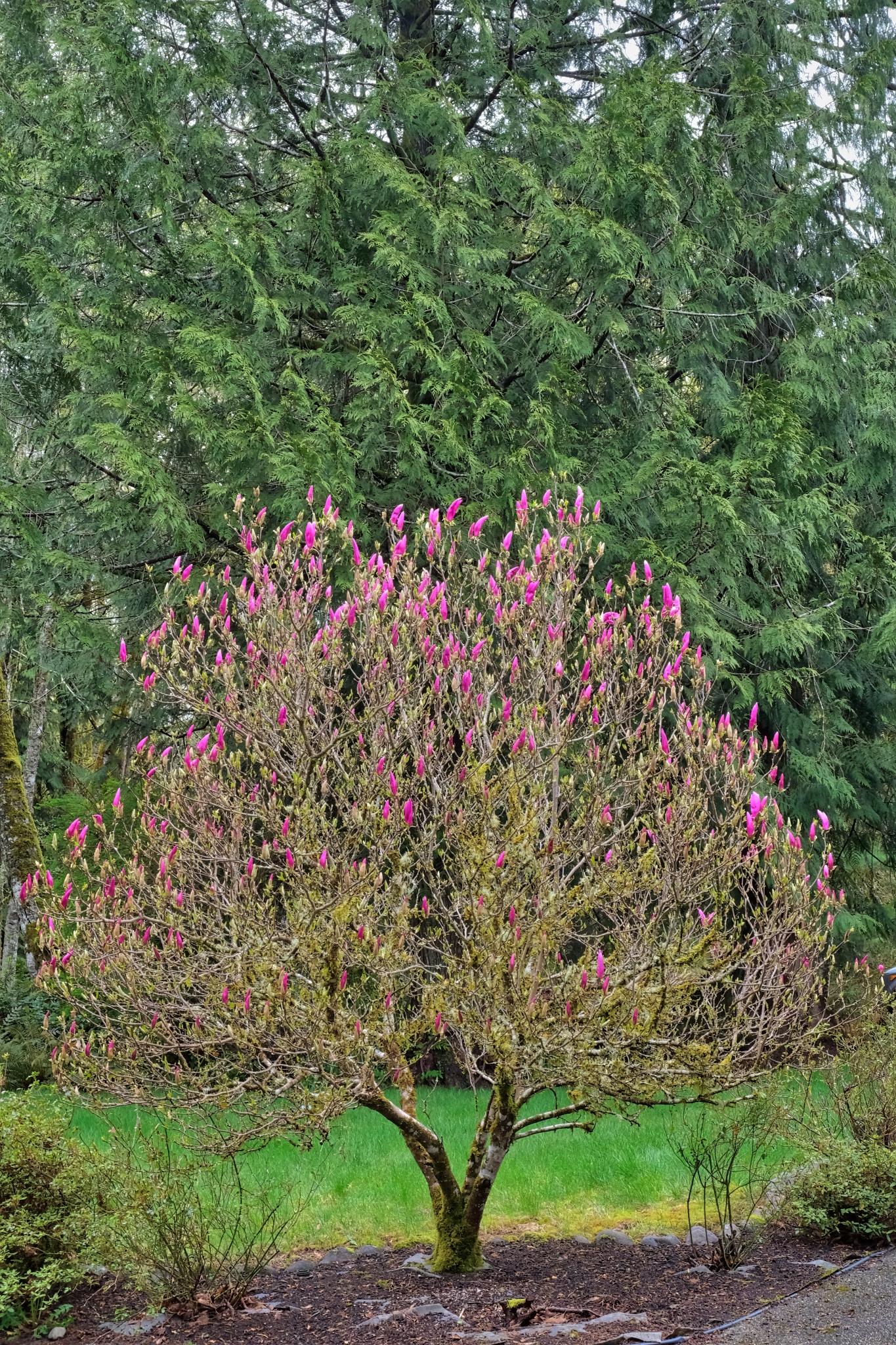 The magnolia in the front yard is beginning to show purple.
The magnolia in the front yard is beginning to show purple.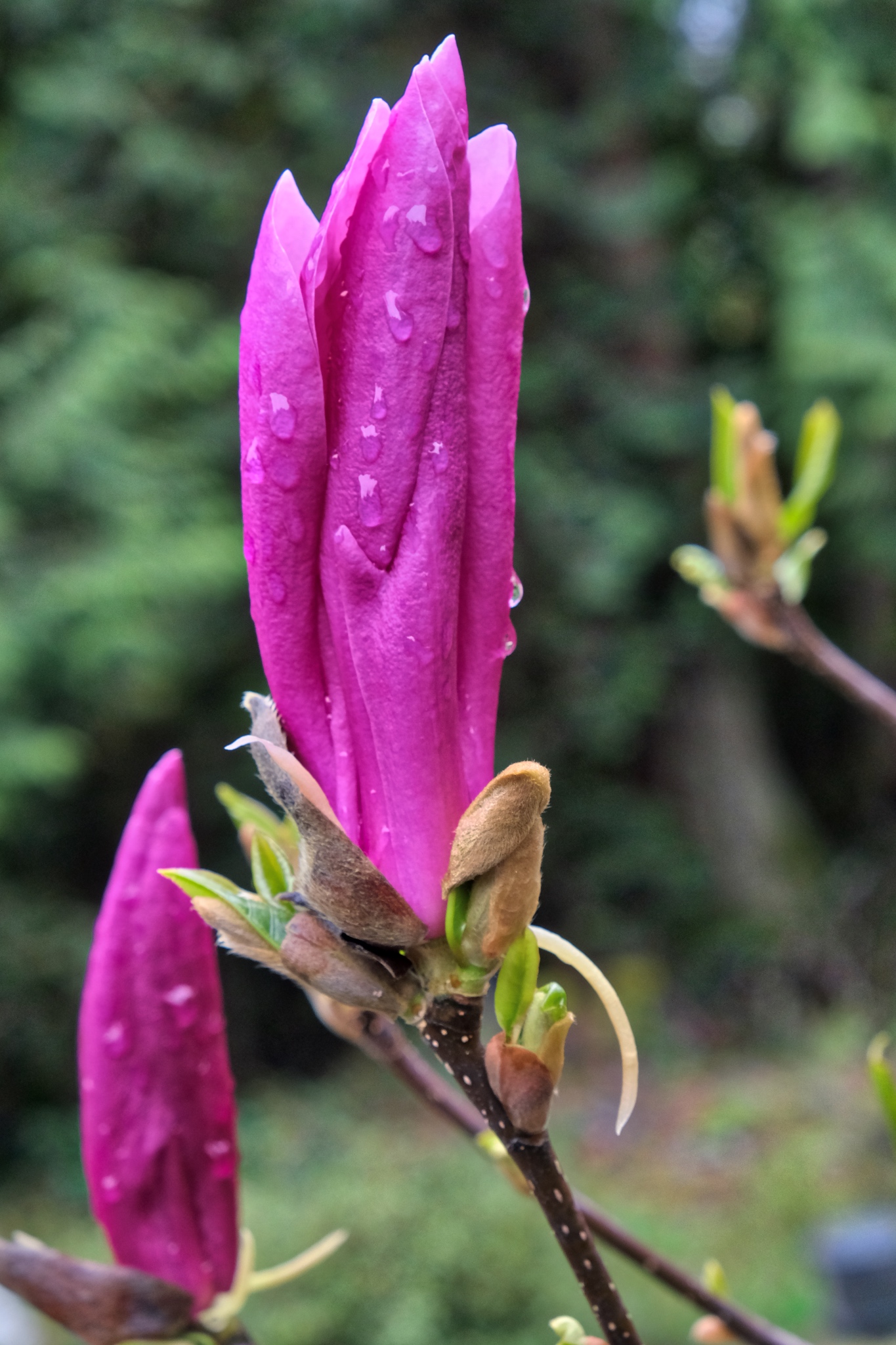 The purple Magnolia only budding, lagging behind their white neighbors.
The purple Magnolia only budding, lagging behind their white neighbors.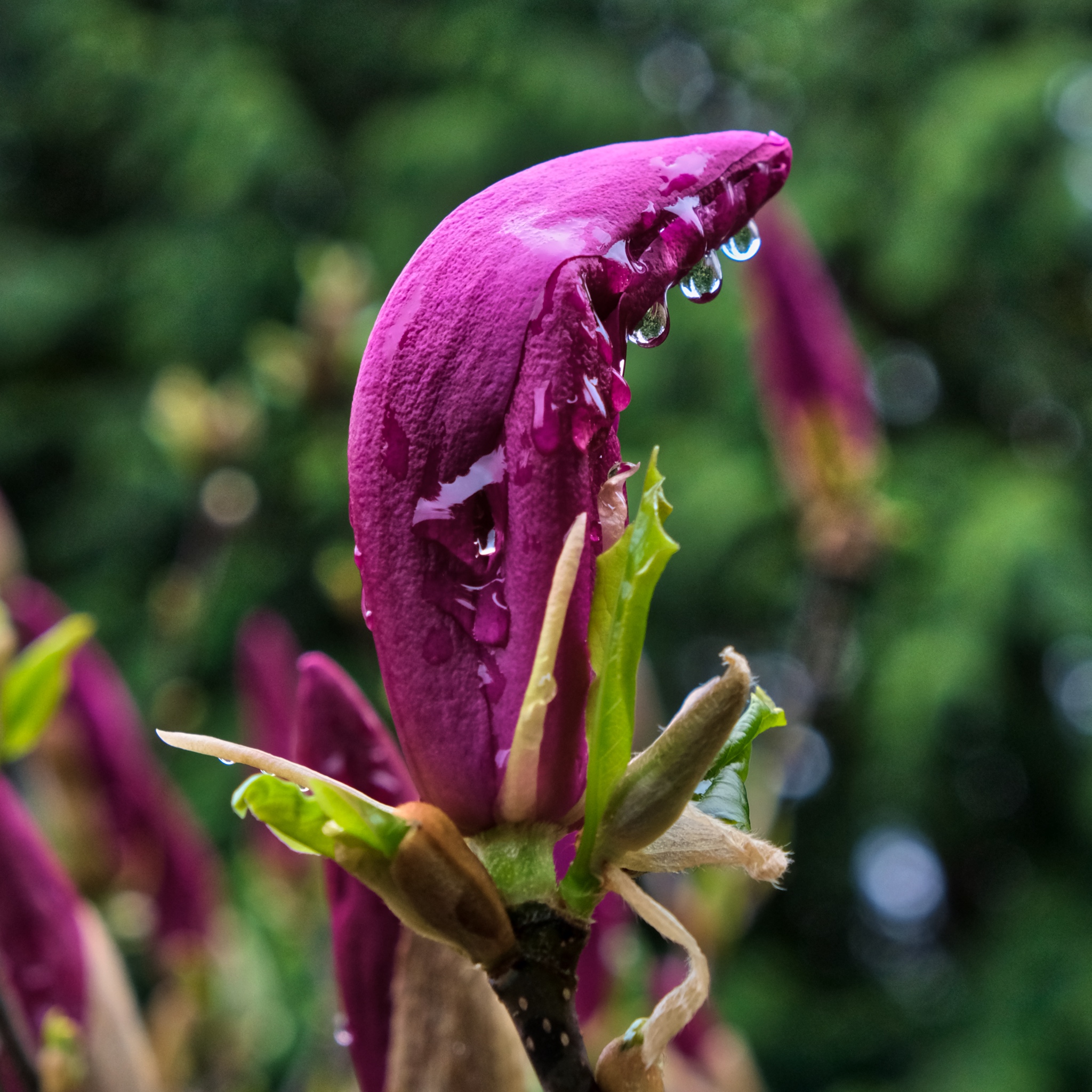
A wet afternoon in the garden.
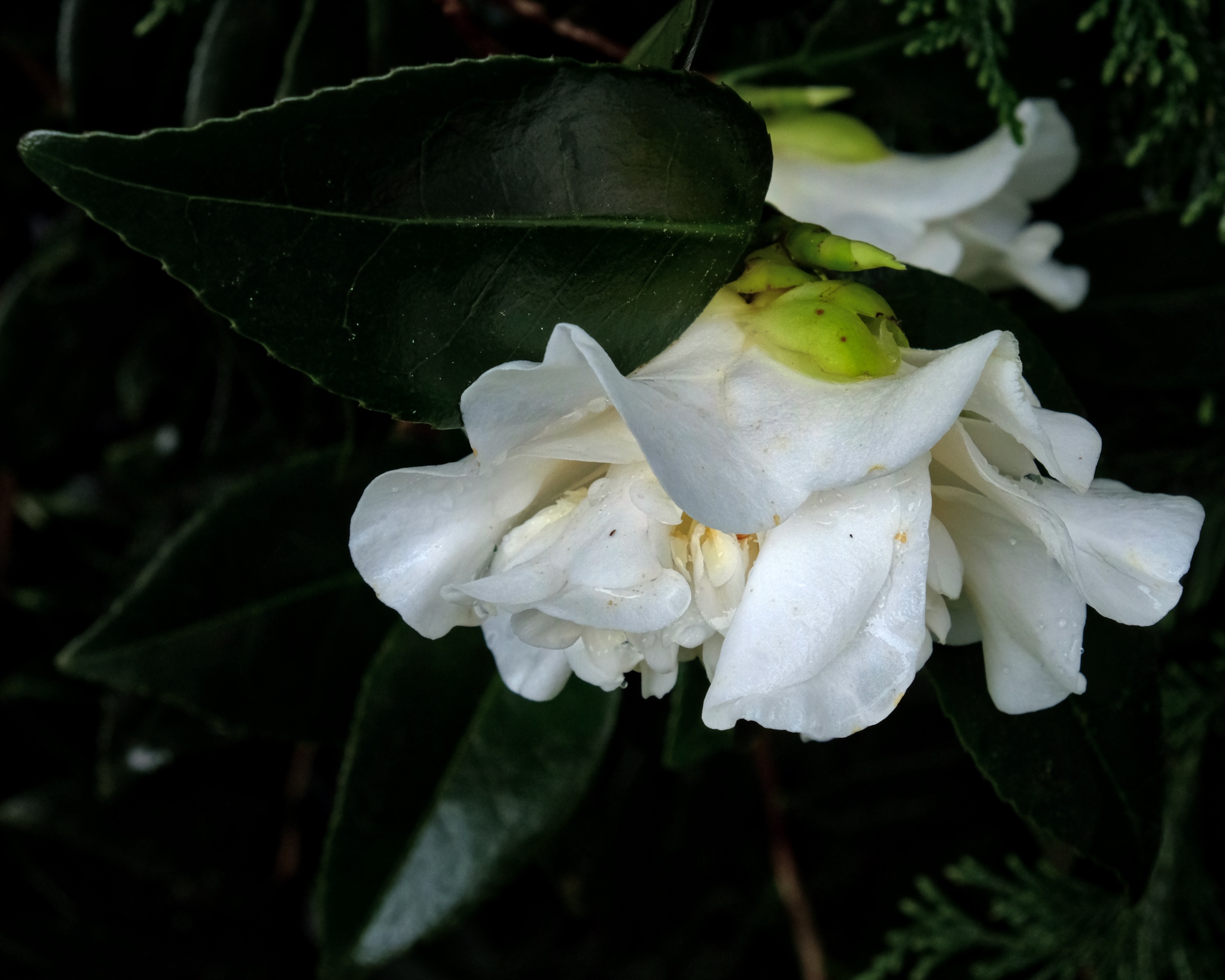 A white Magnolia in bloom deep in the dark bushes . . .
A white Magnolia in bloom deep in the dark bushes . . .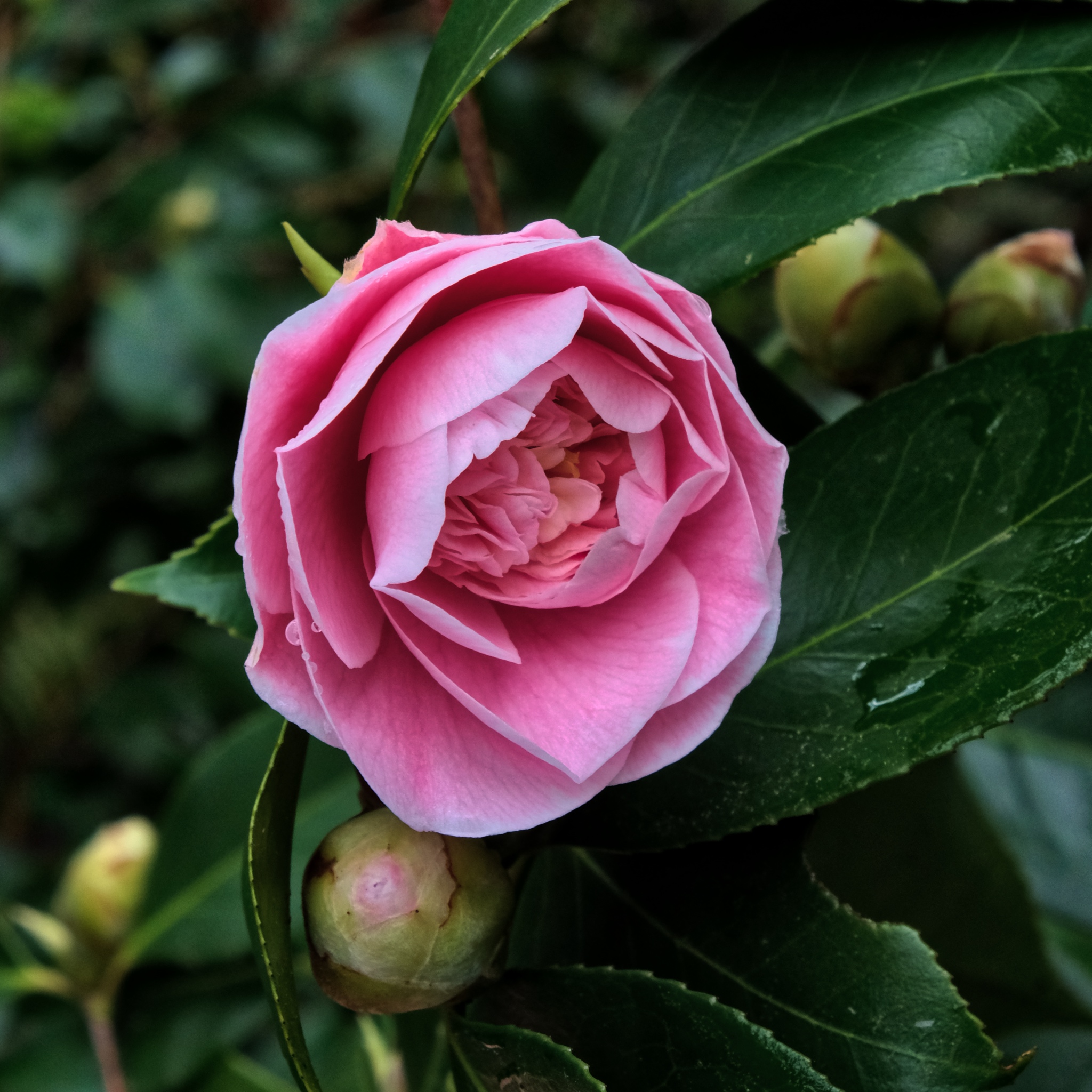 Buds and pink blooms . . . everywhere you look.
Buds and pink blooms . . . everywhere you look.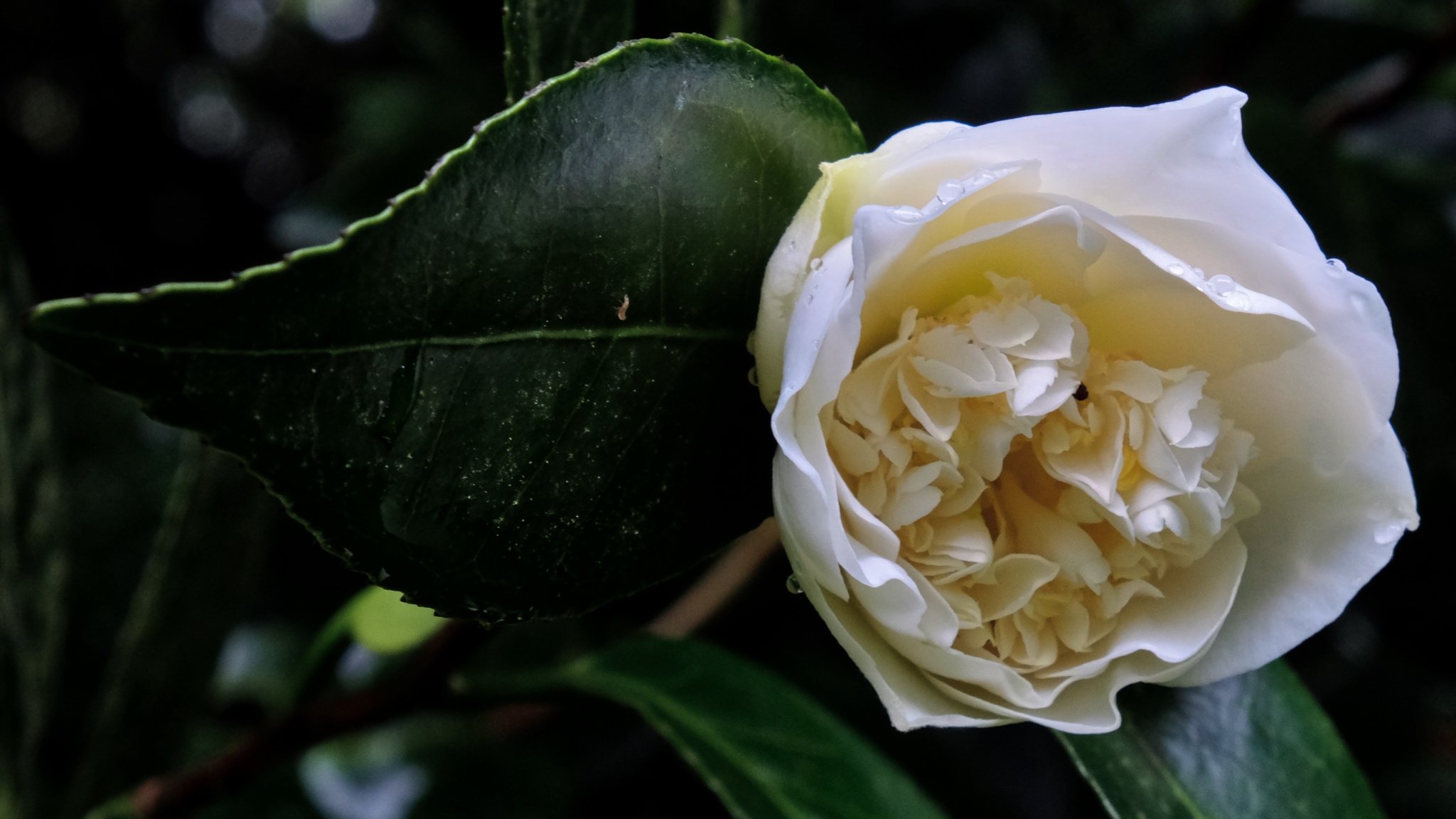 A new splash of beauty emerges.
A new splash of beauty emerges.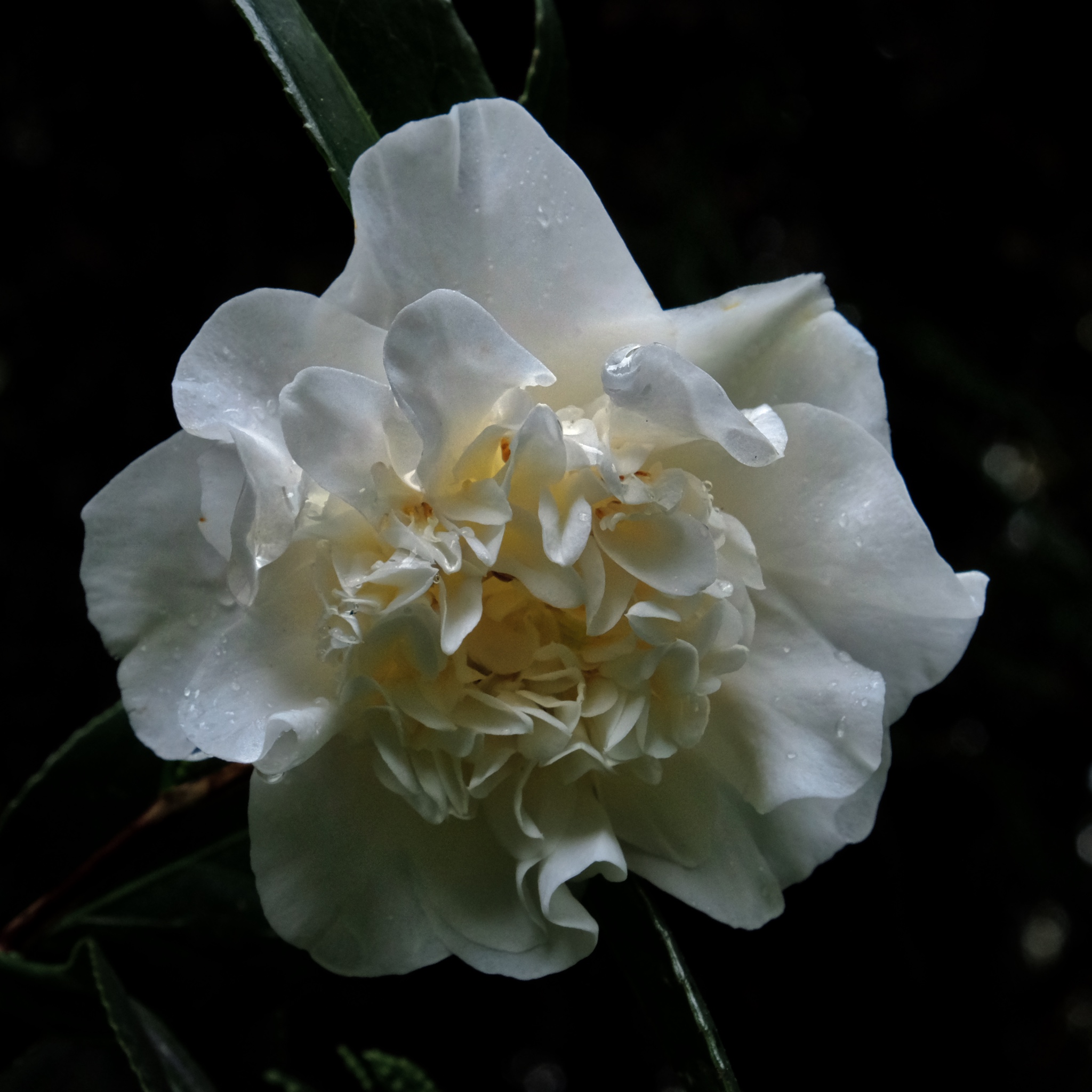 Perfect.
Perfect.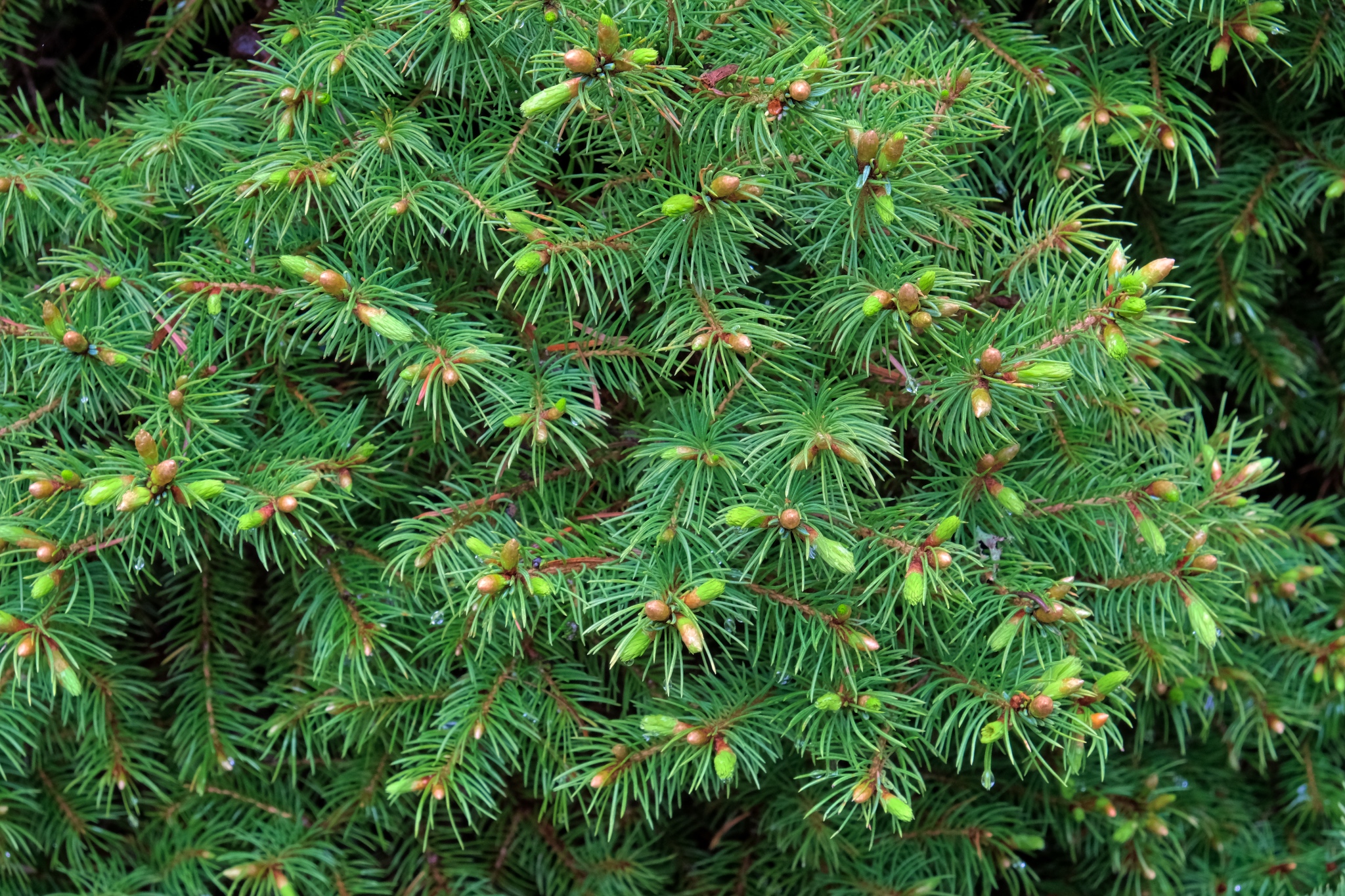 Everything is showing new growth . . . Winter is at last receding.
Everything is showing new growth . . . Winter is at last receding.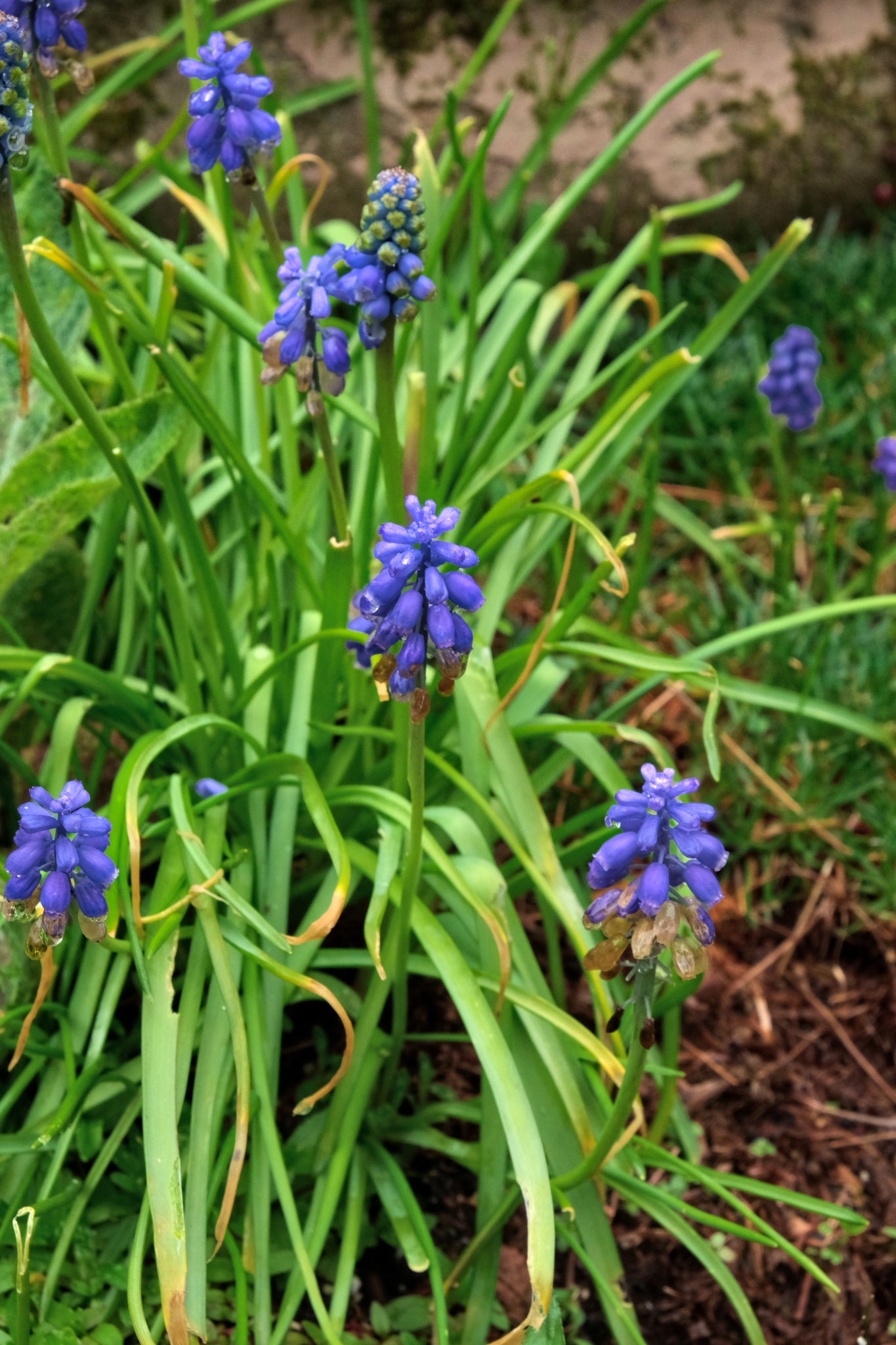 Every day sees a new kind of flower appearing.
Every day sees a new kind of flower appearing.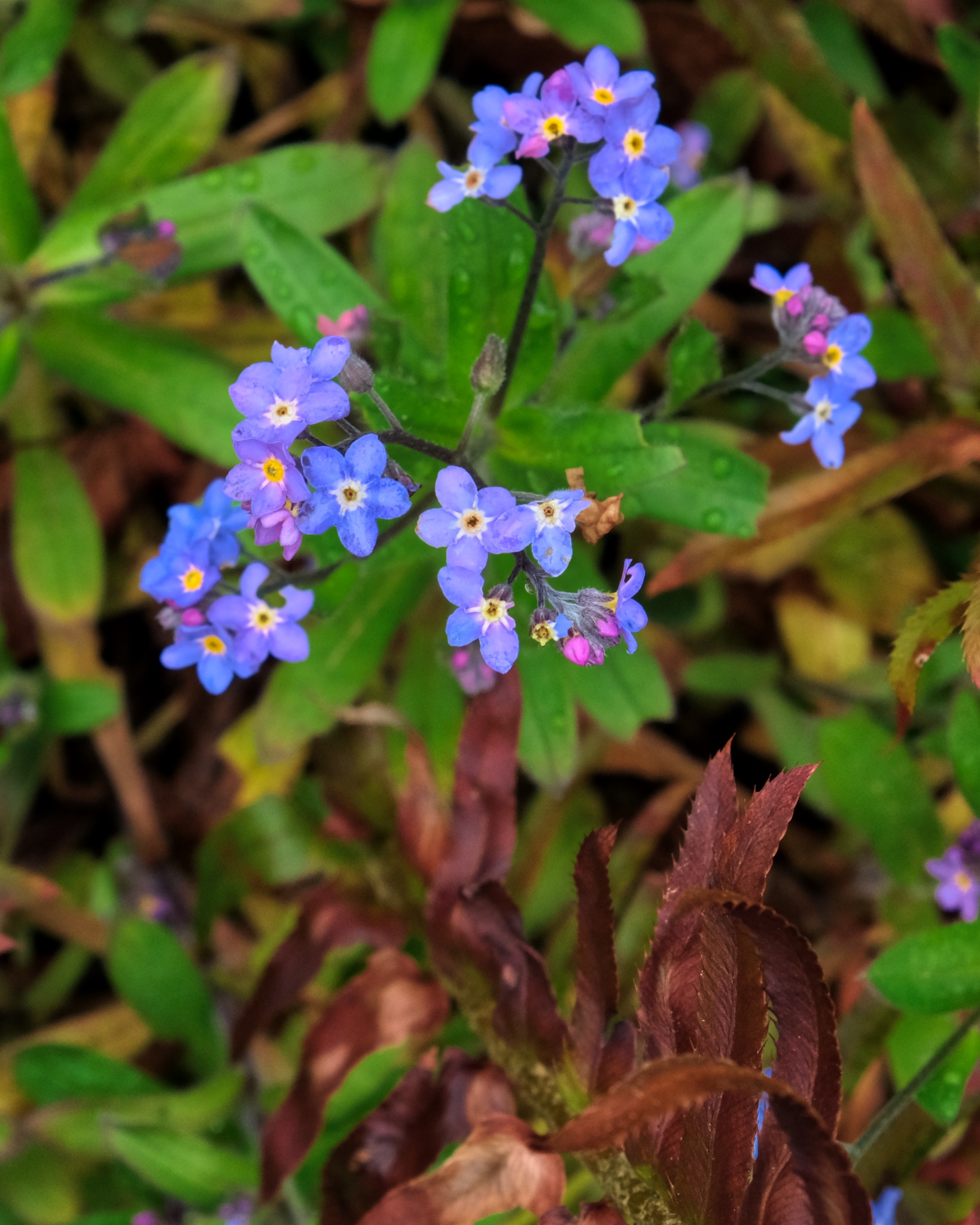 Tiny flowers hidden deep within the foliage.
Tiny flowers hidden deep within the foliage.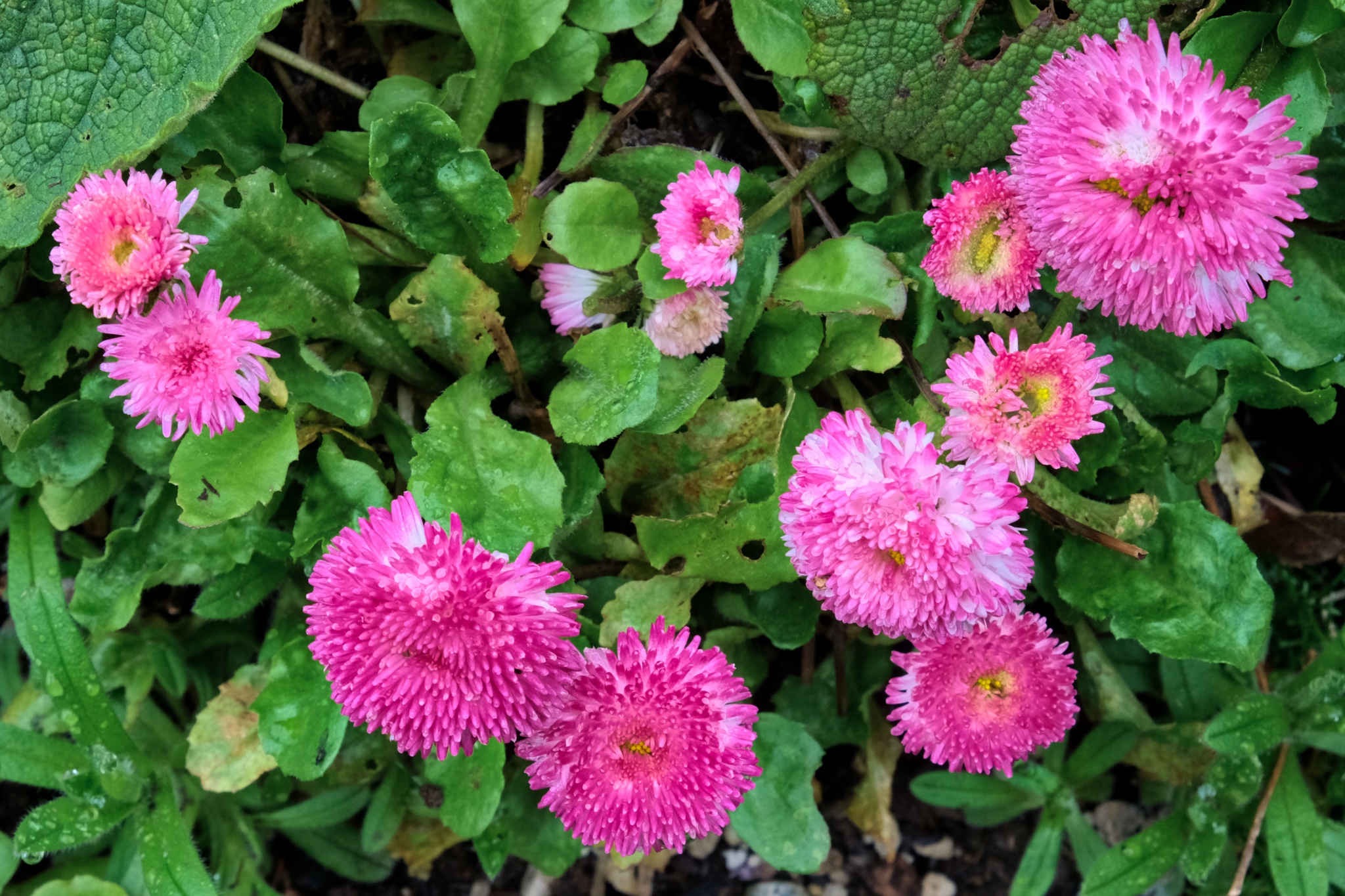
Flowers everywhere . . . these volunteer perennial were beautiful.
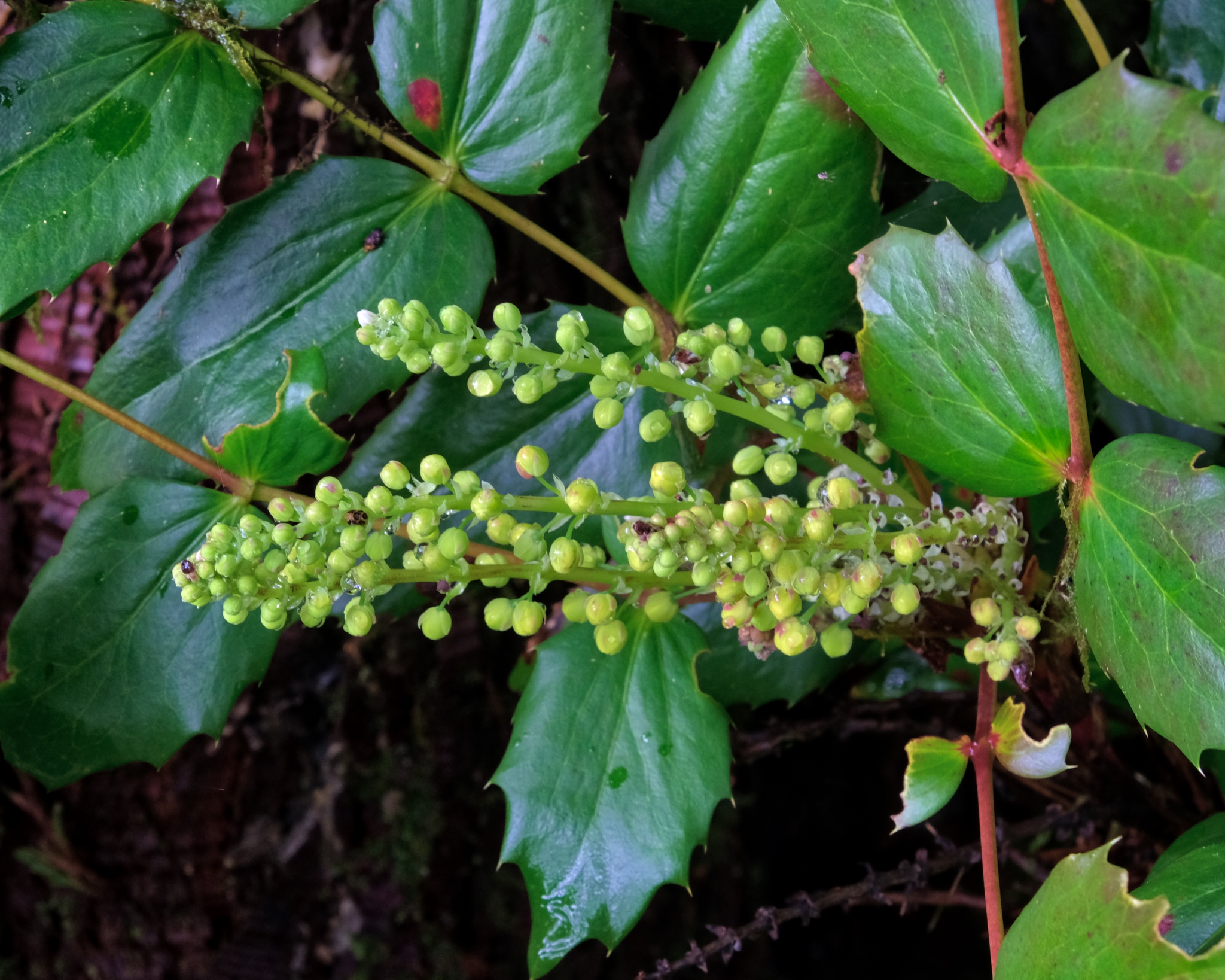
Native species also appear here and there in and a round the garden.
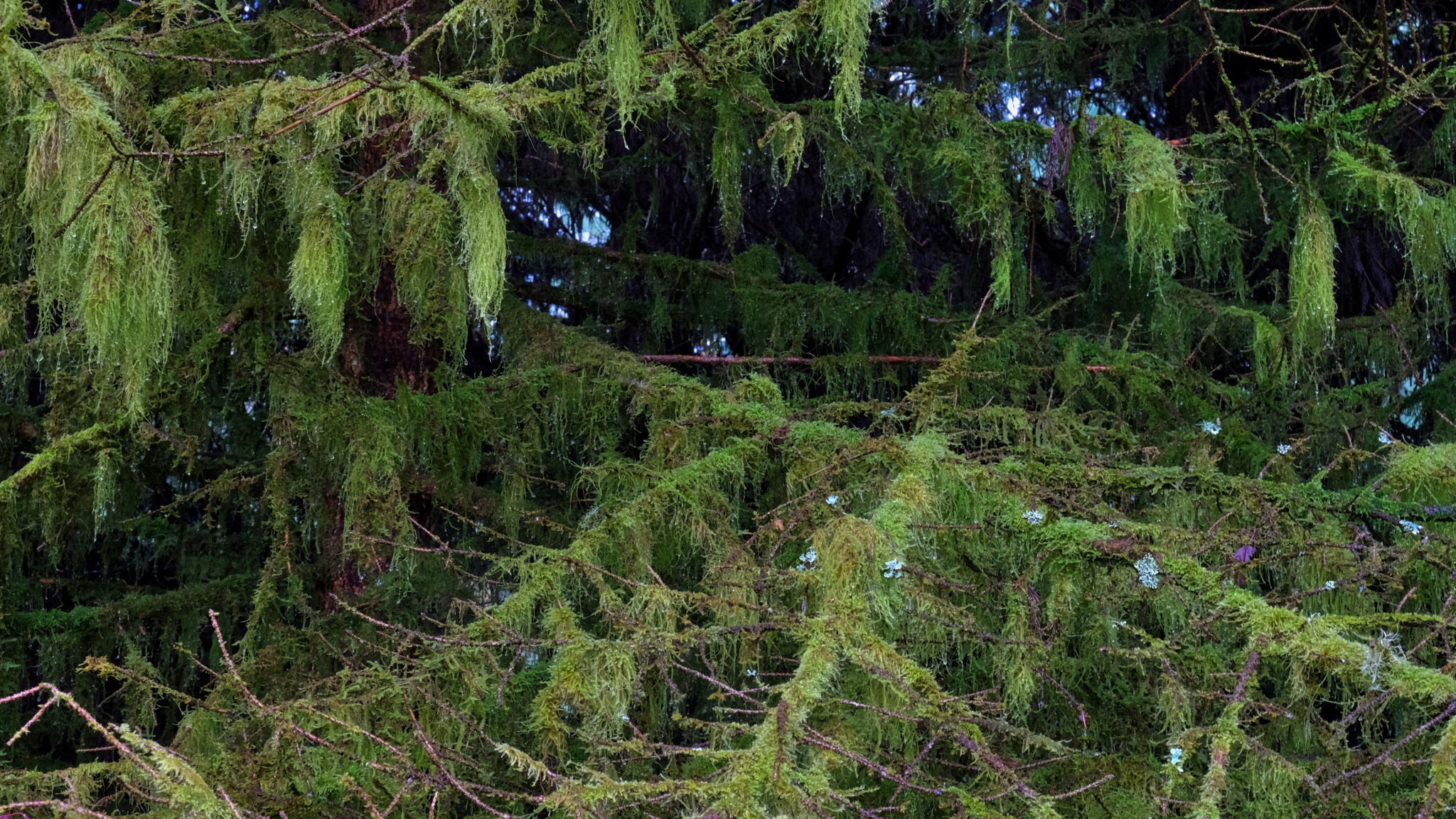 This part of Washington State sees extreme amounts of rainfall. The trees are covered in moss.
This part of Washington State sees extreme amounts of rainfall. The trees are covered in moss.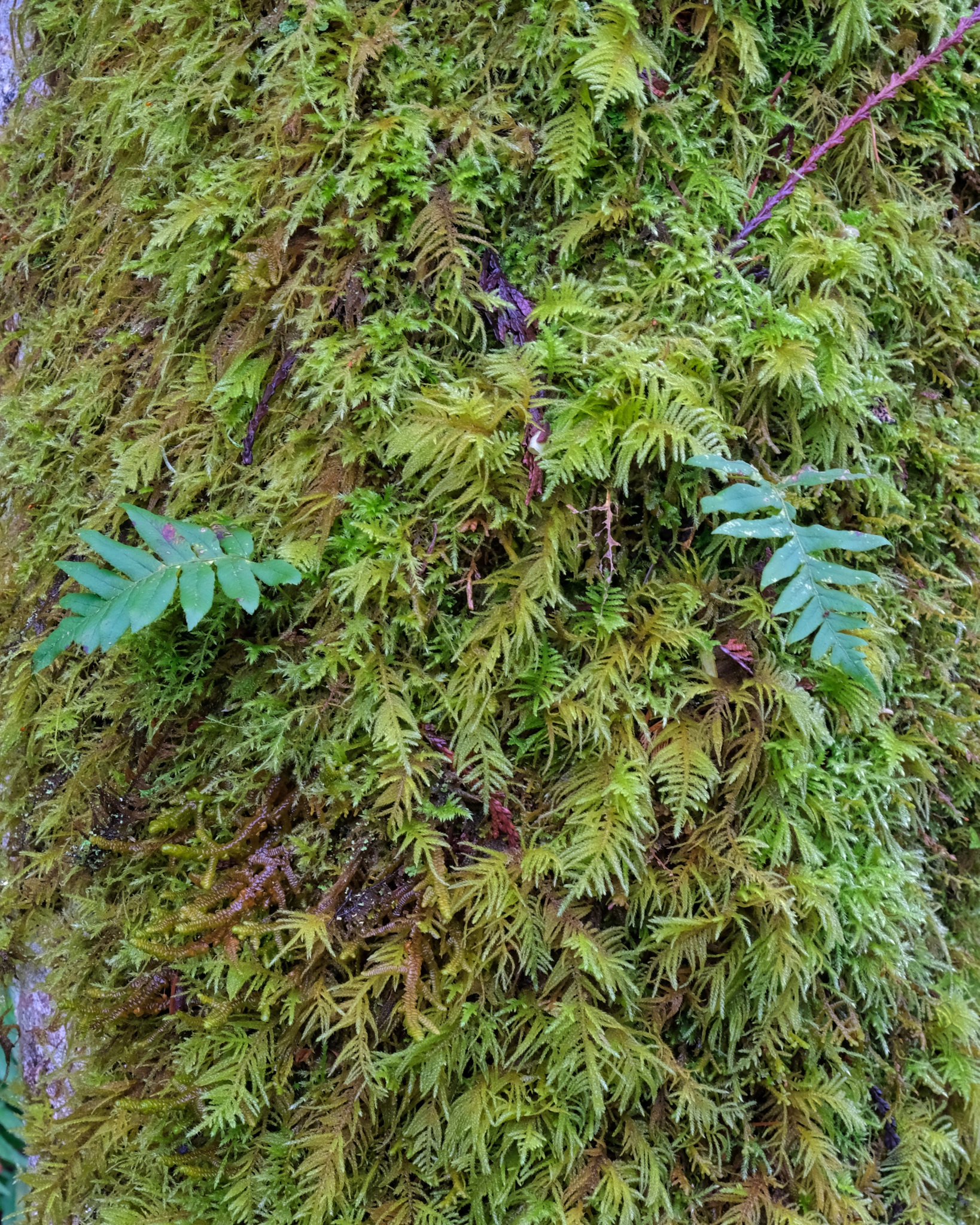 Fresh, wet moss everywhere.
Fresh, wet moss everywhere.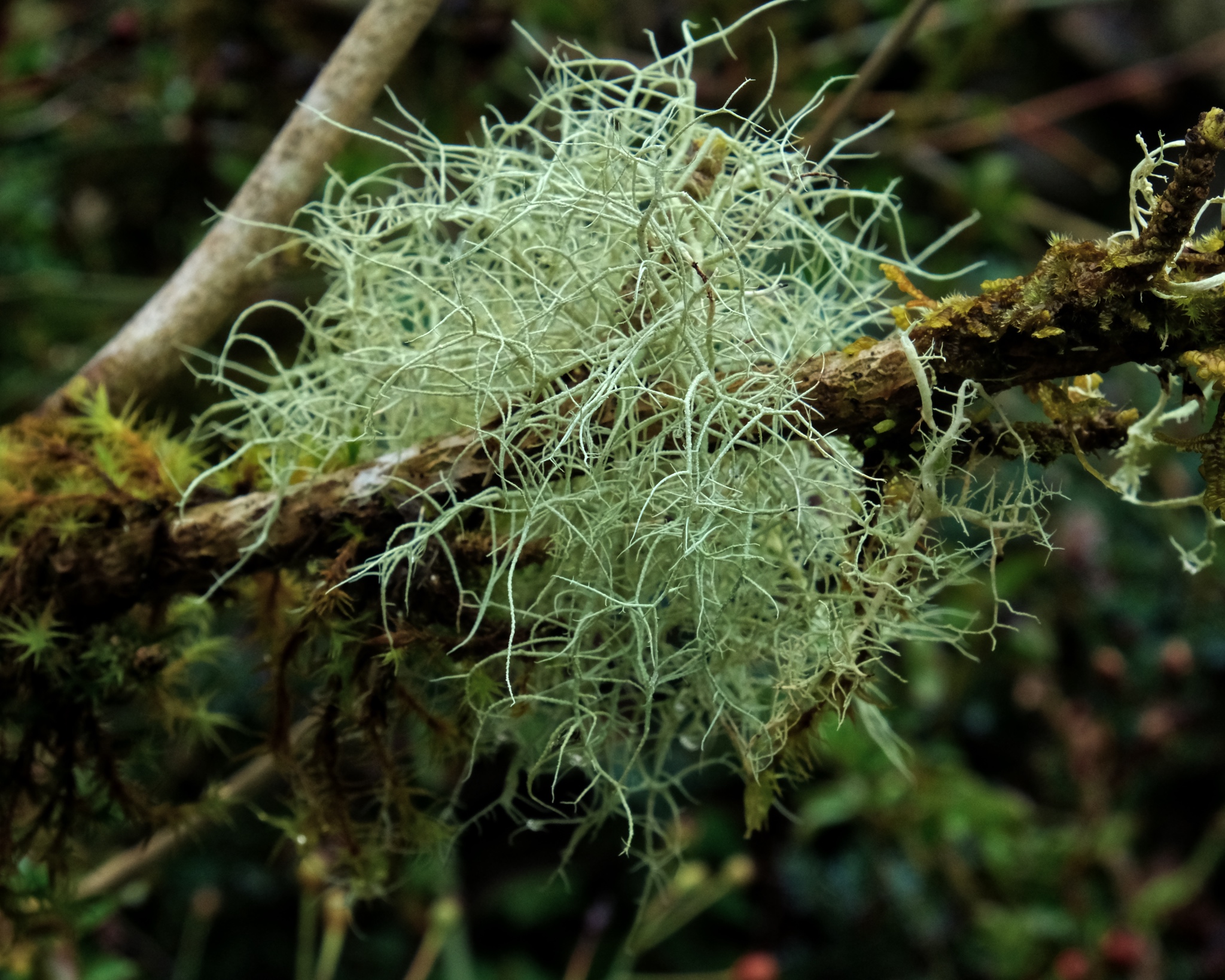
In addition to the moss, tufts of lichen adhere to almost every branch.
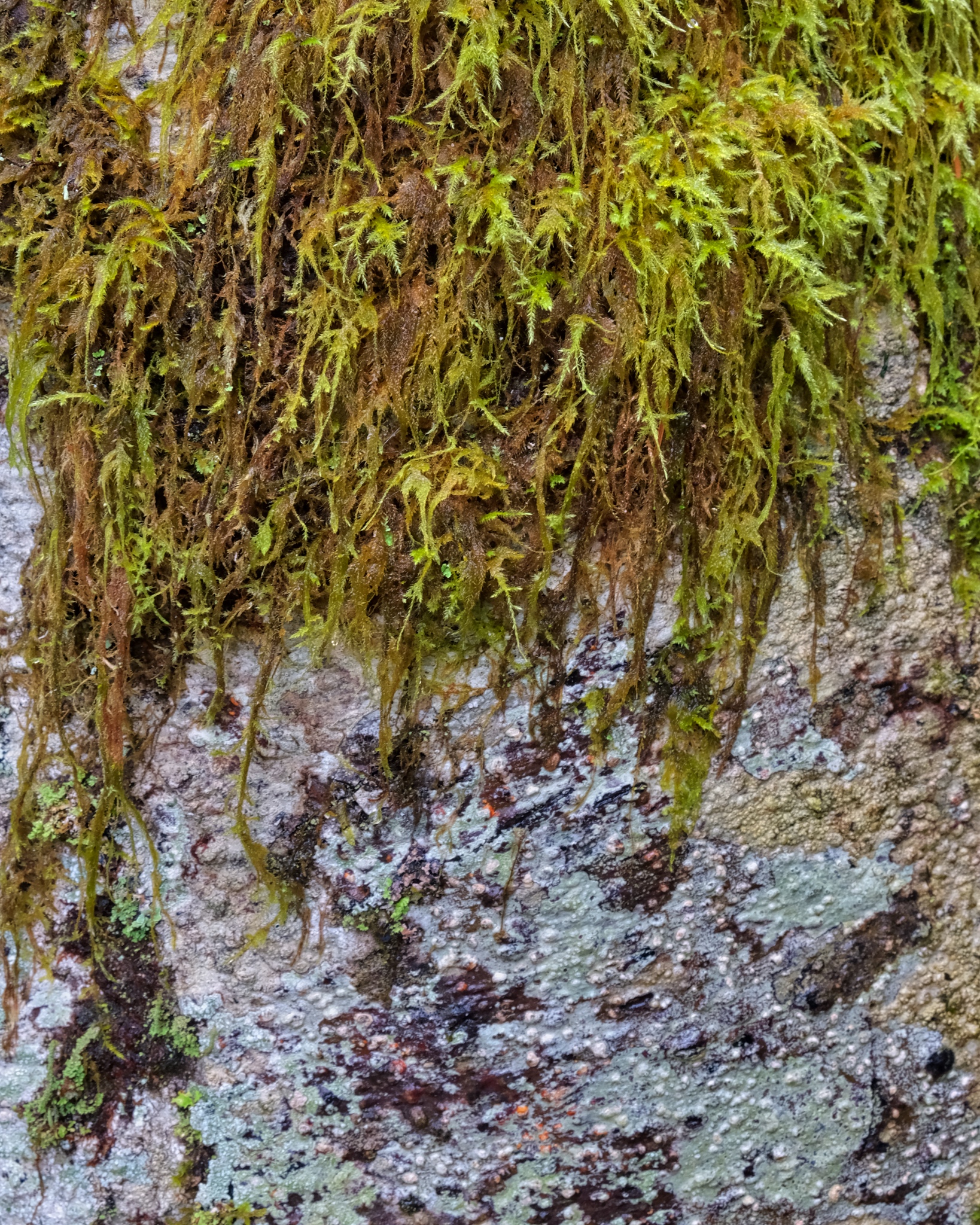
Bark and moss.
